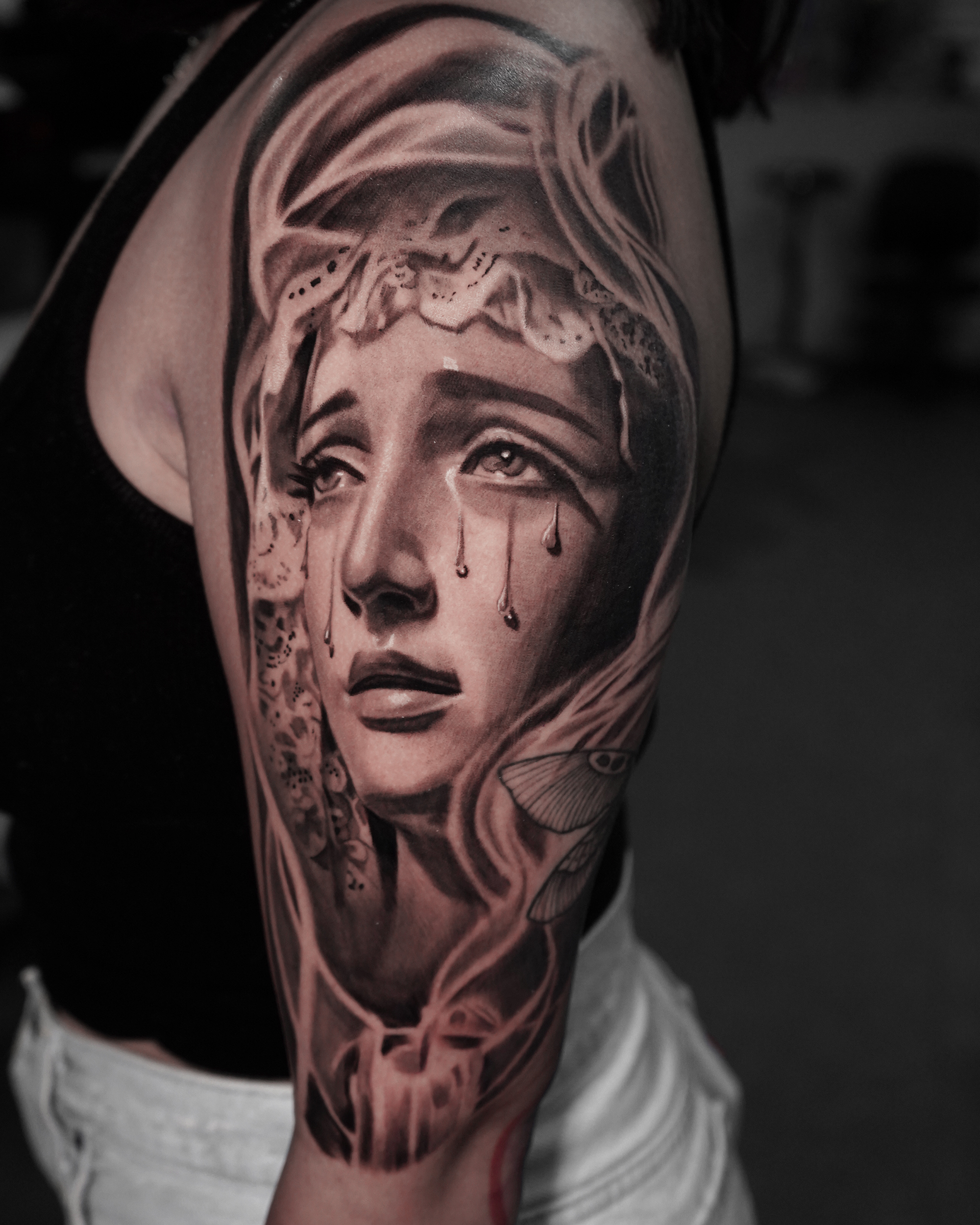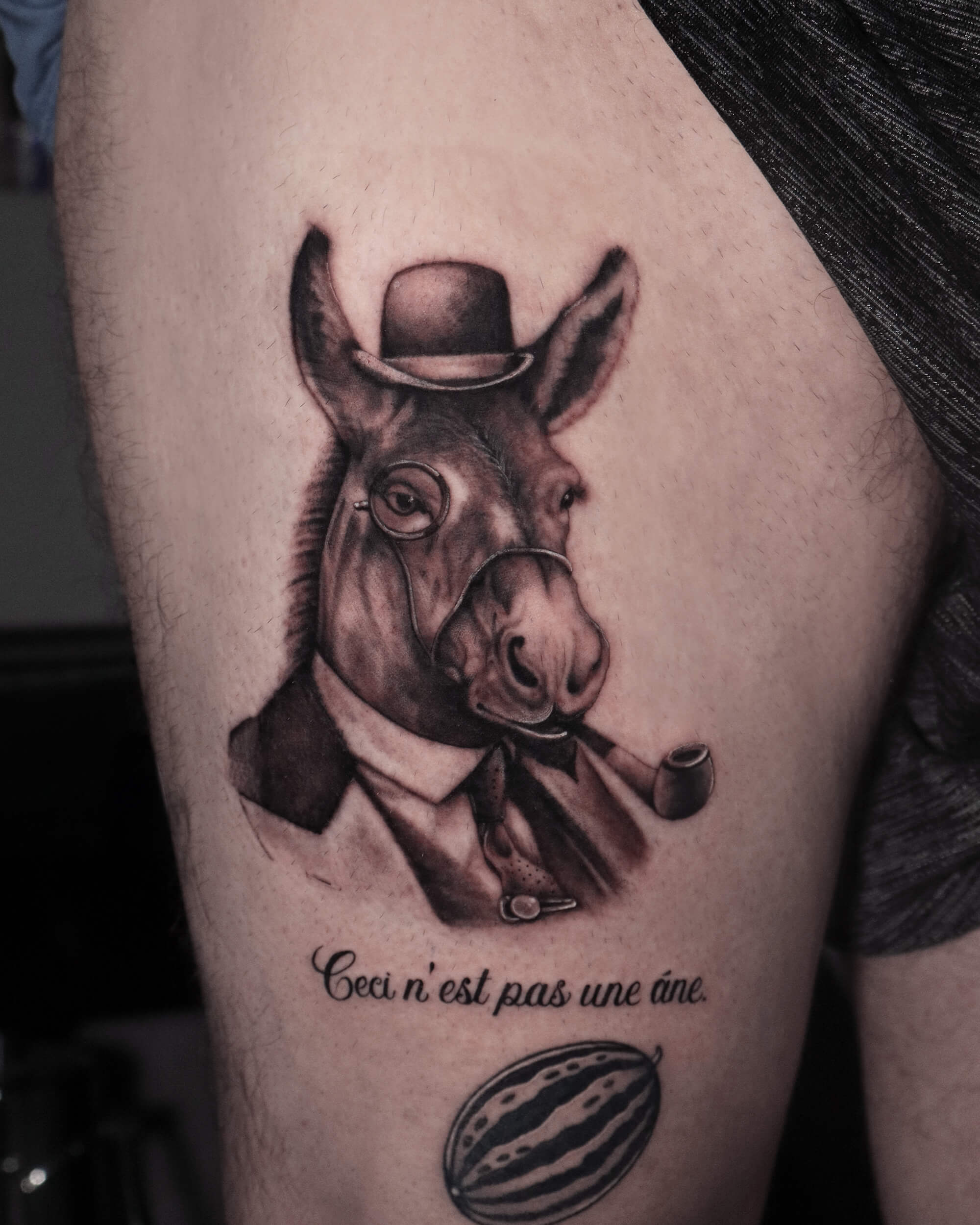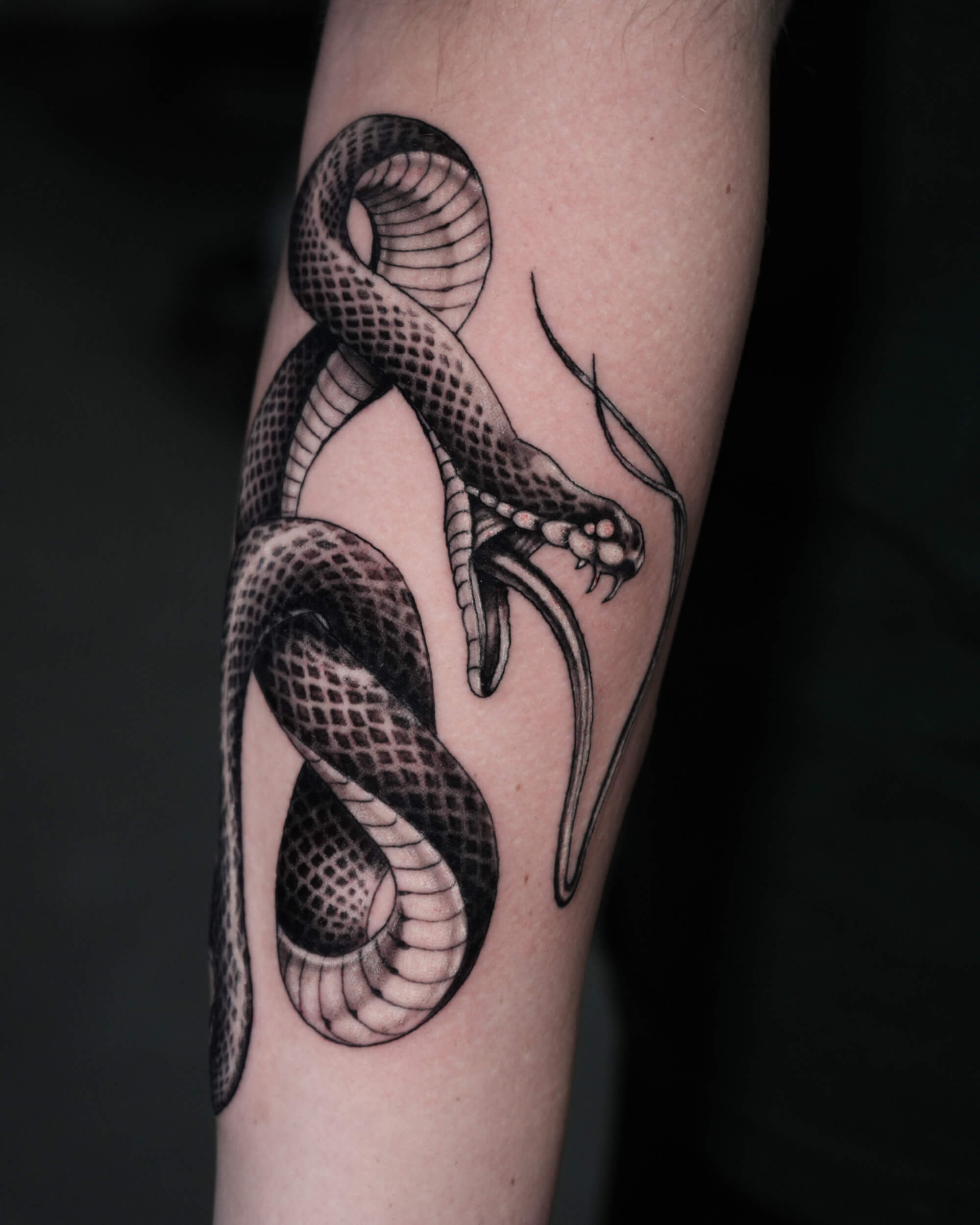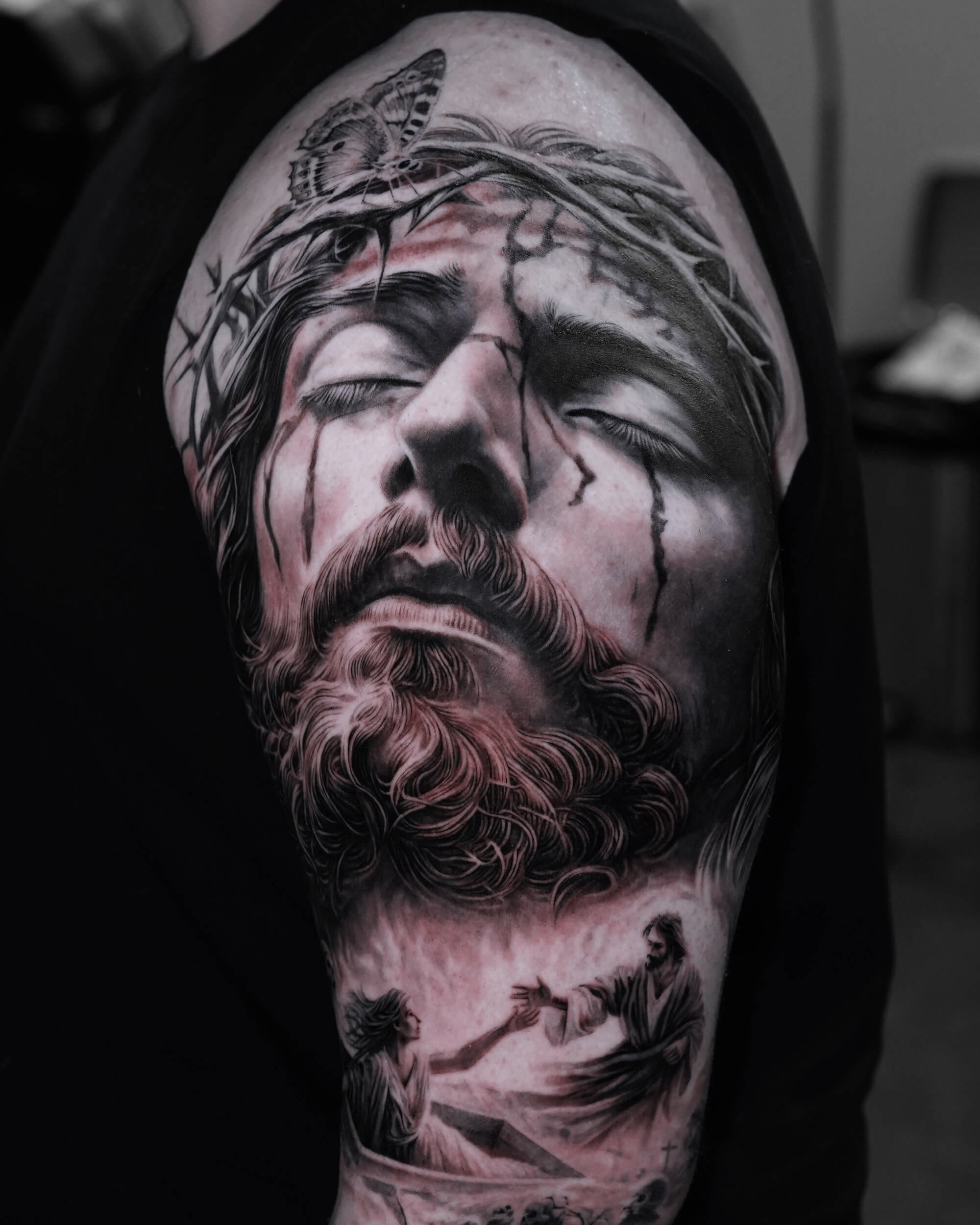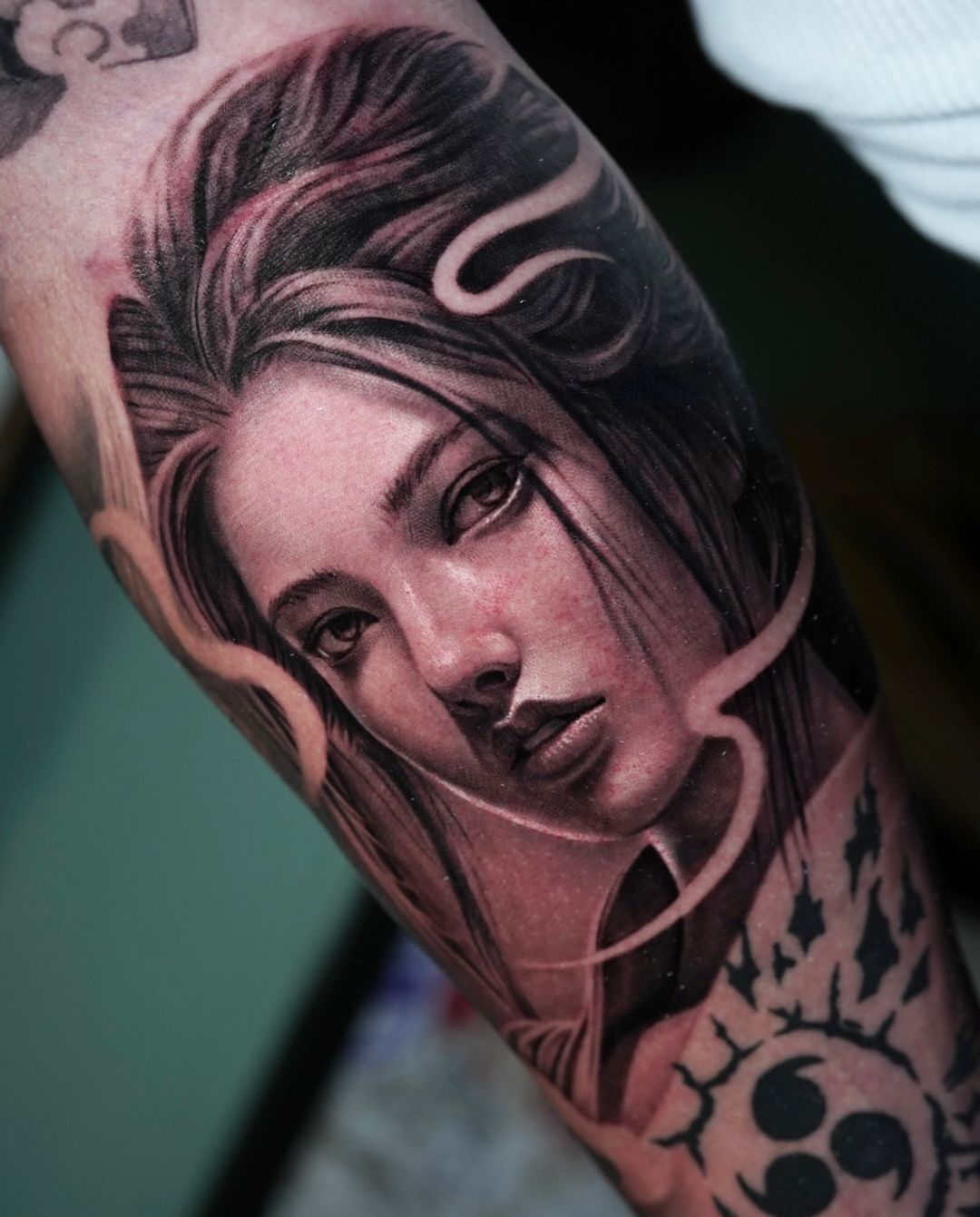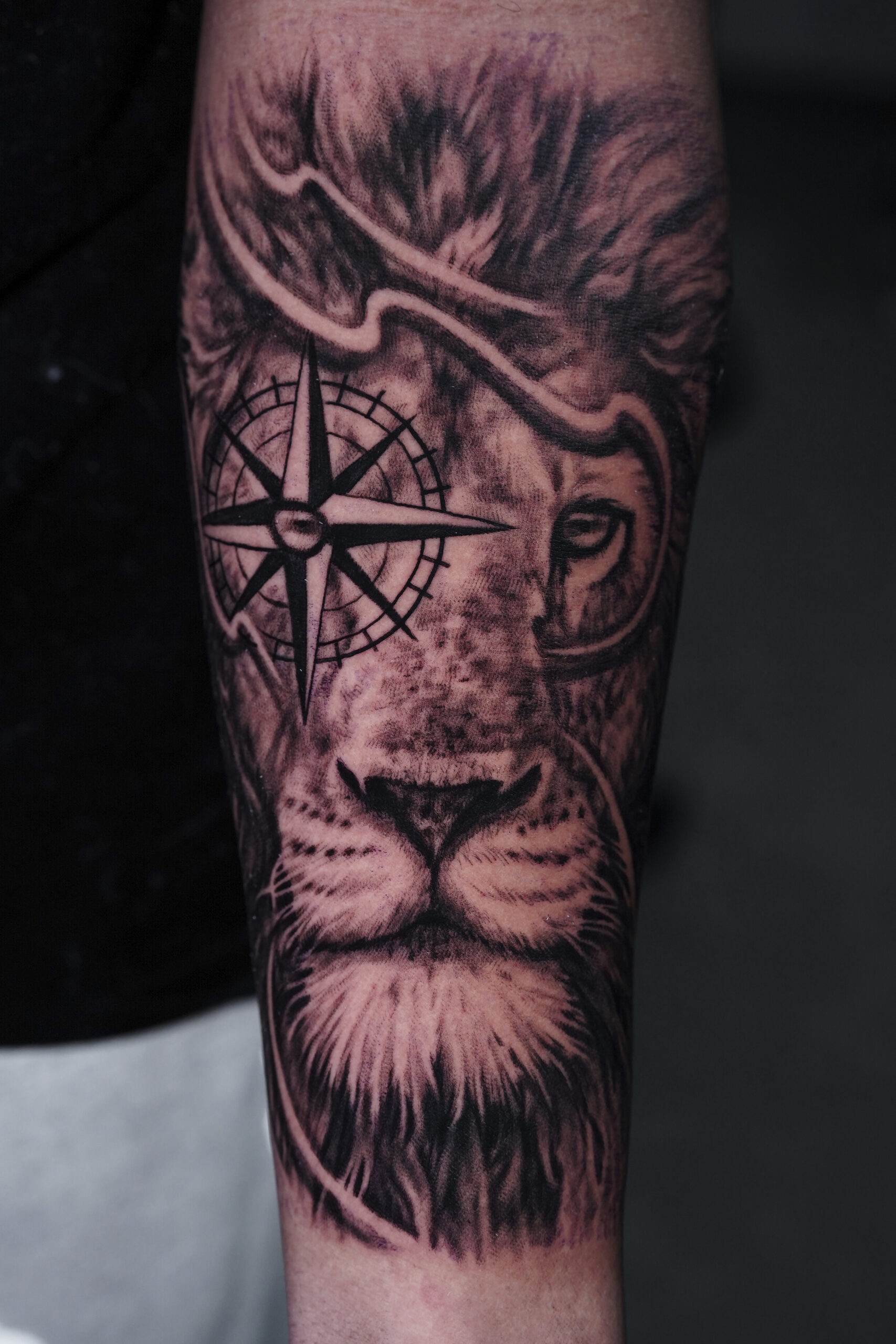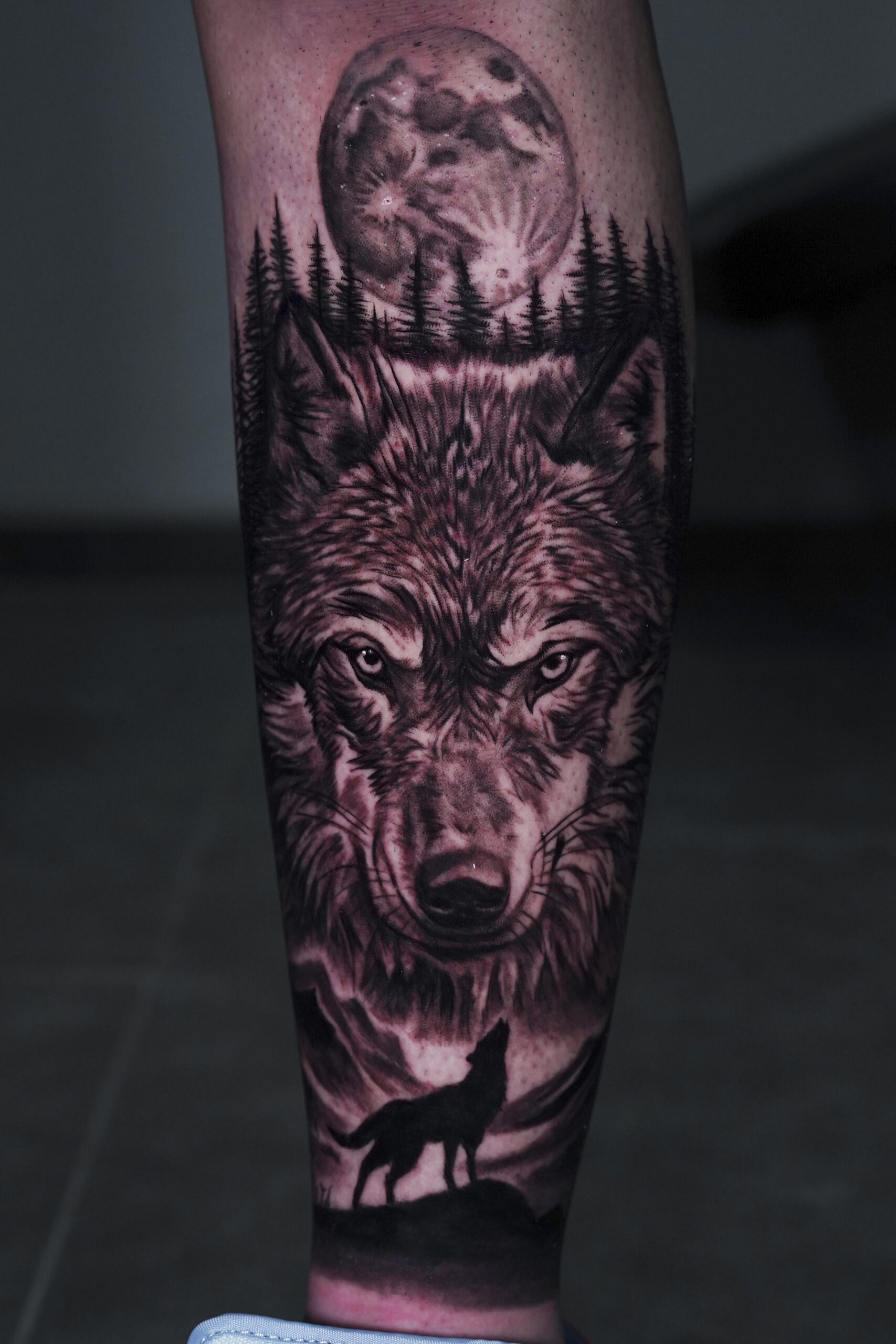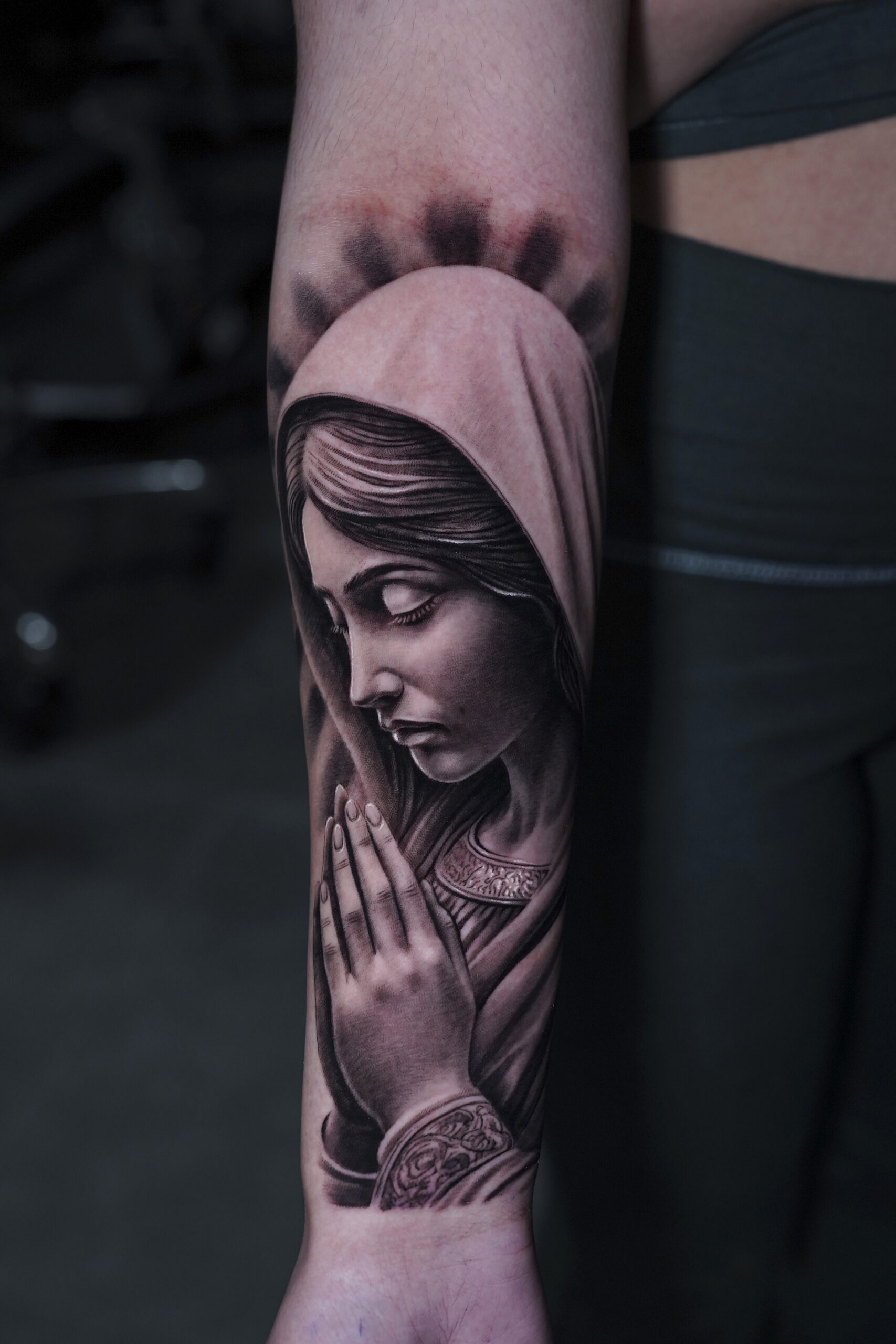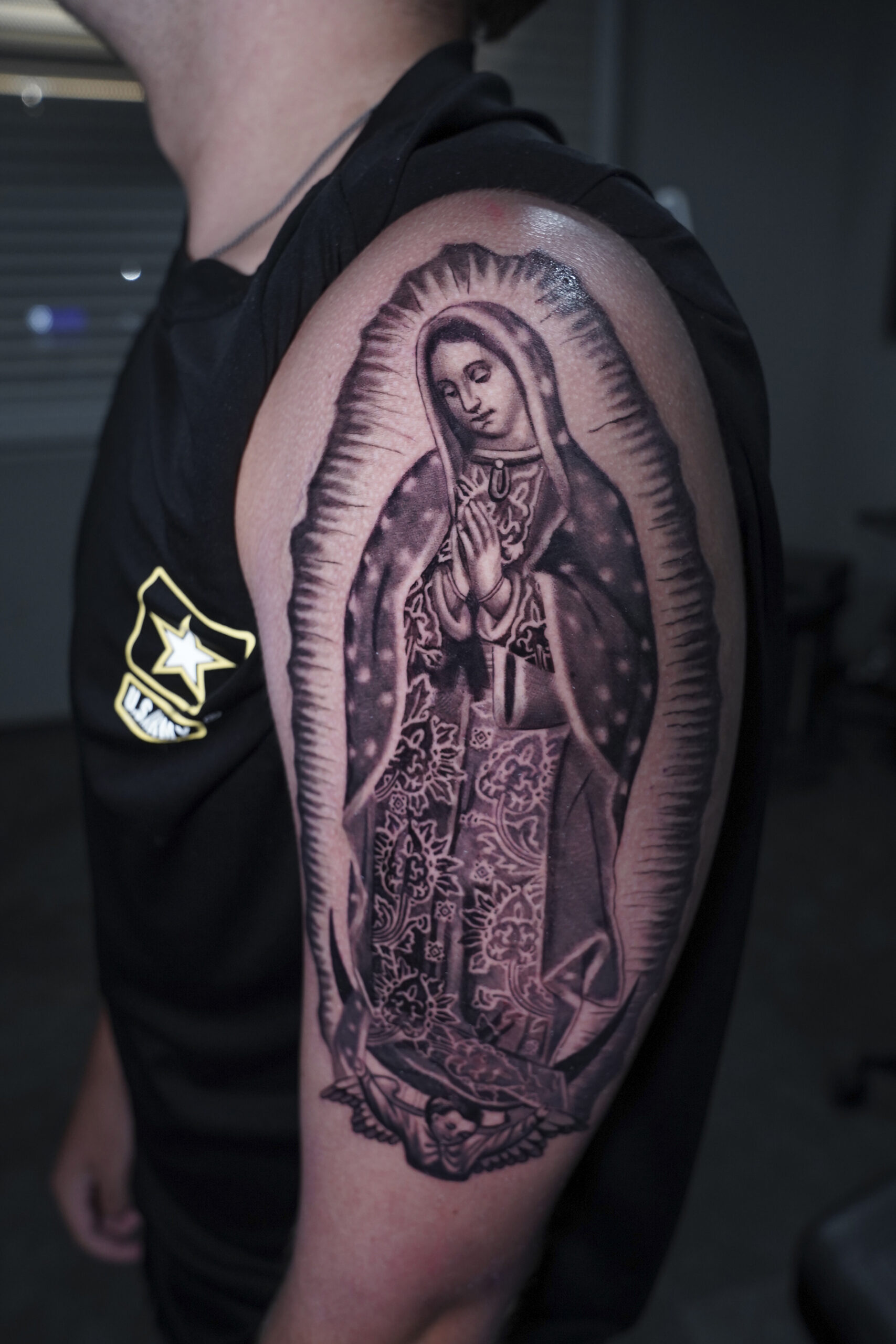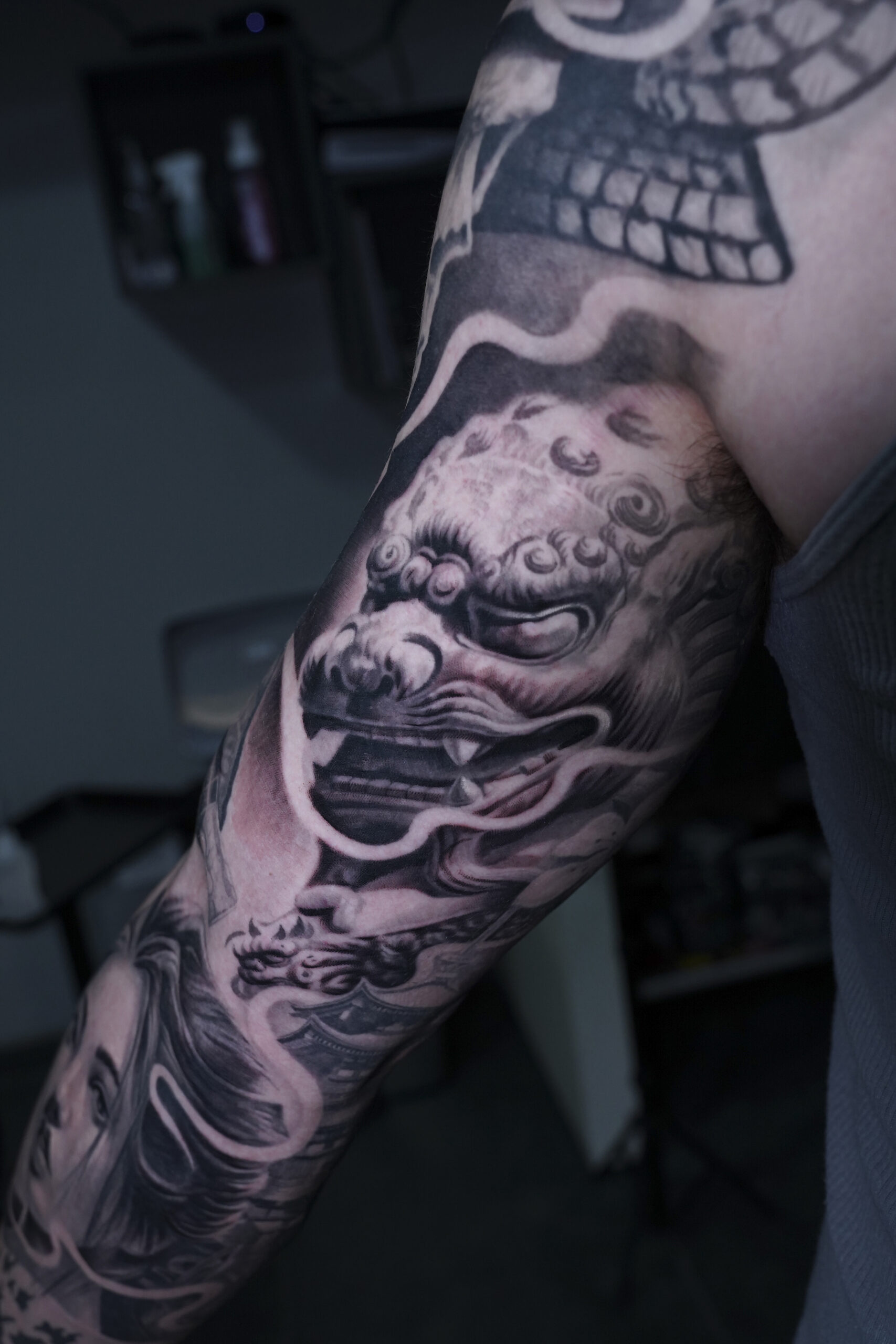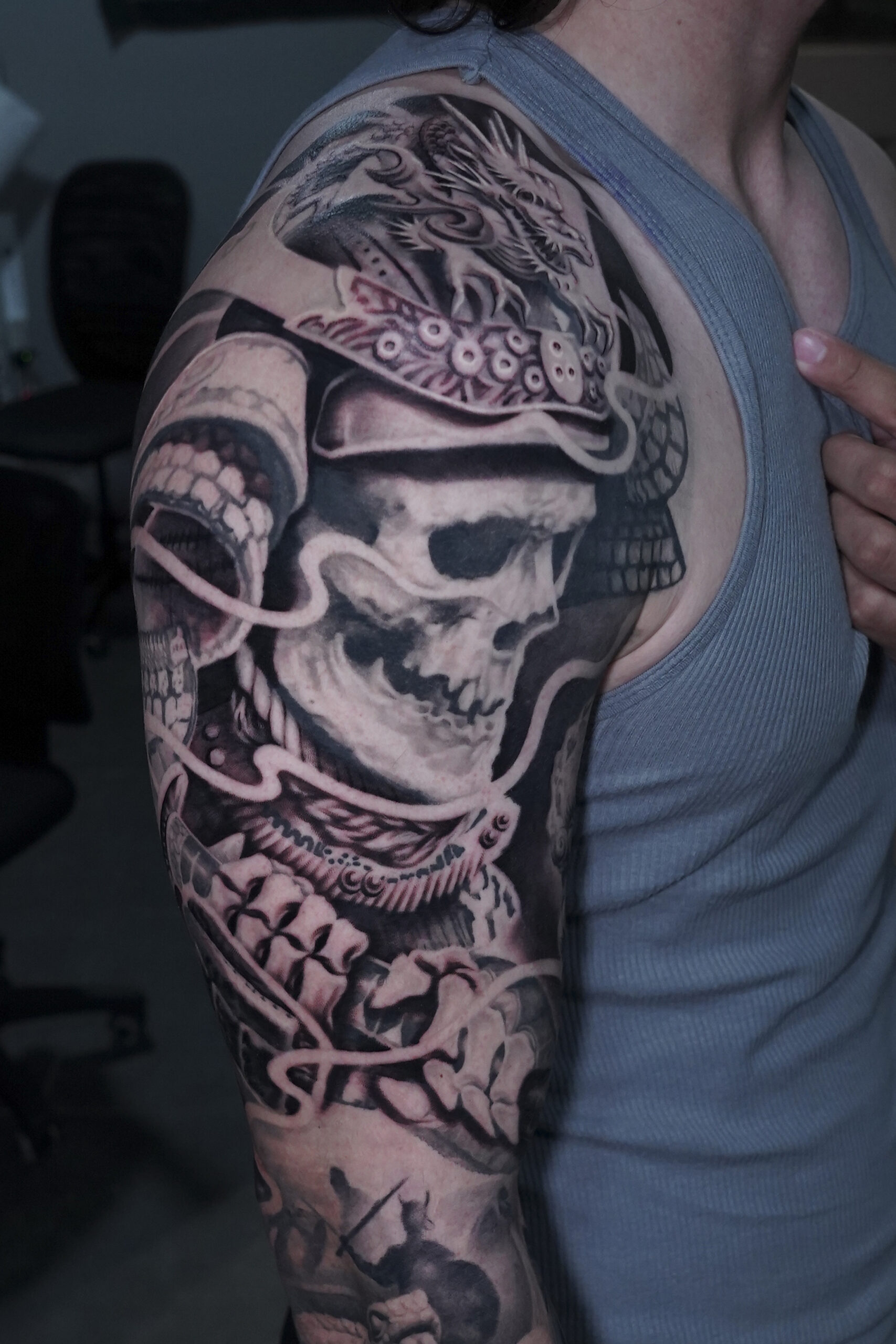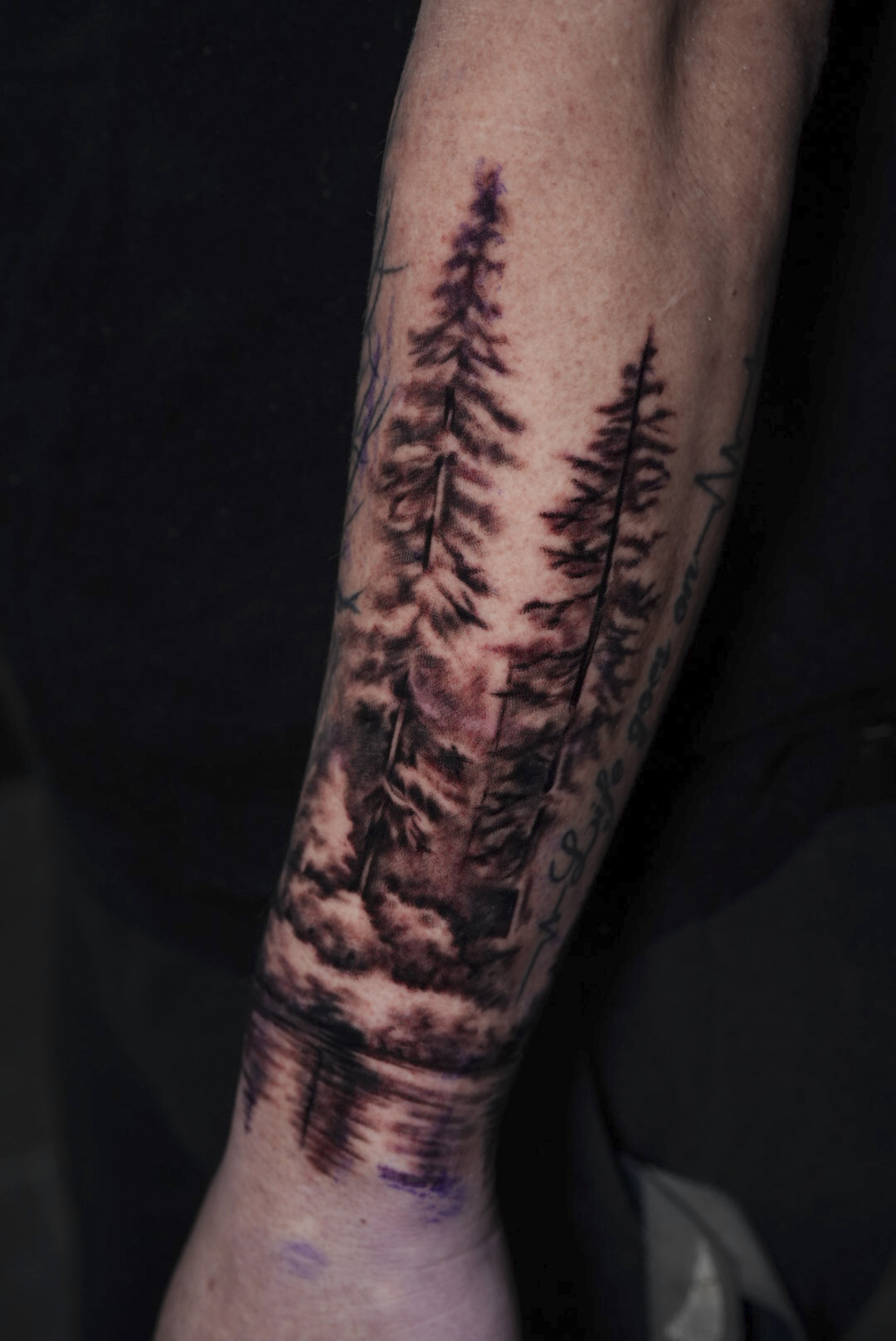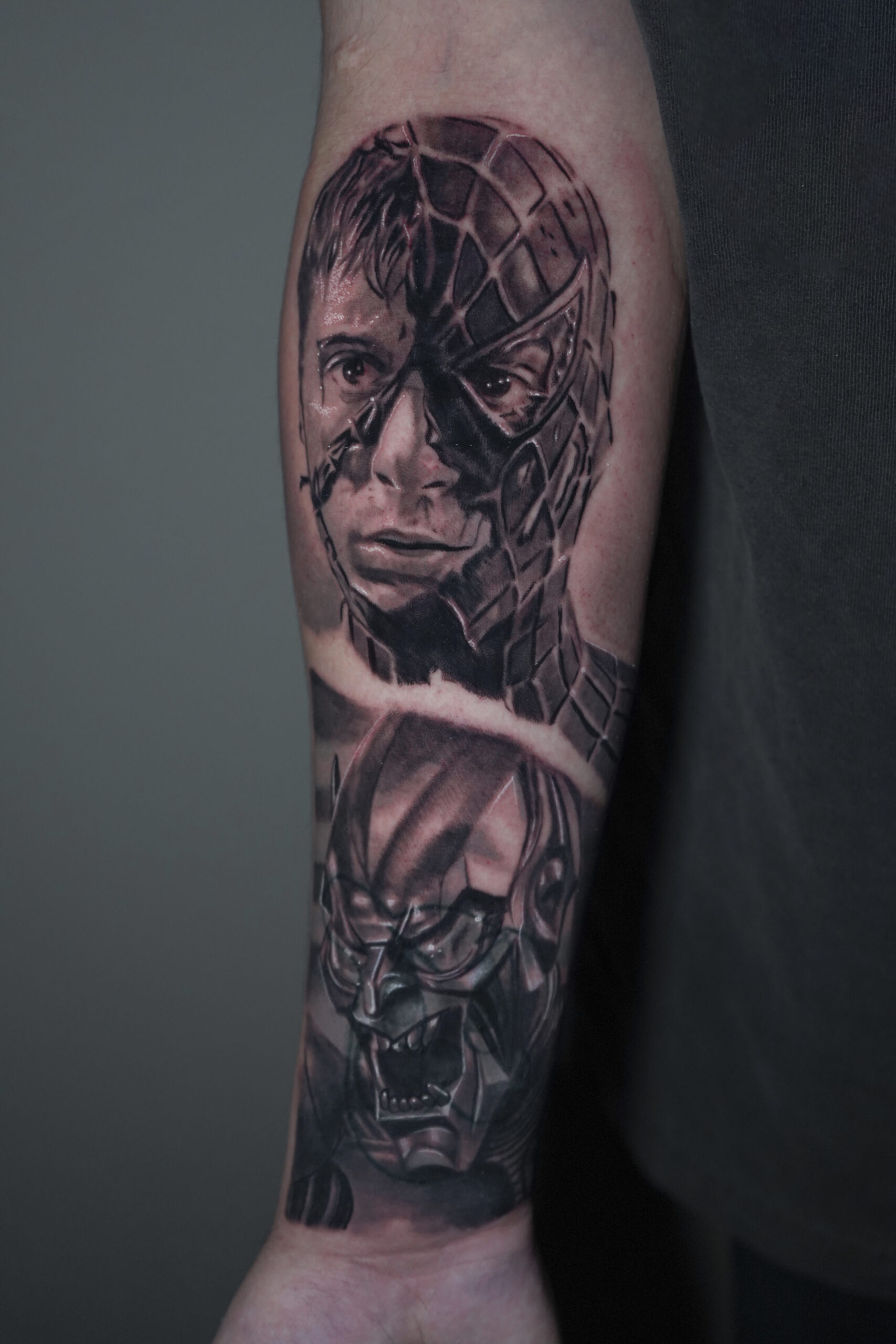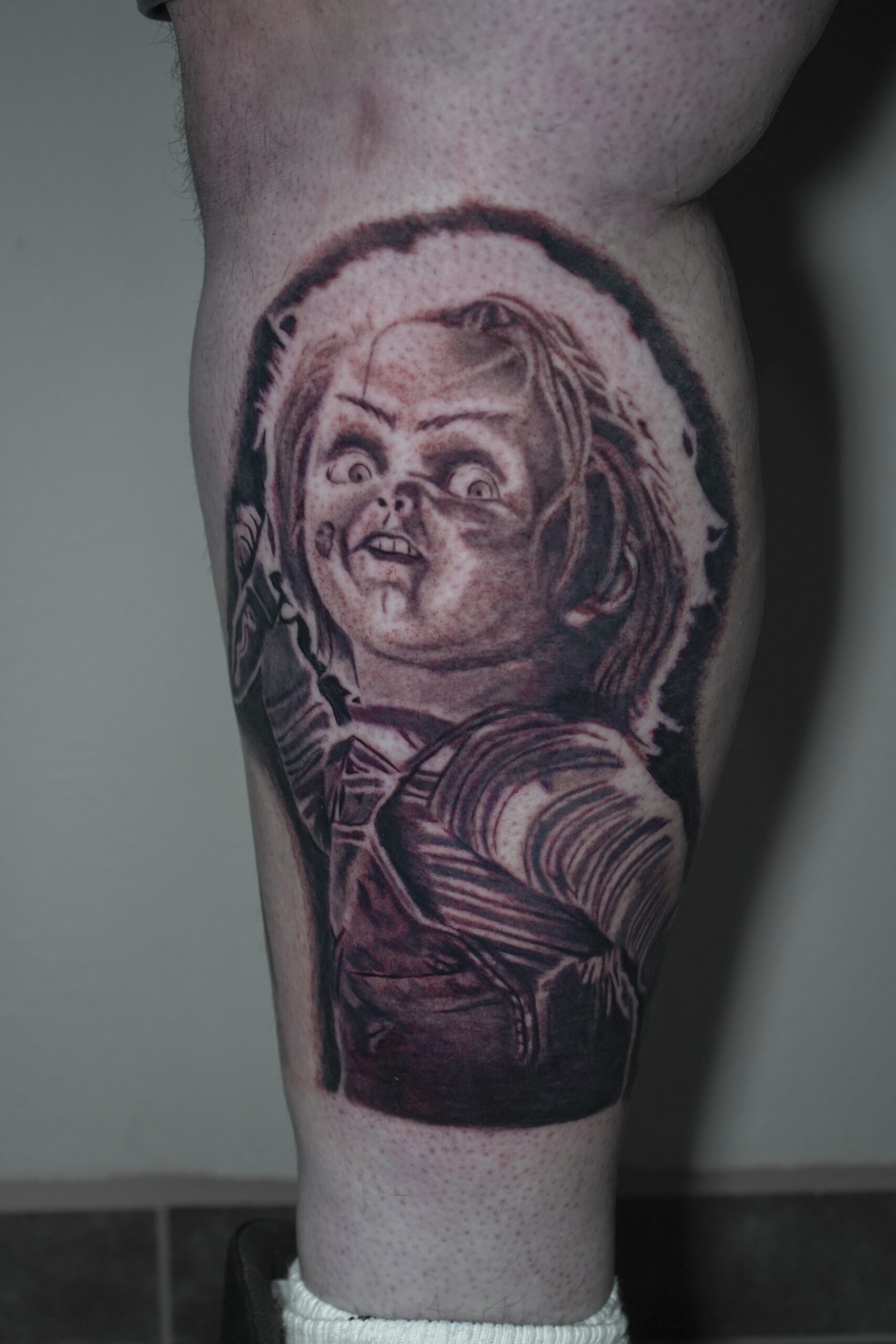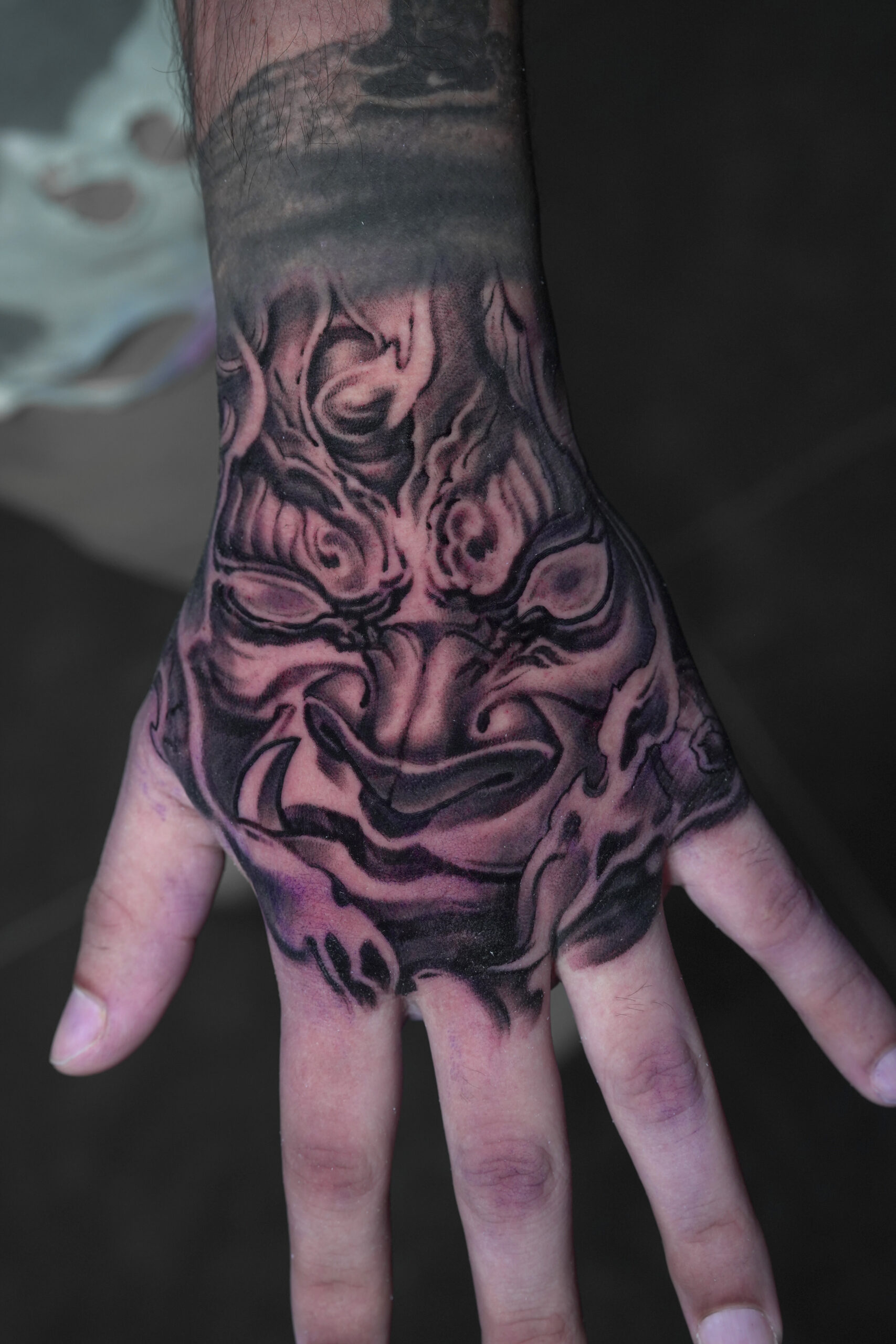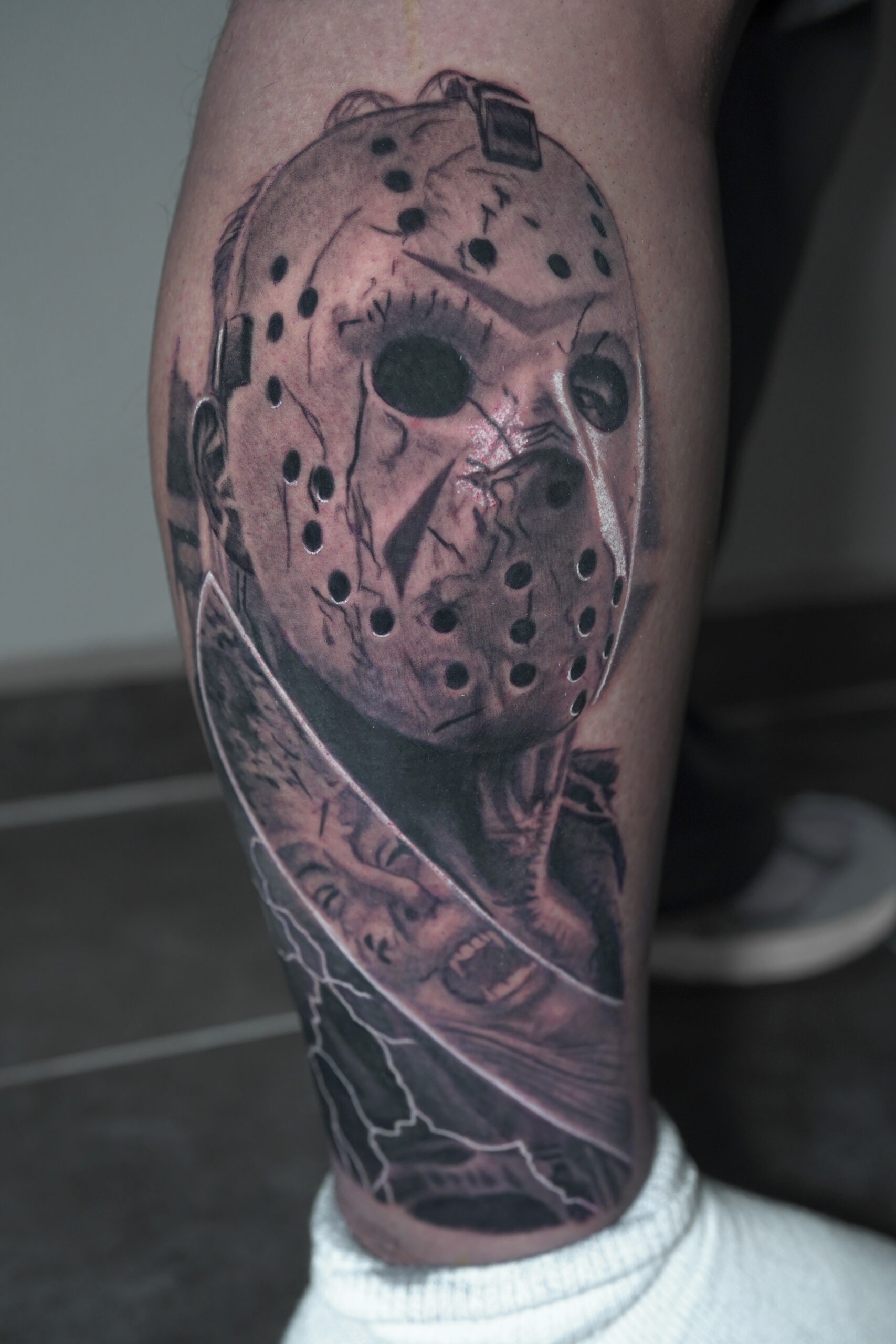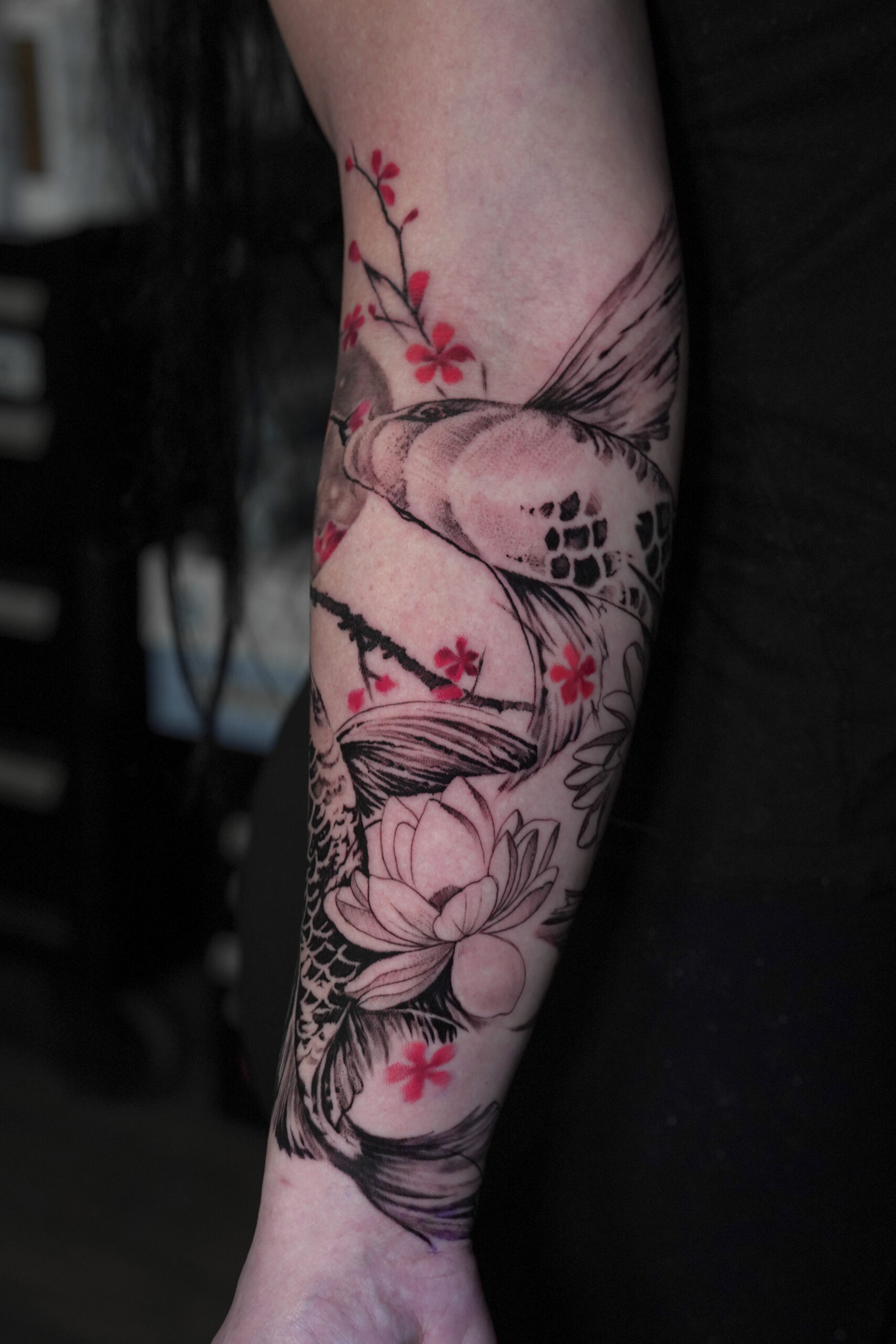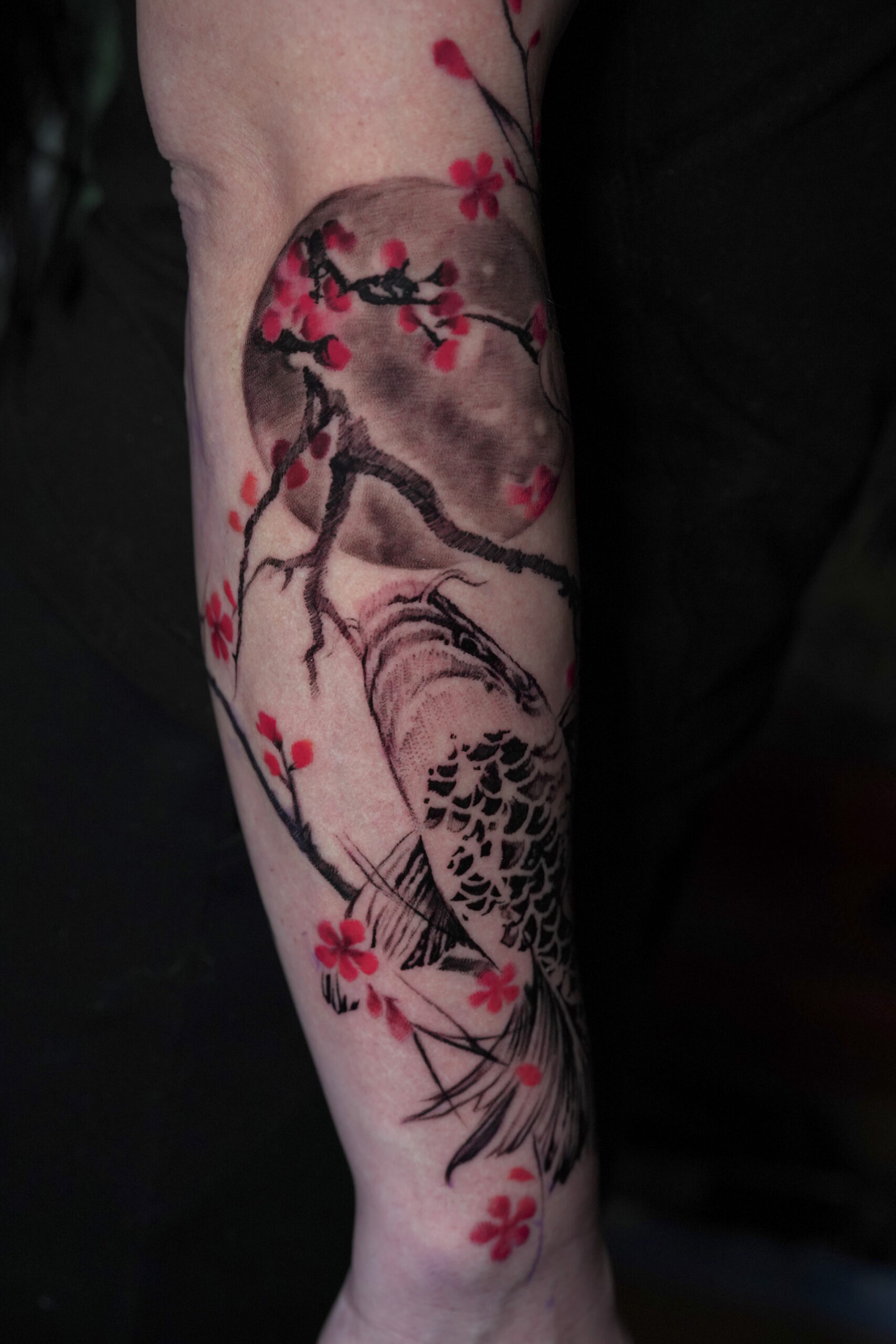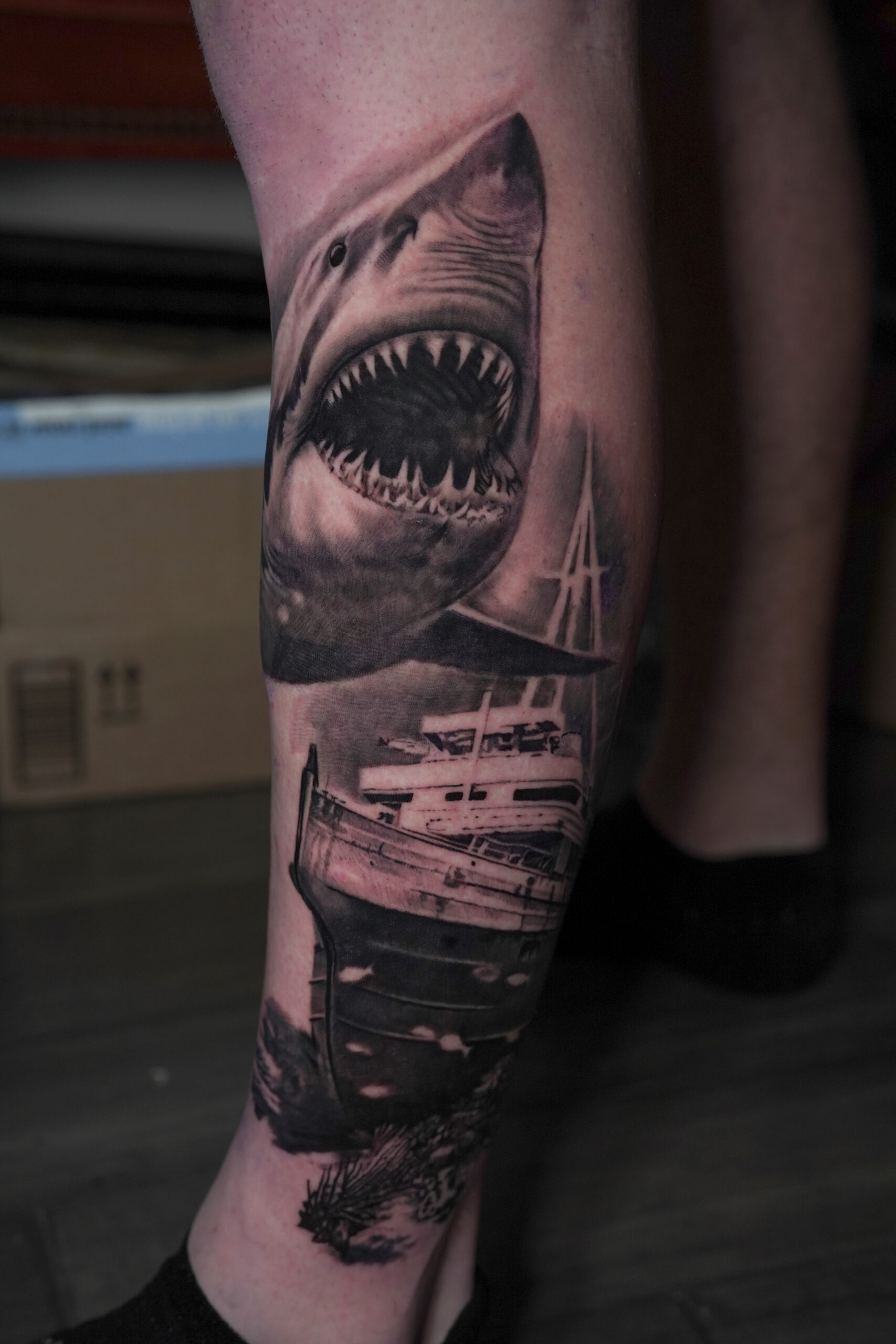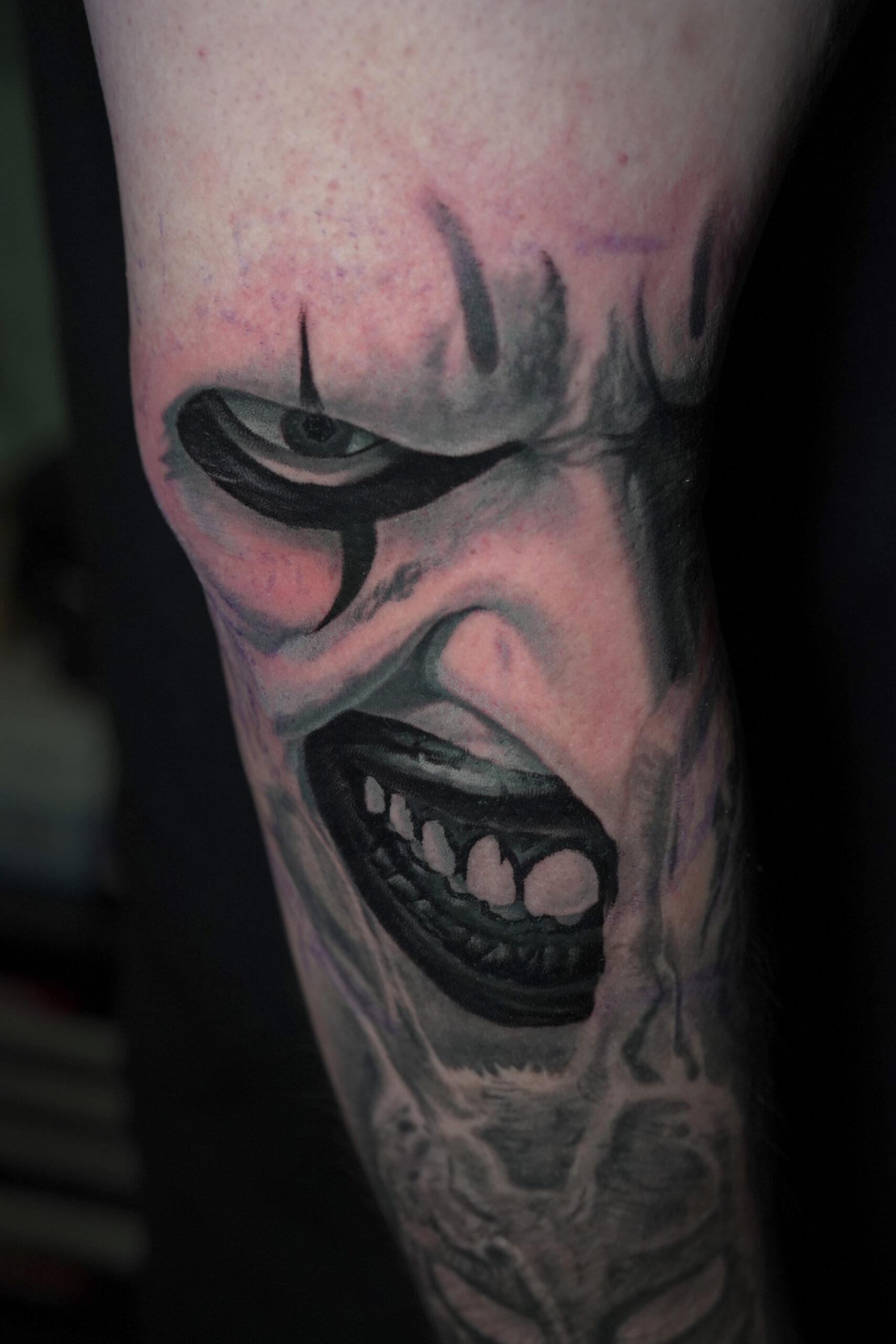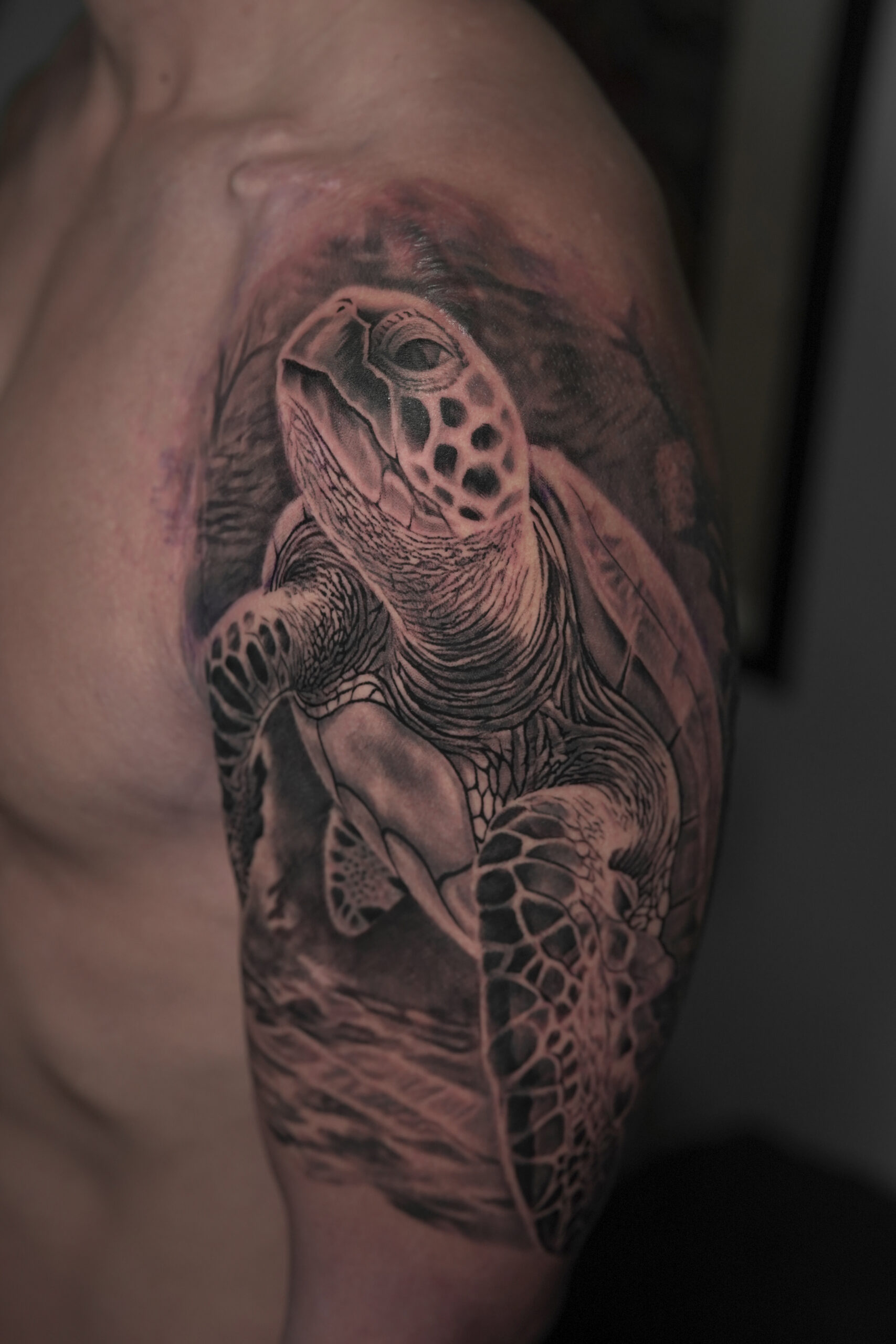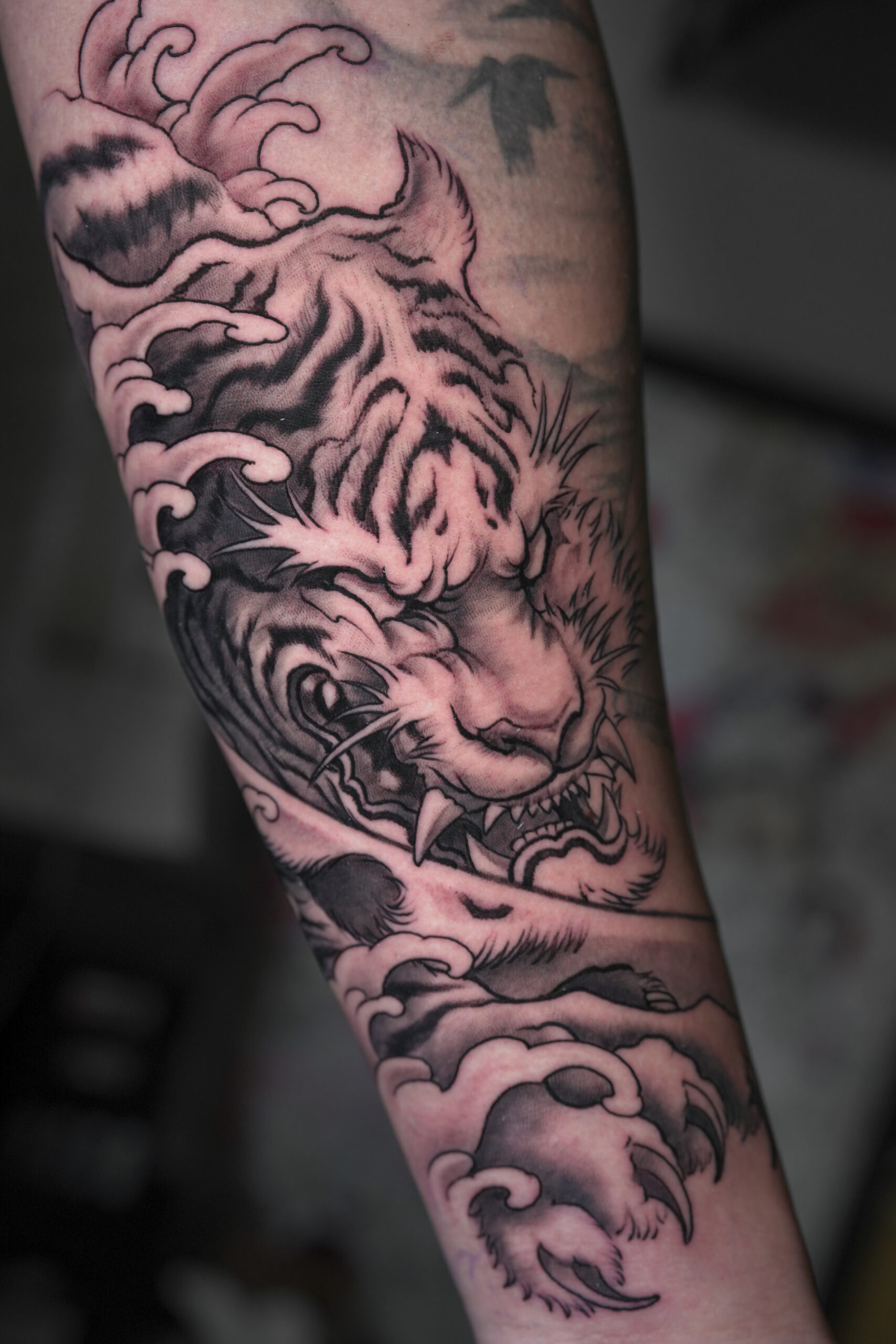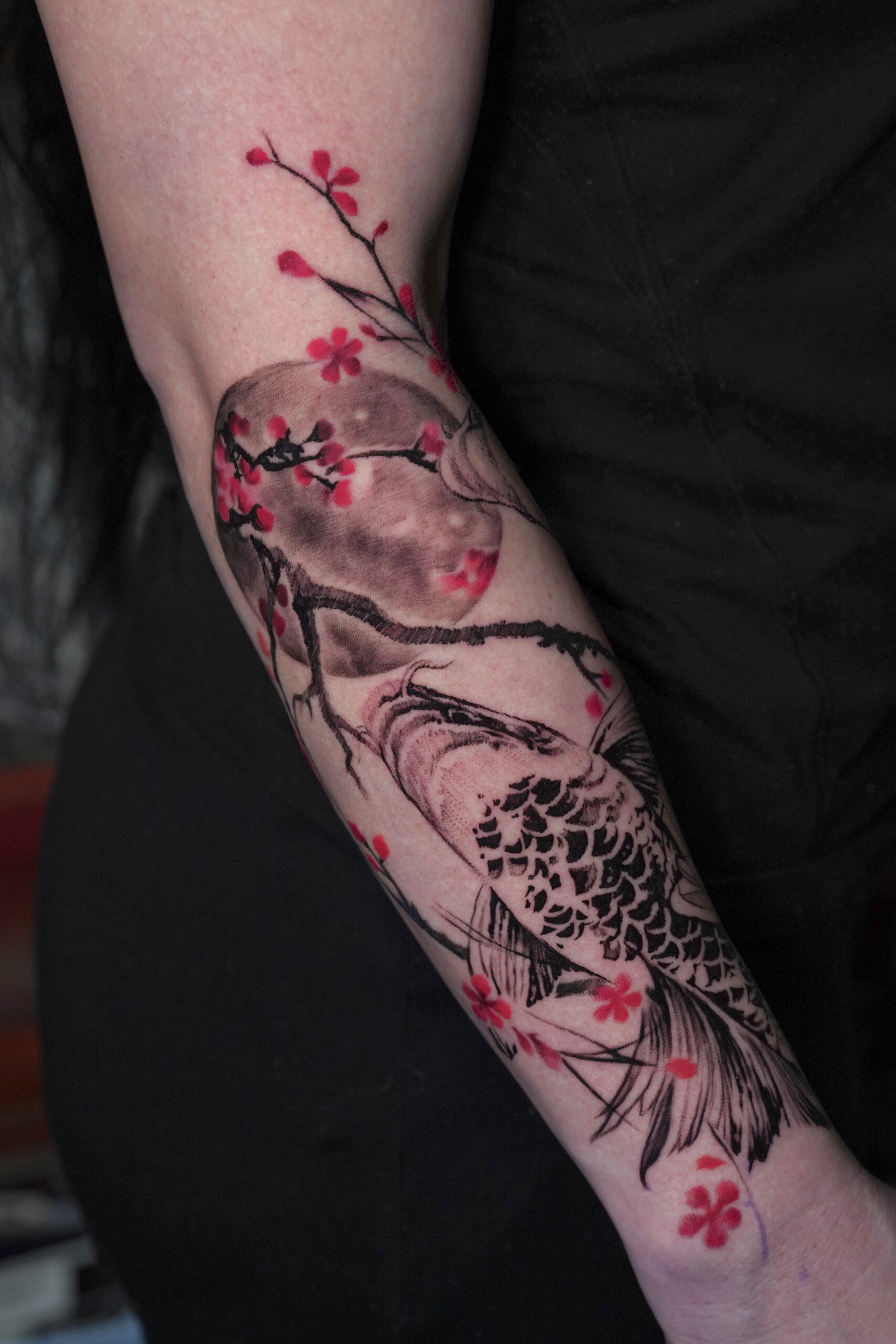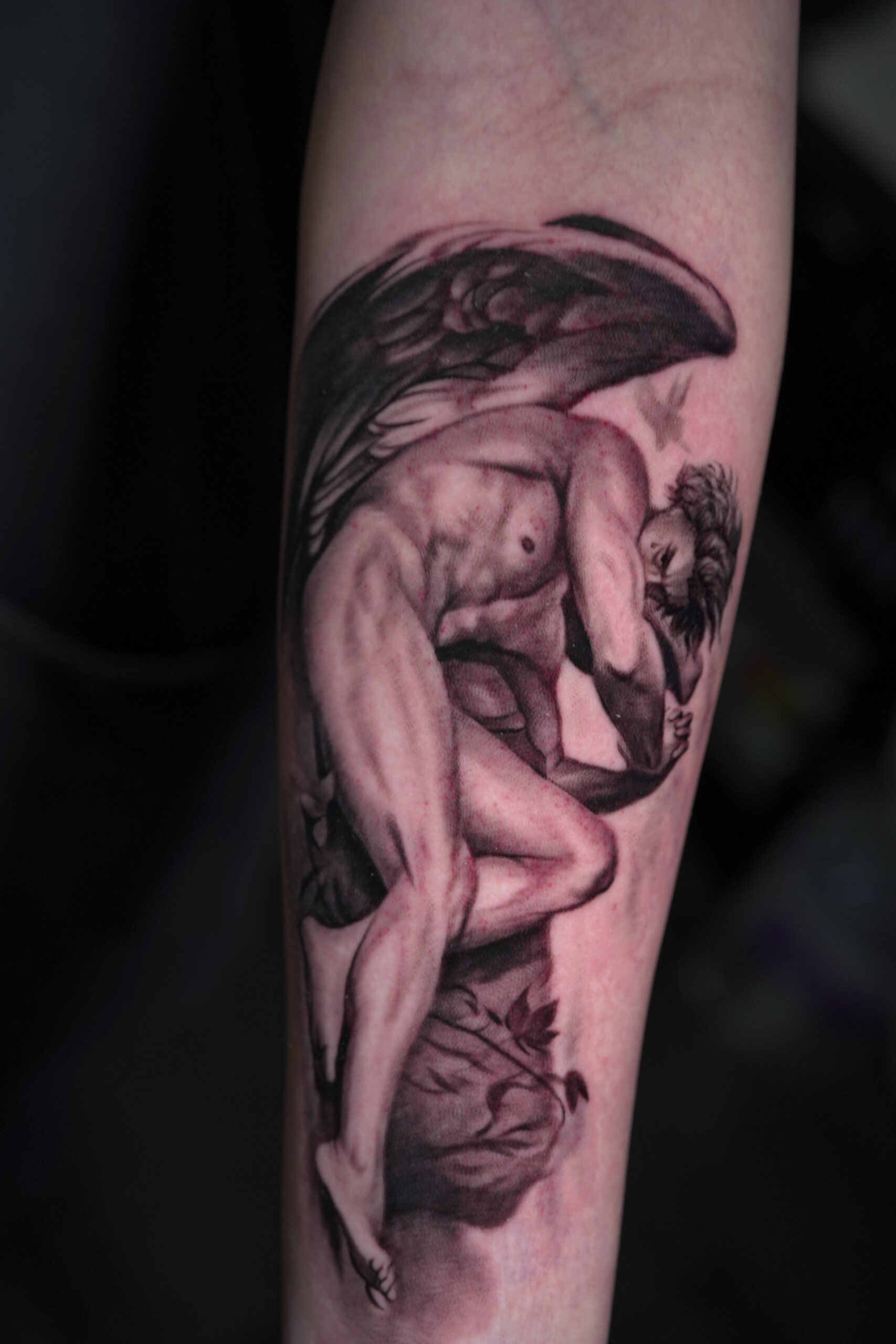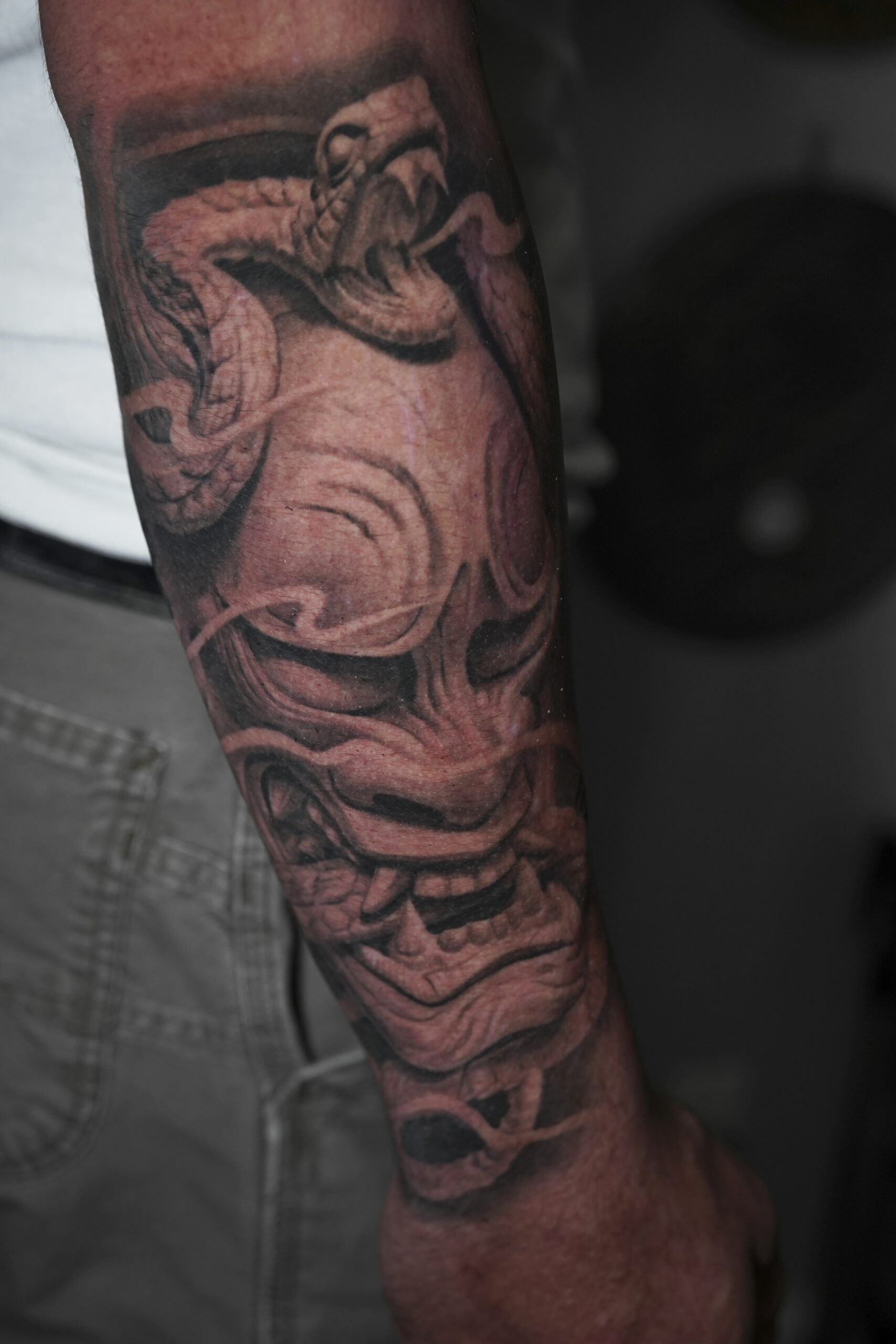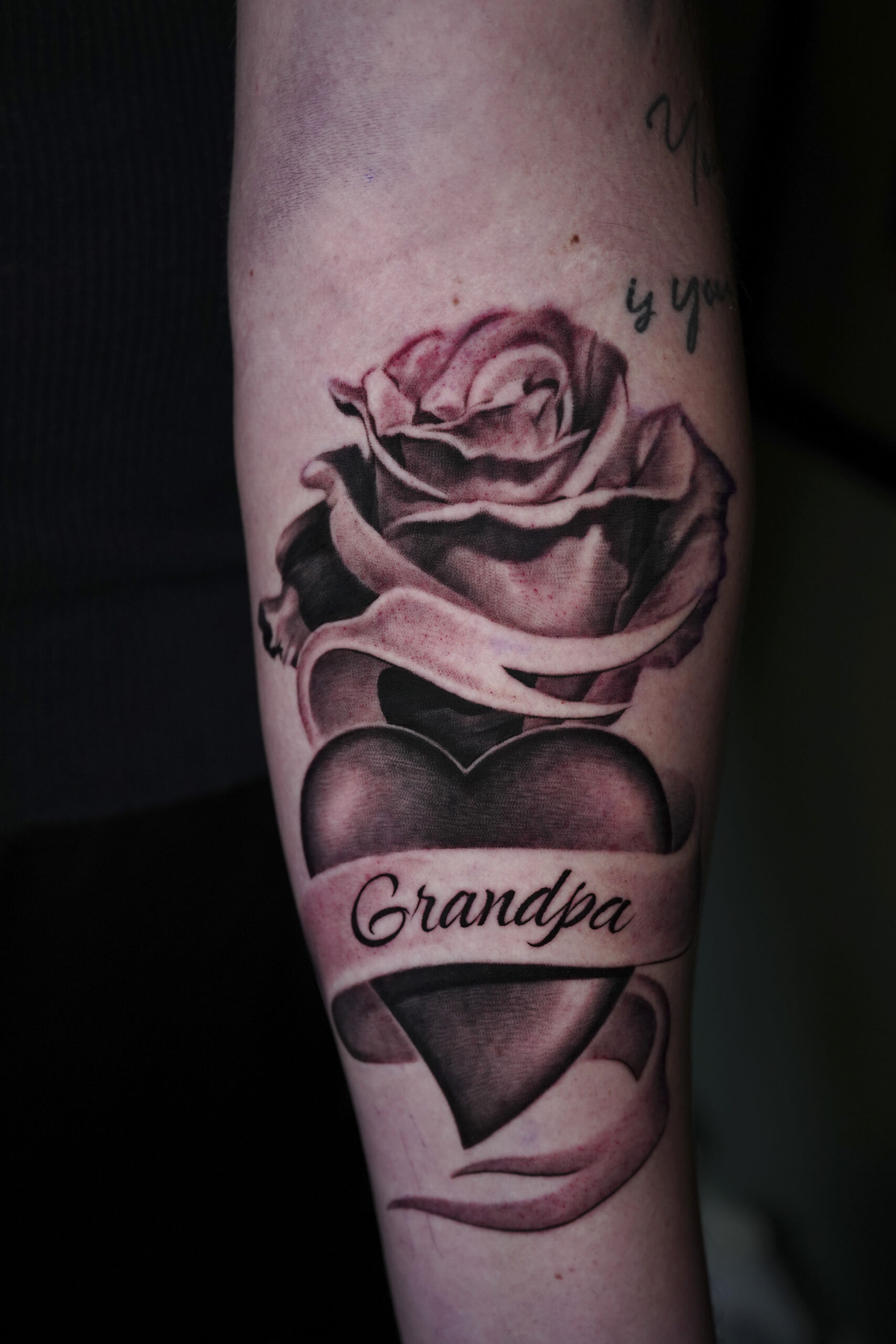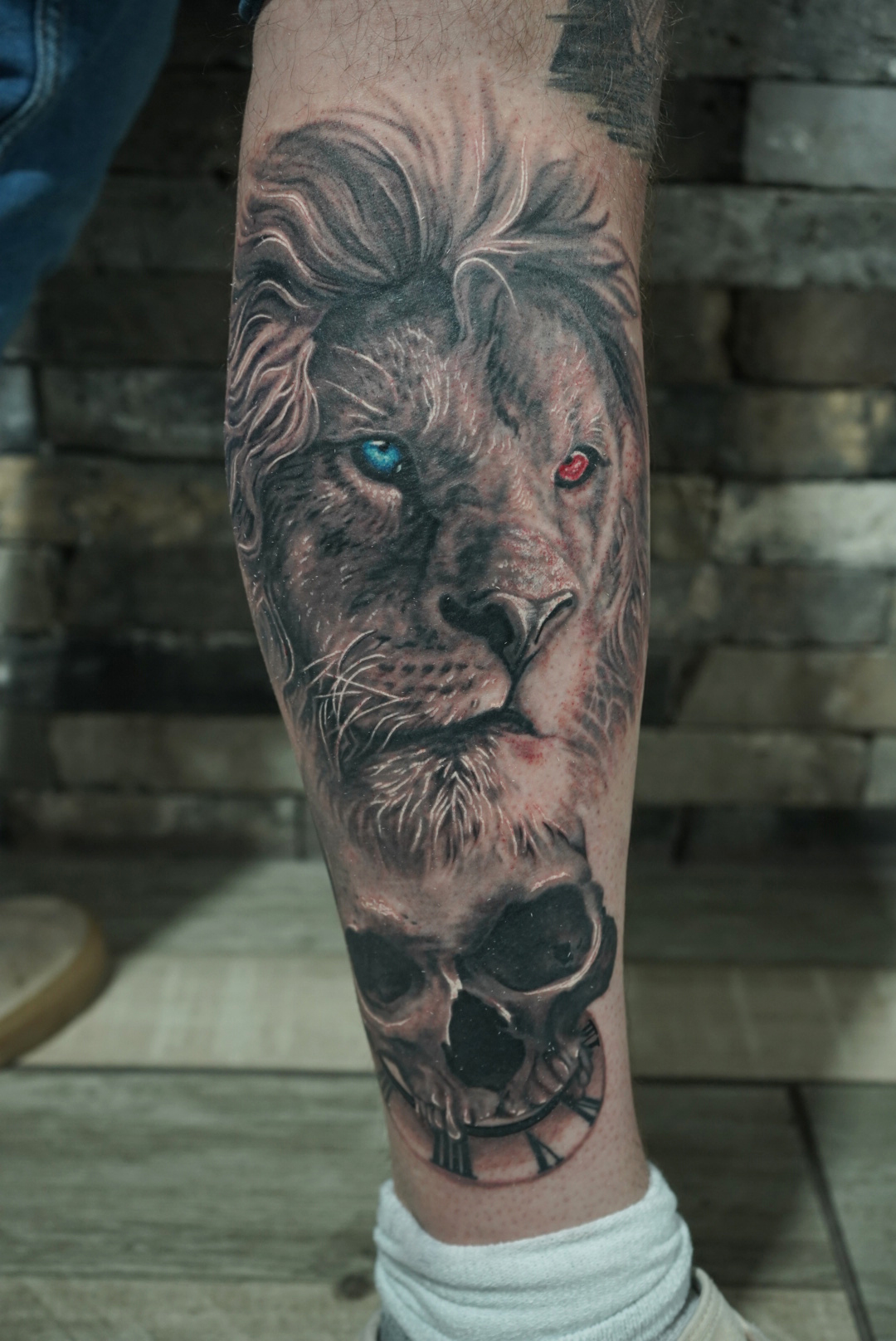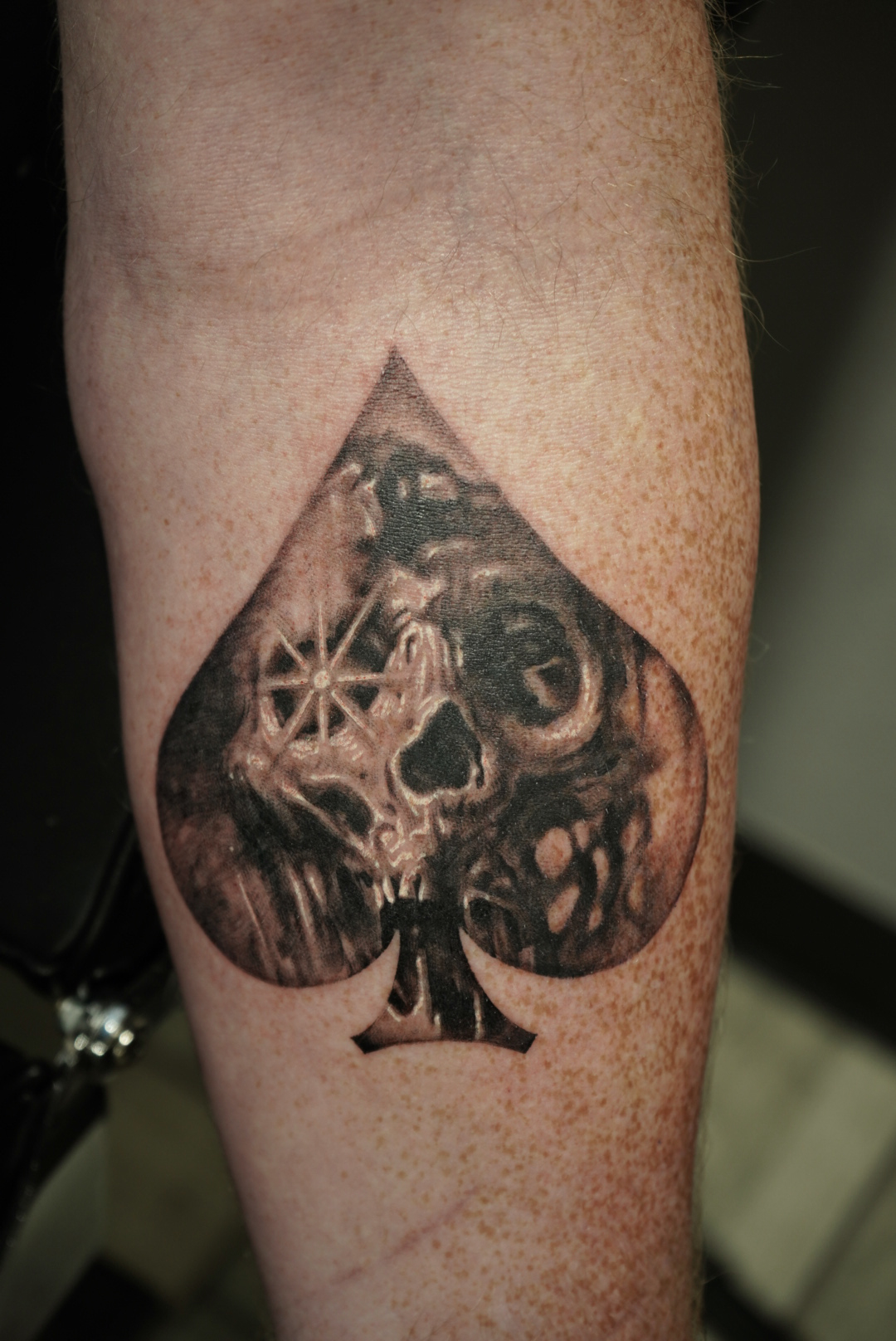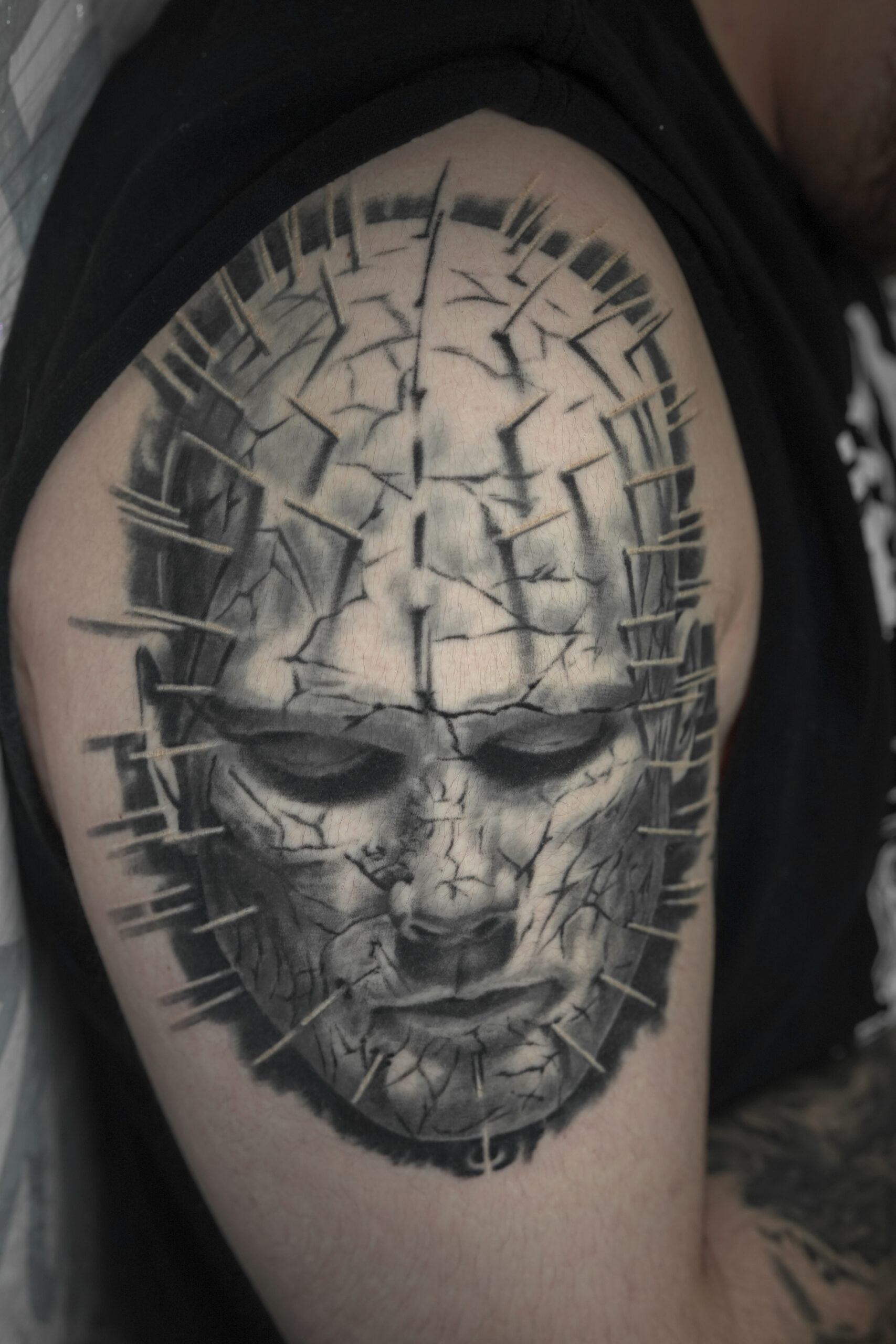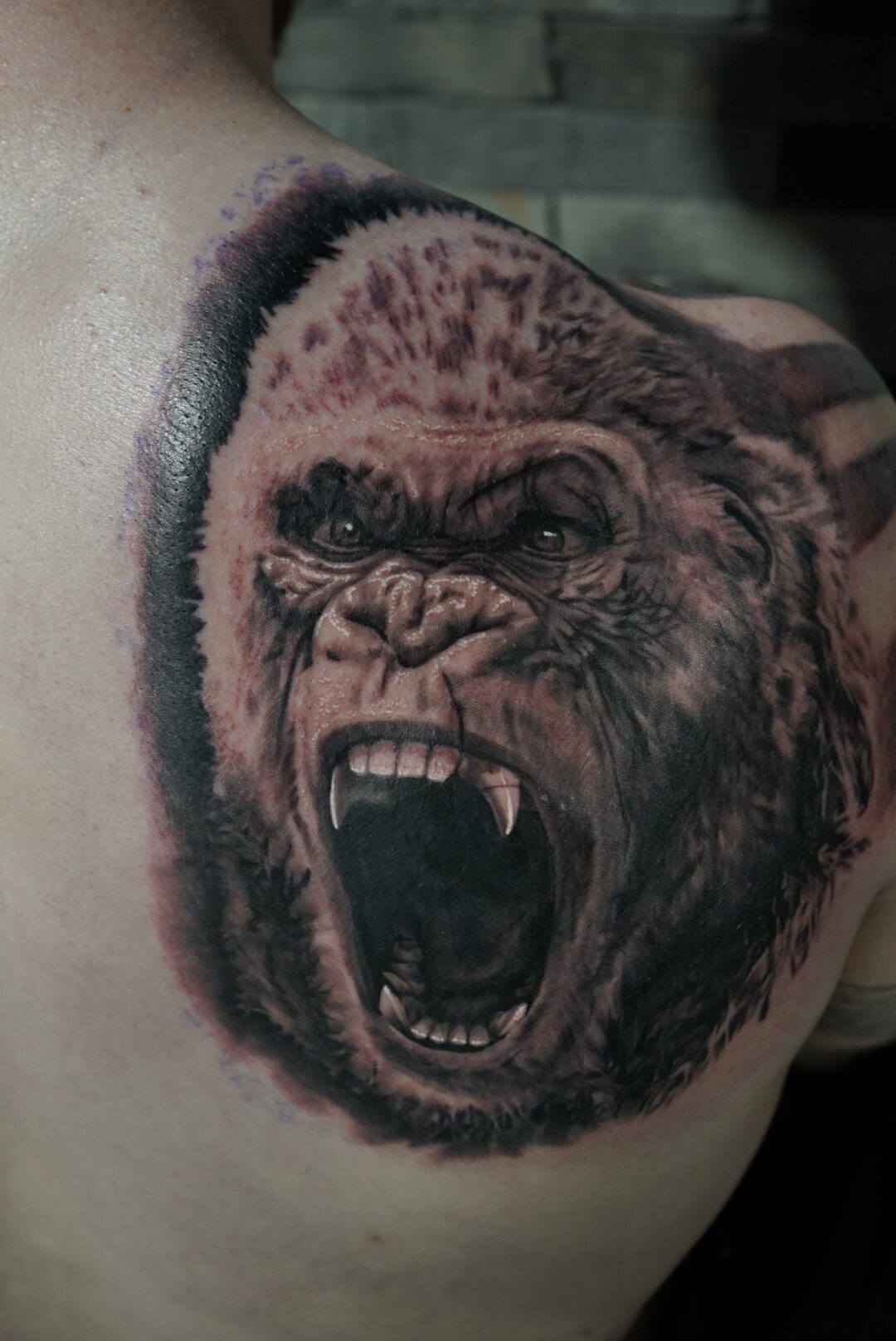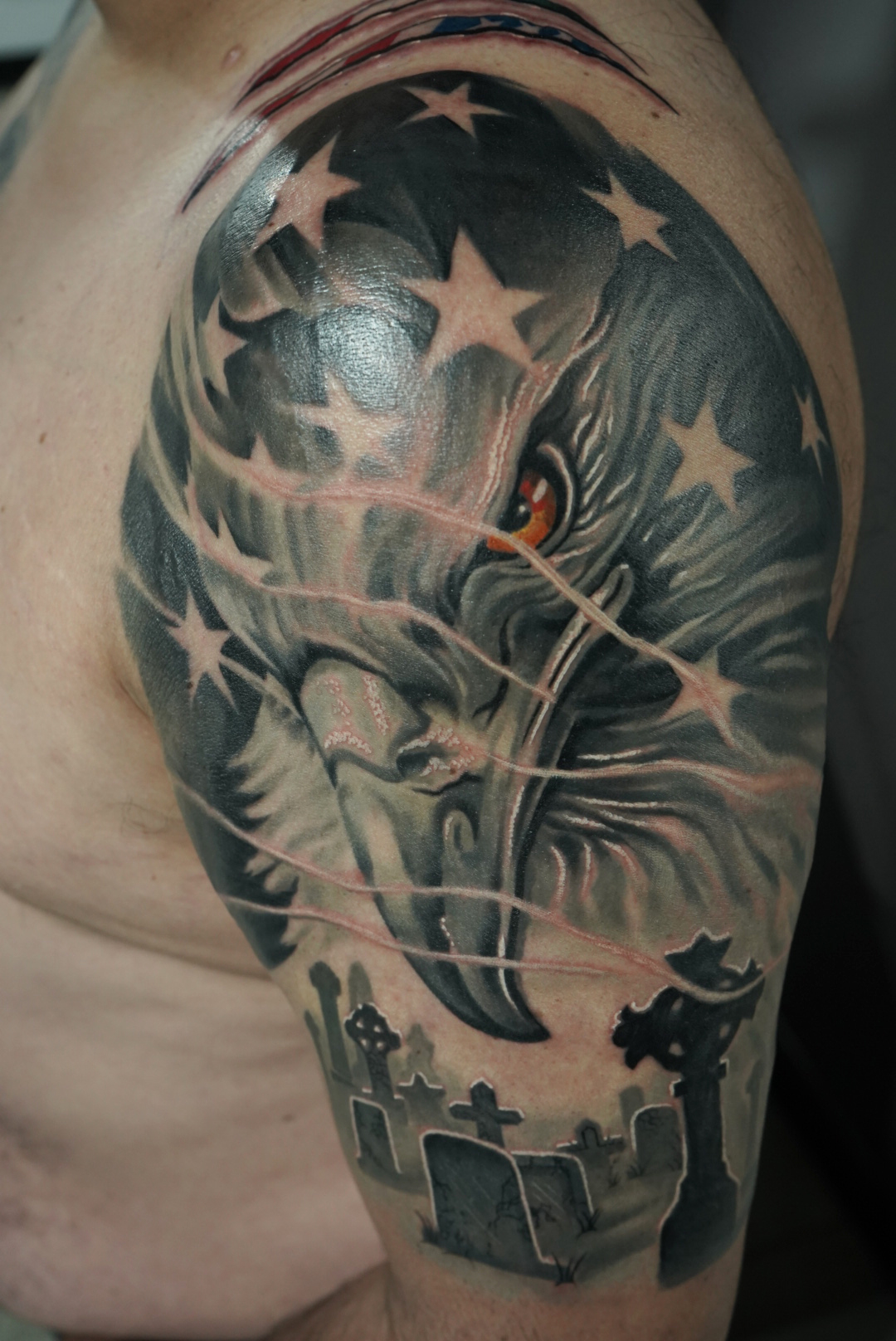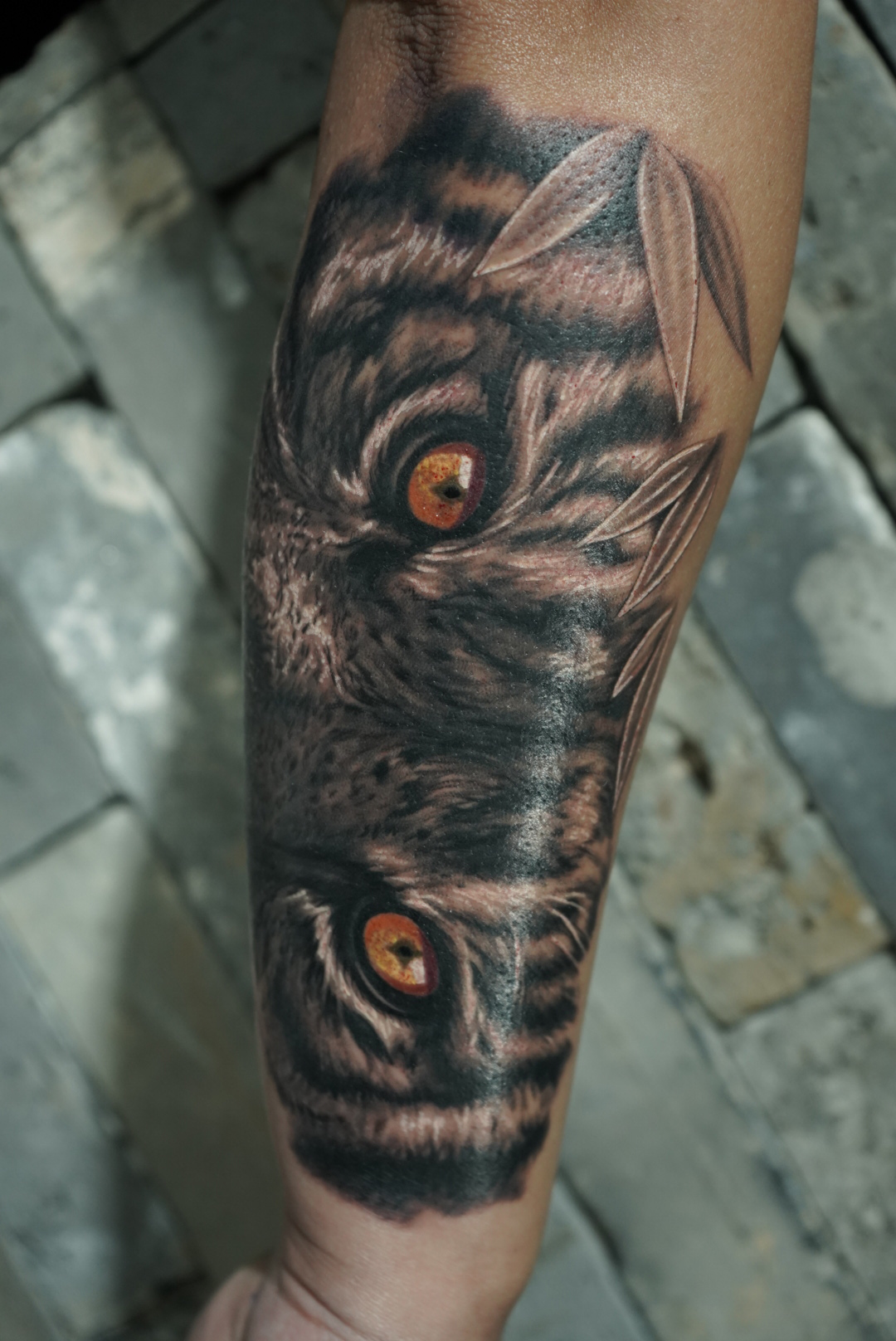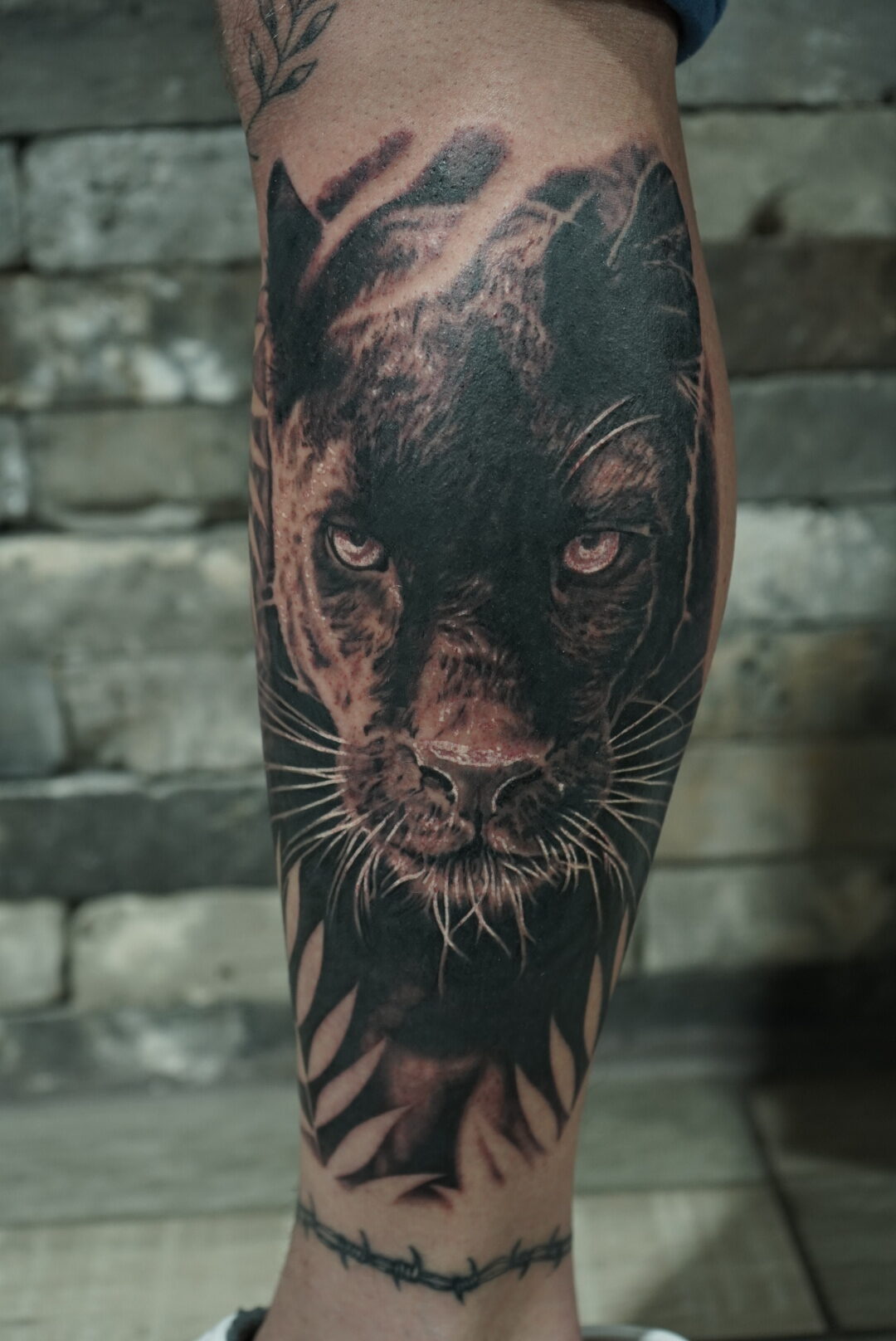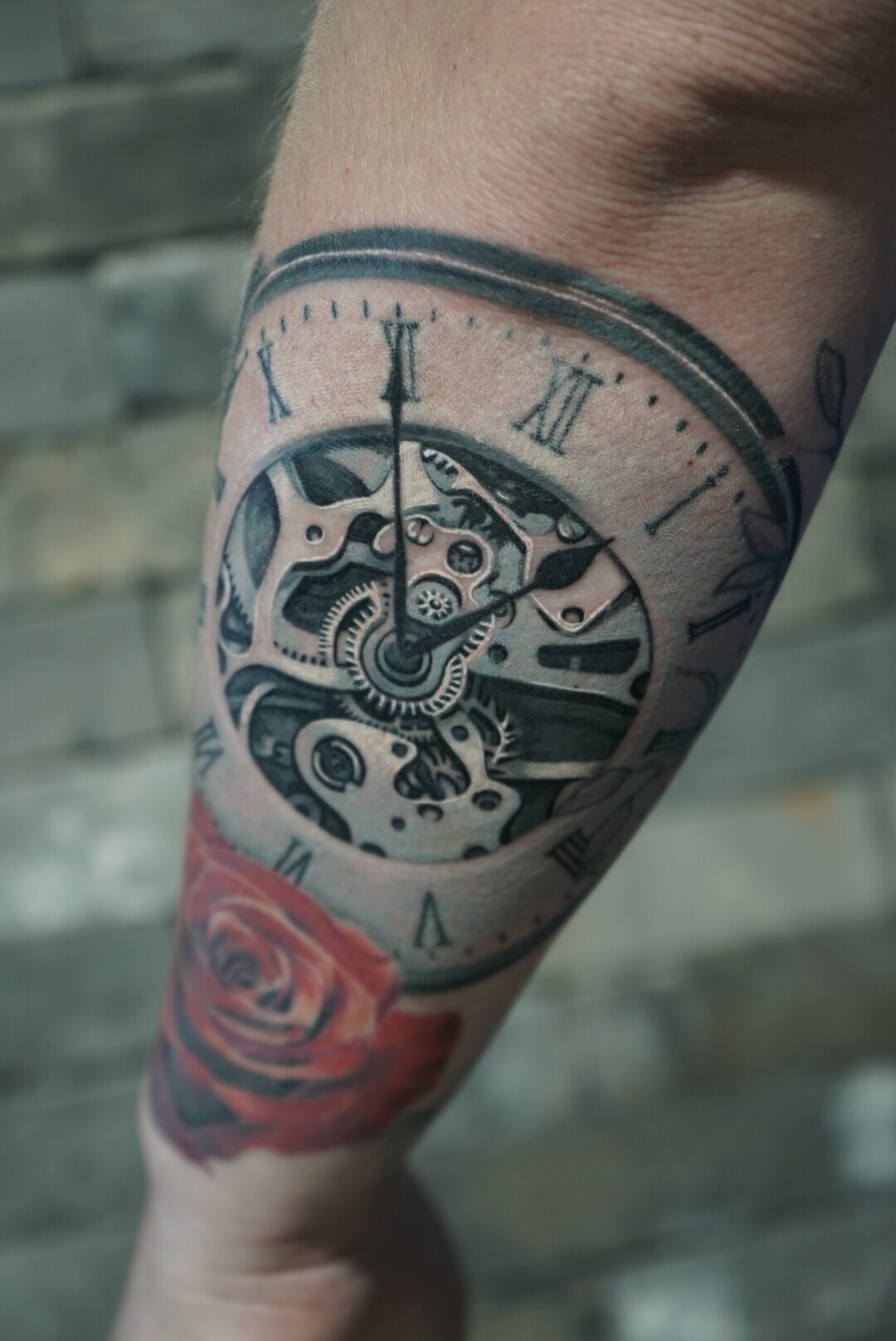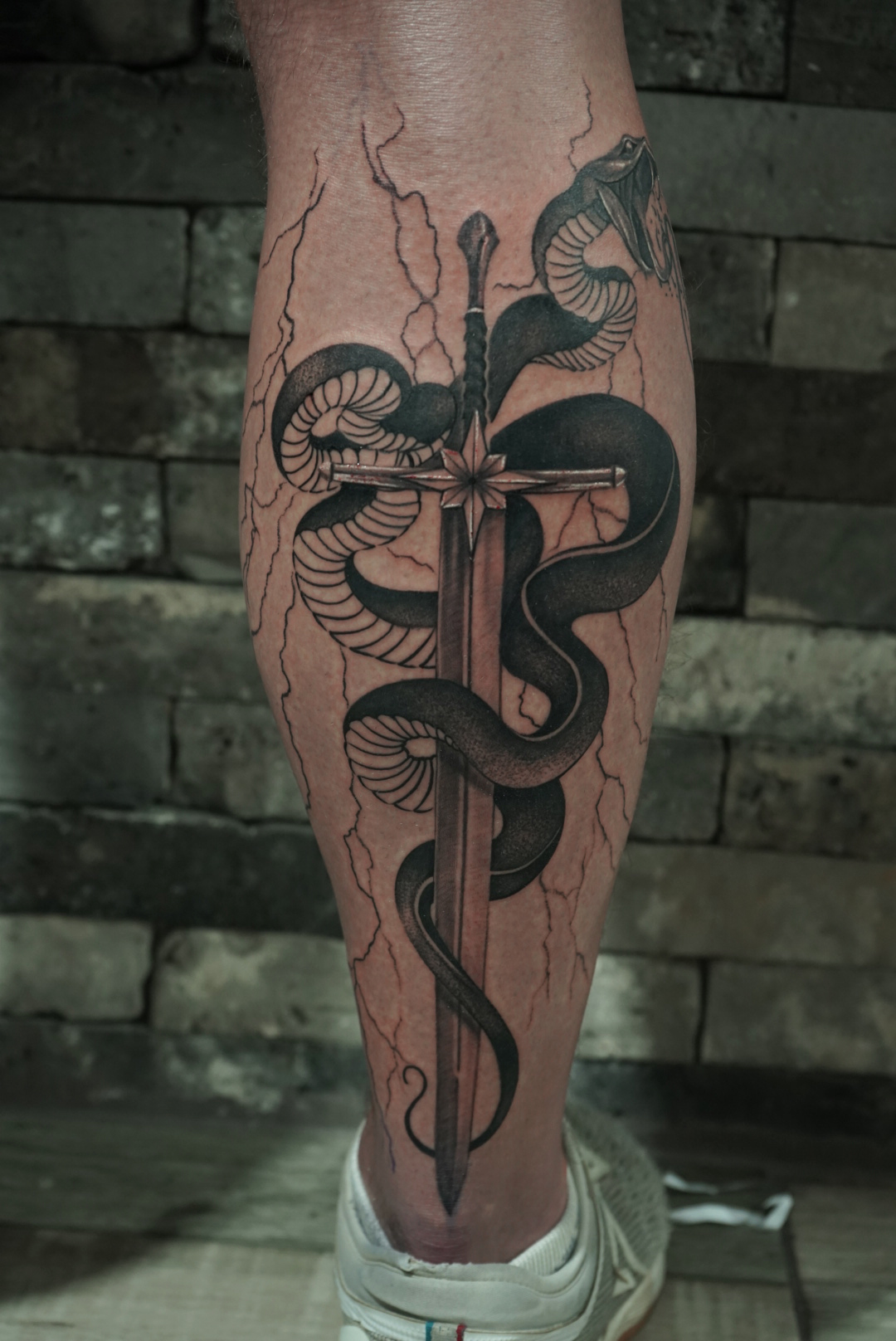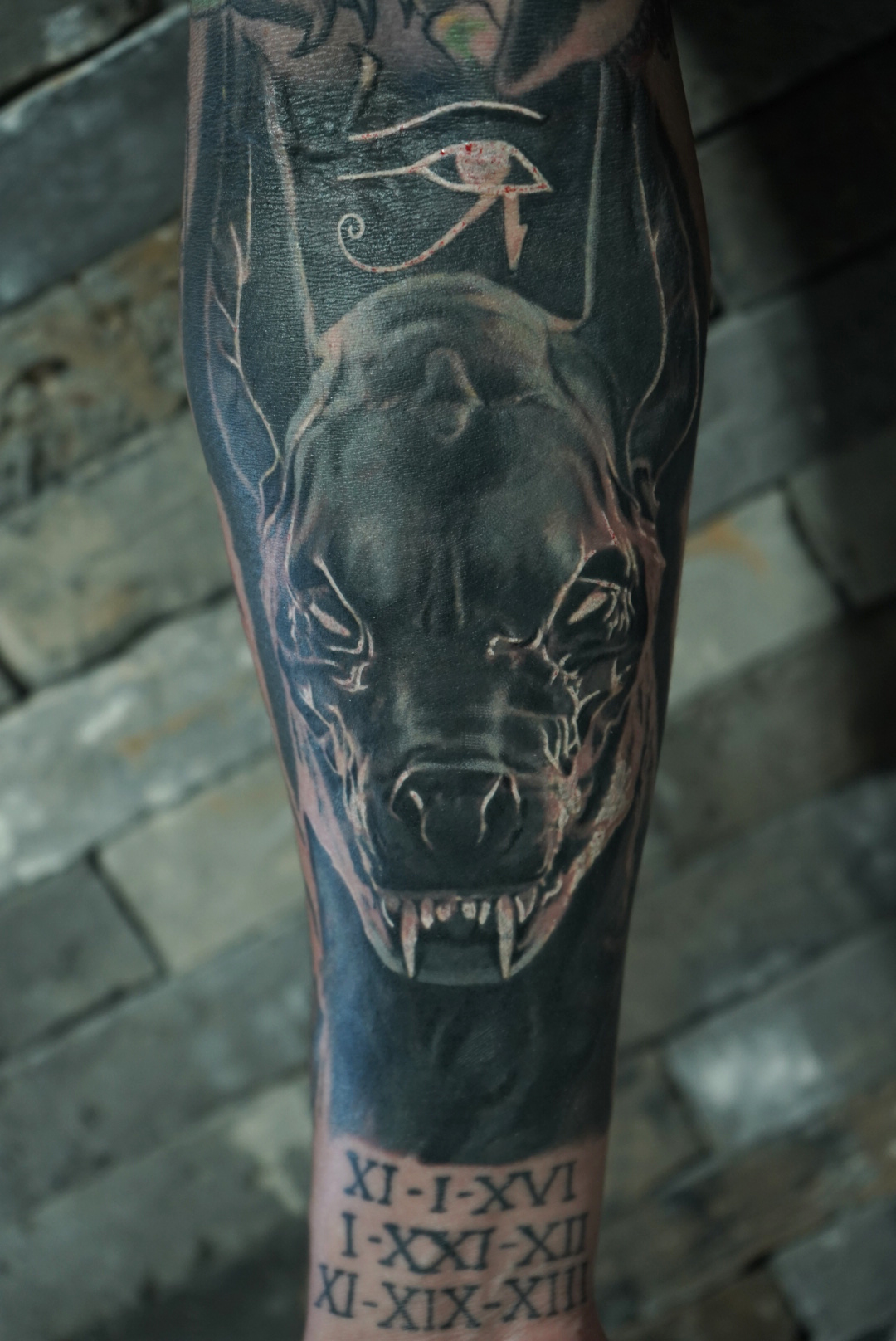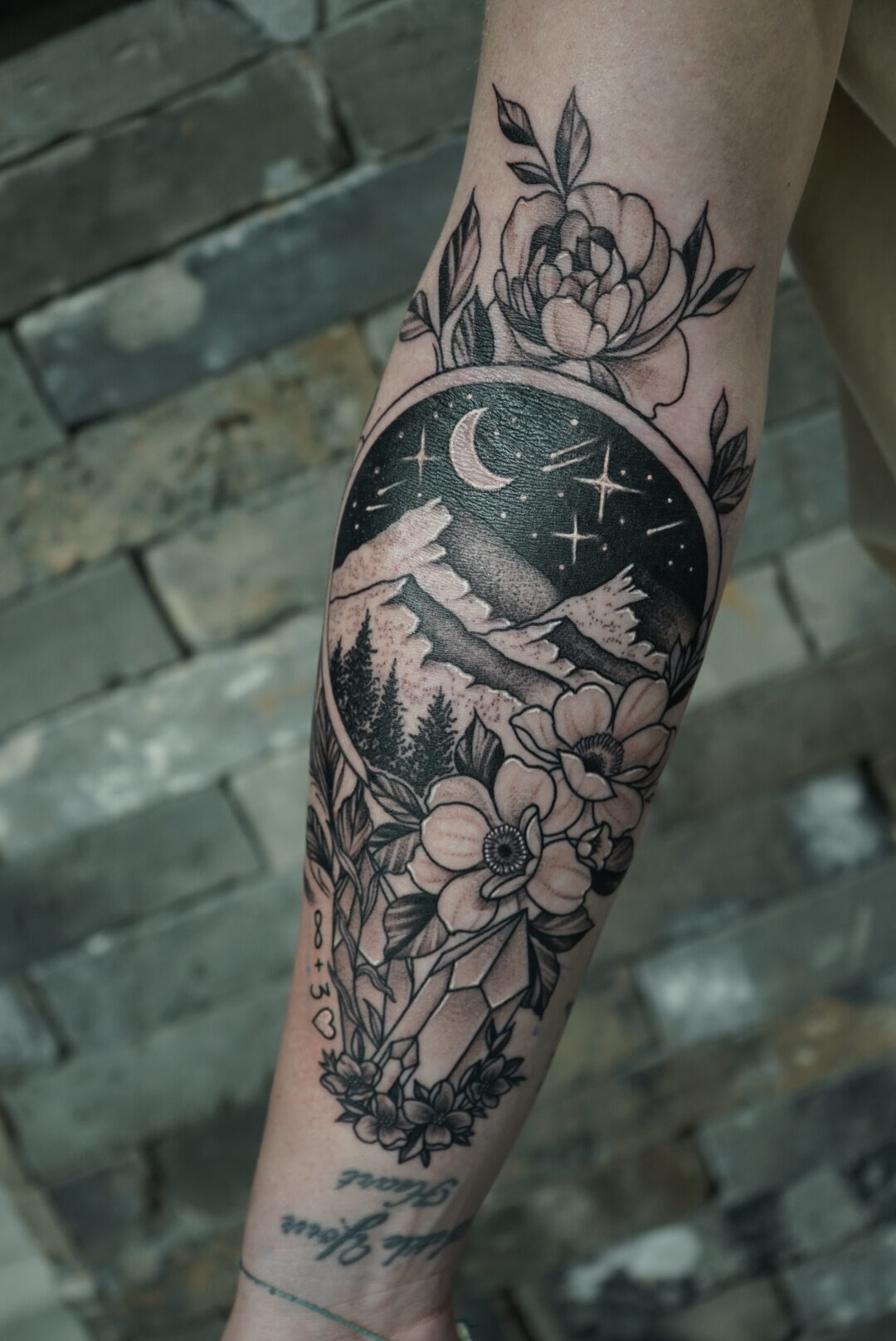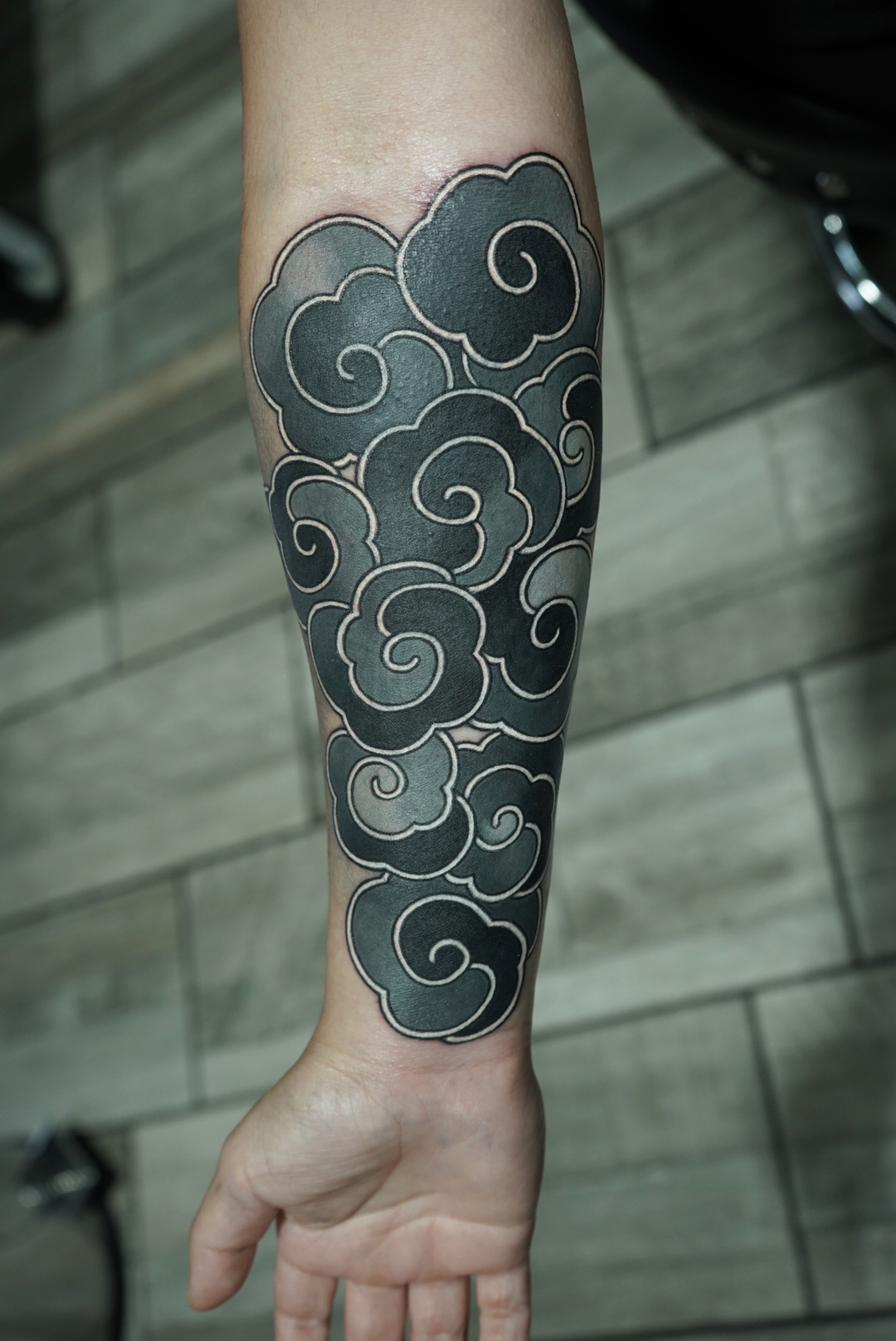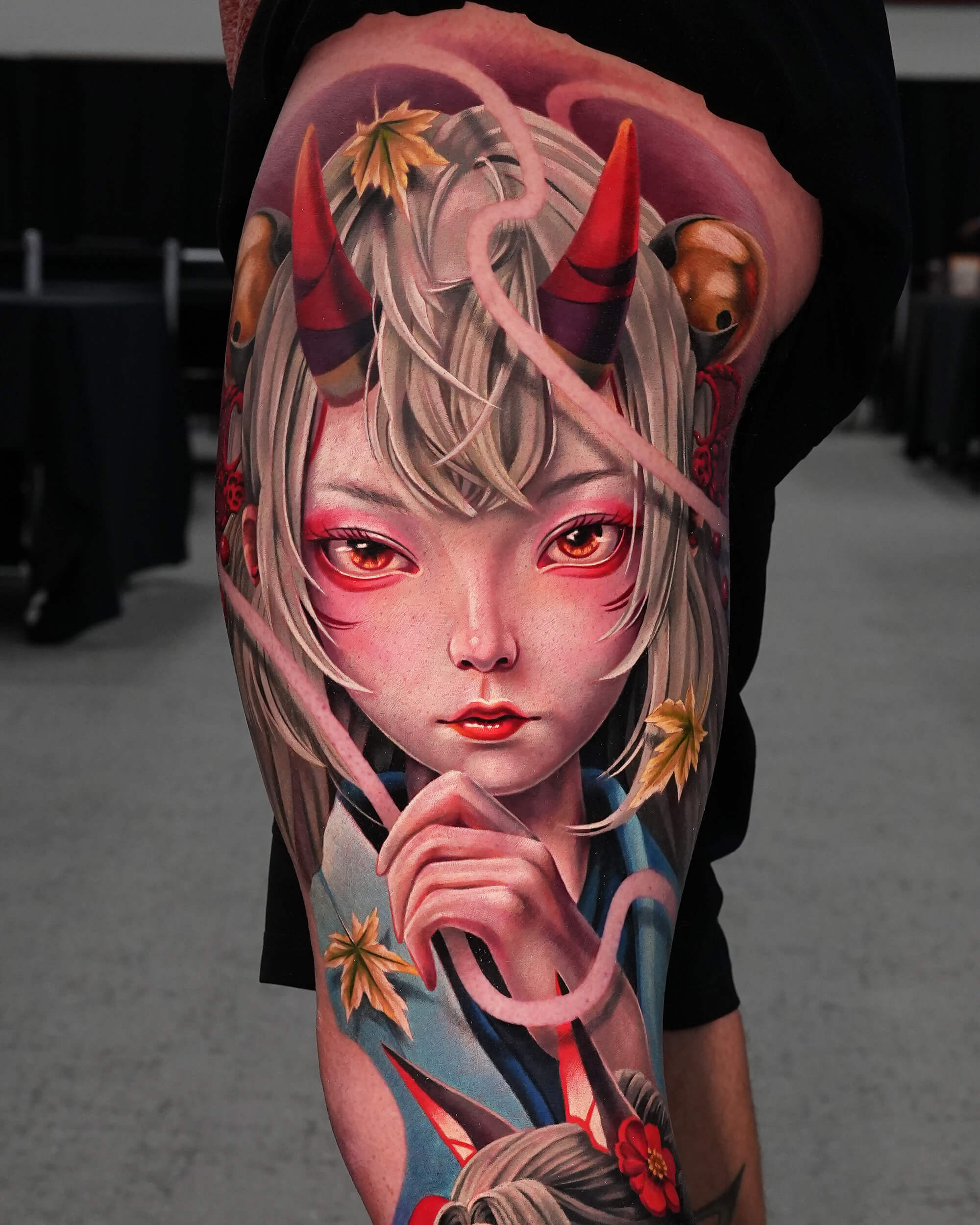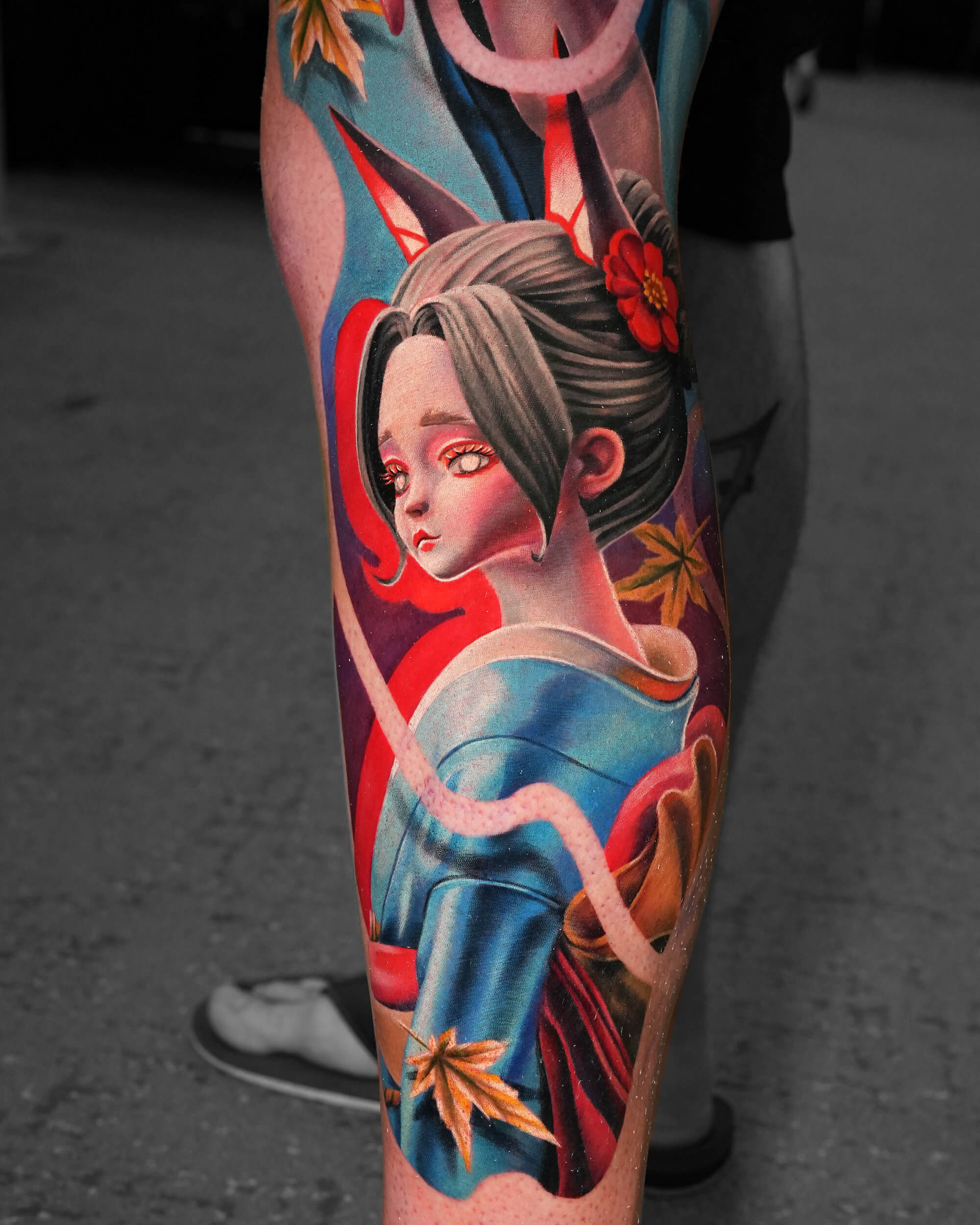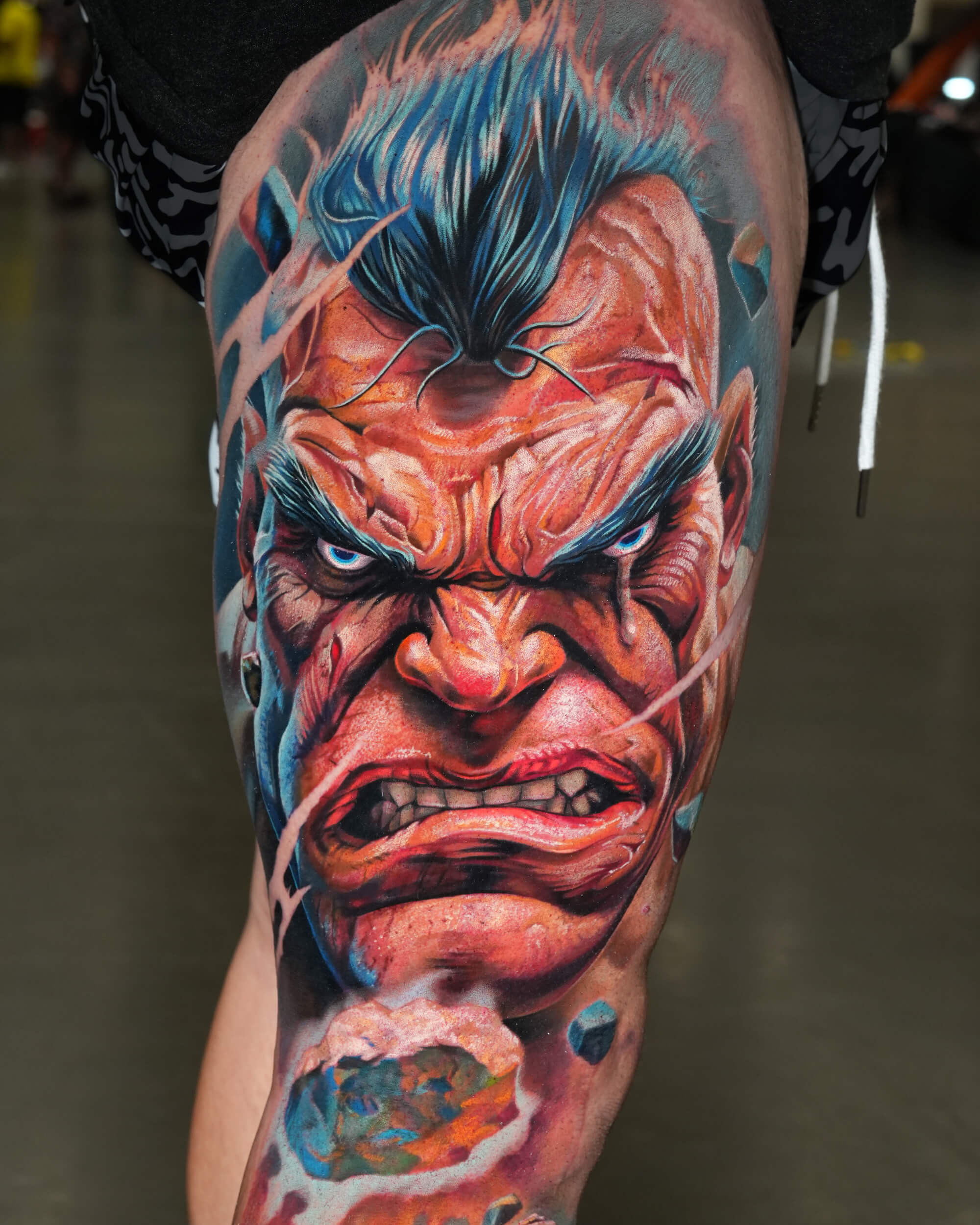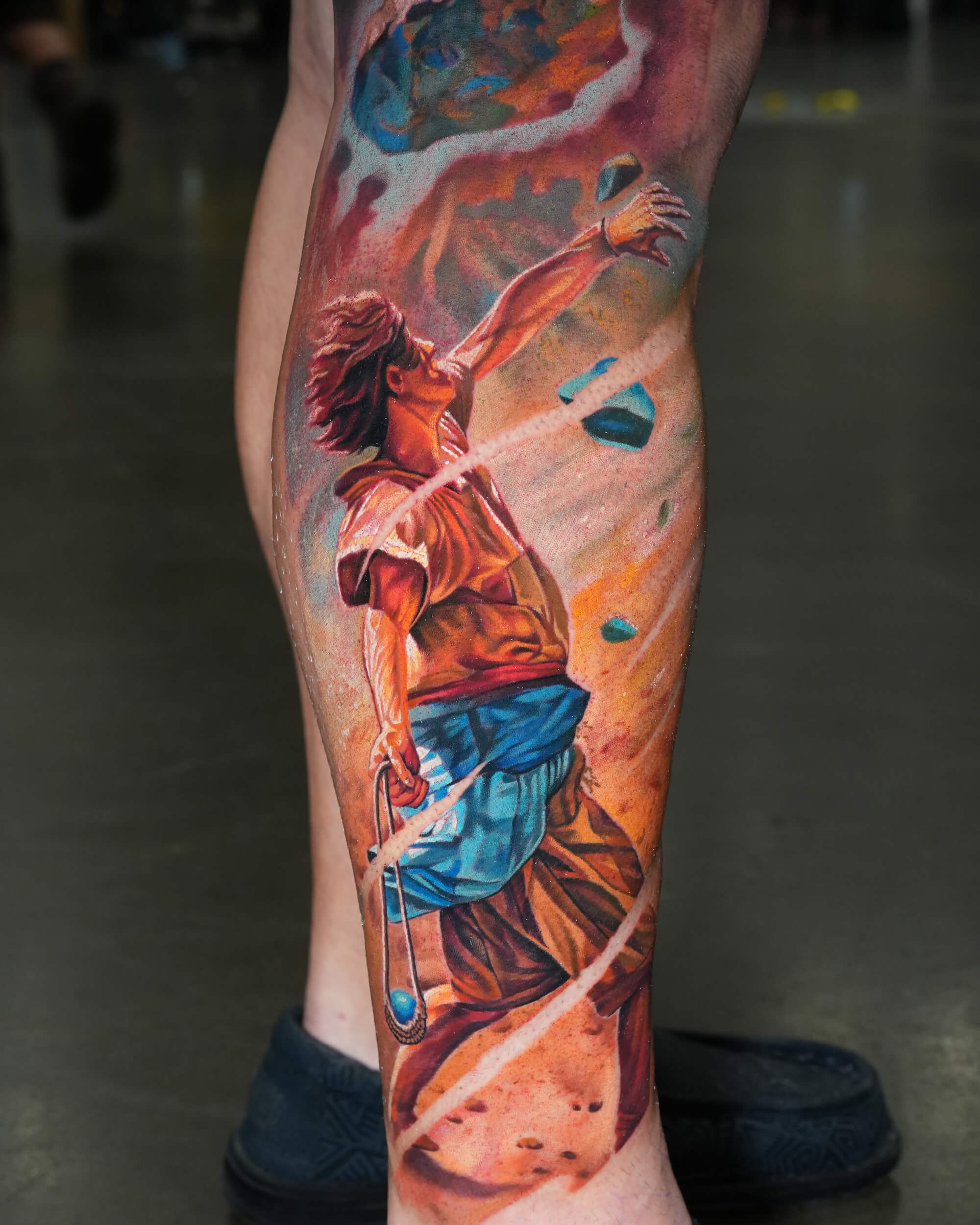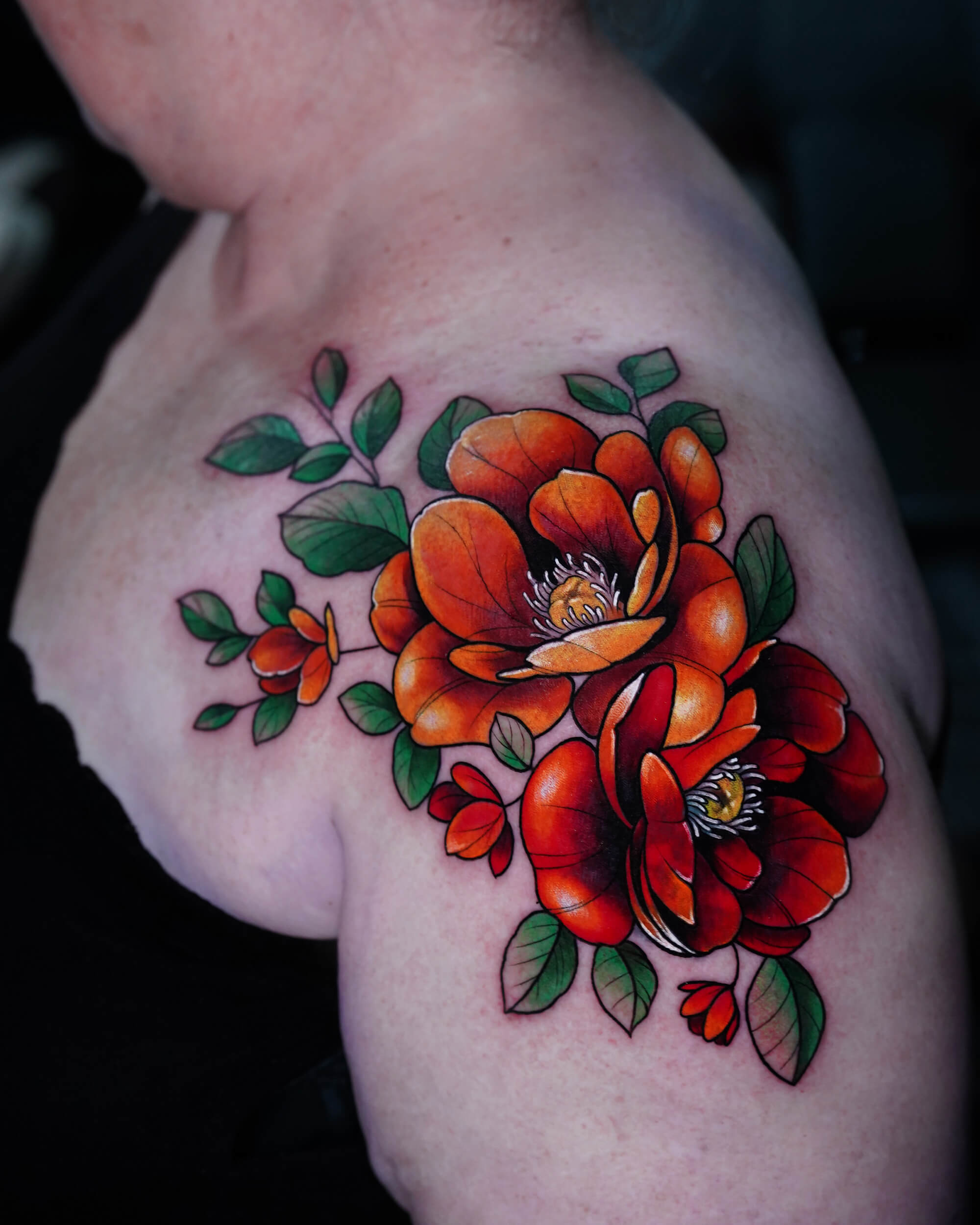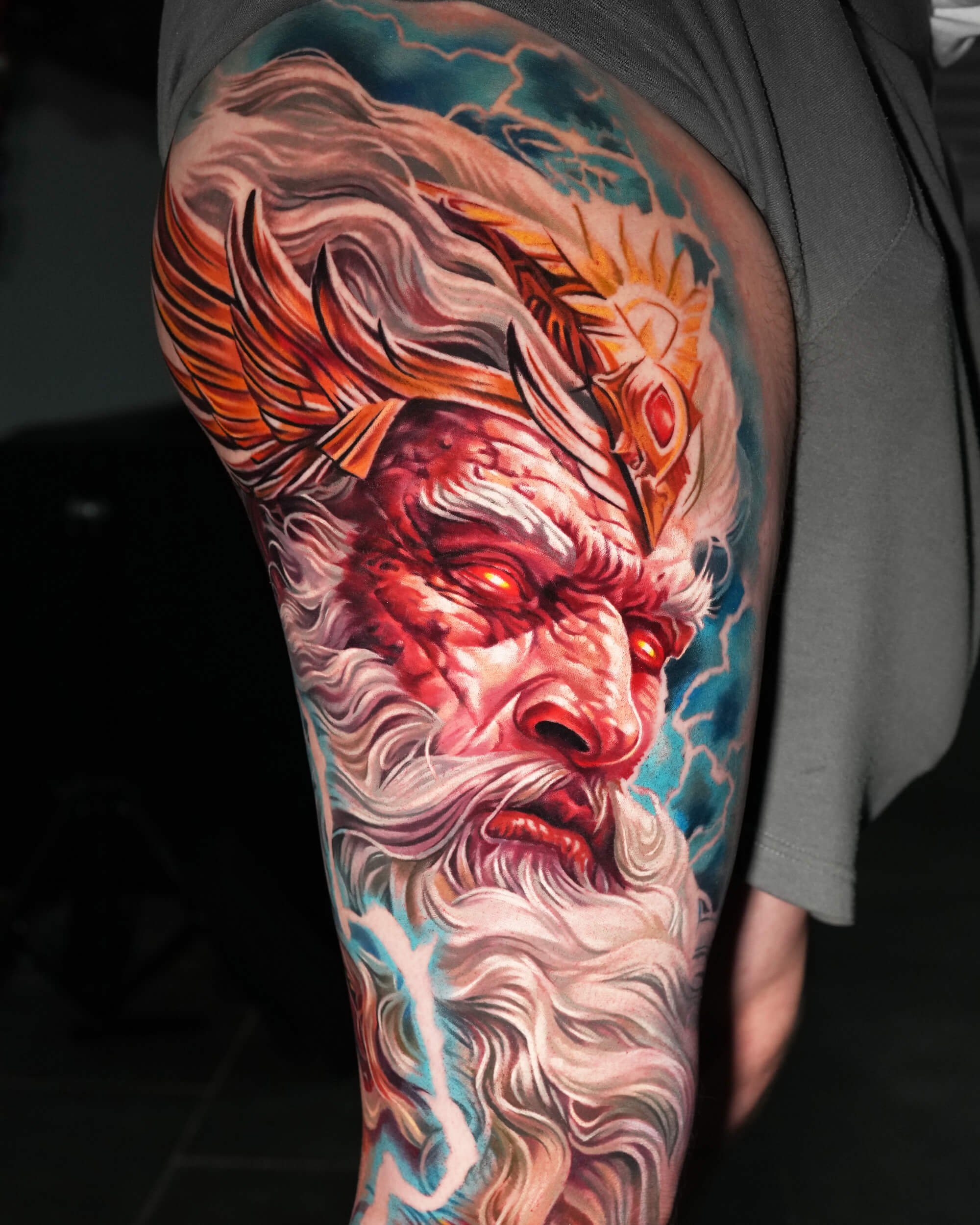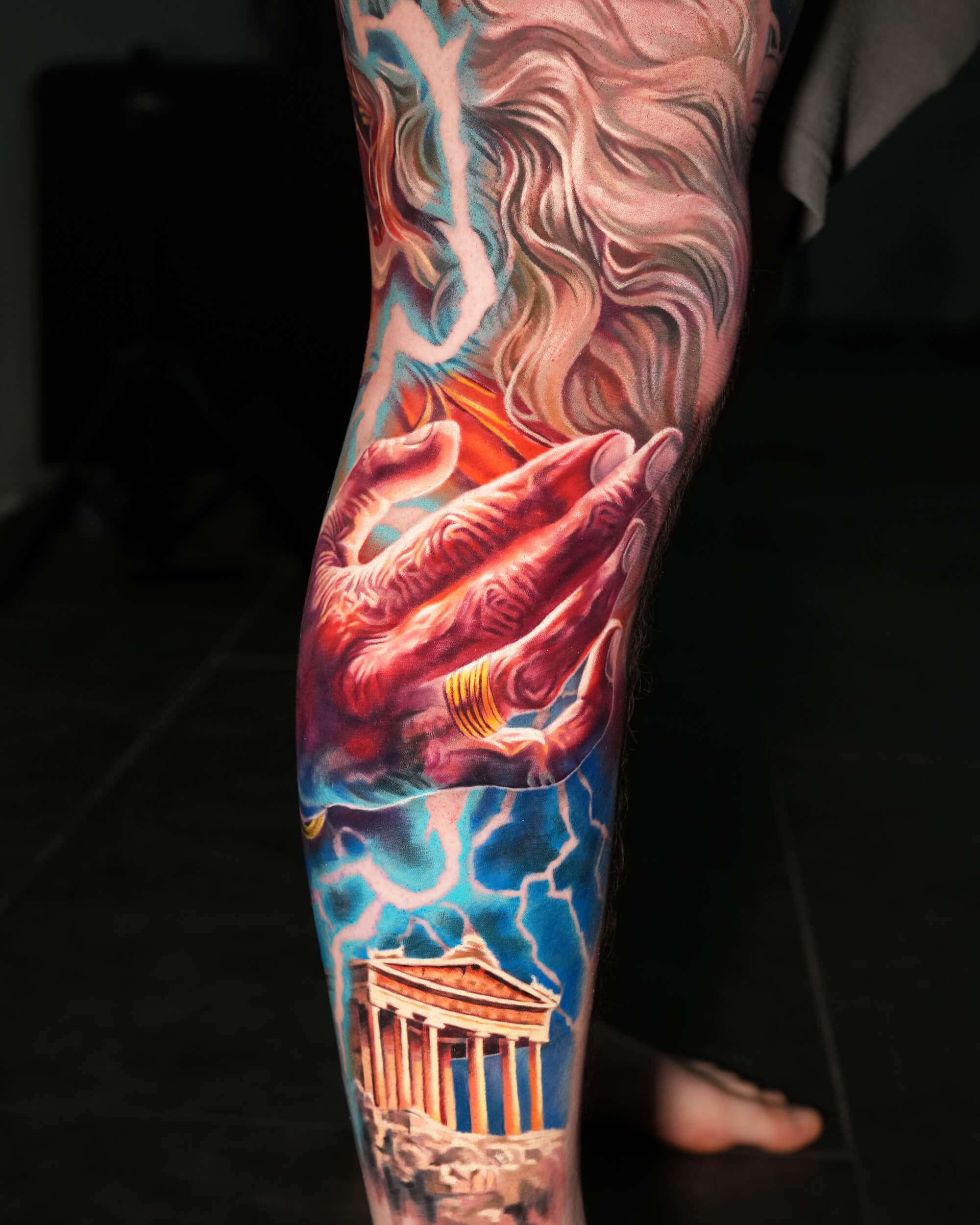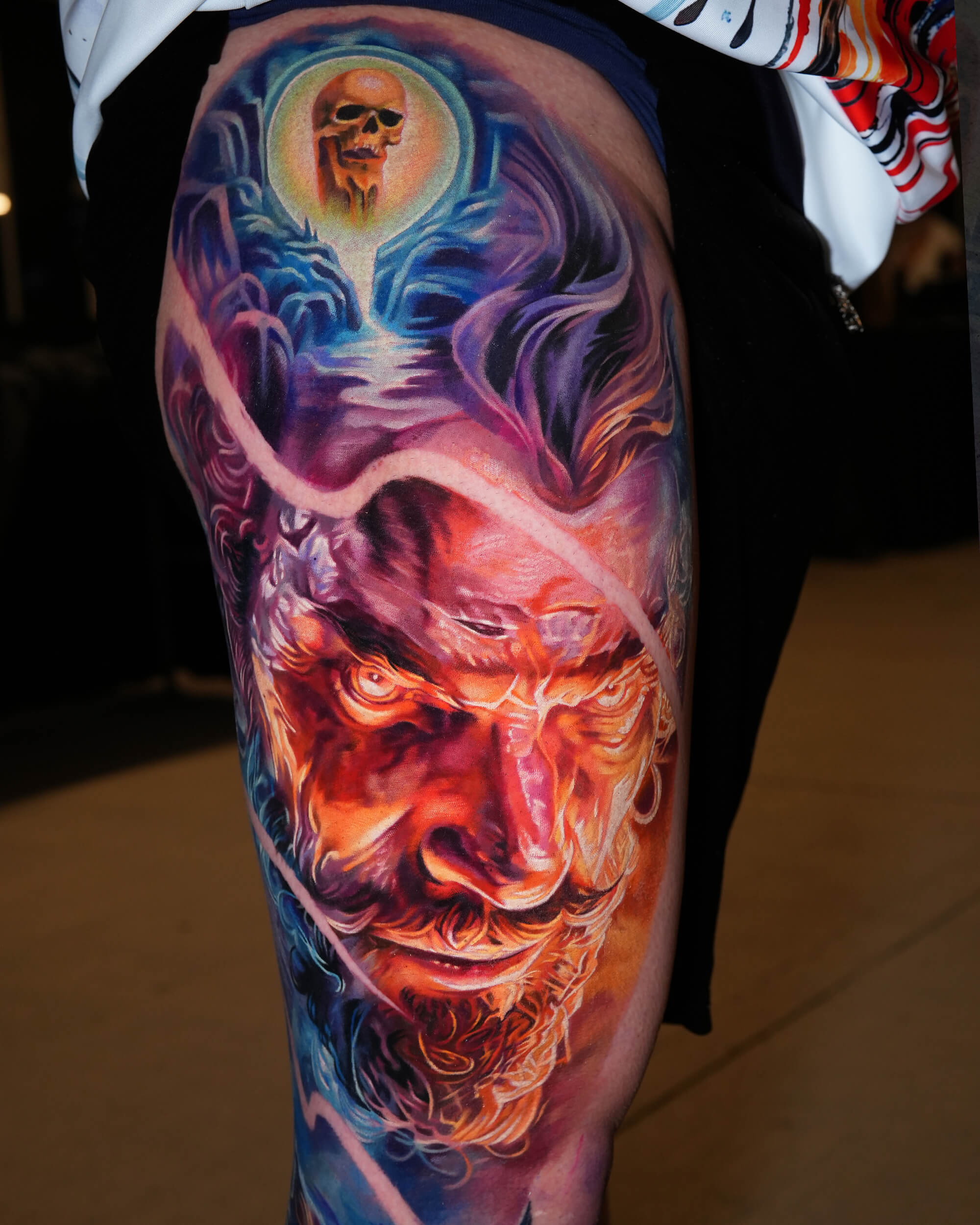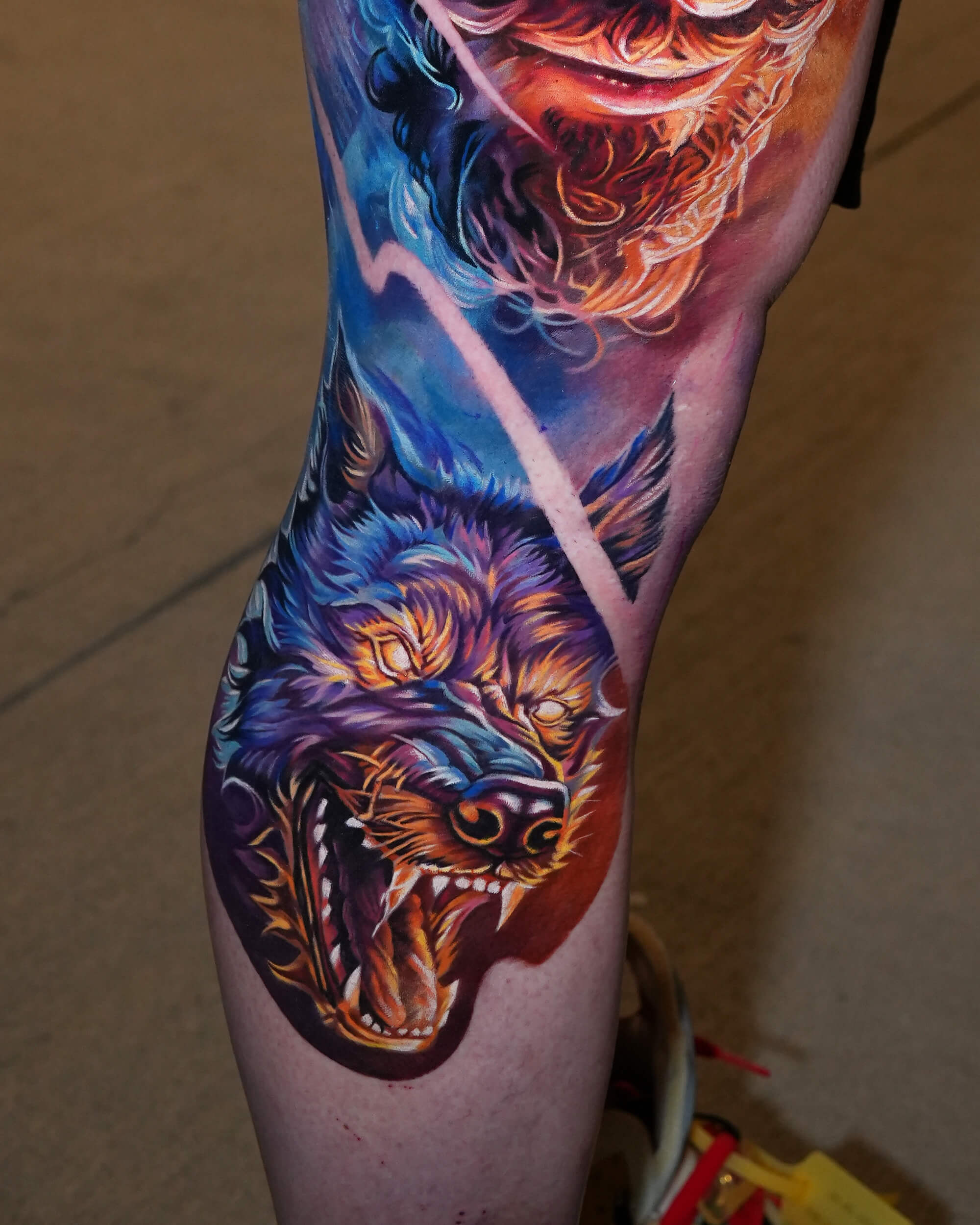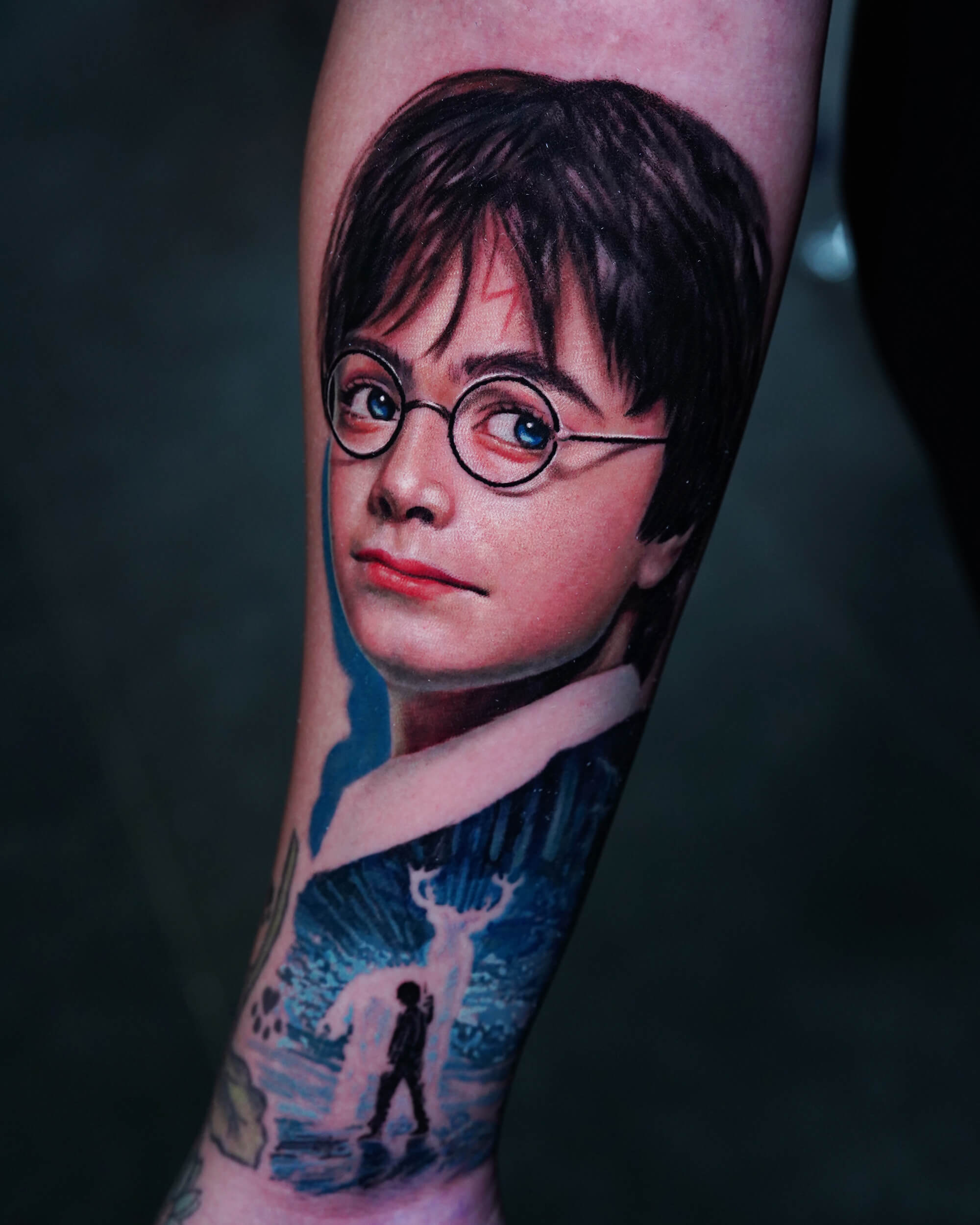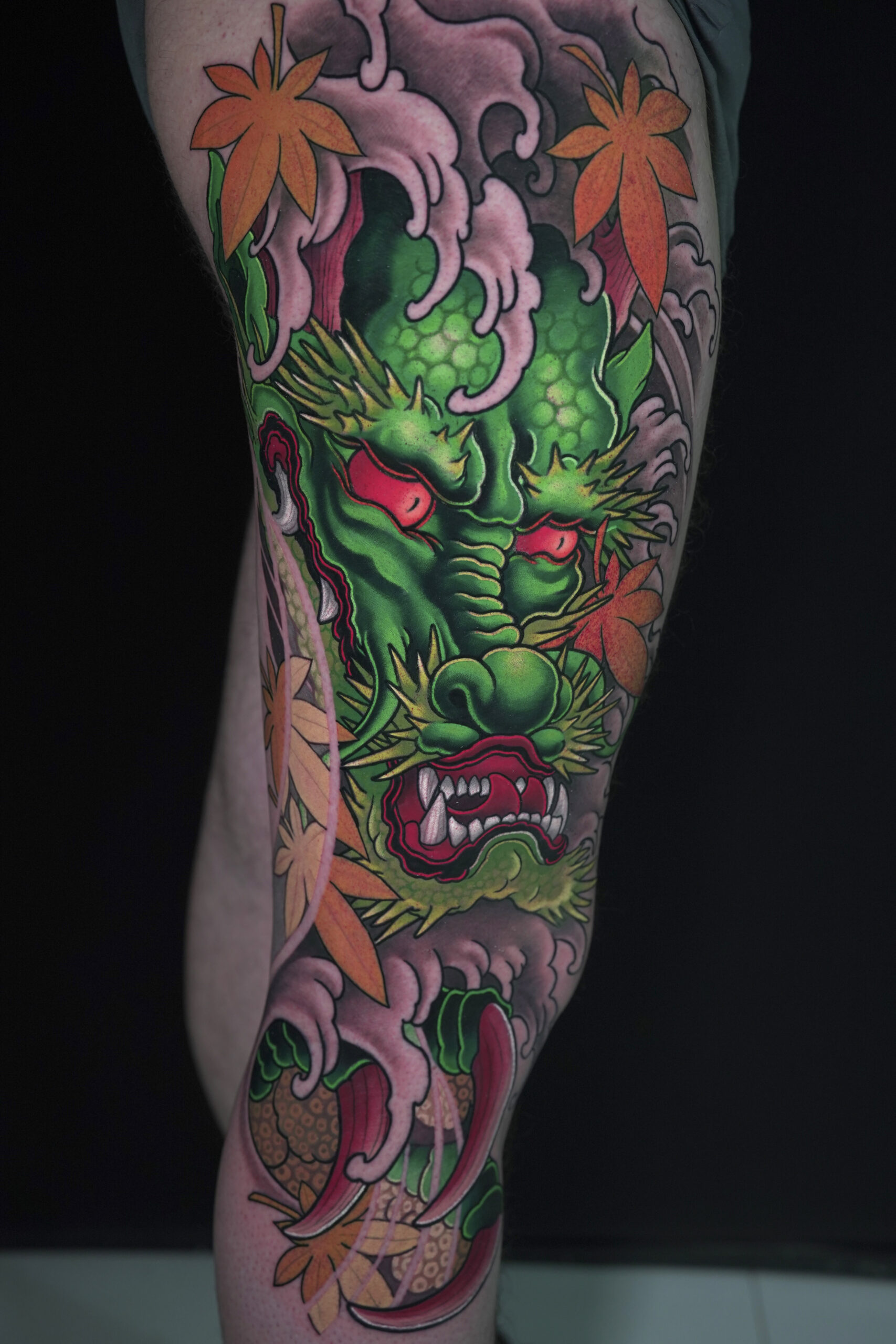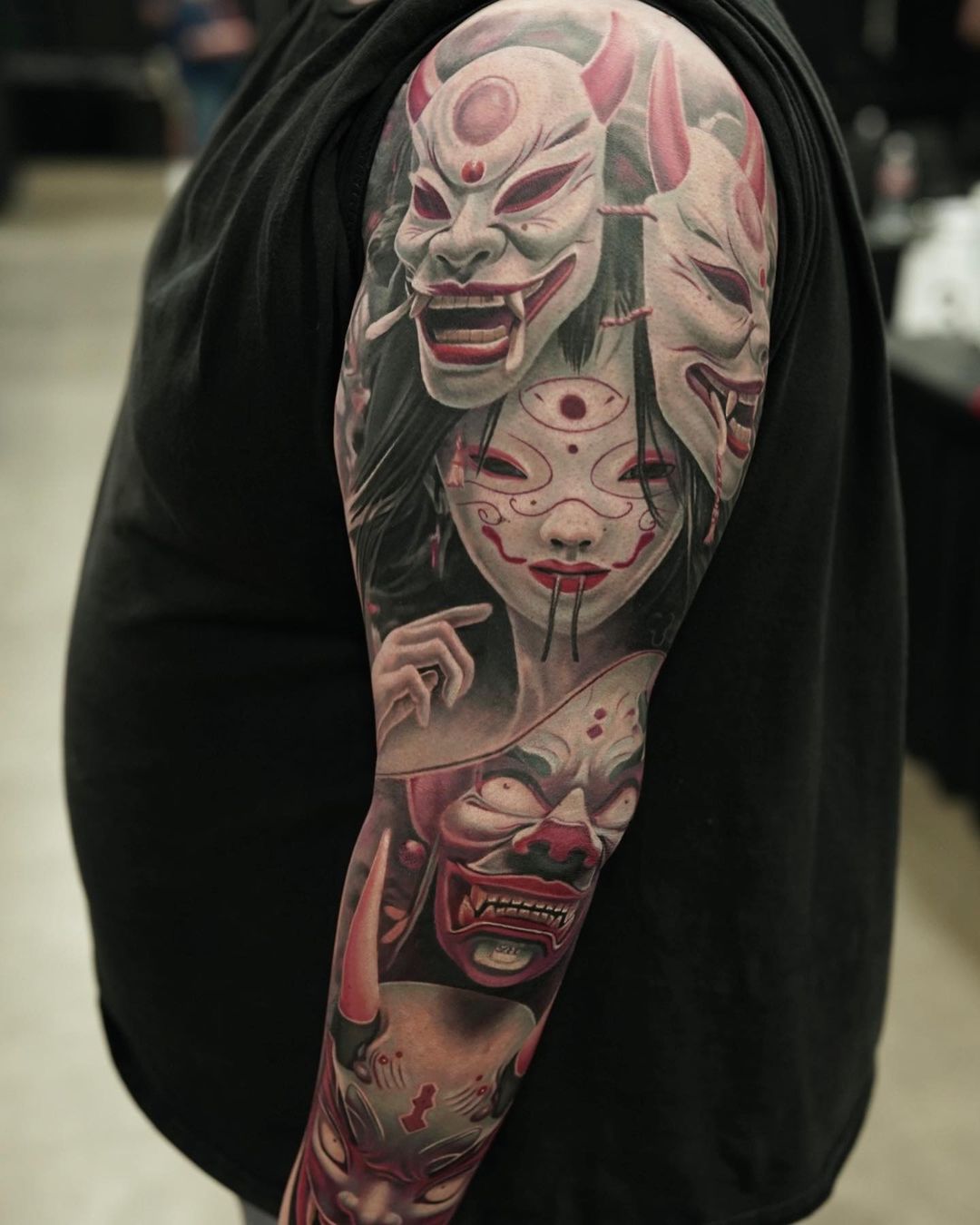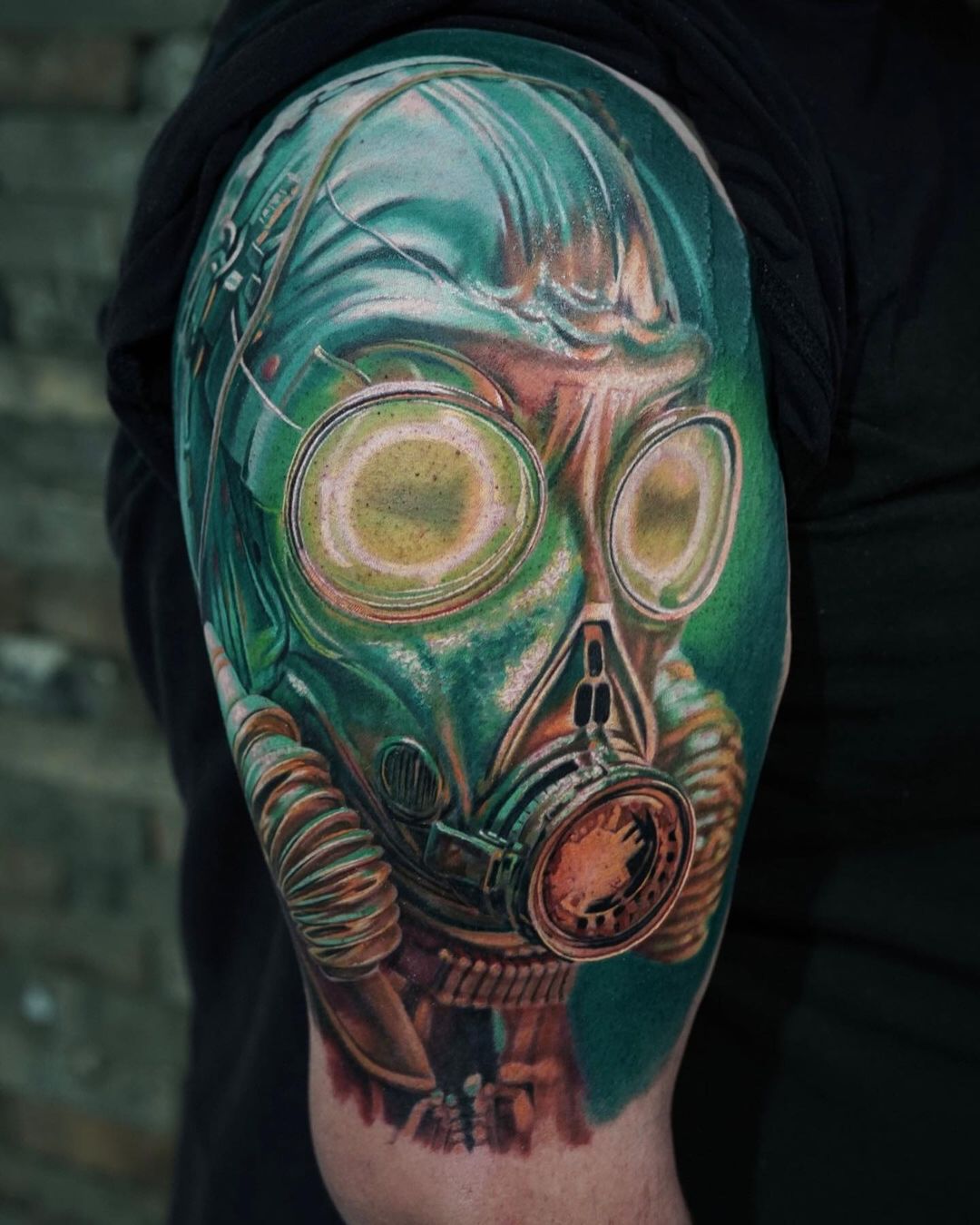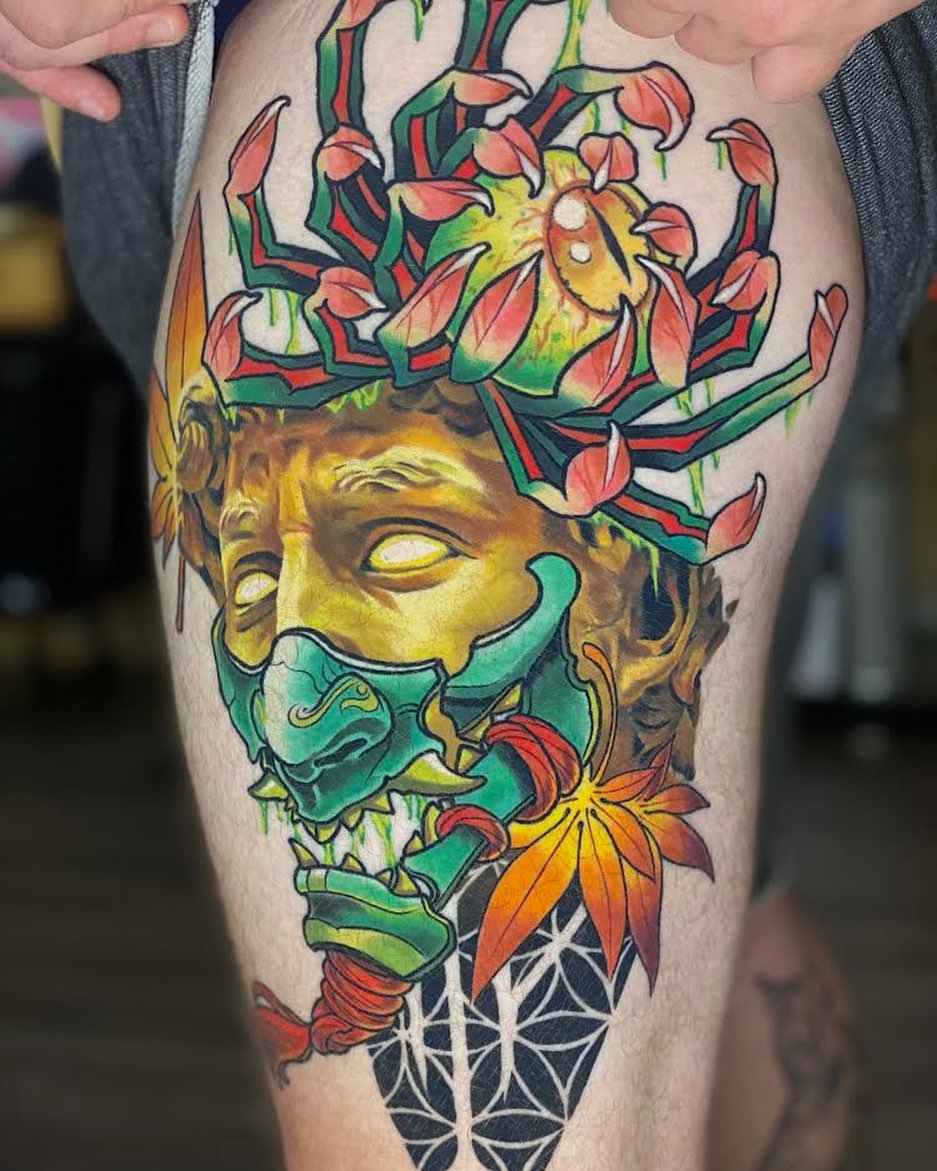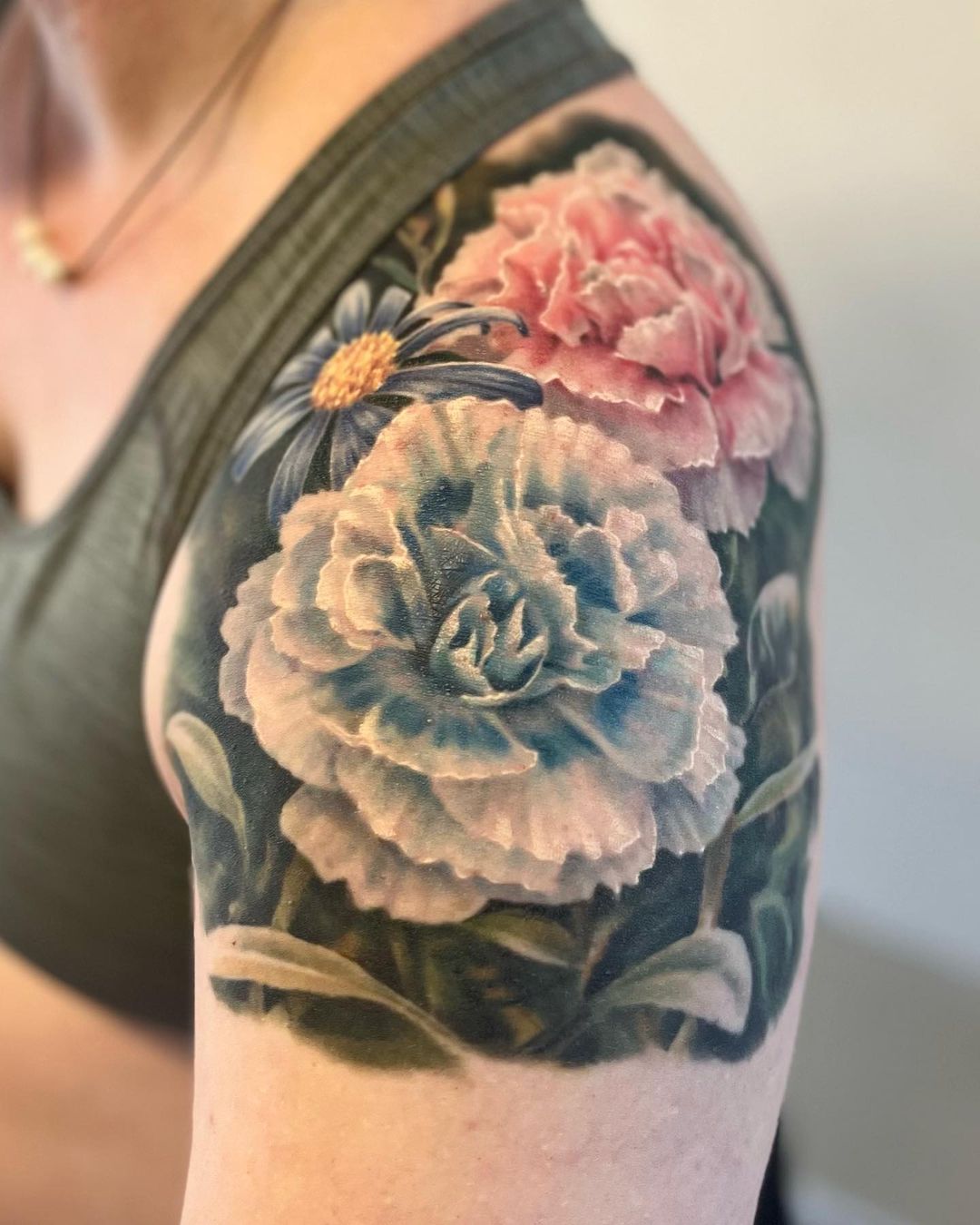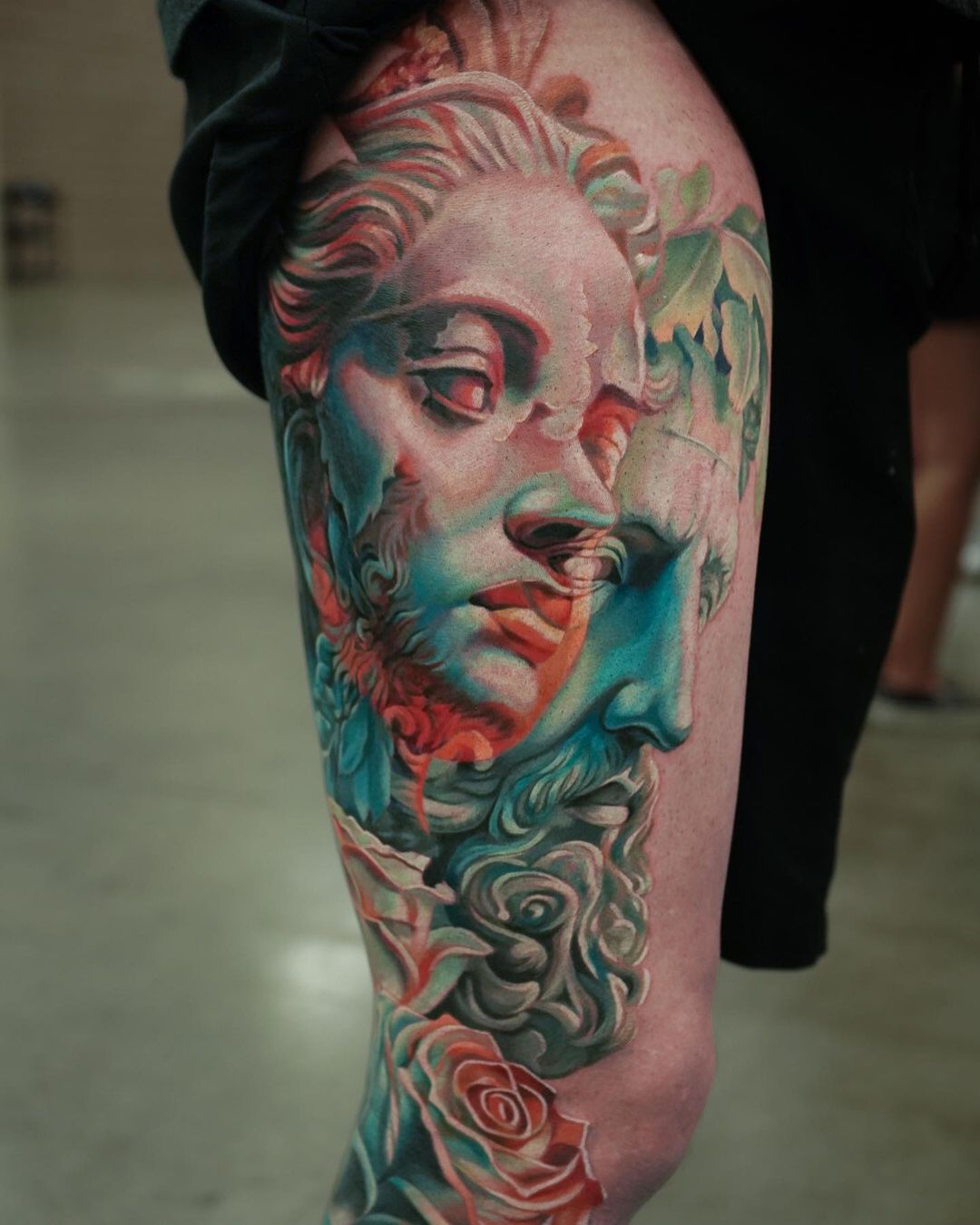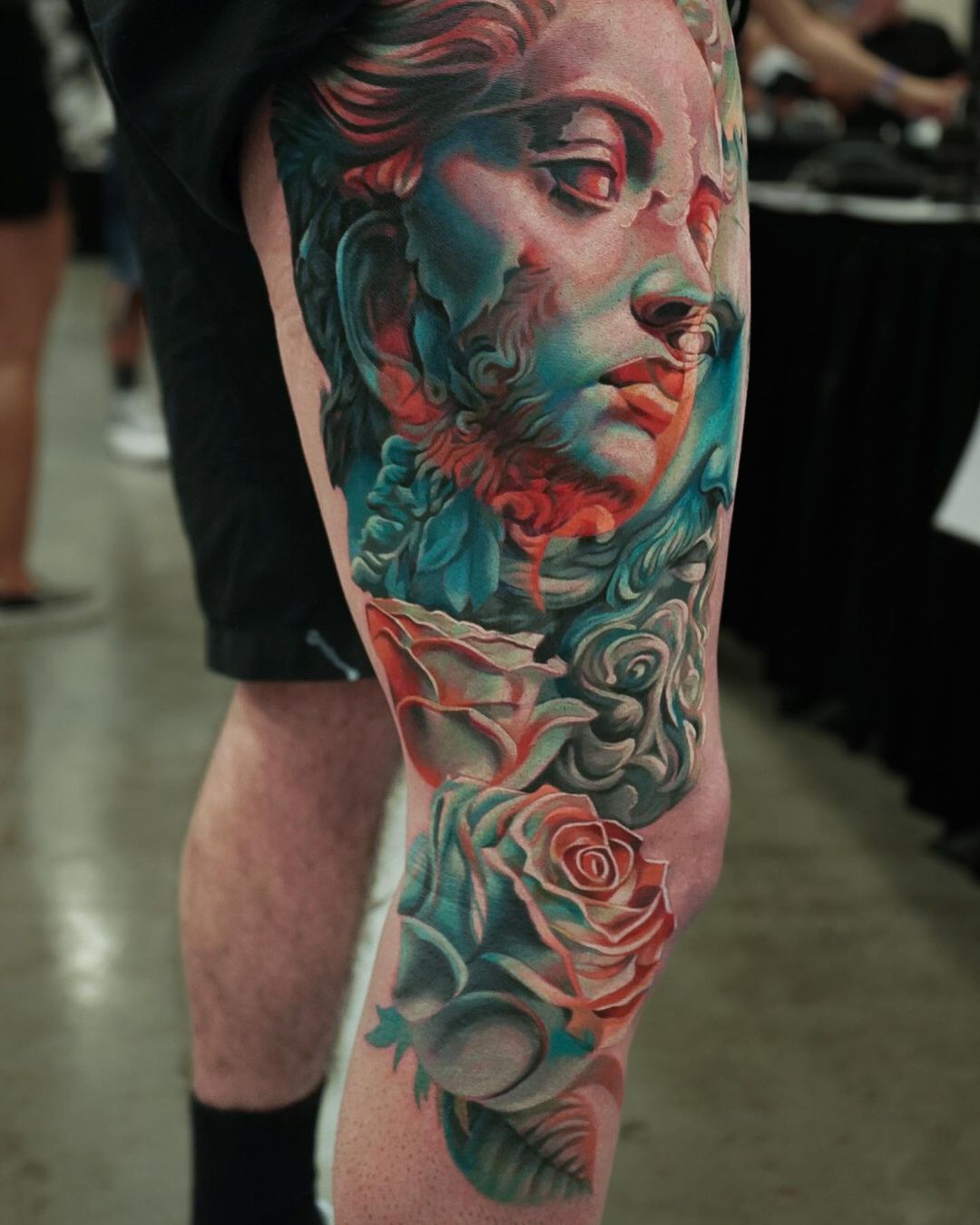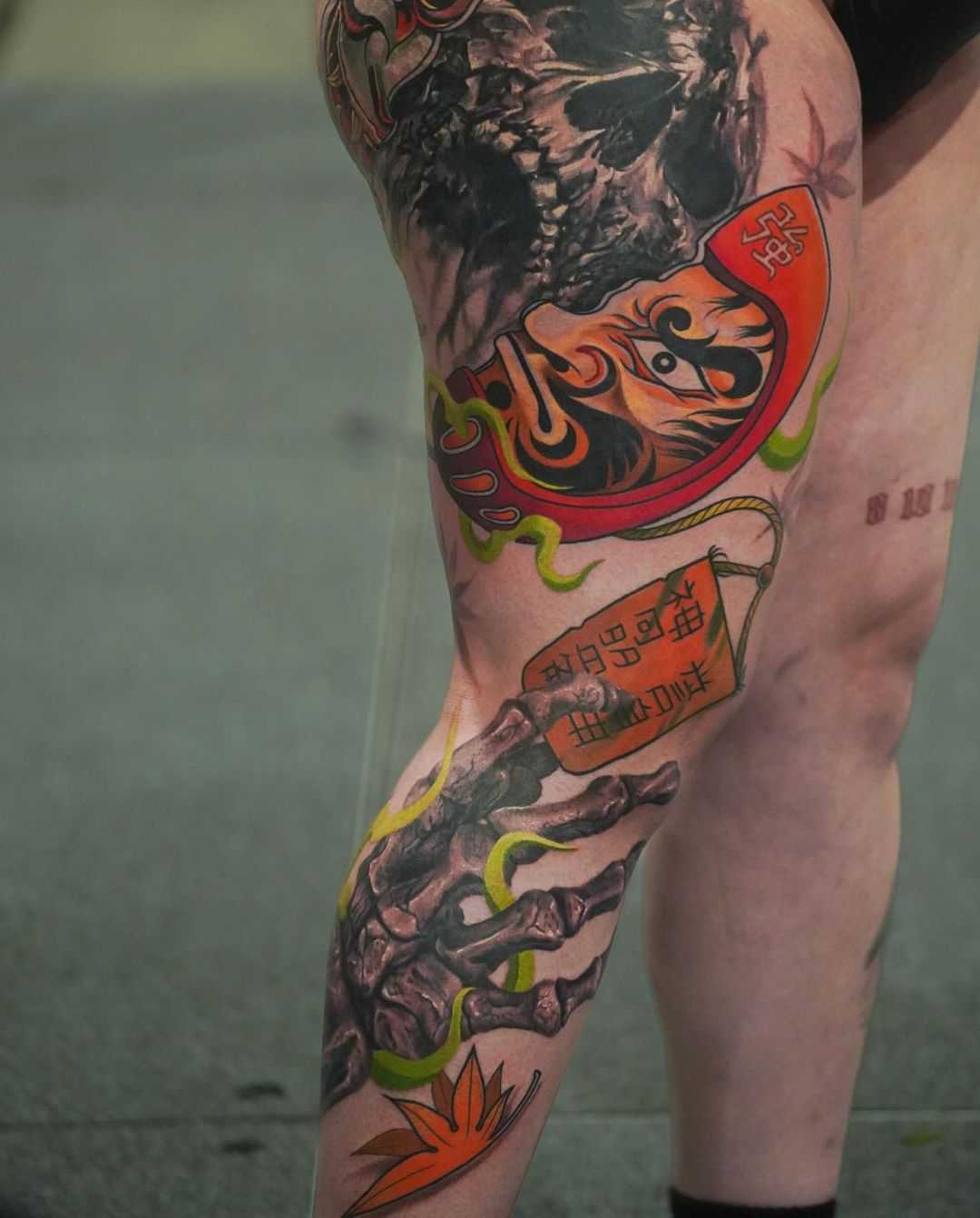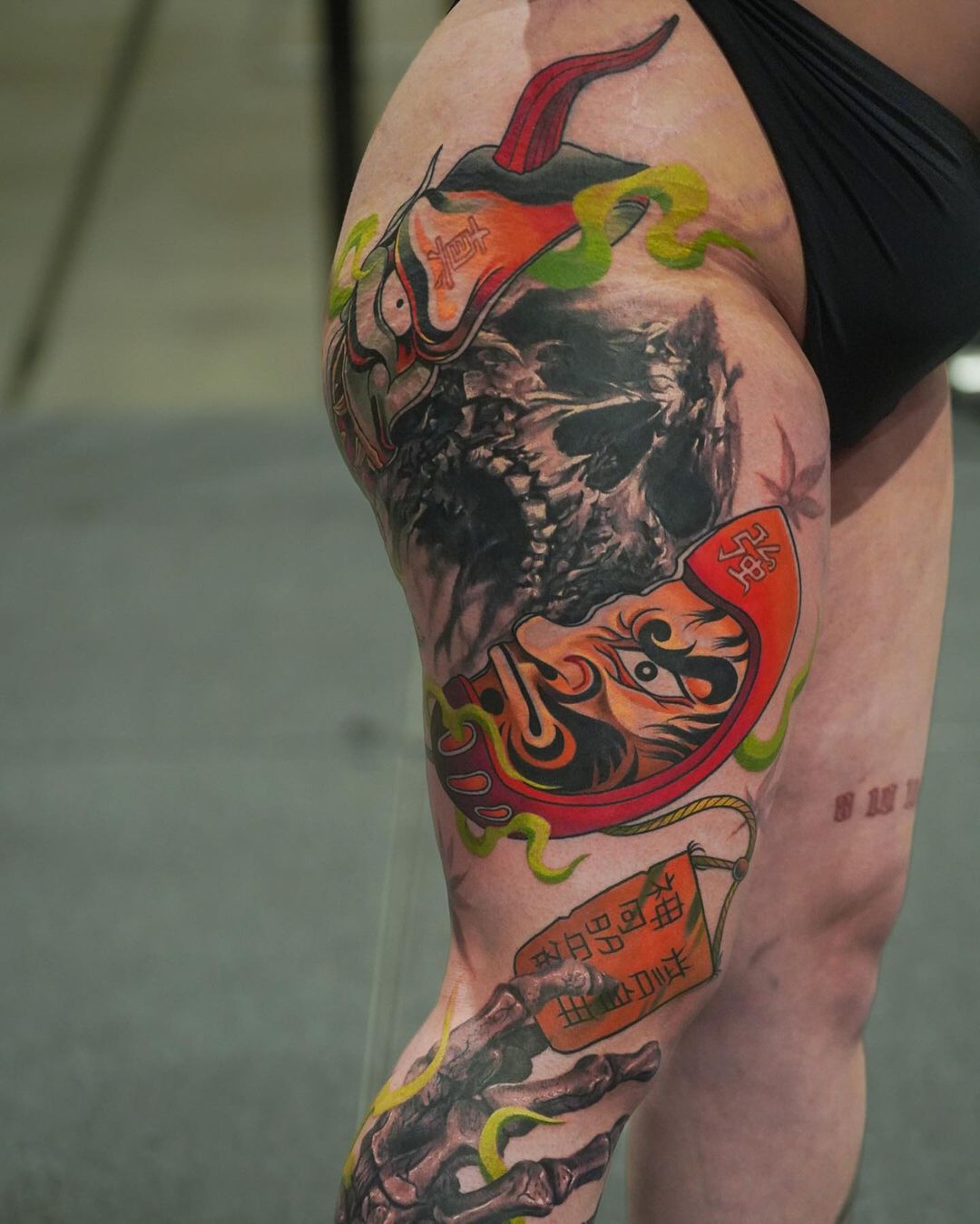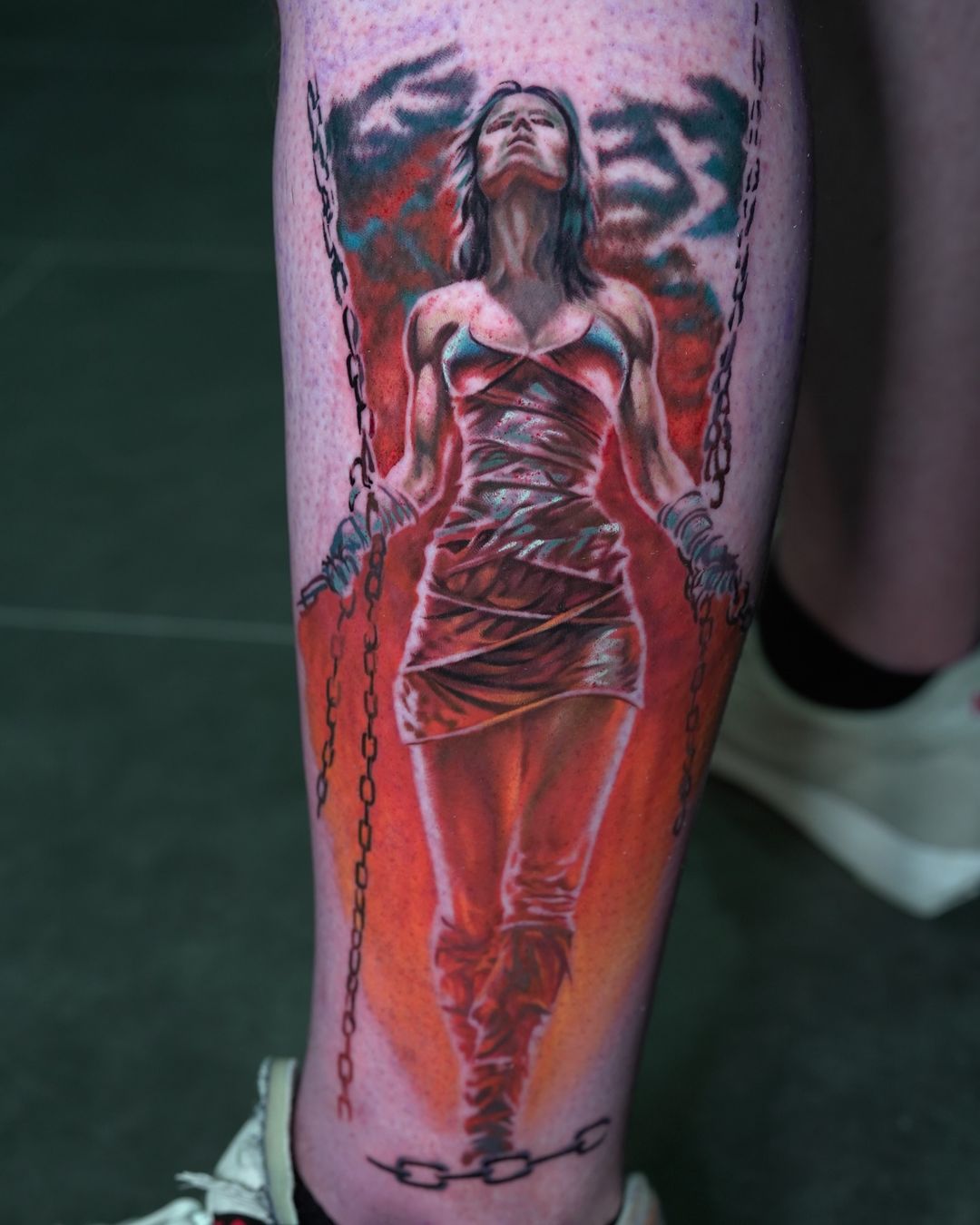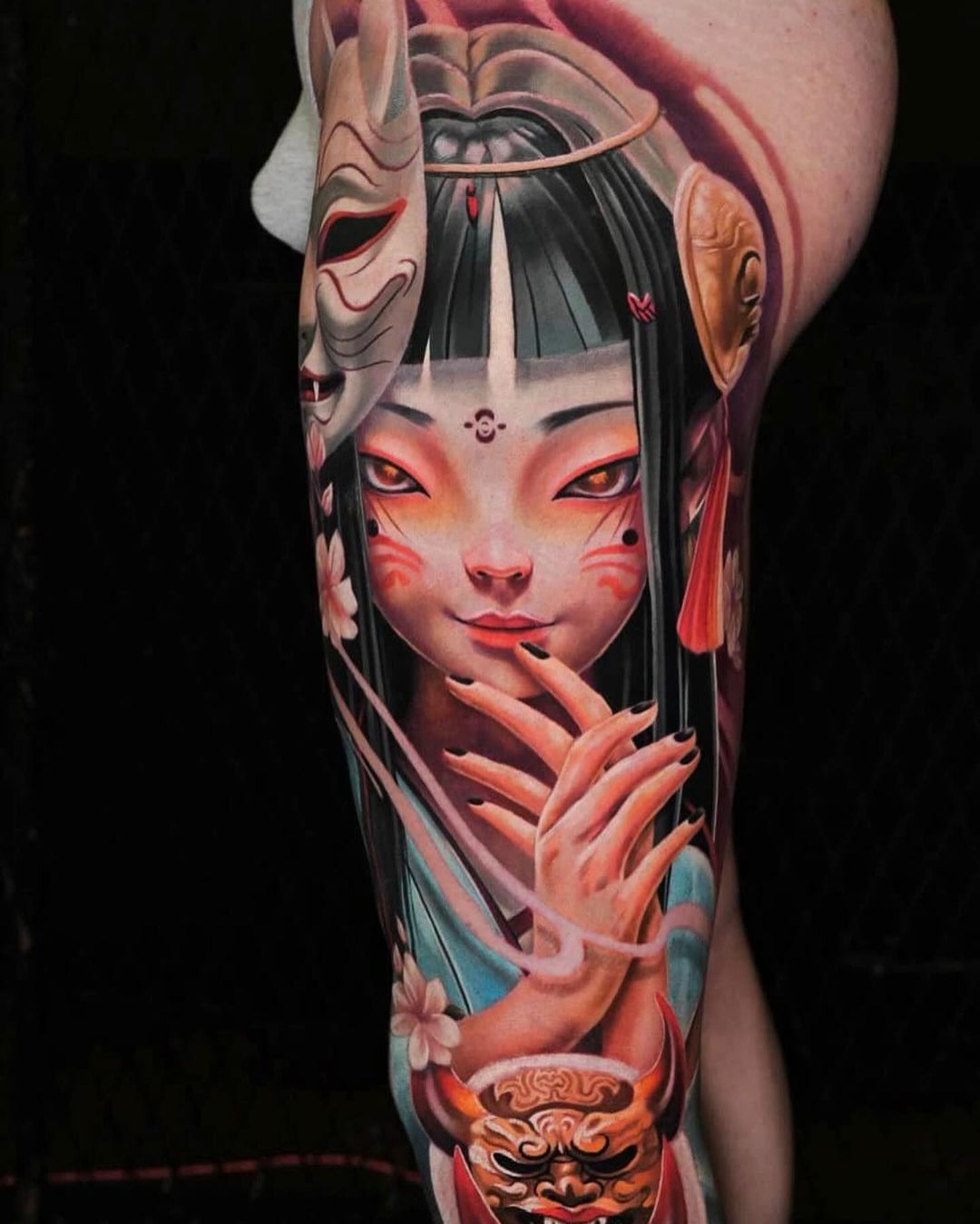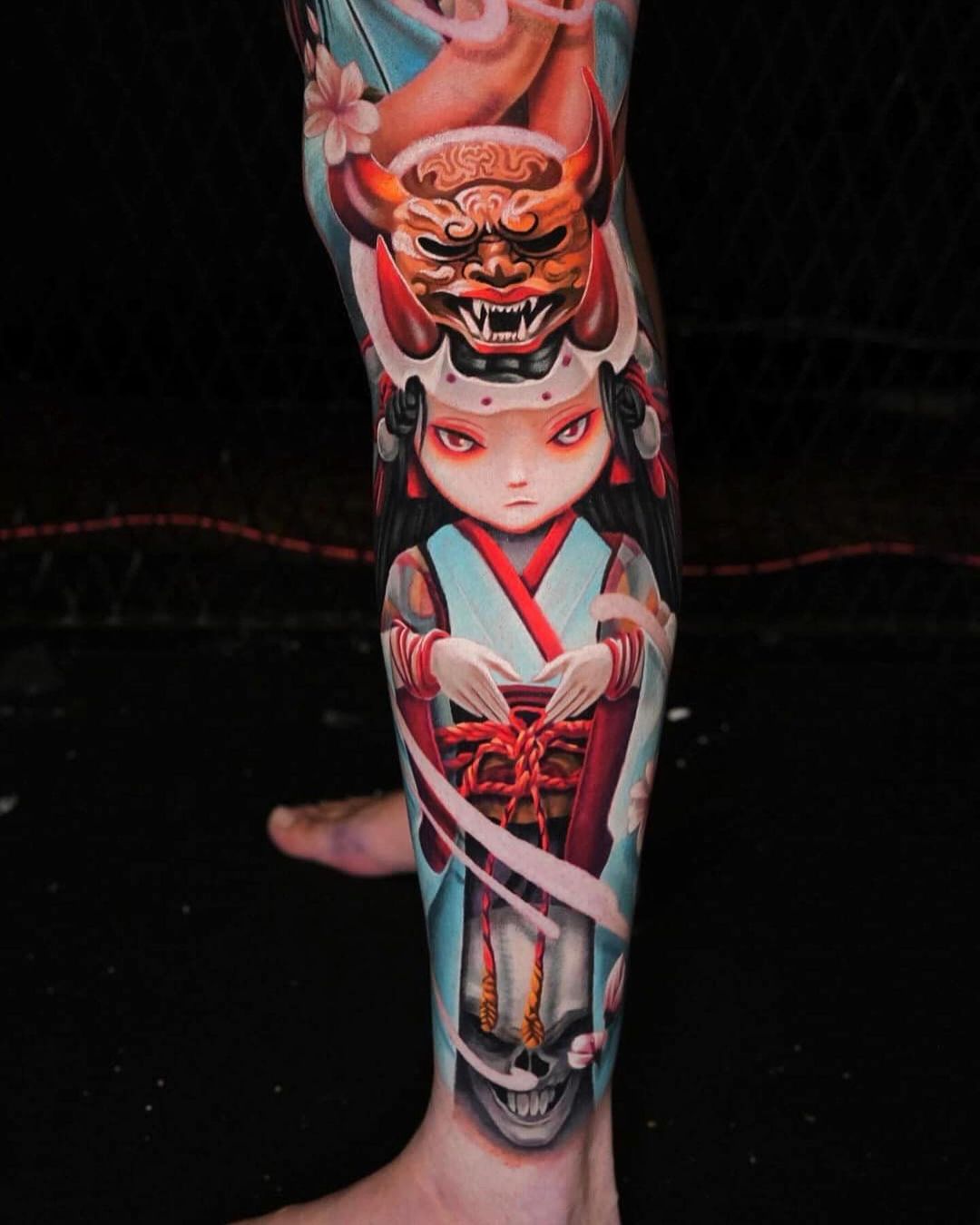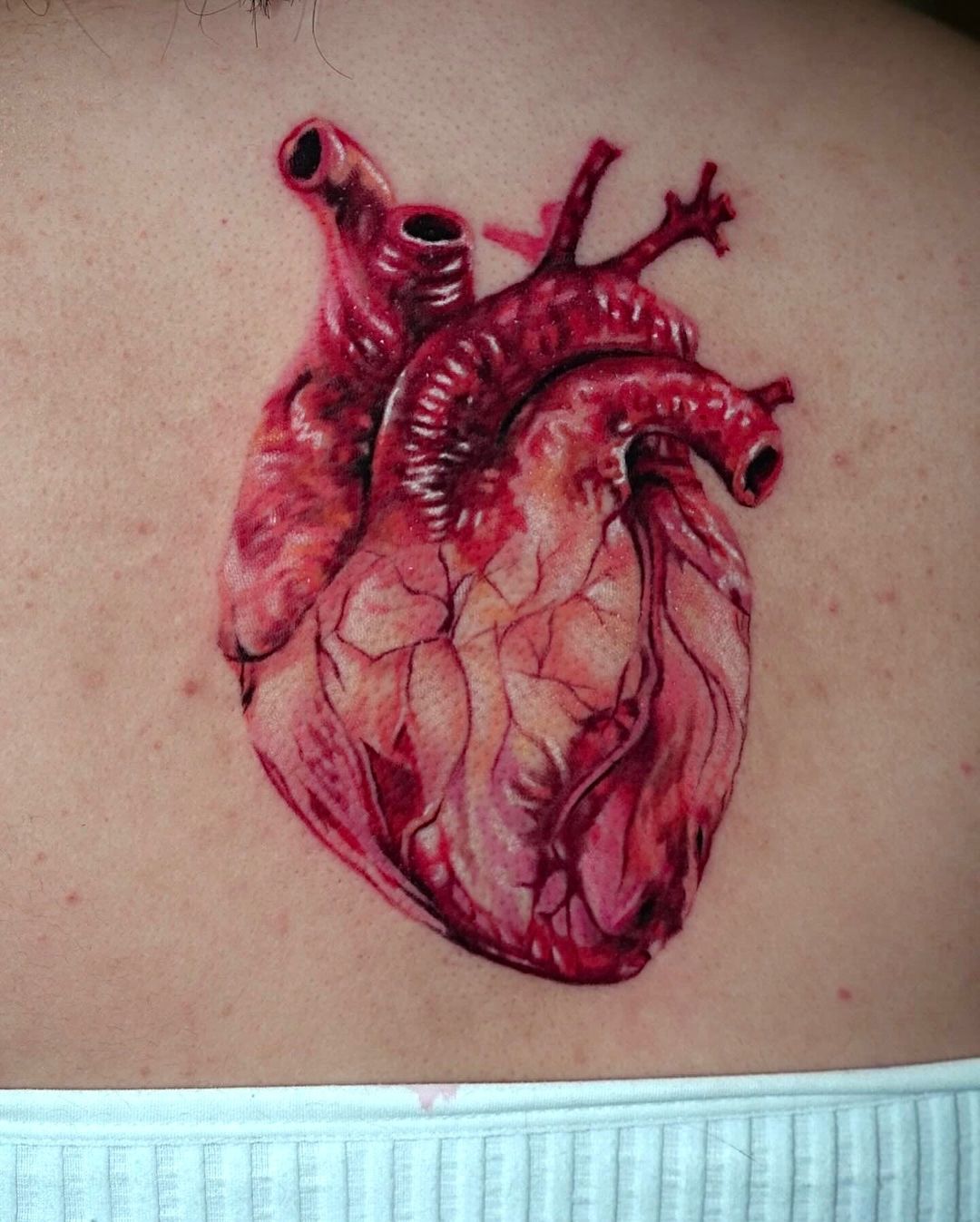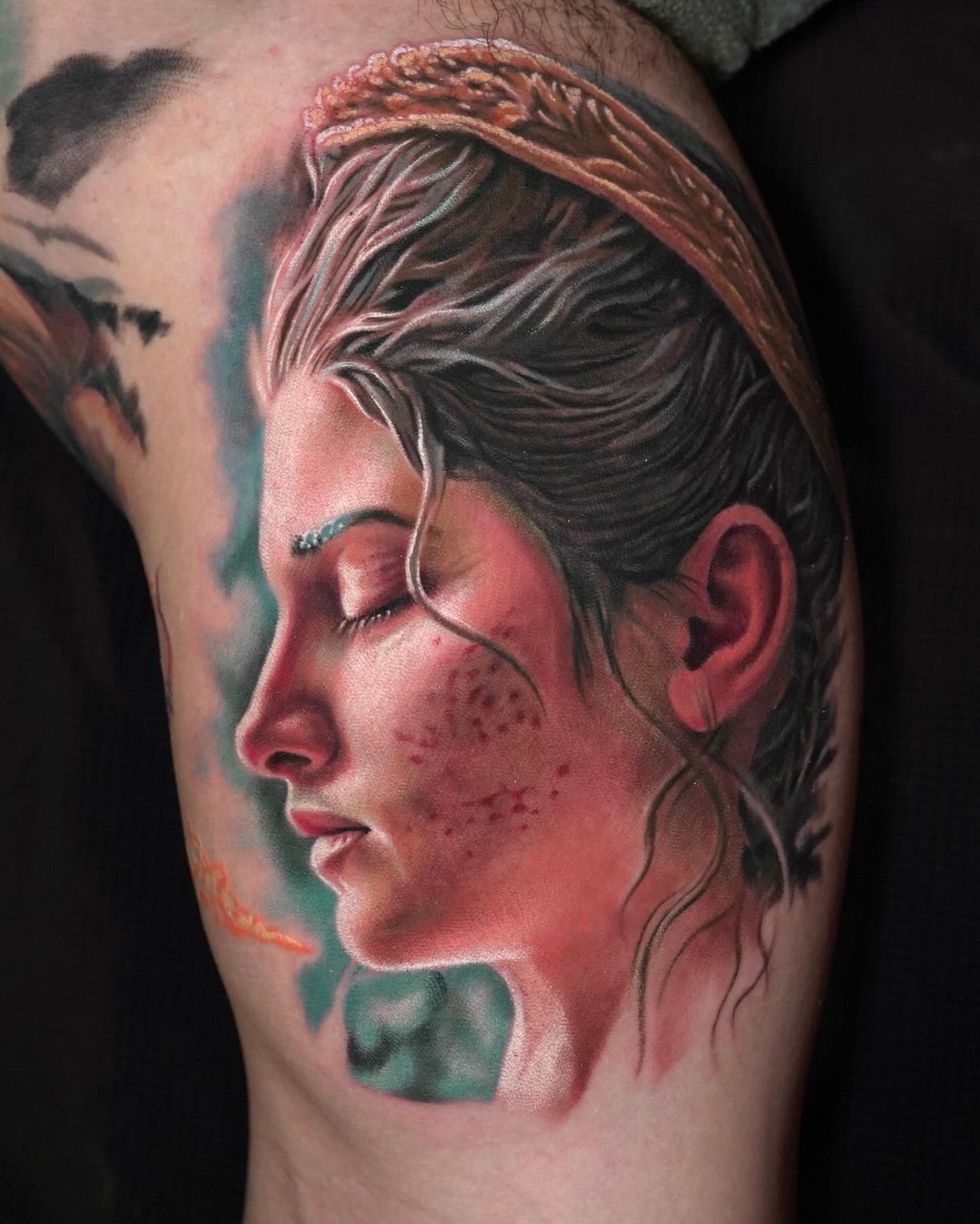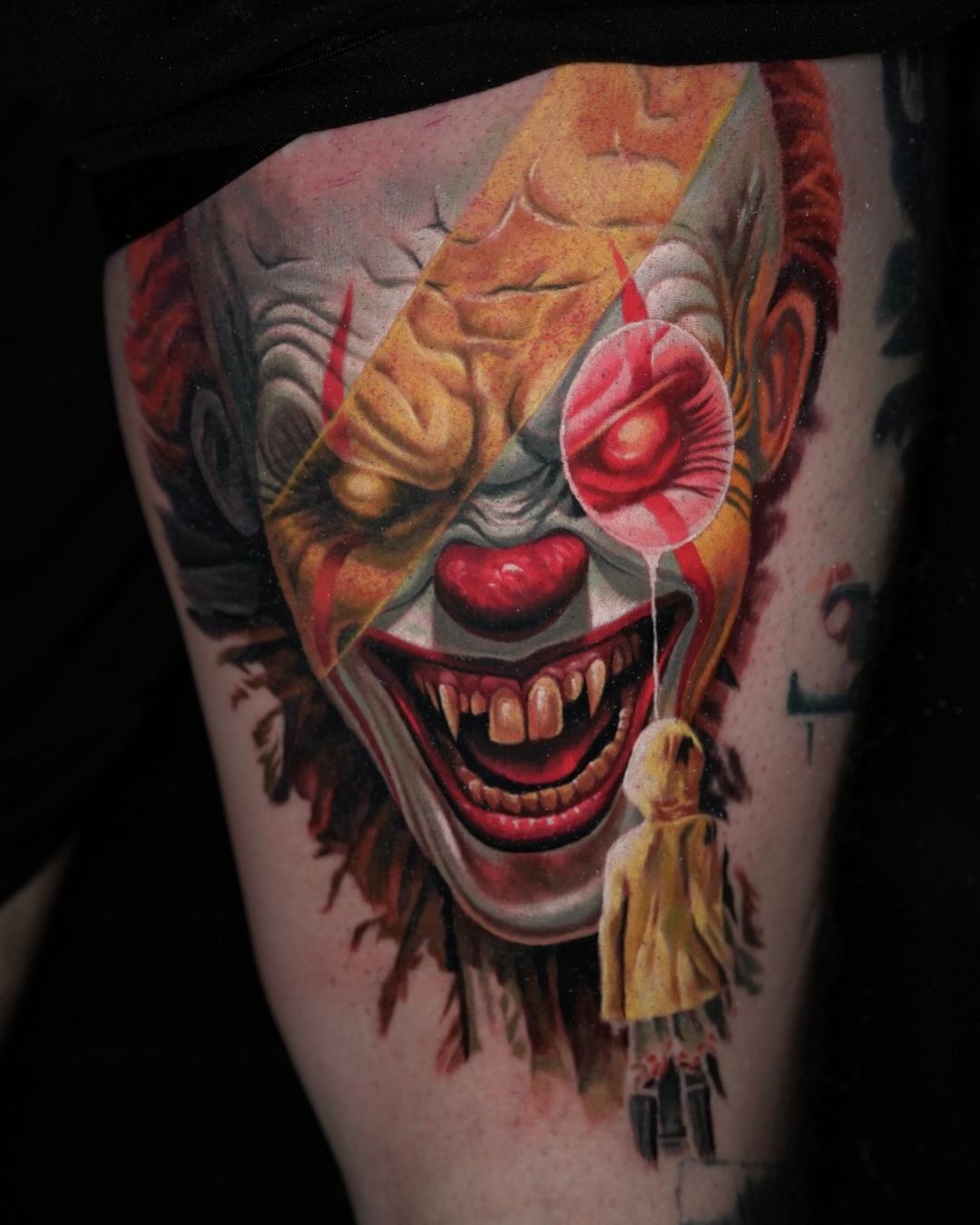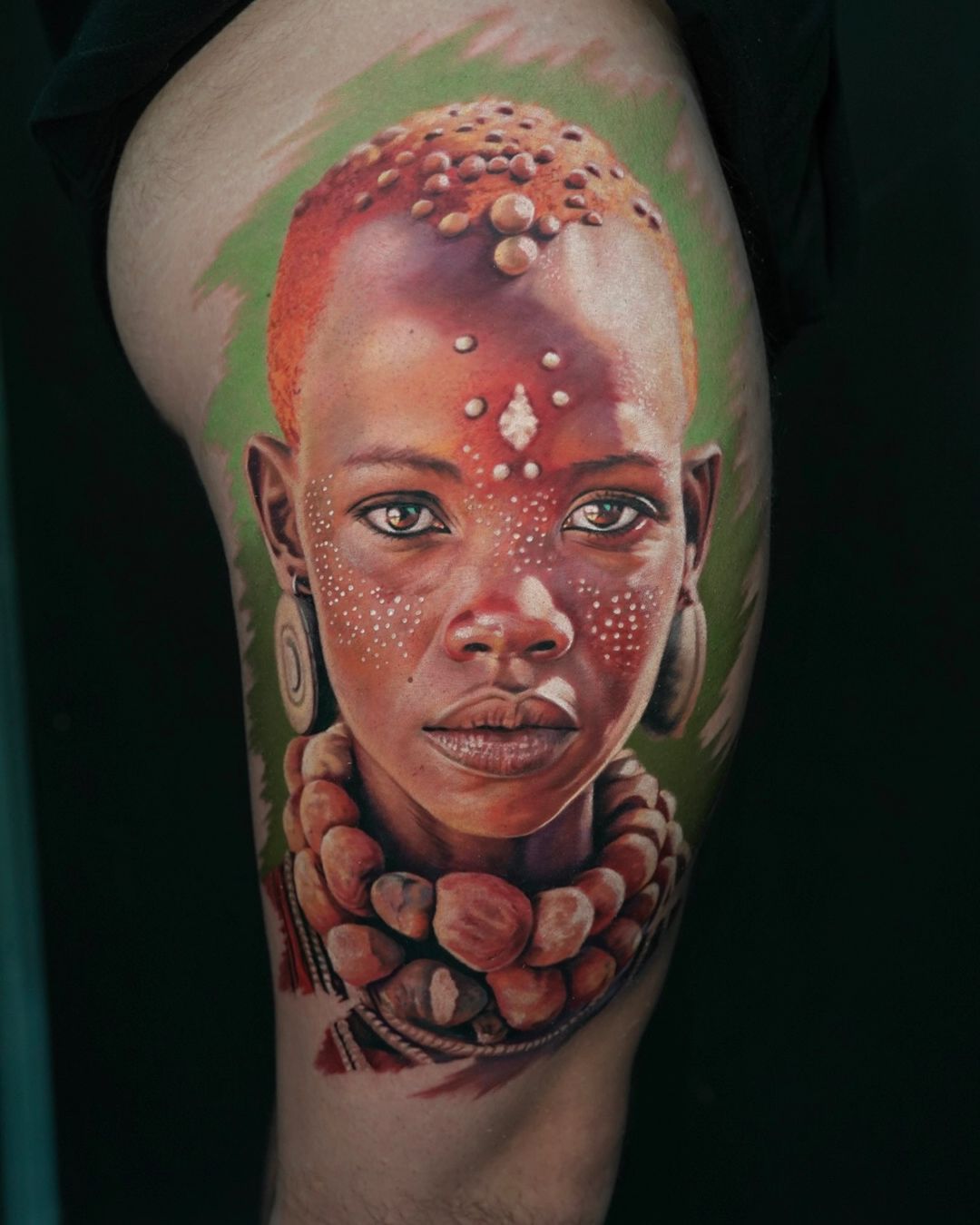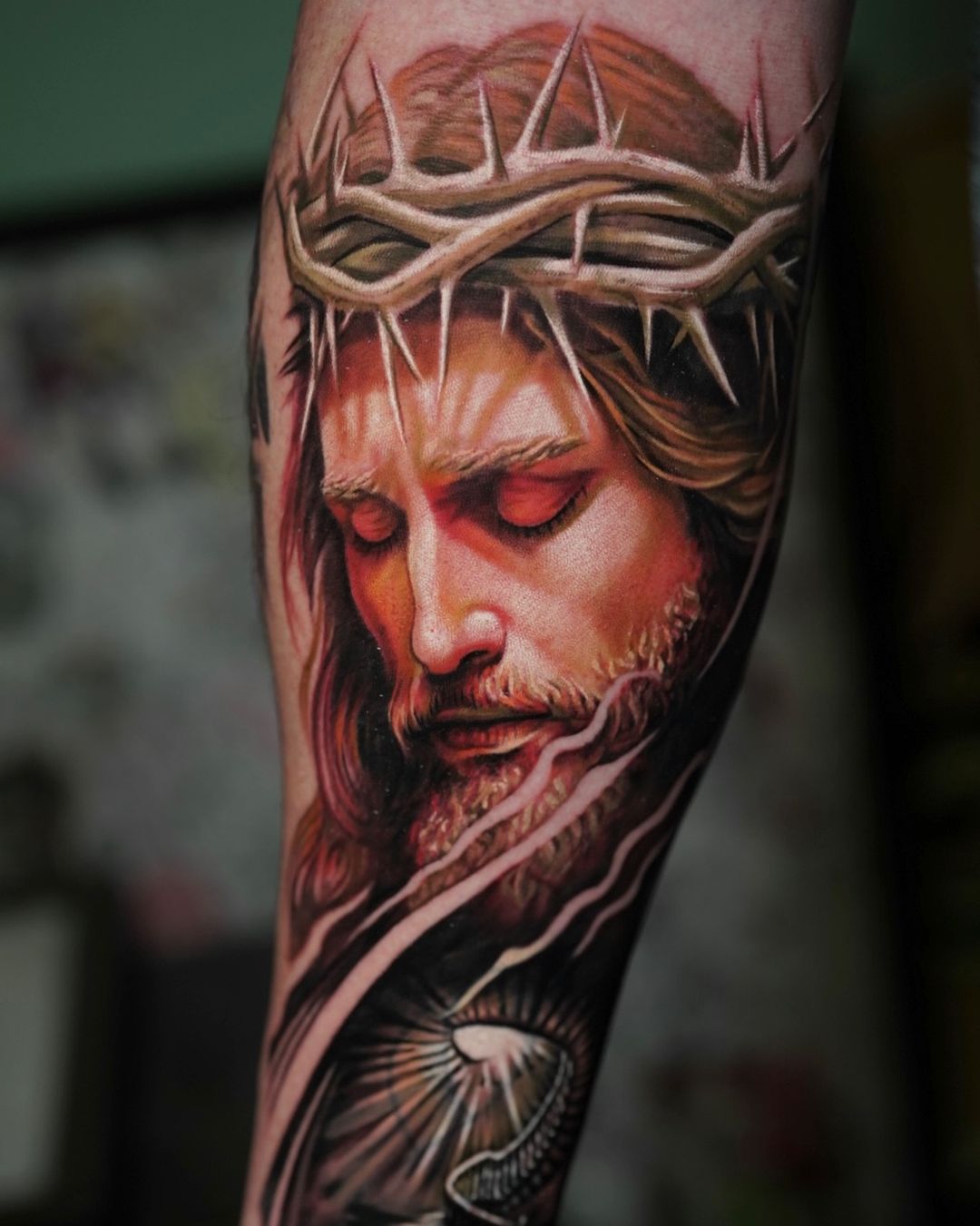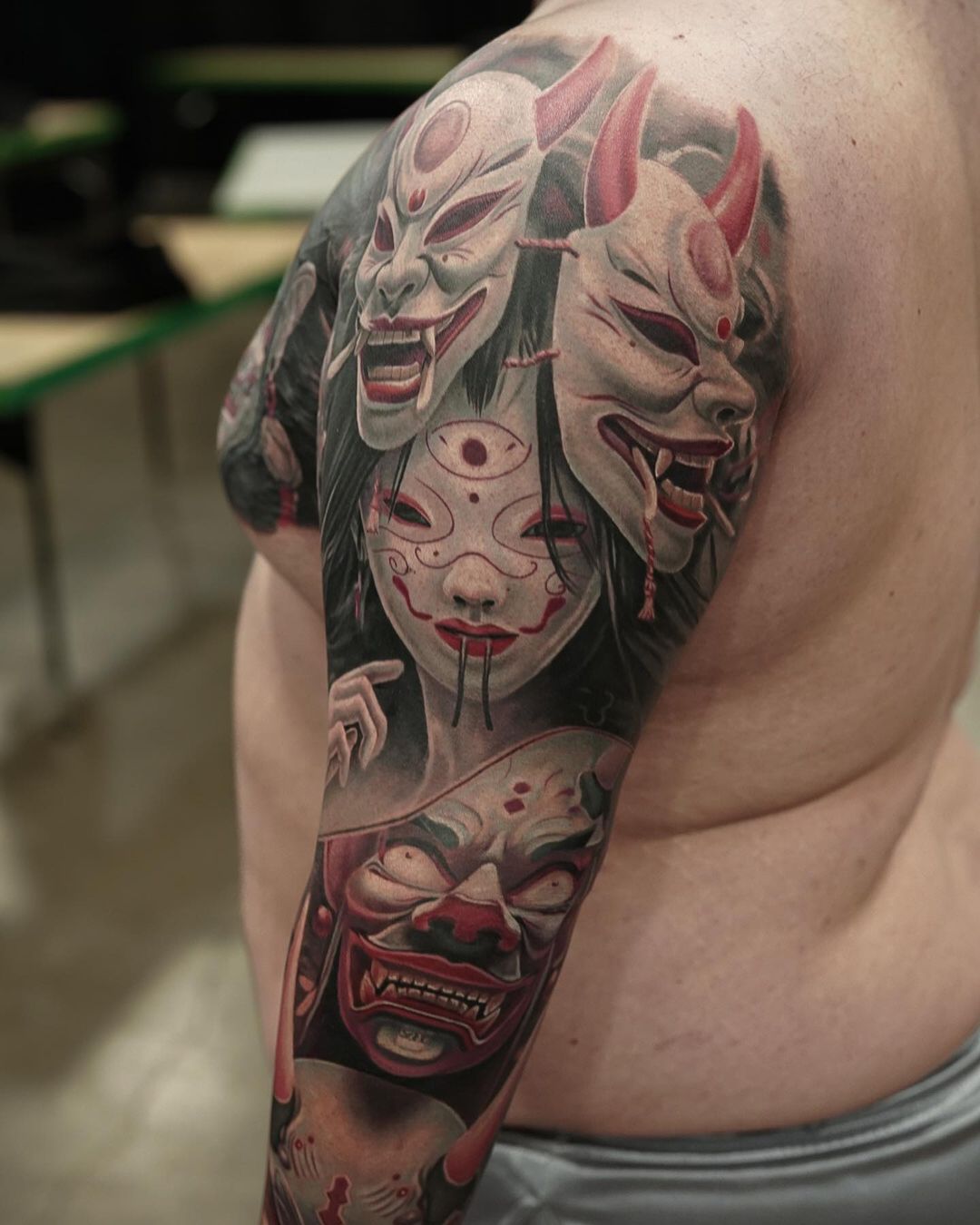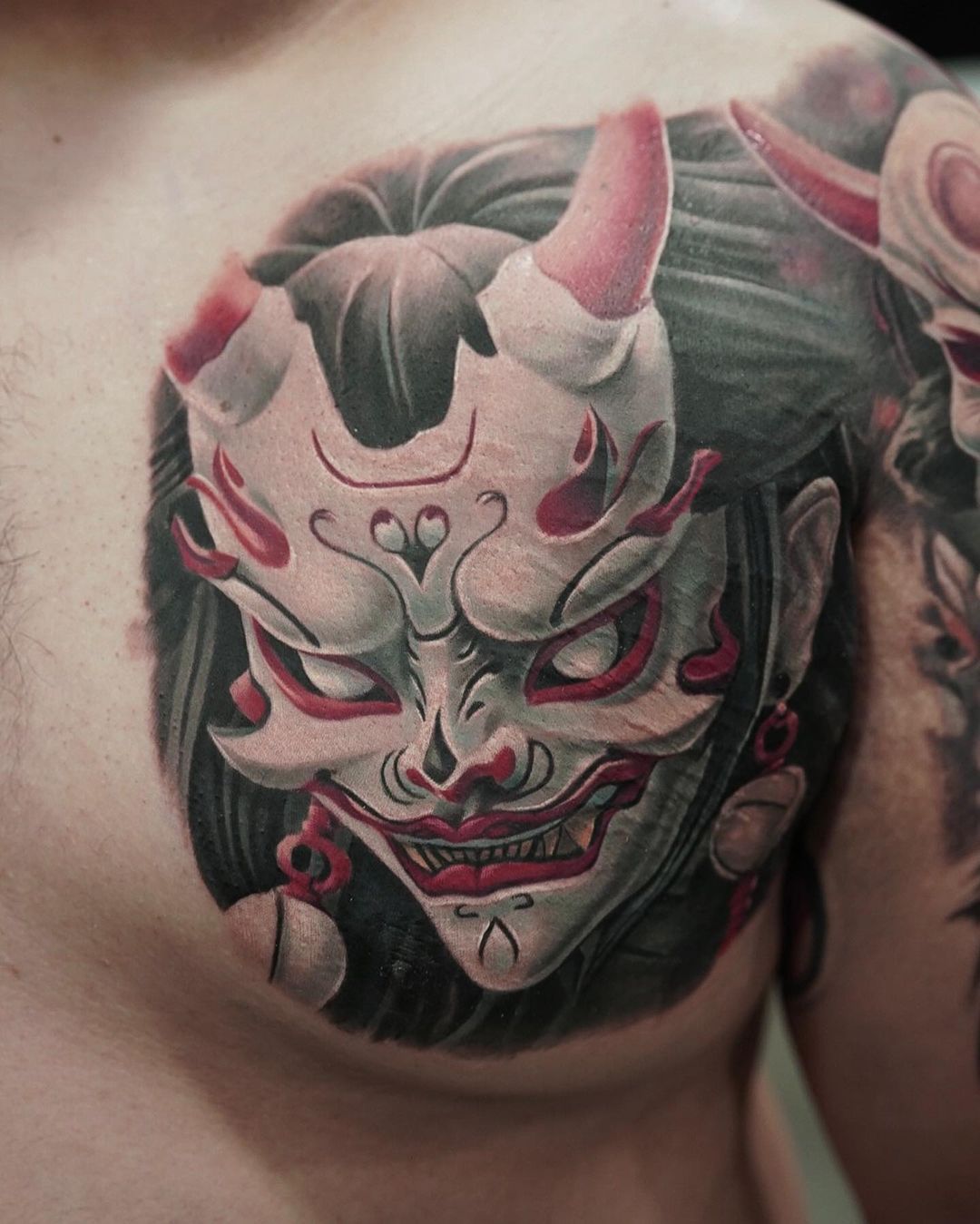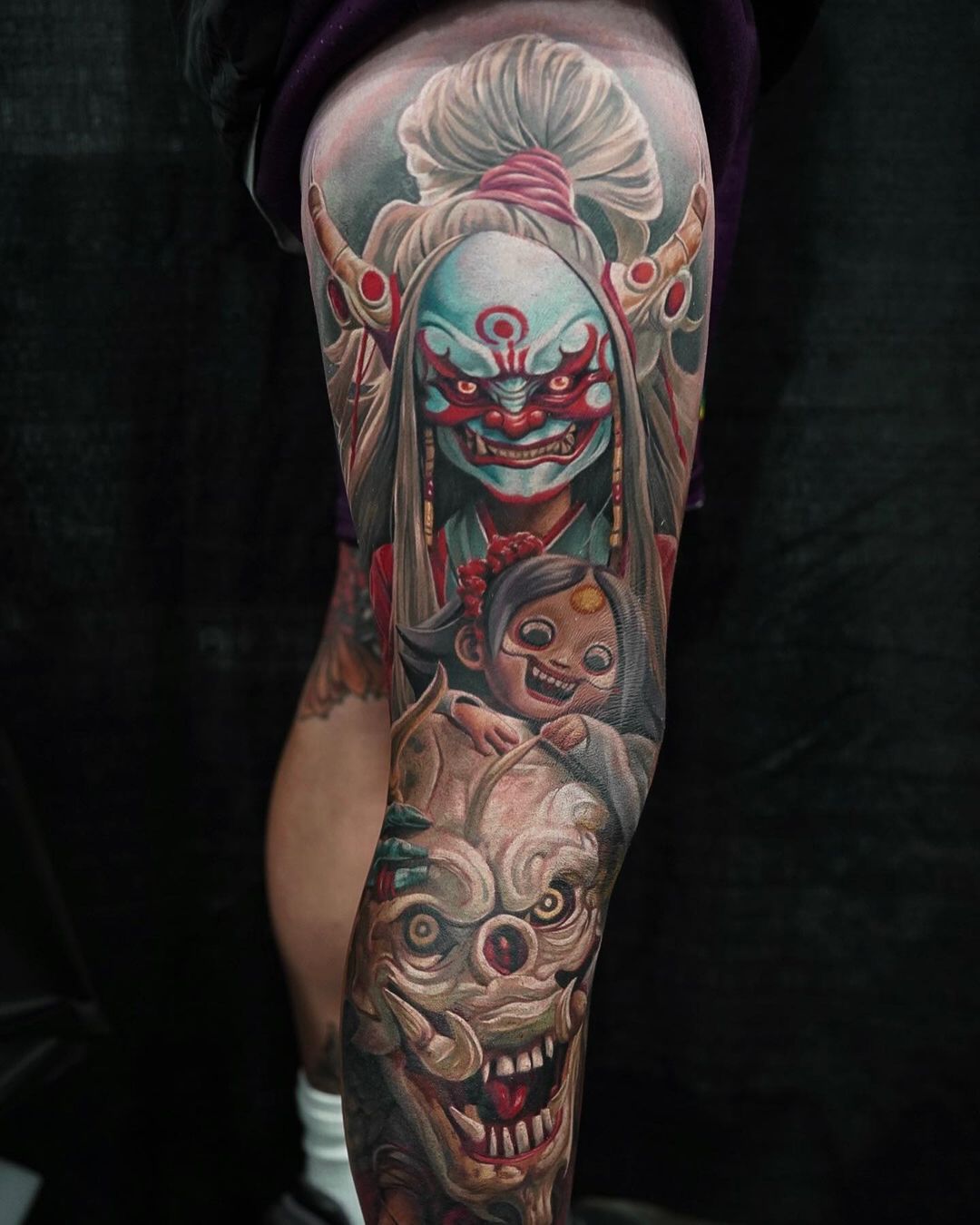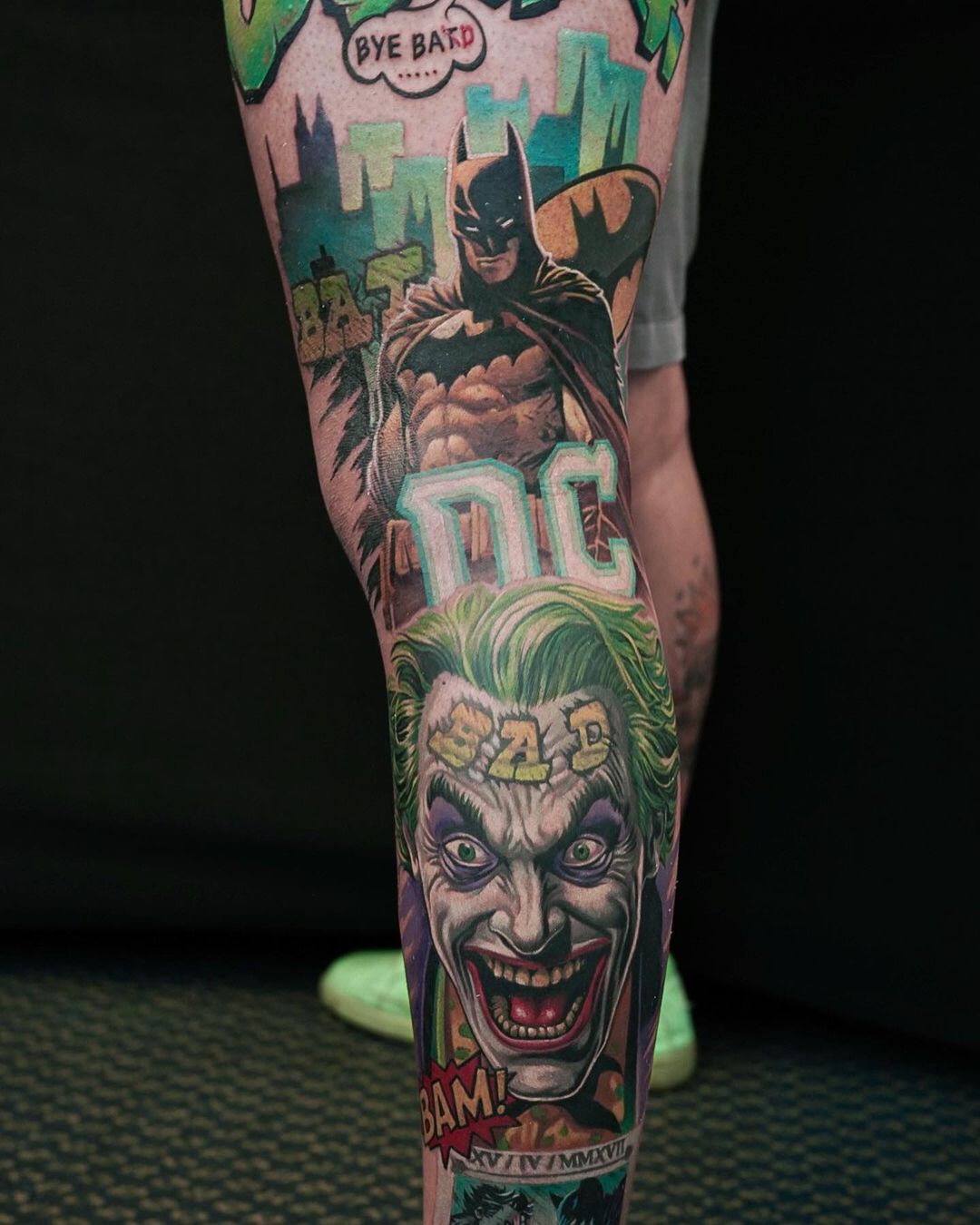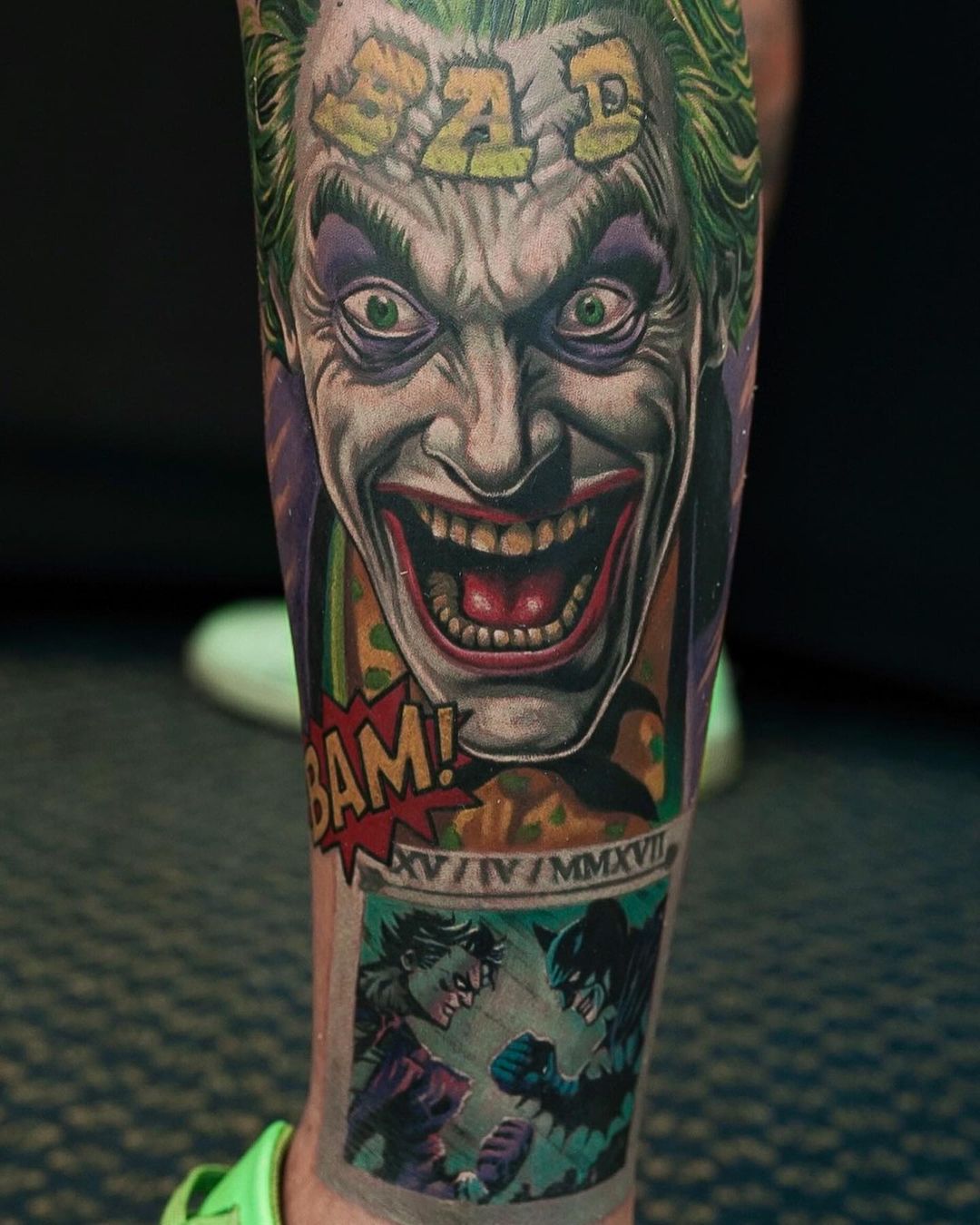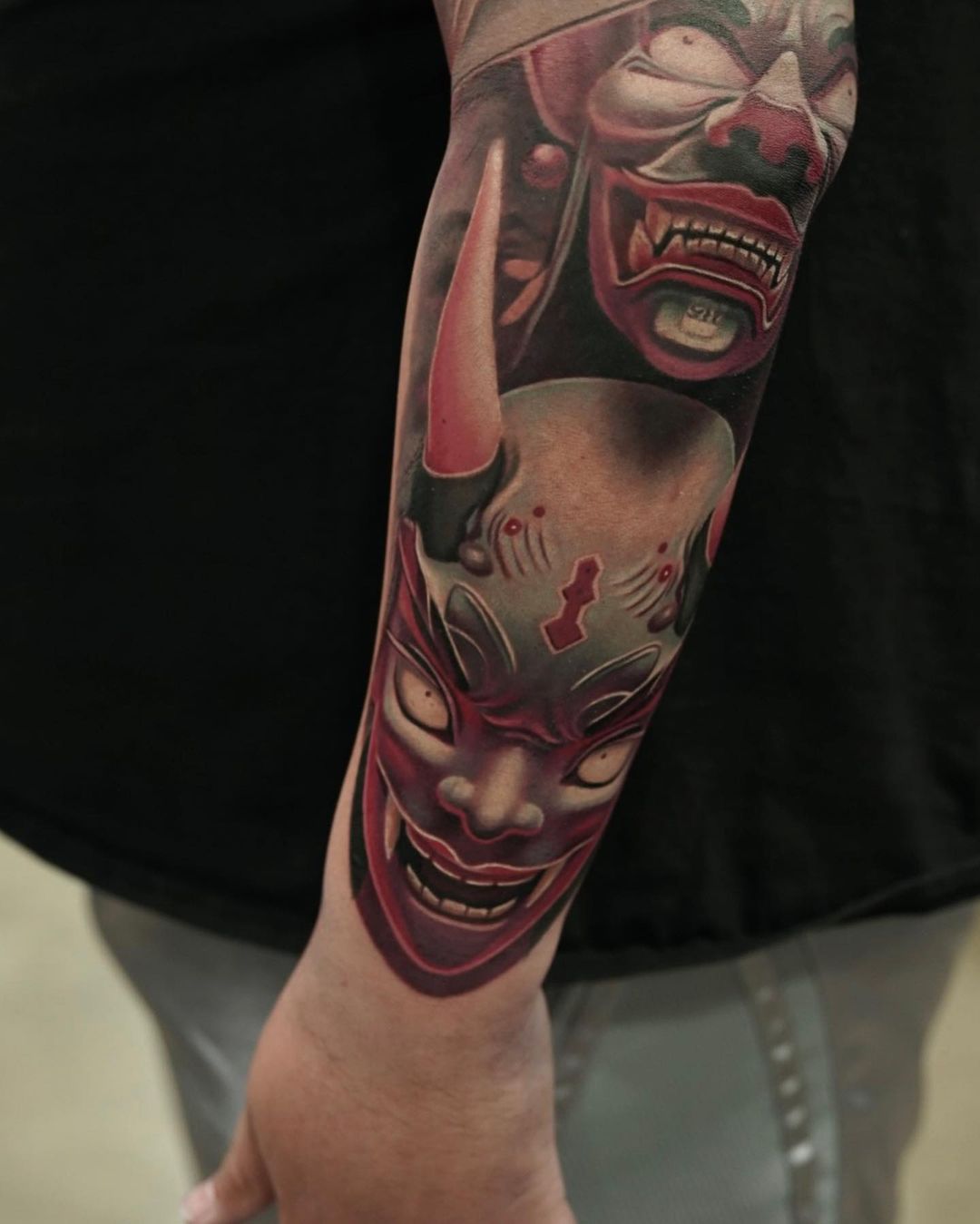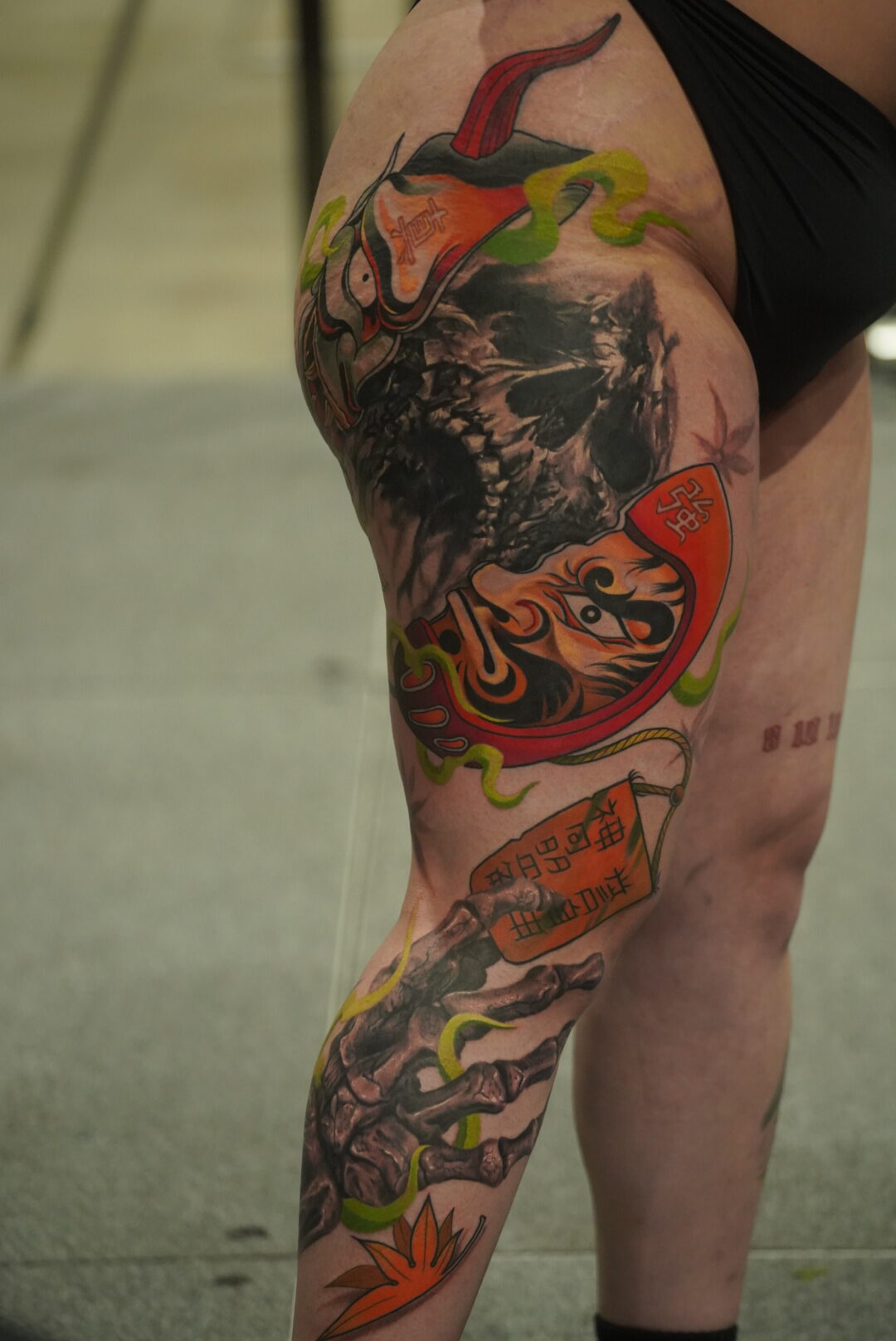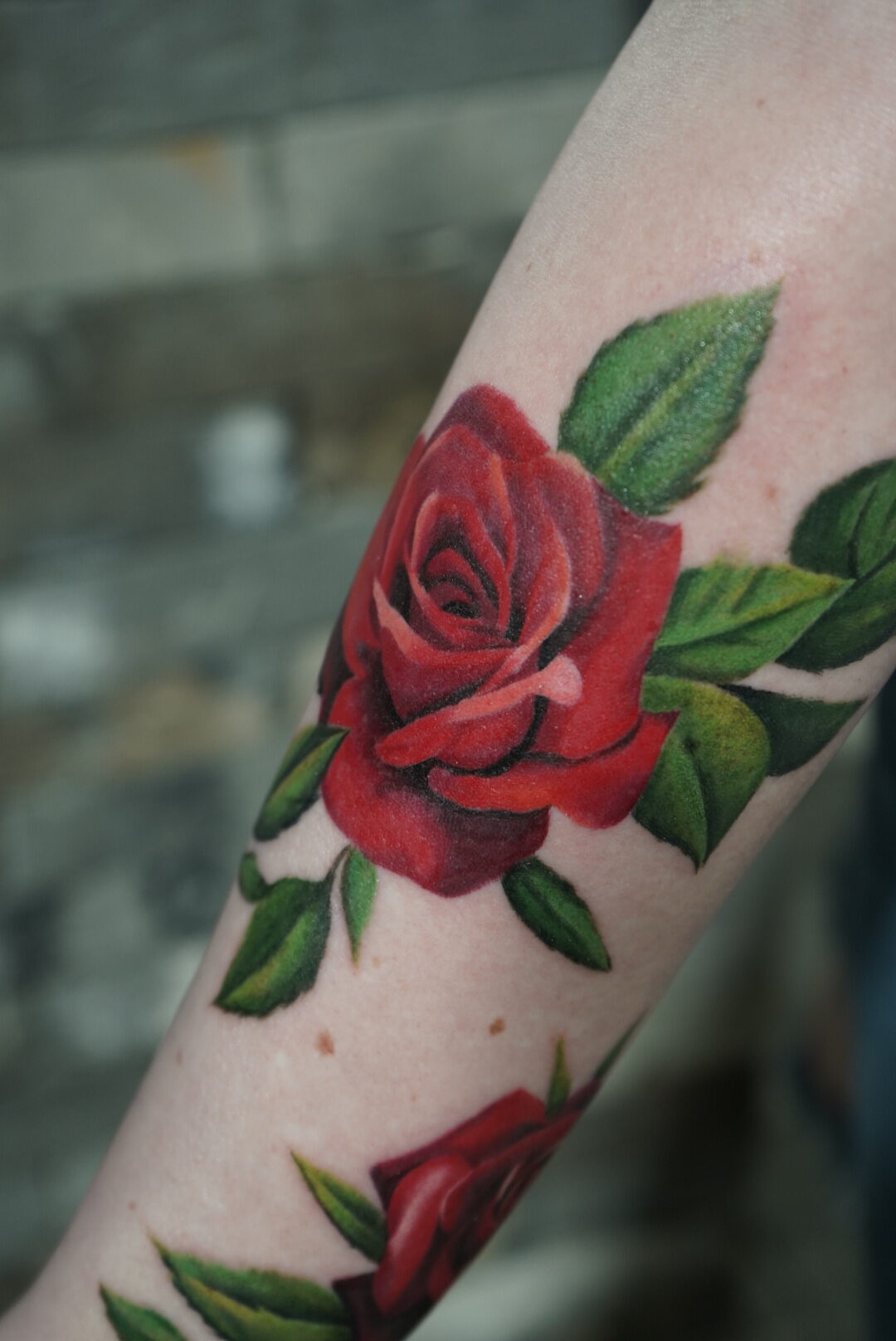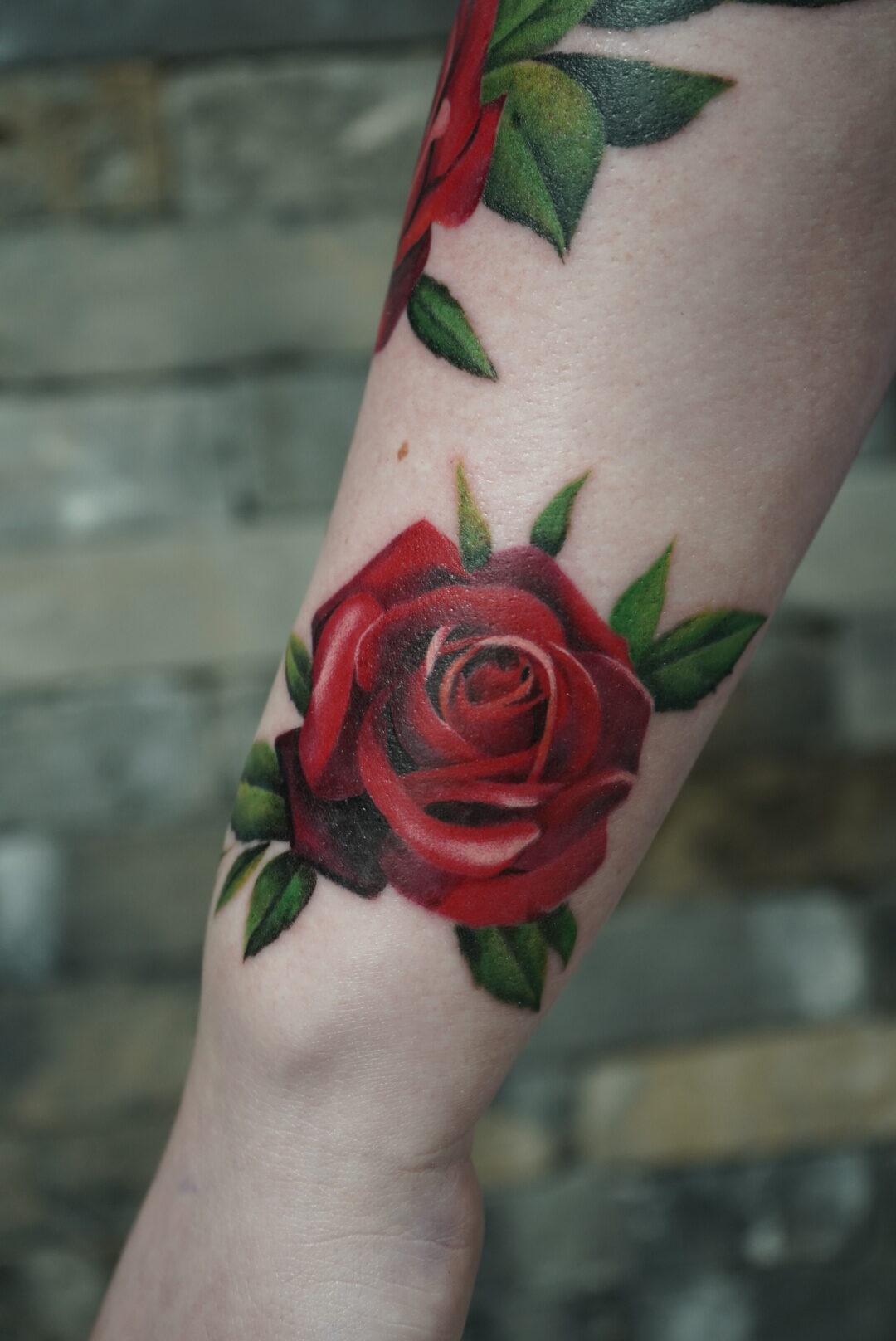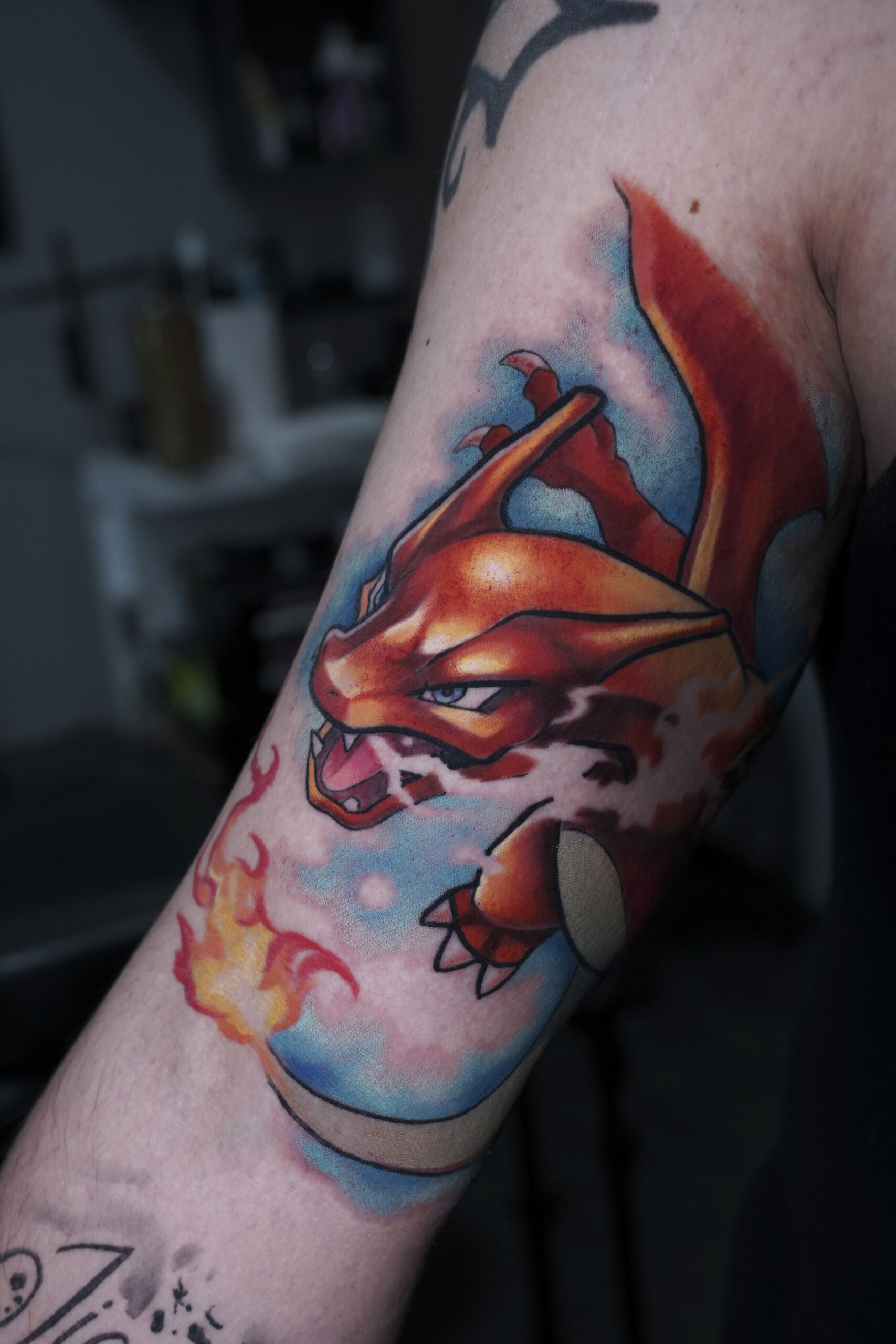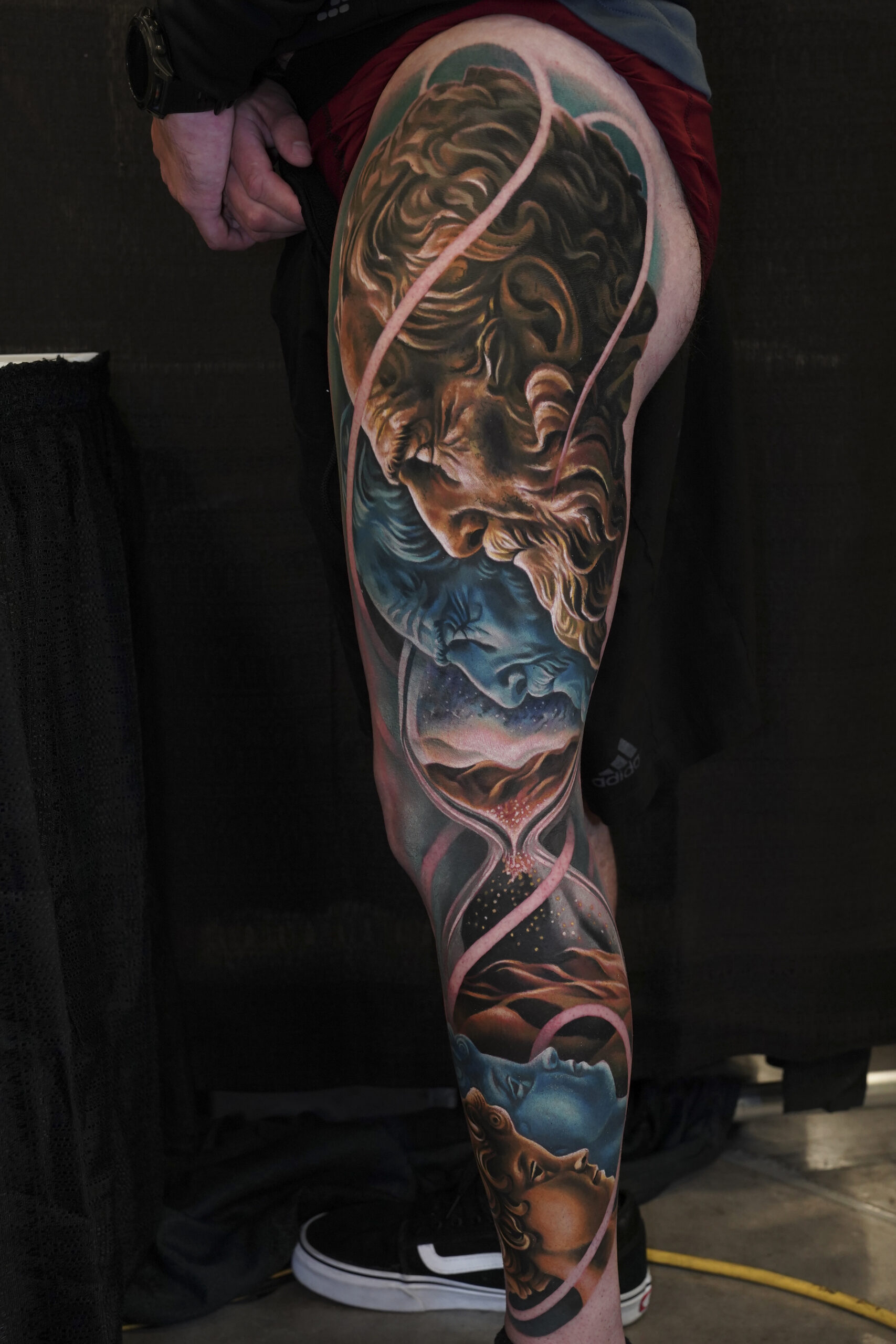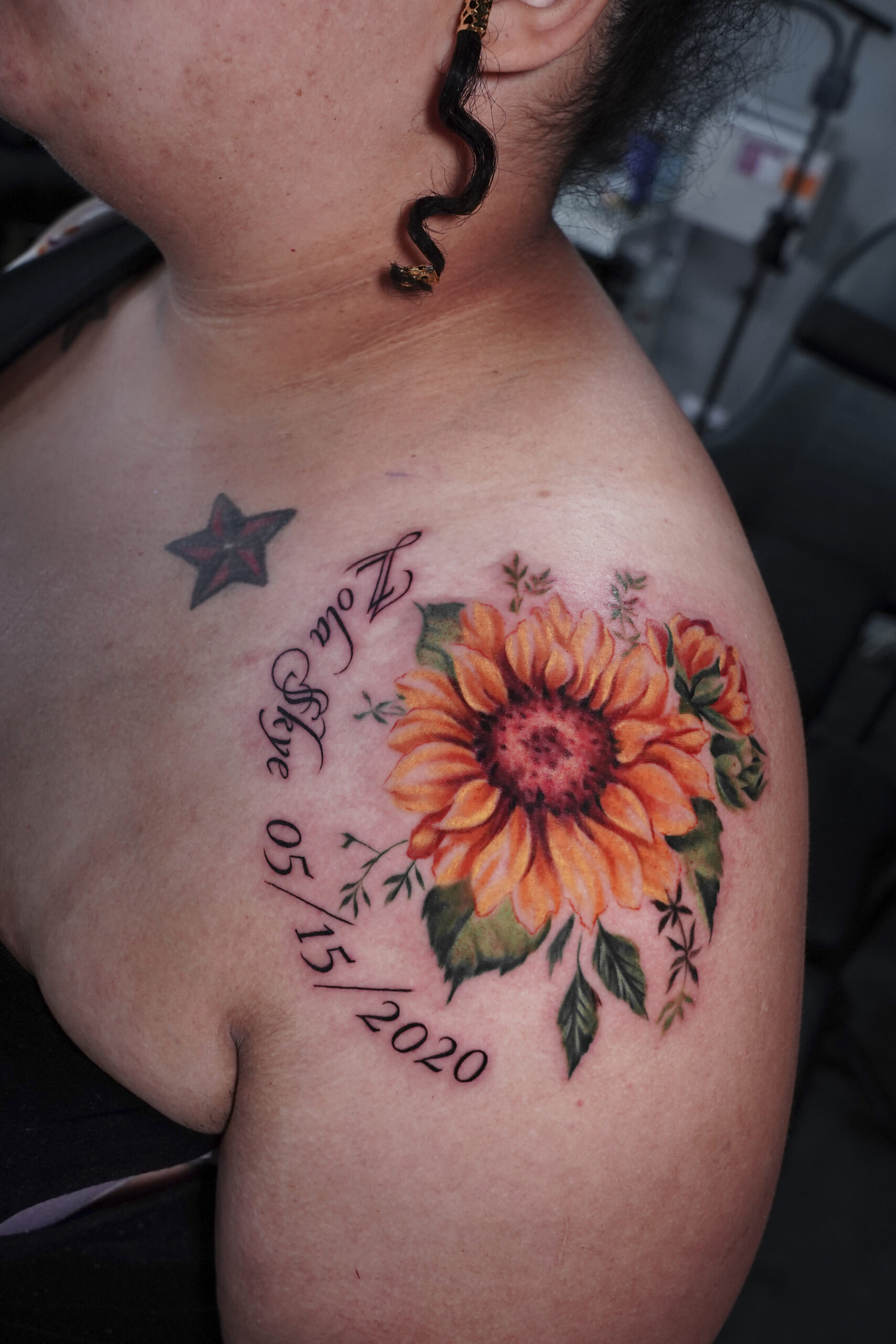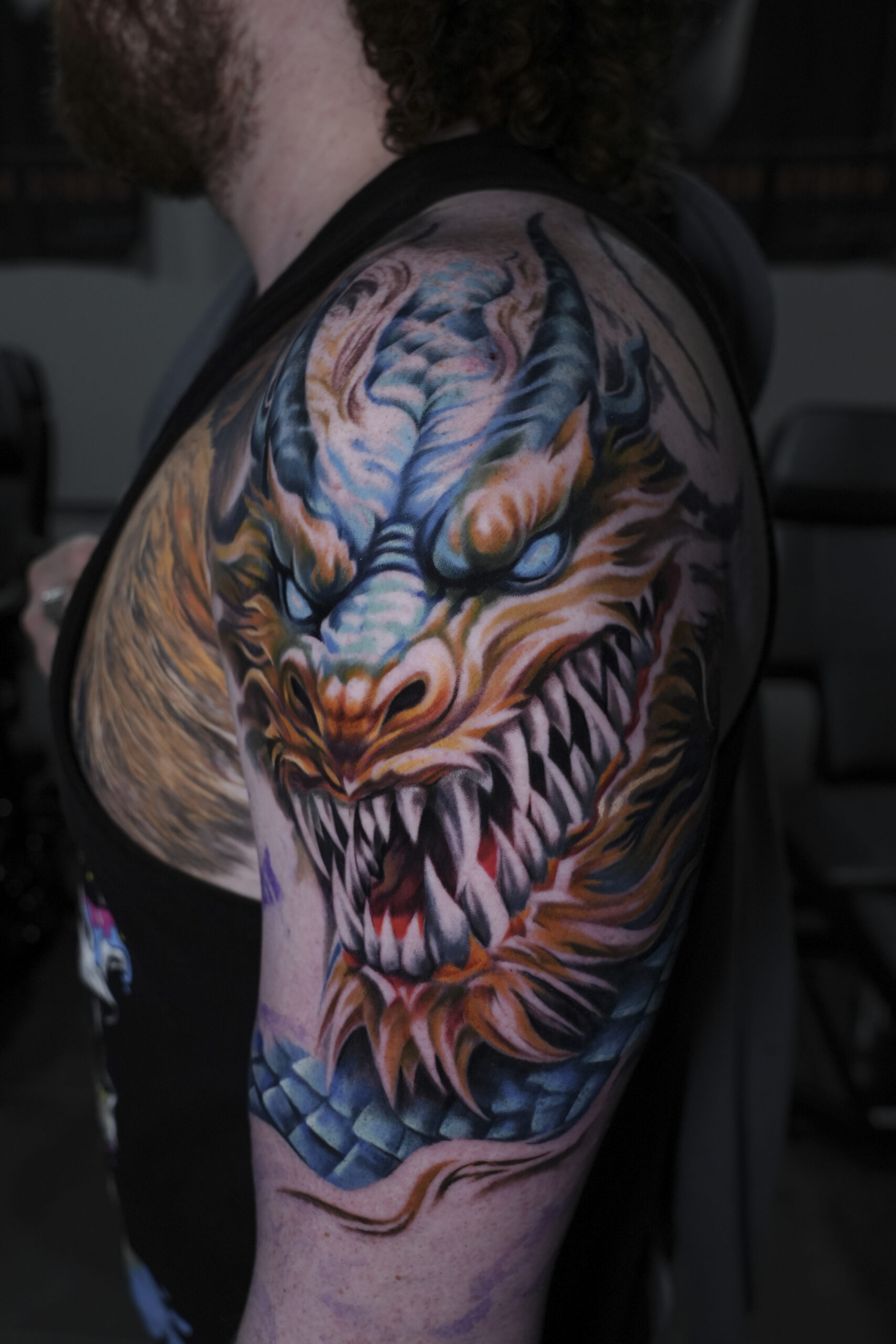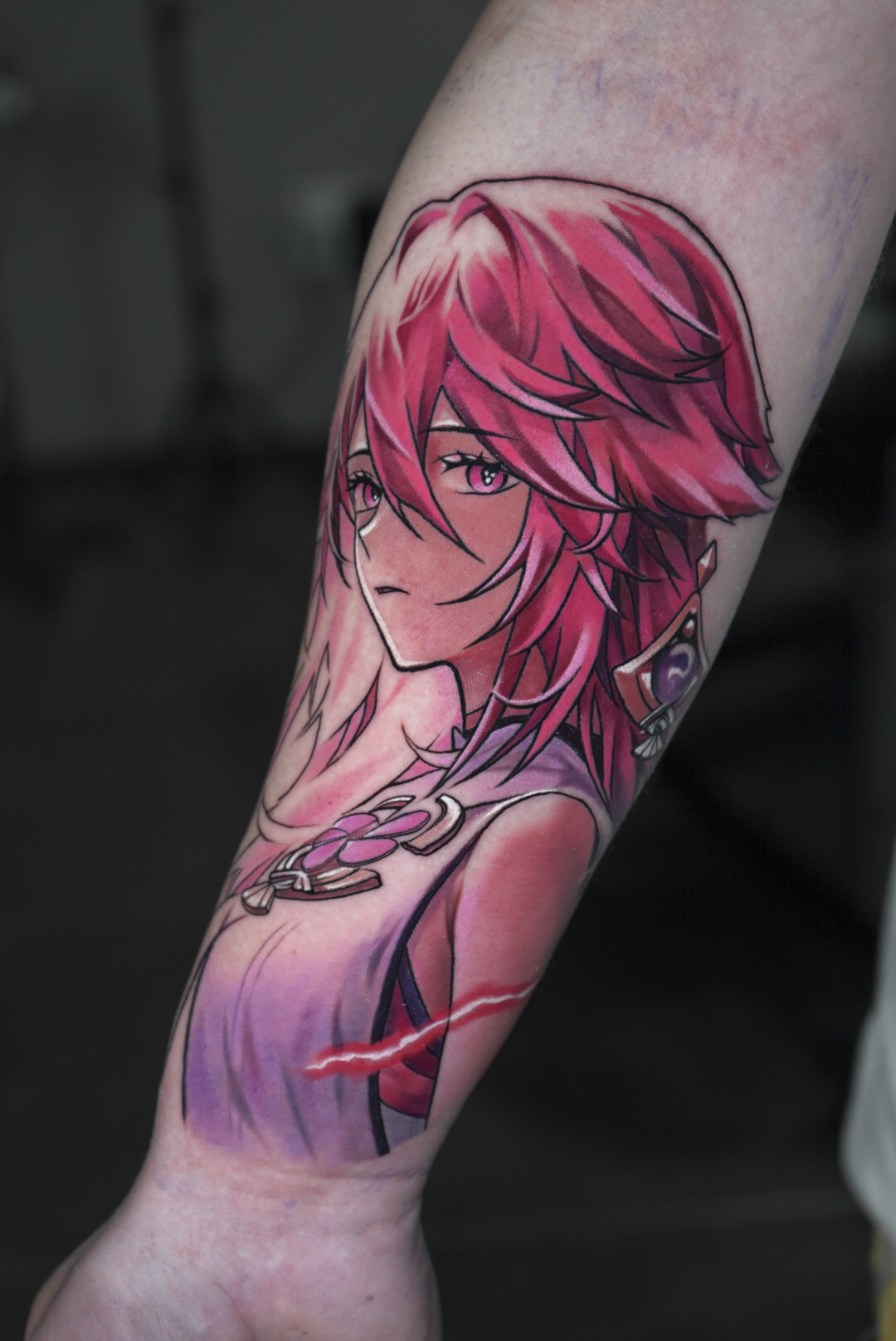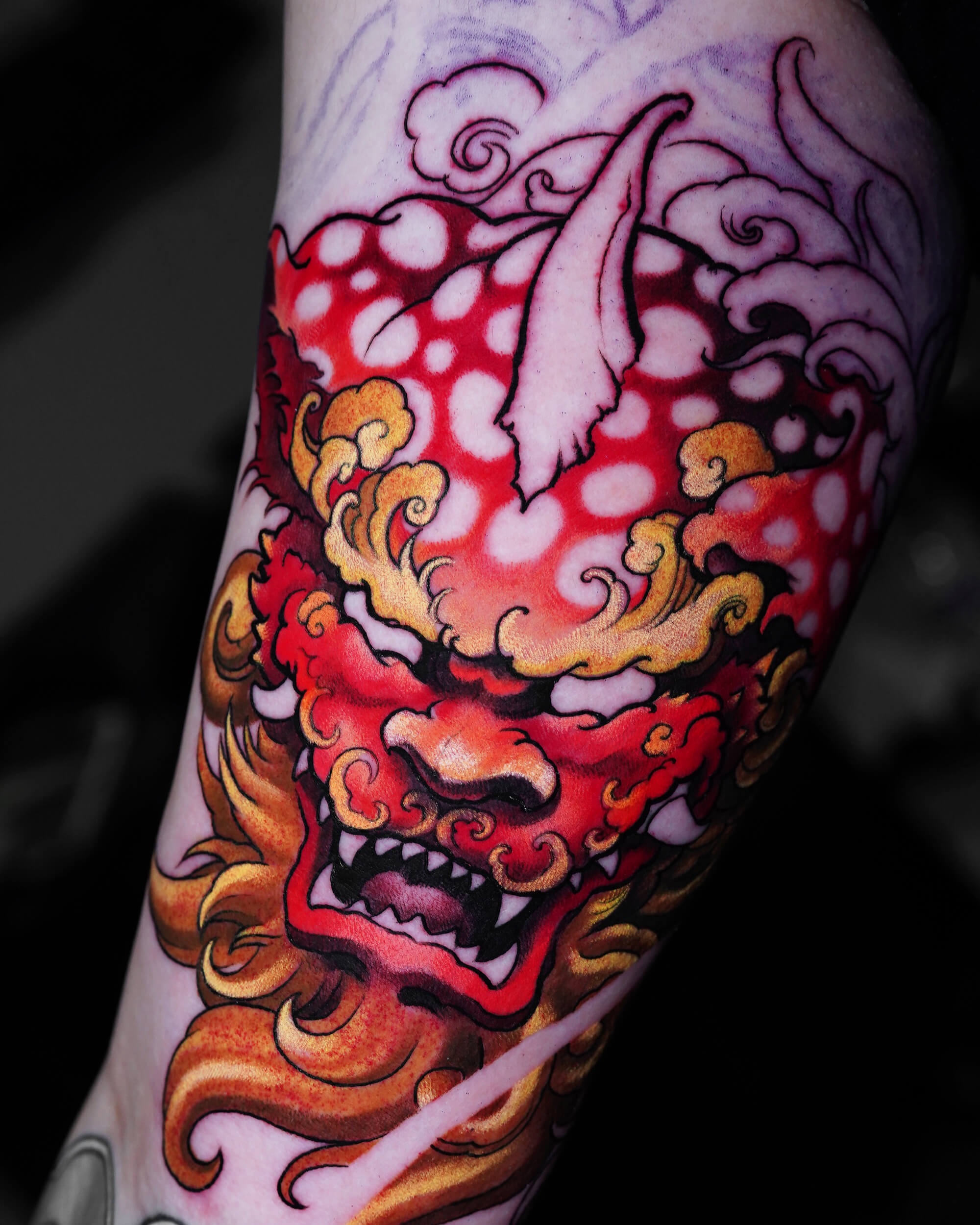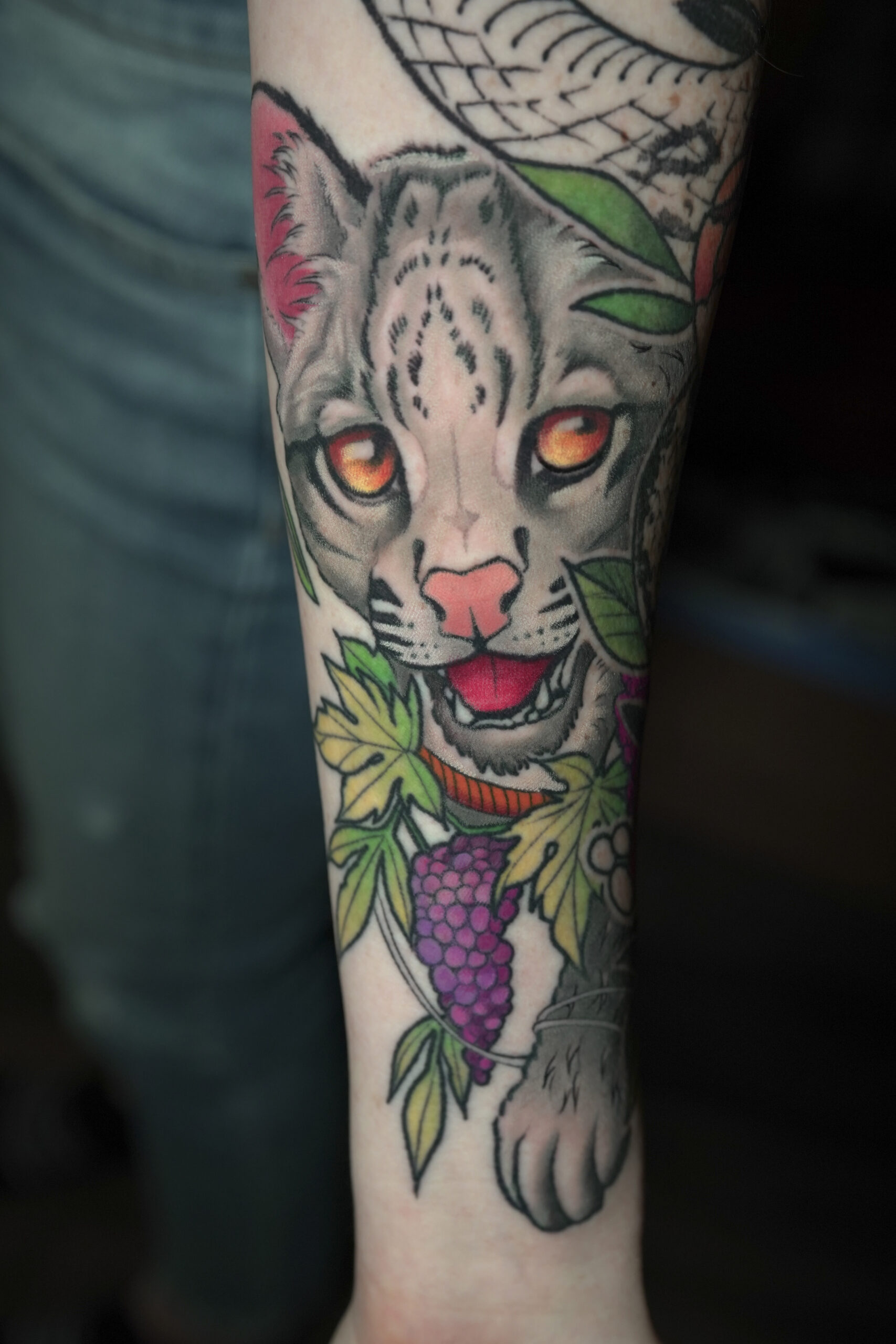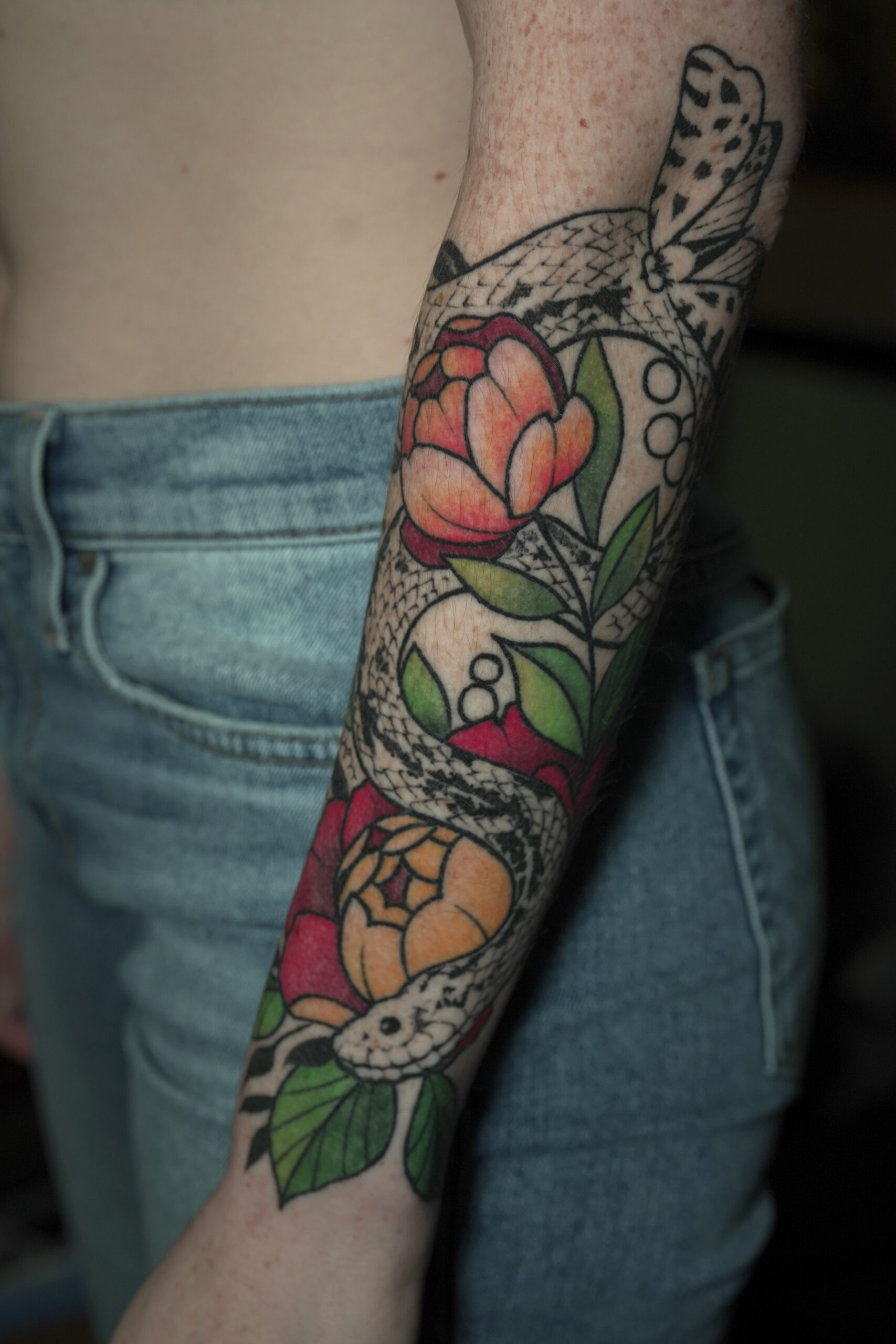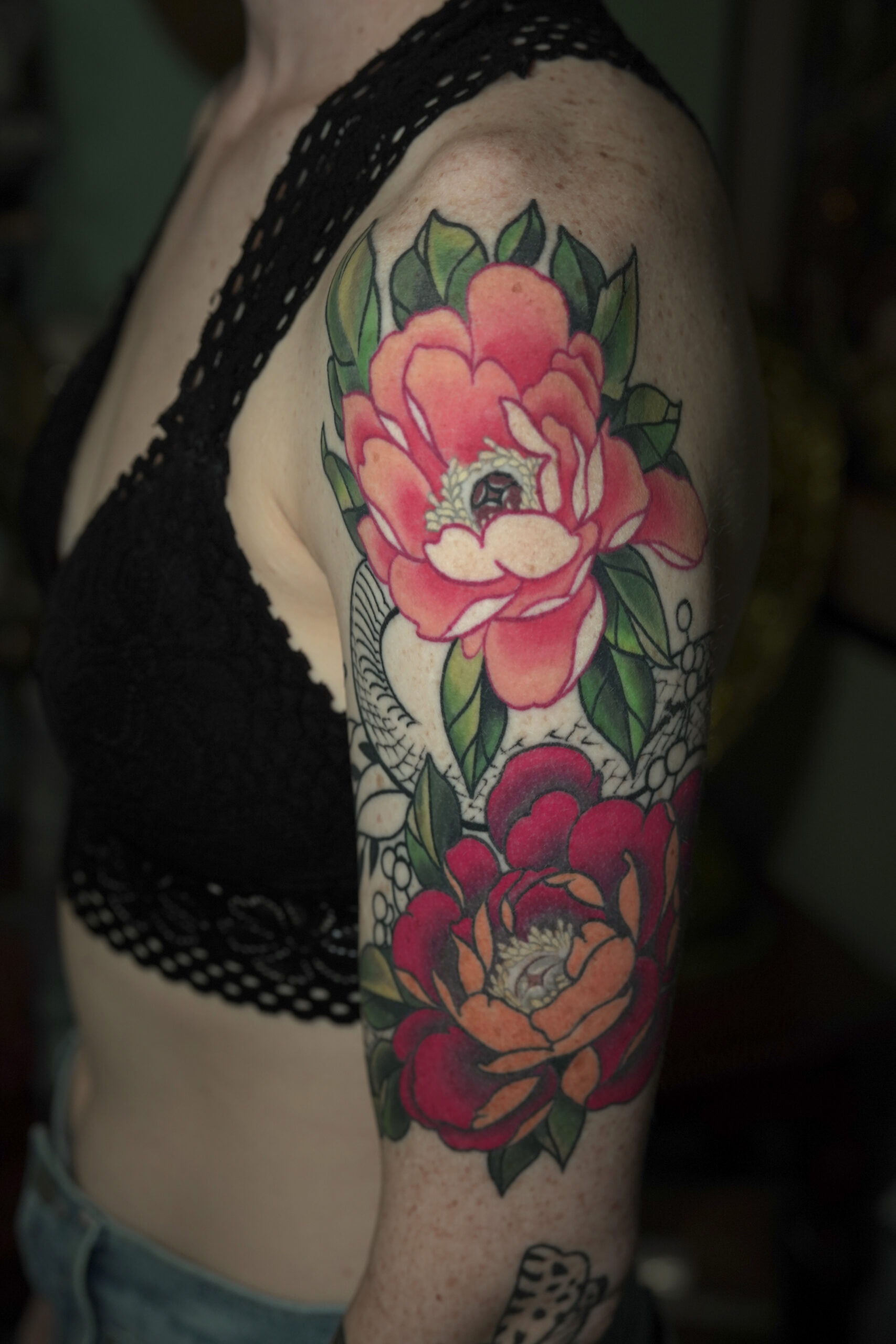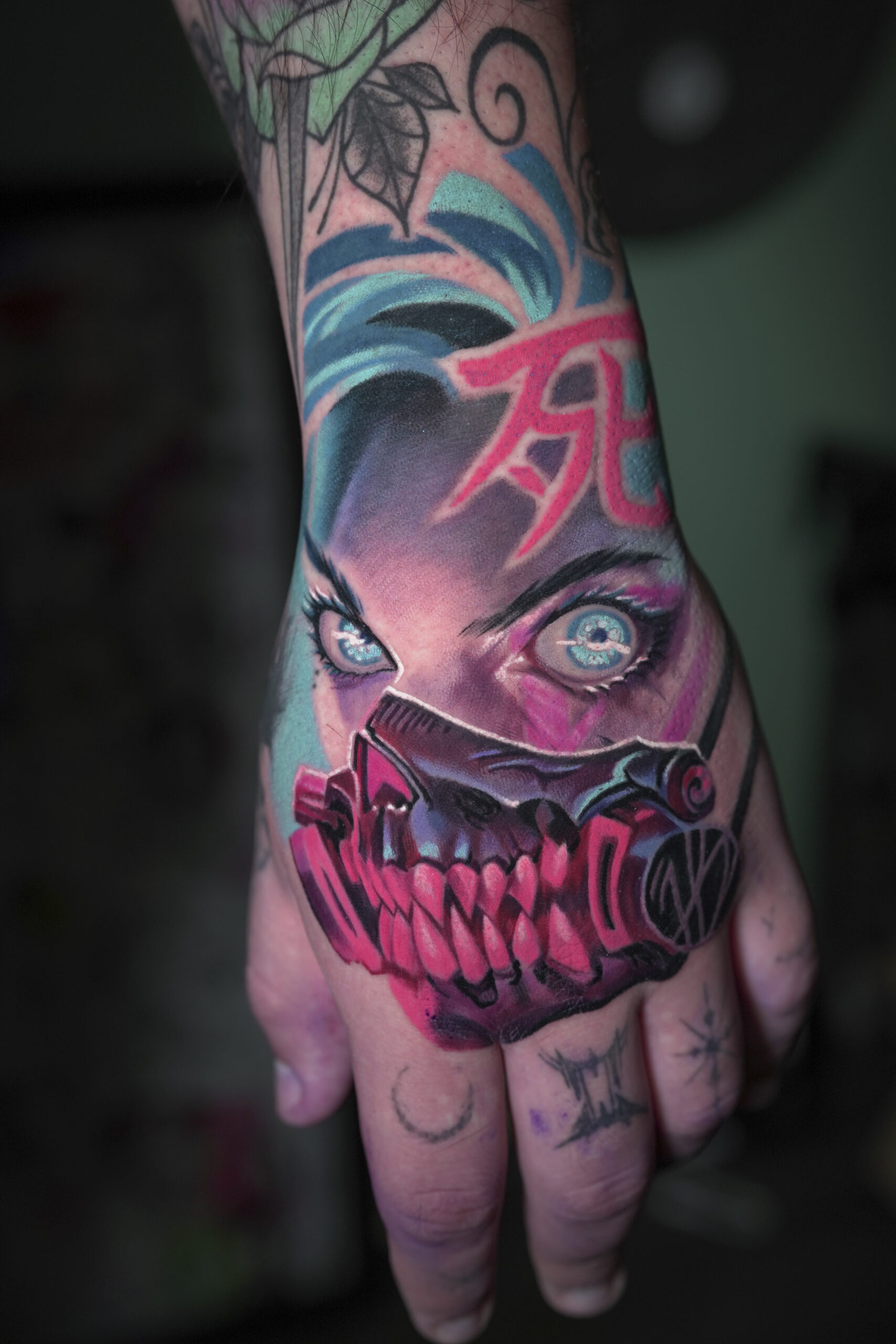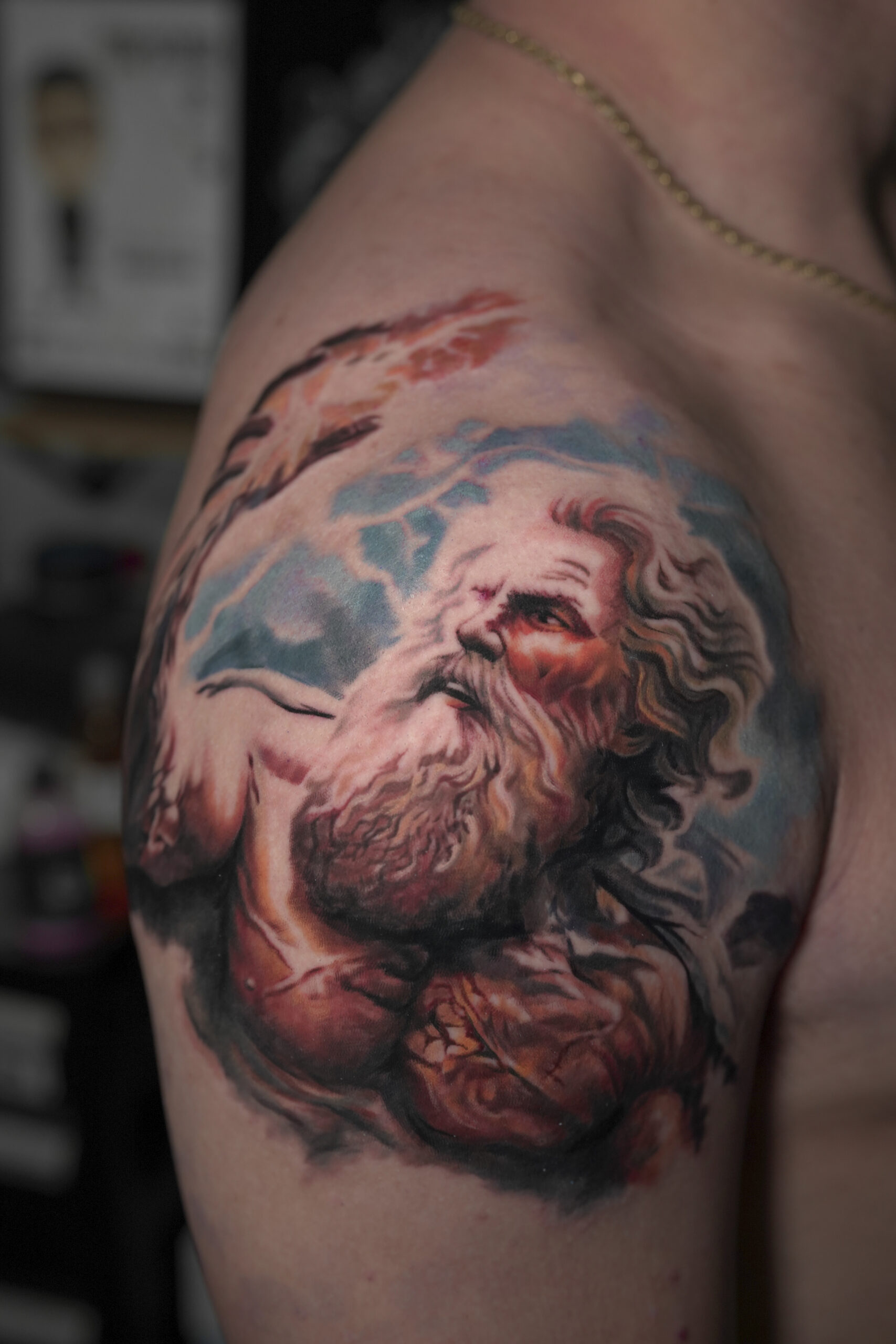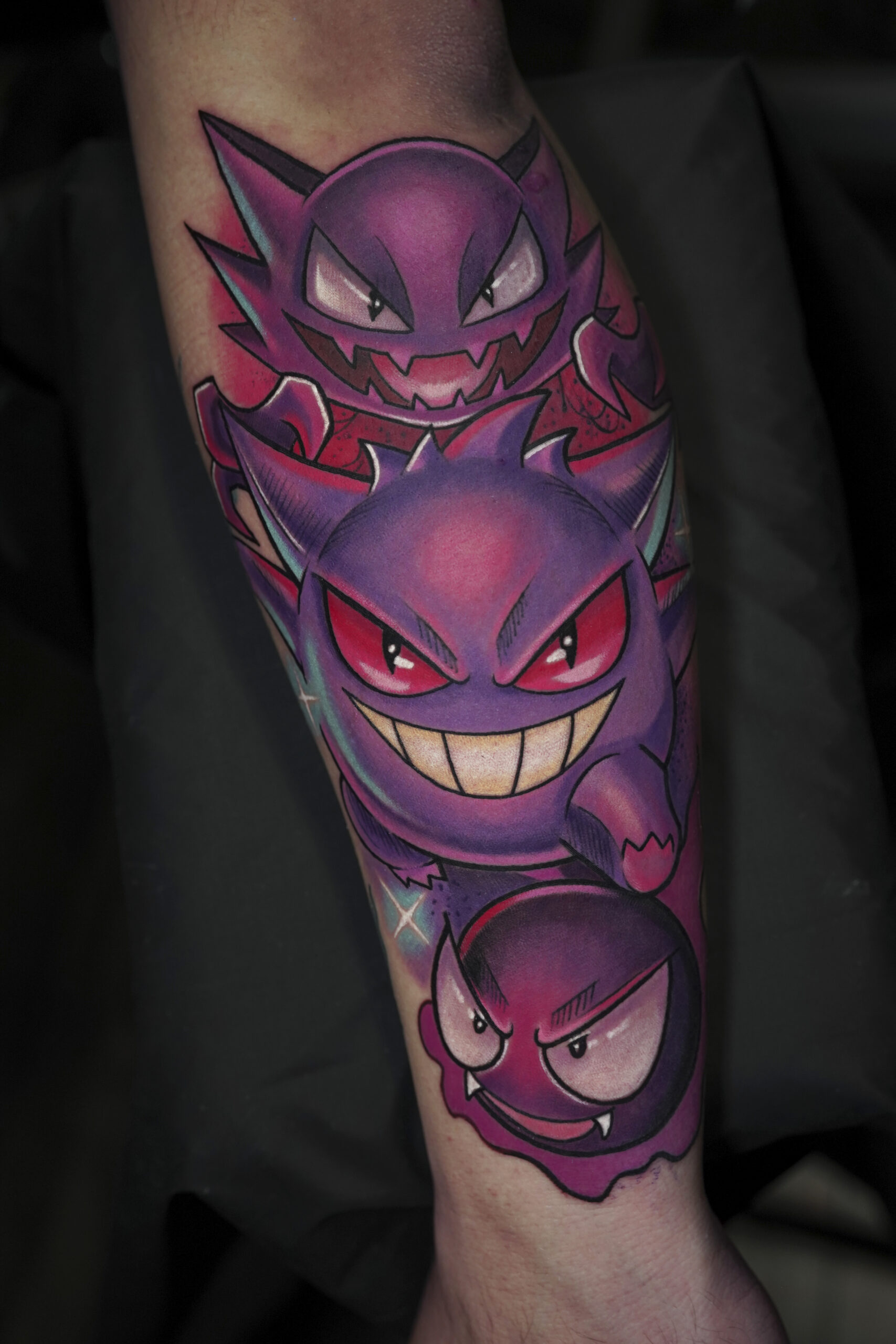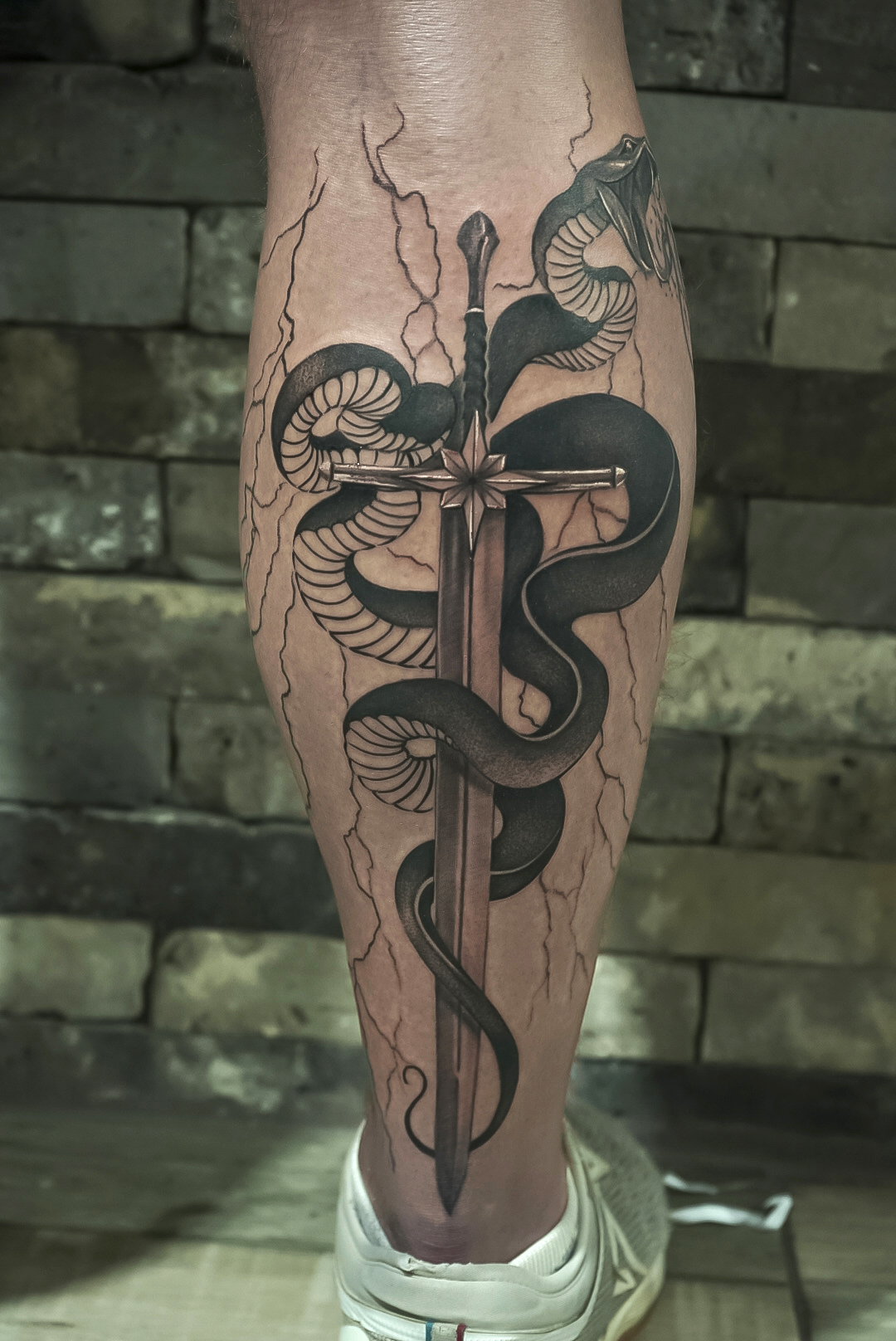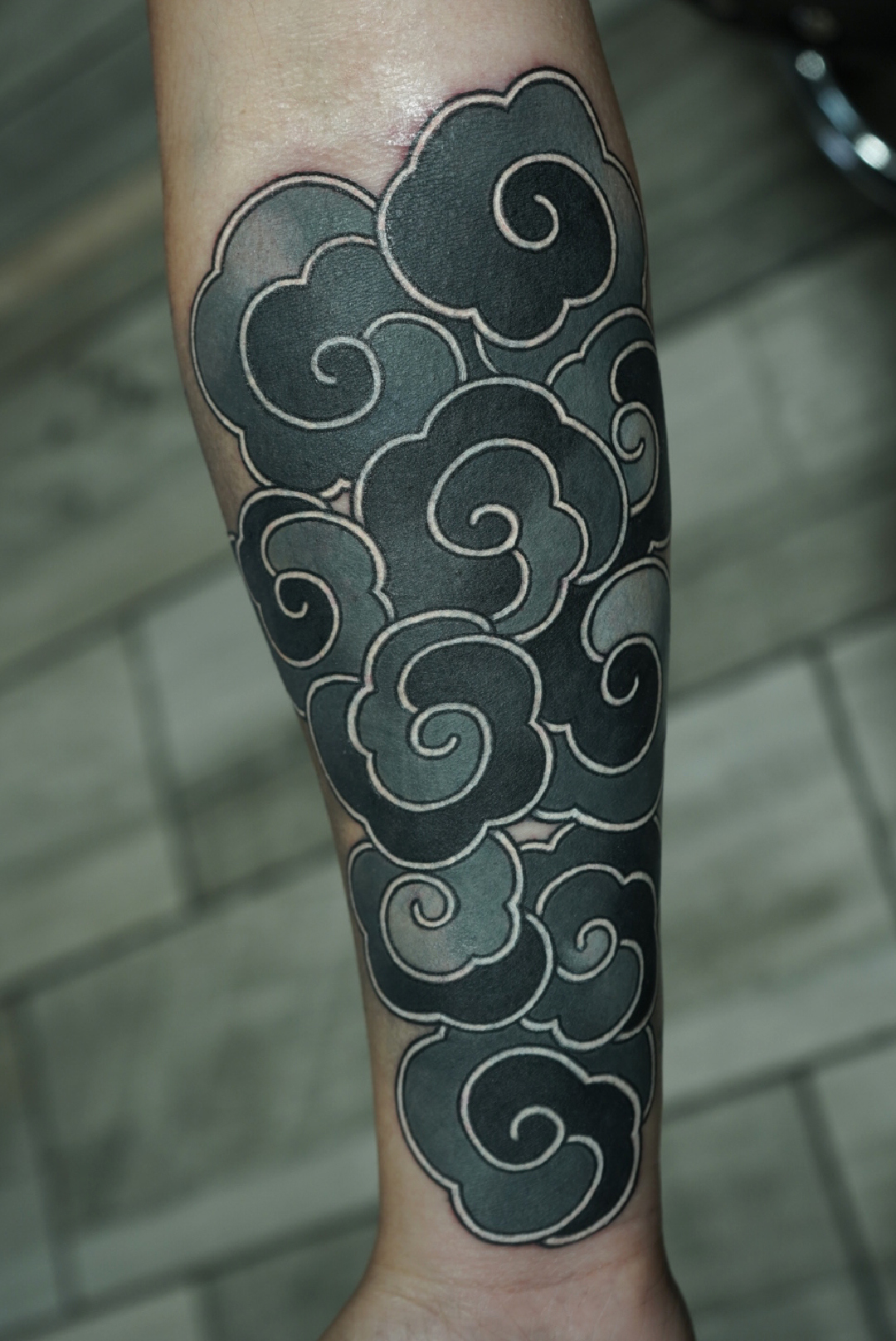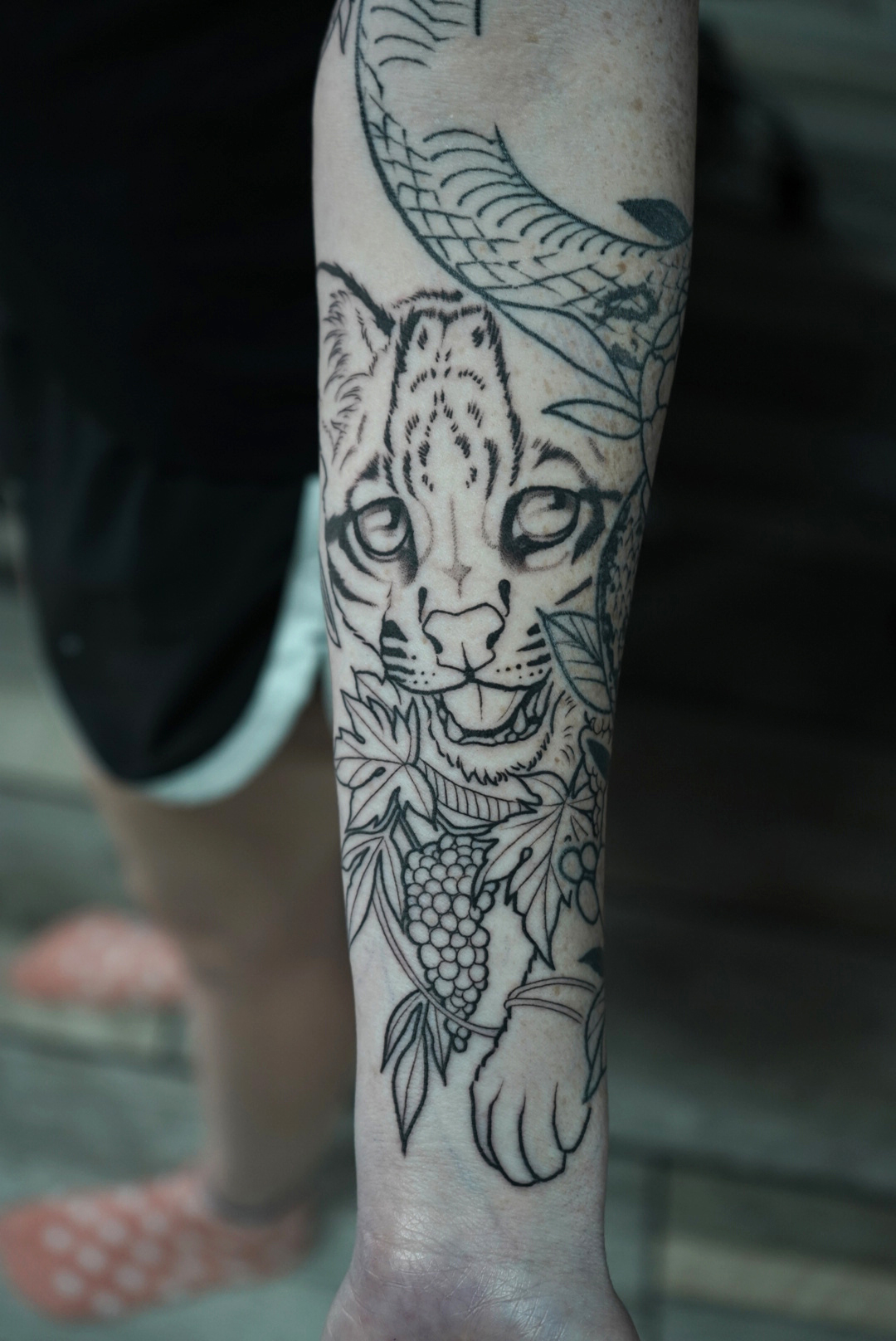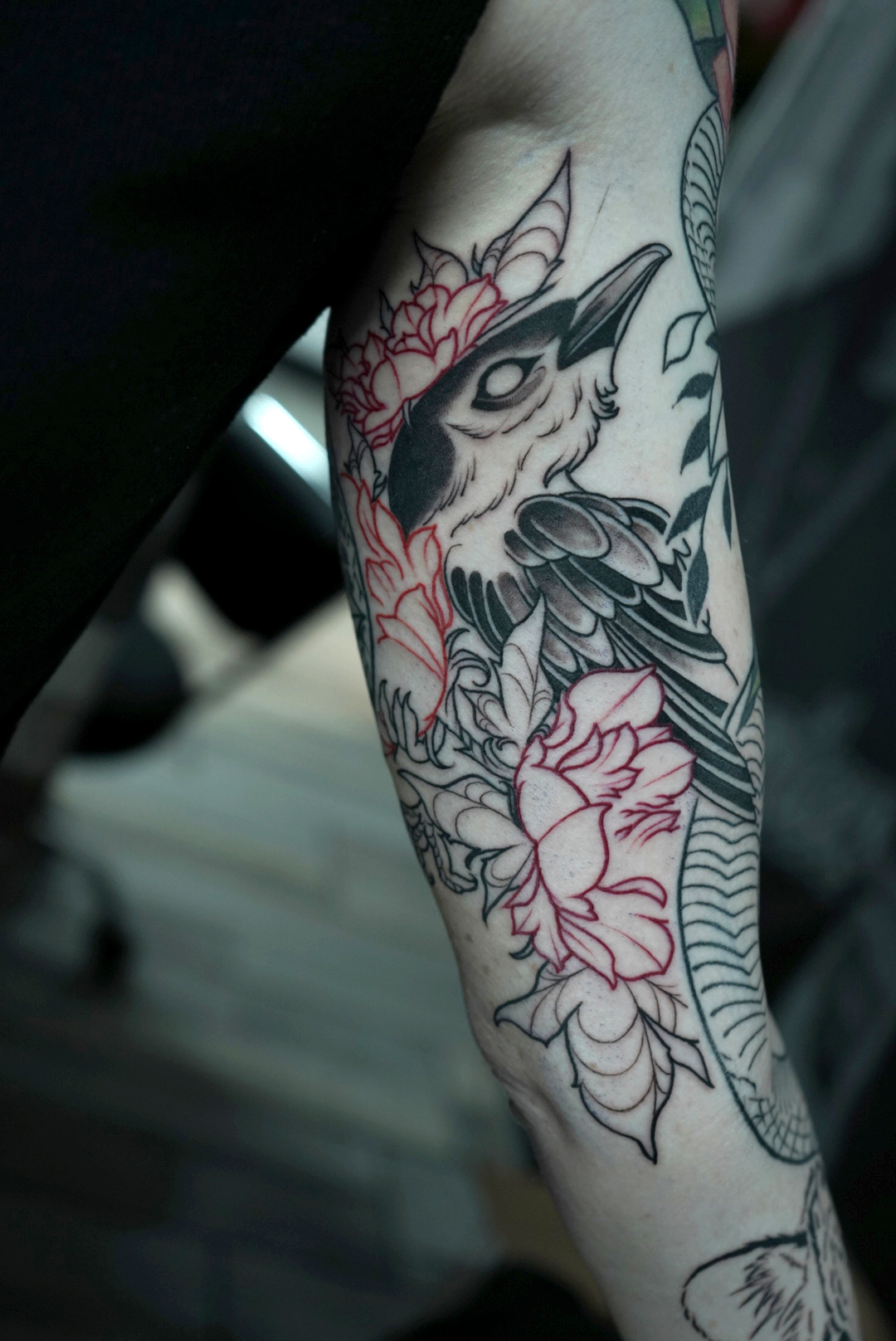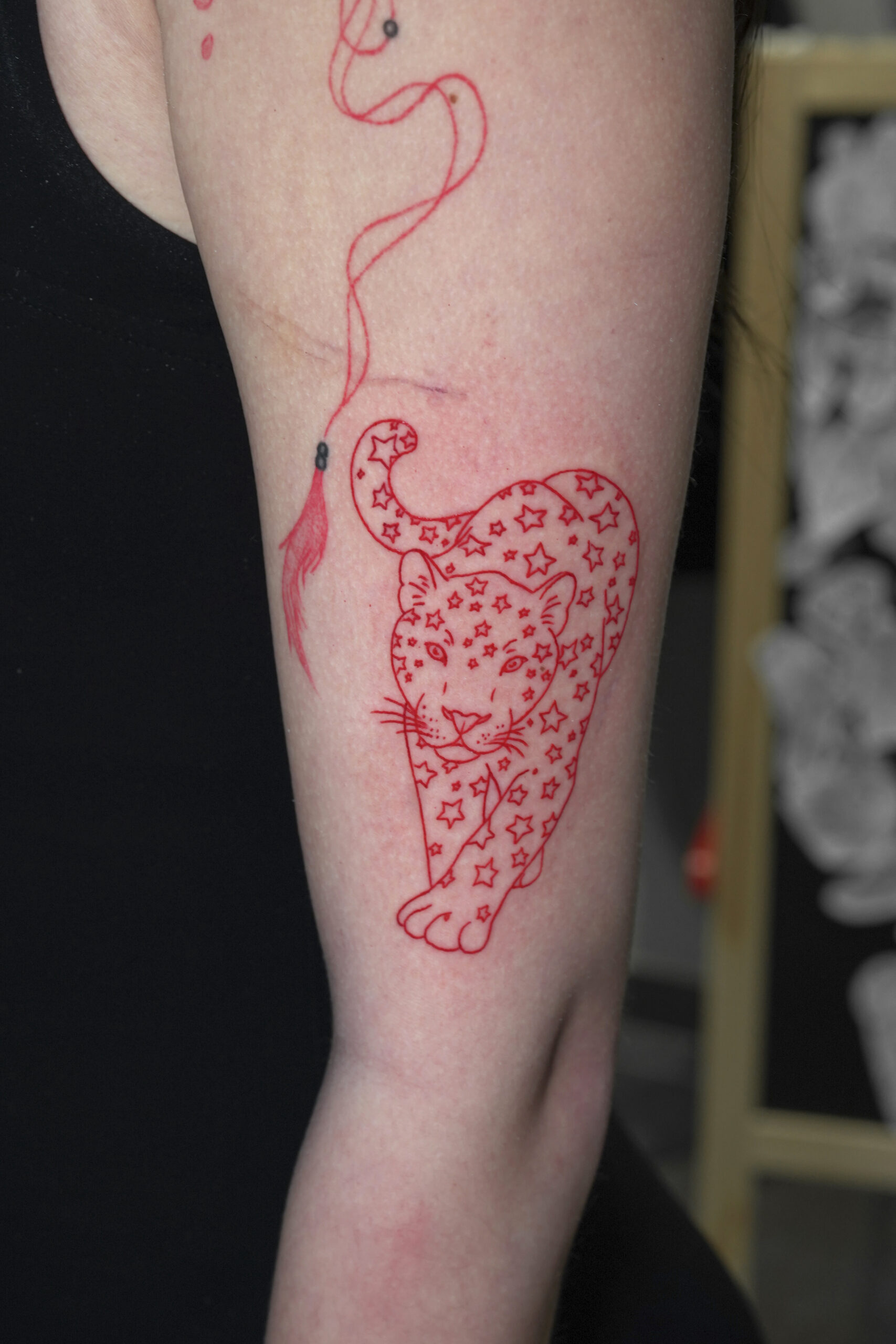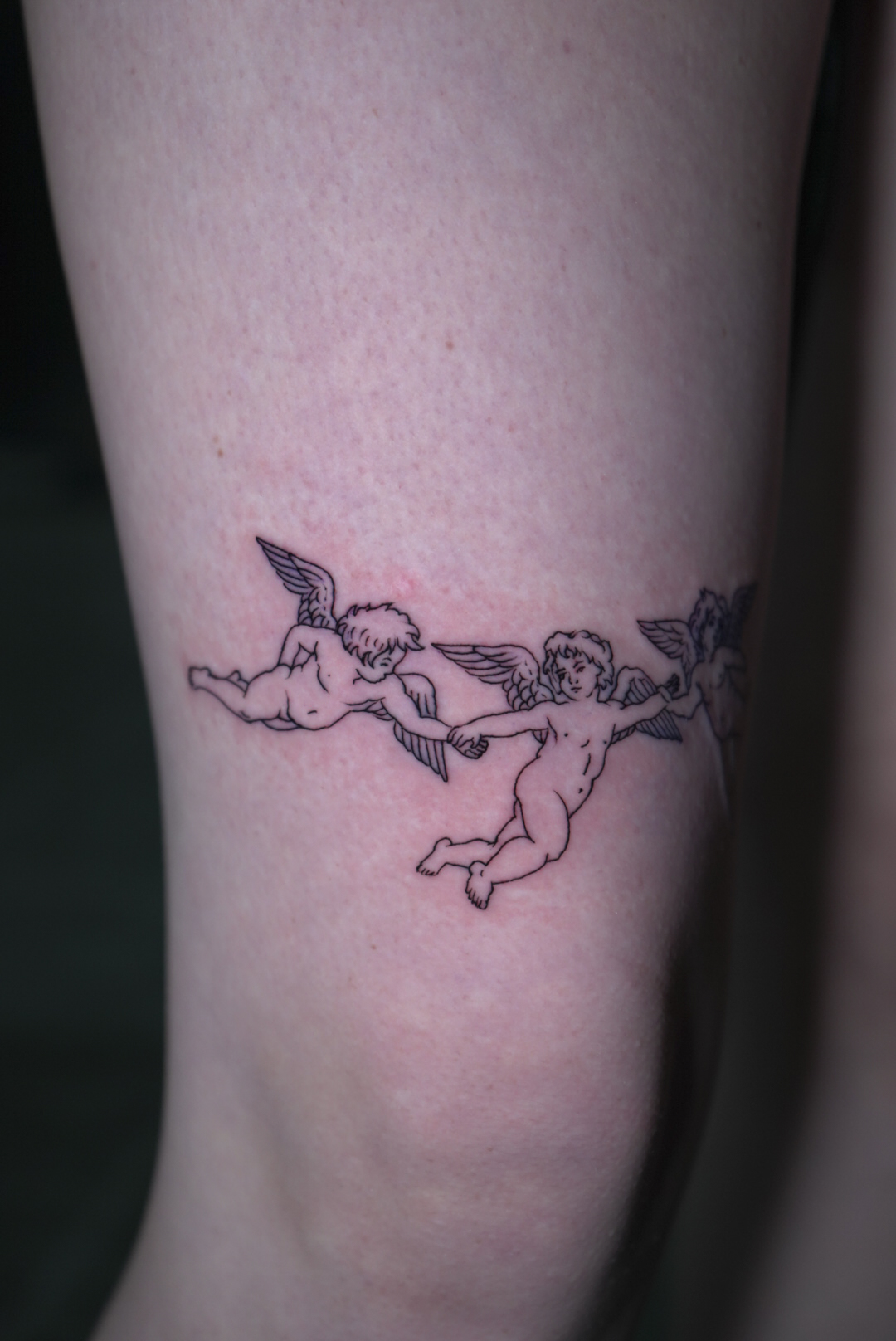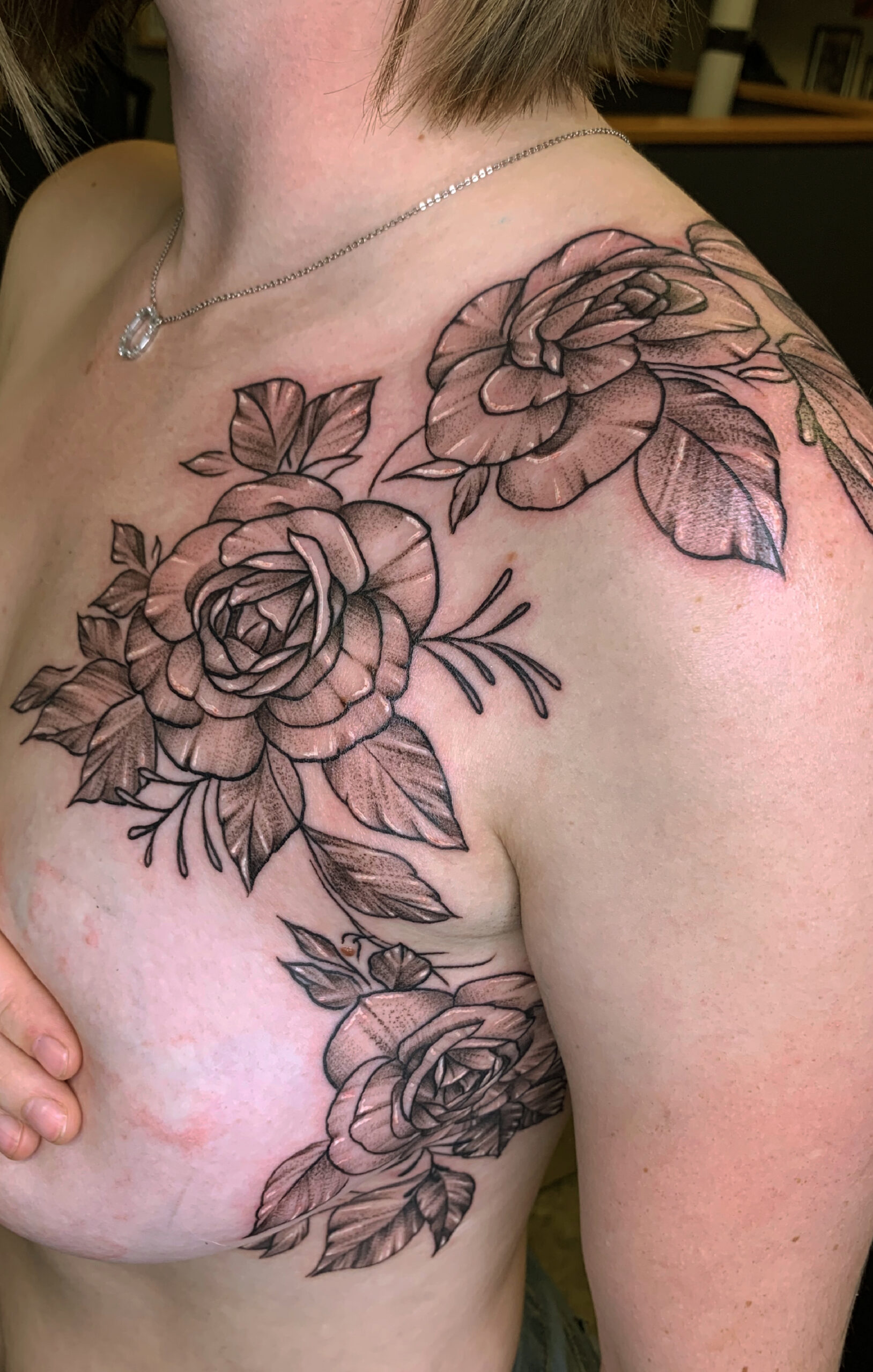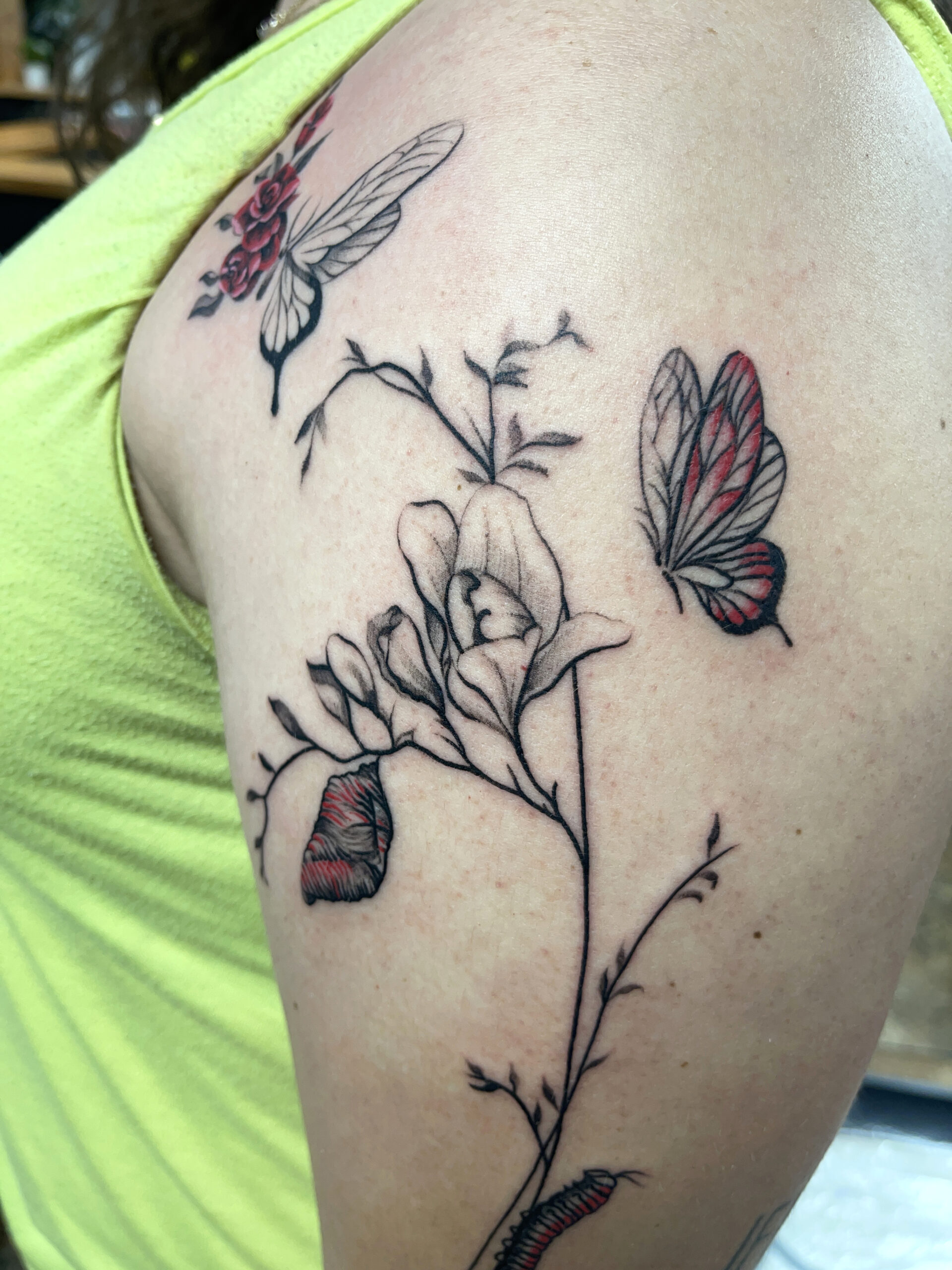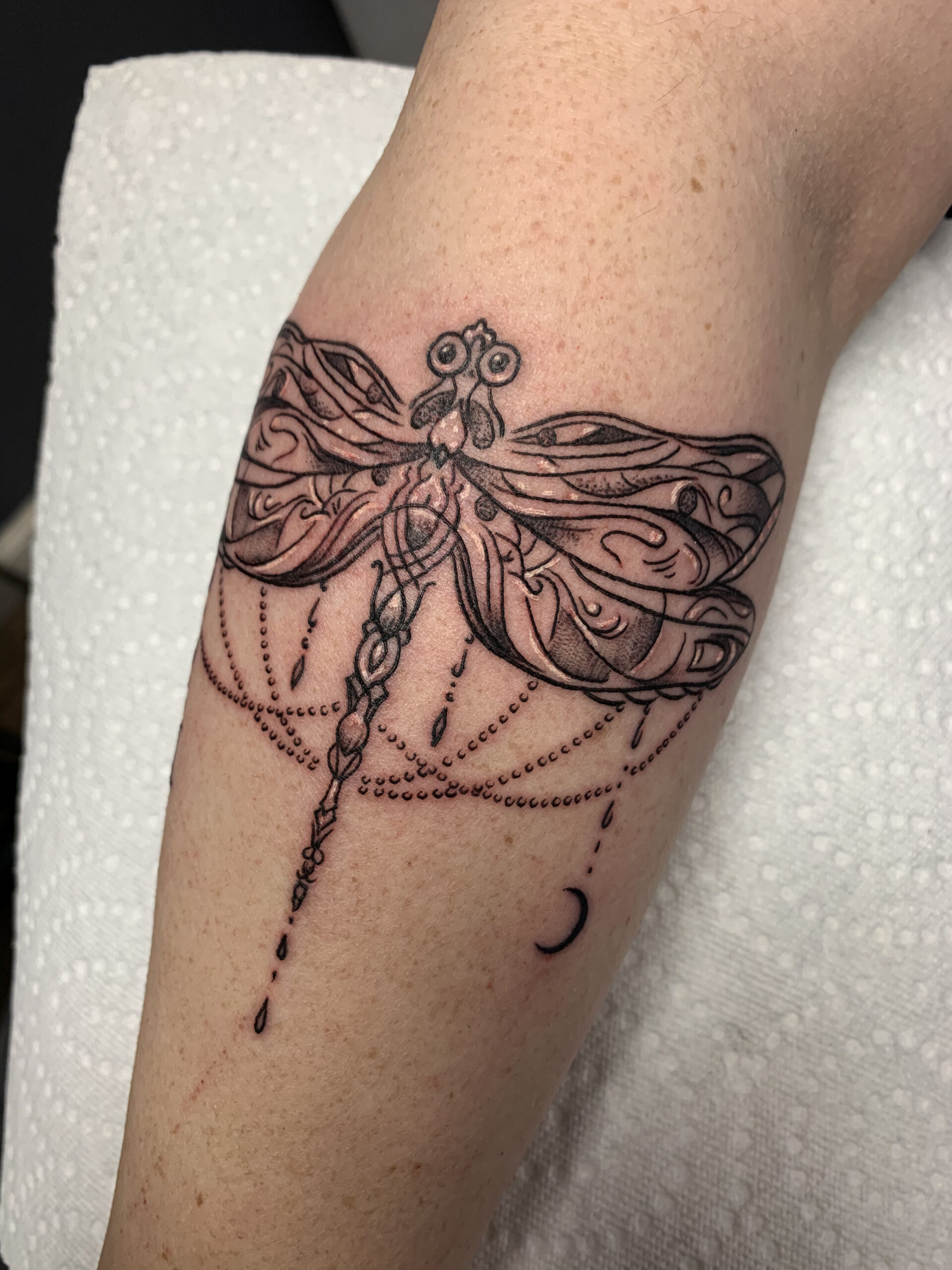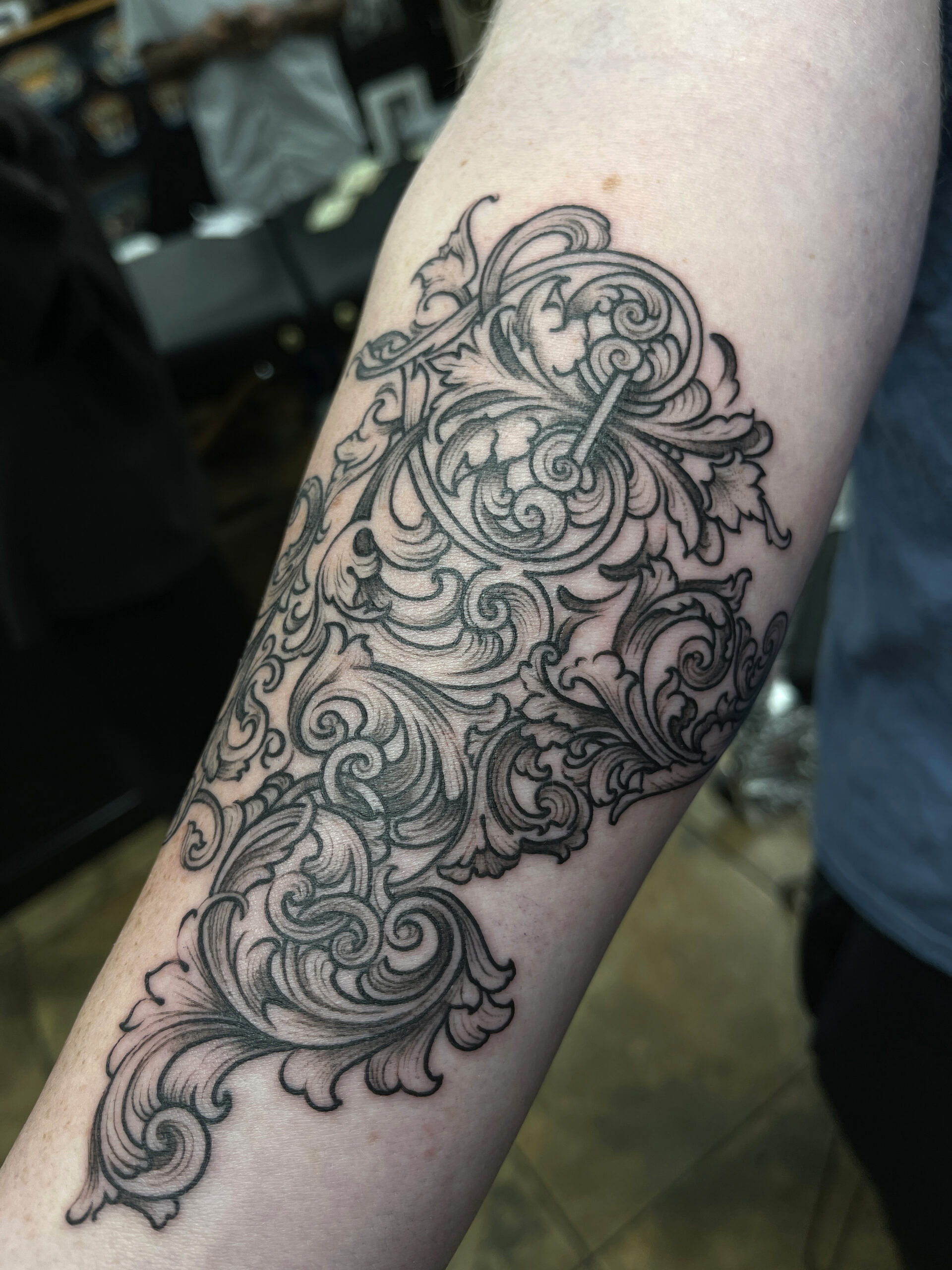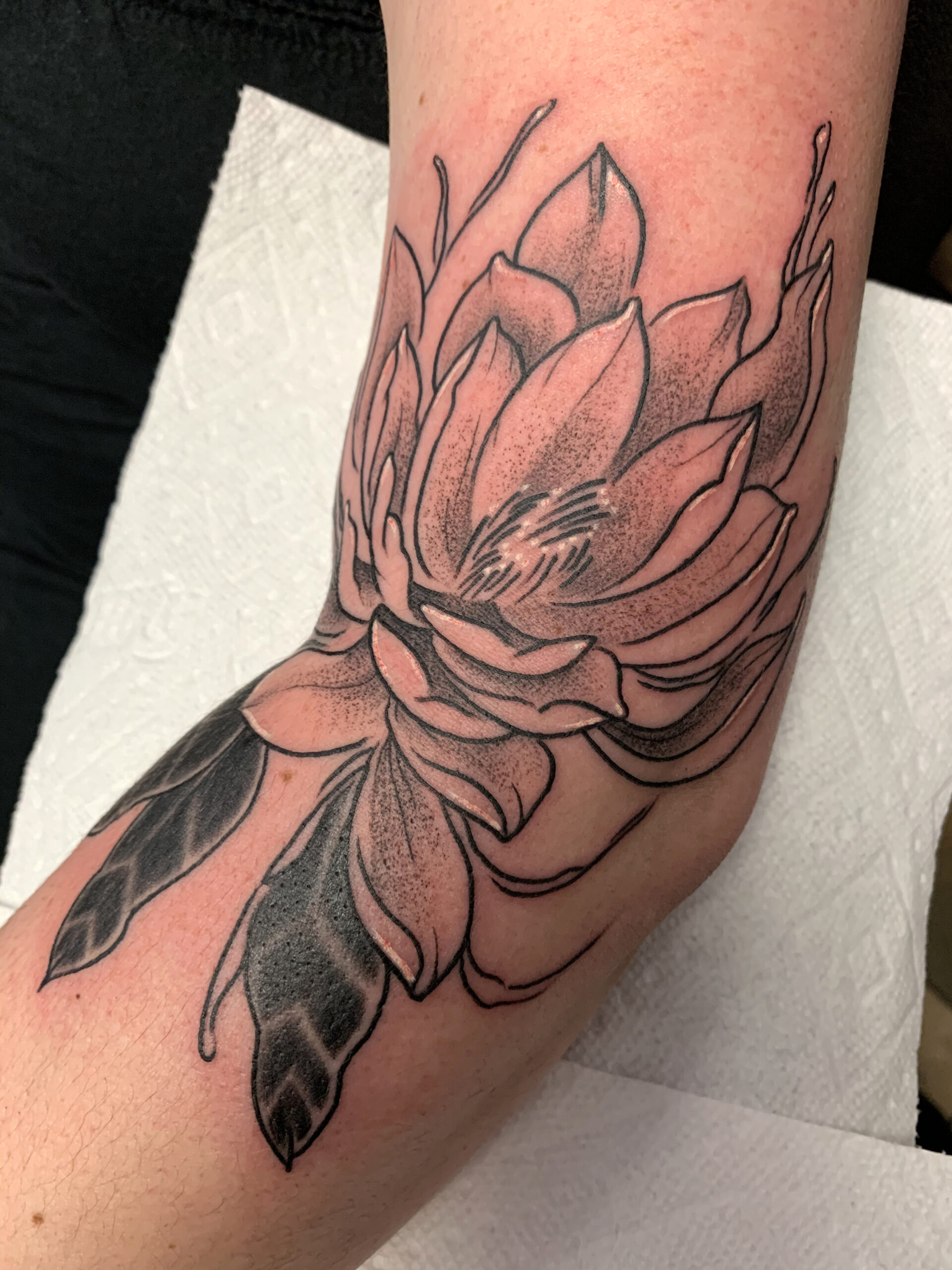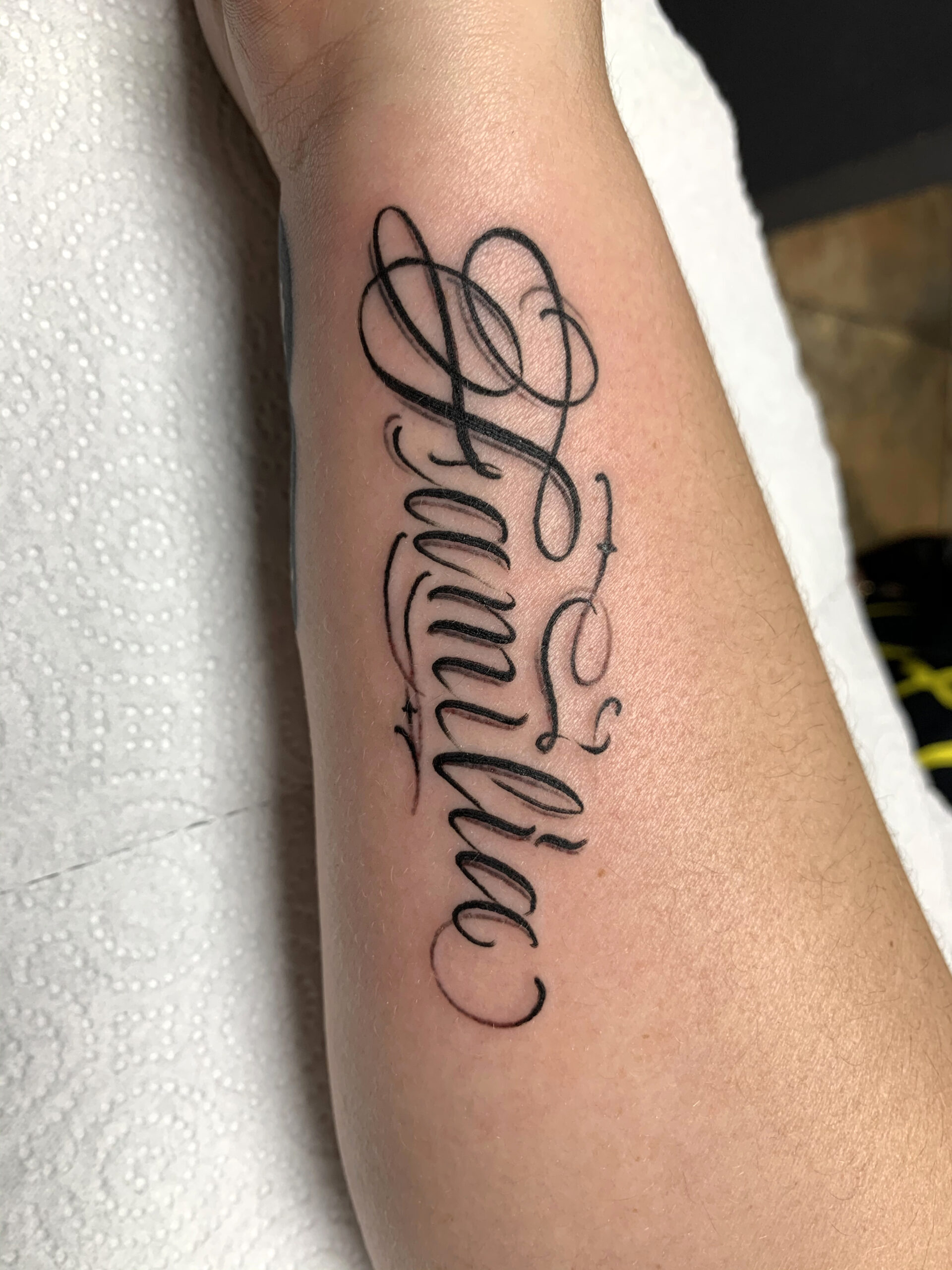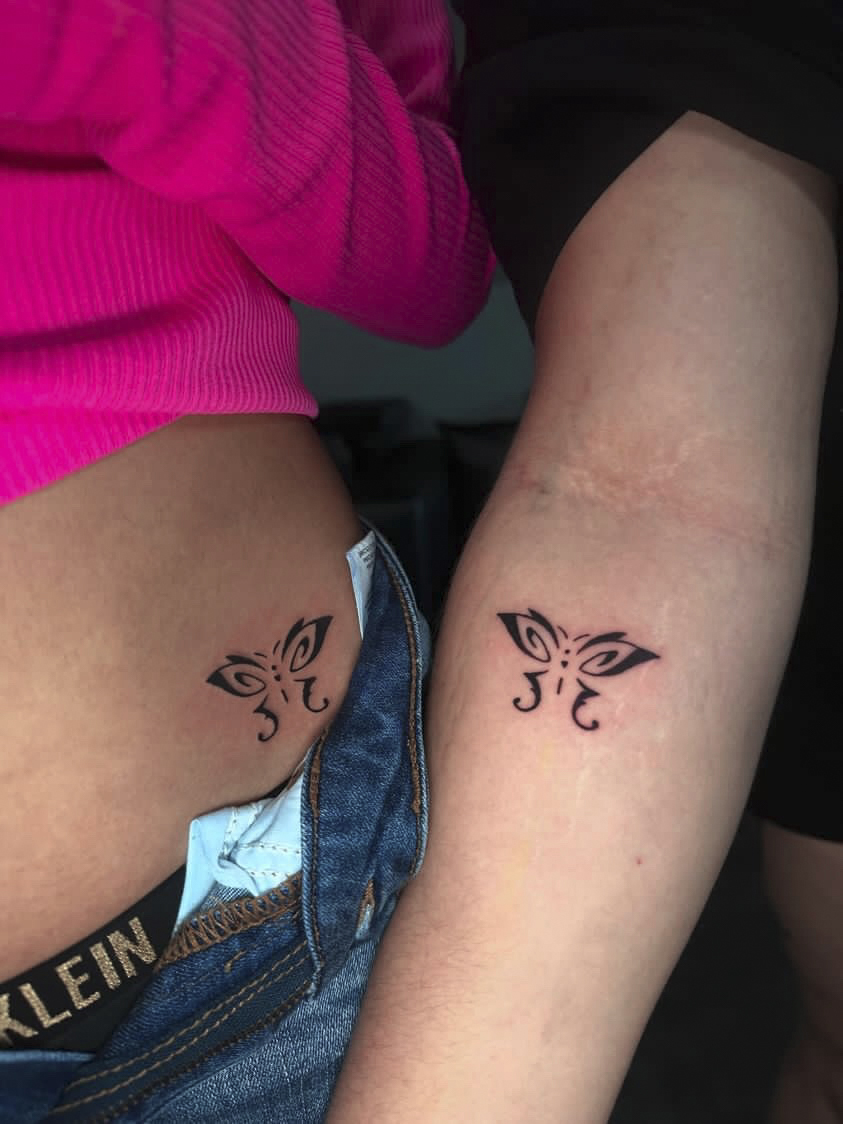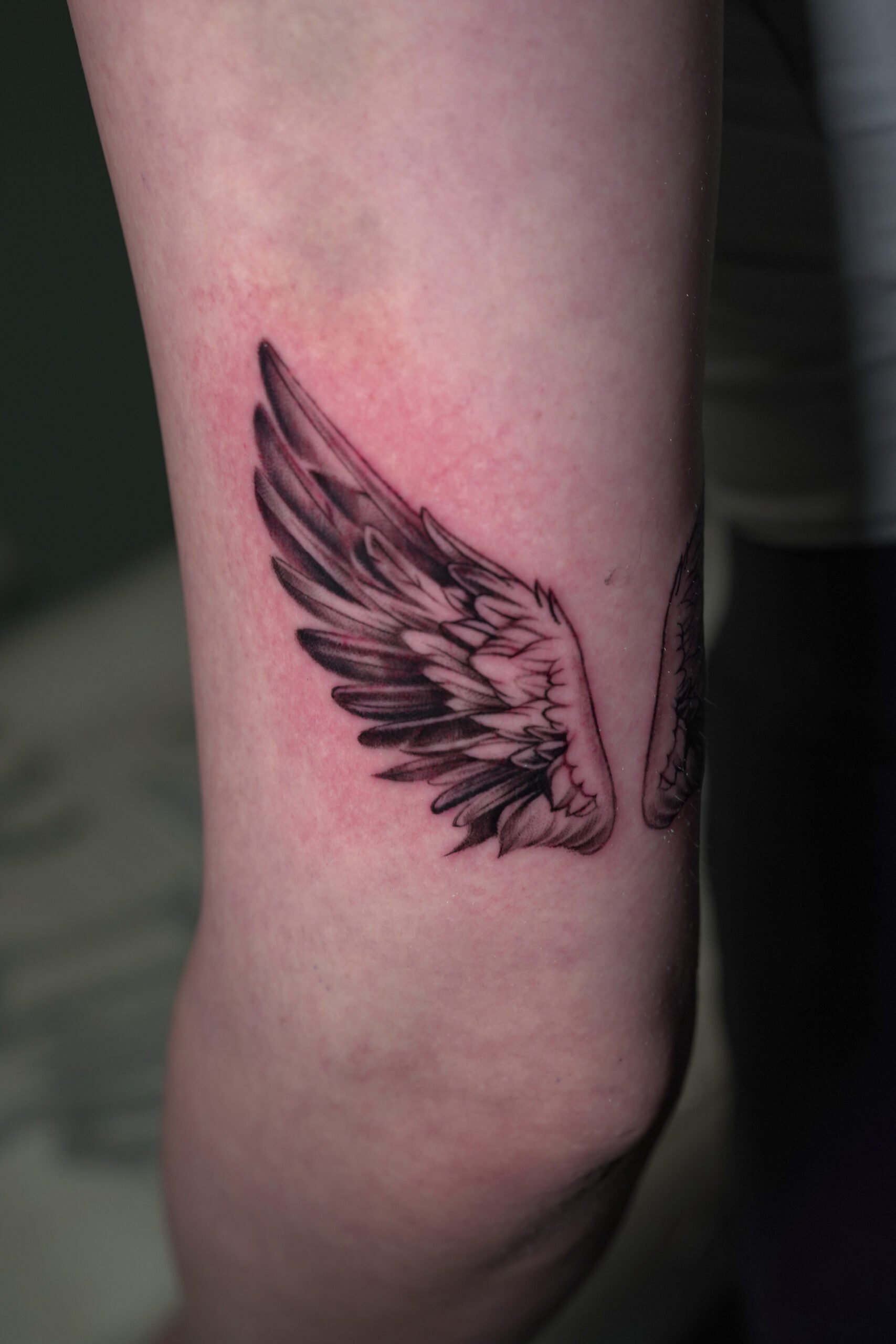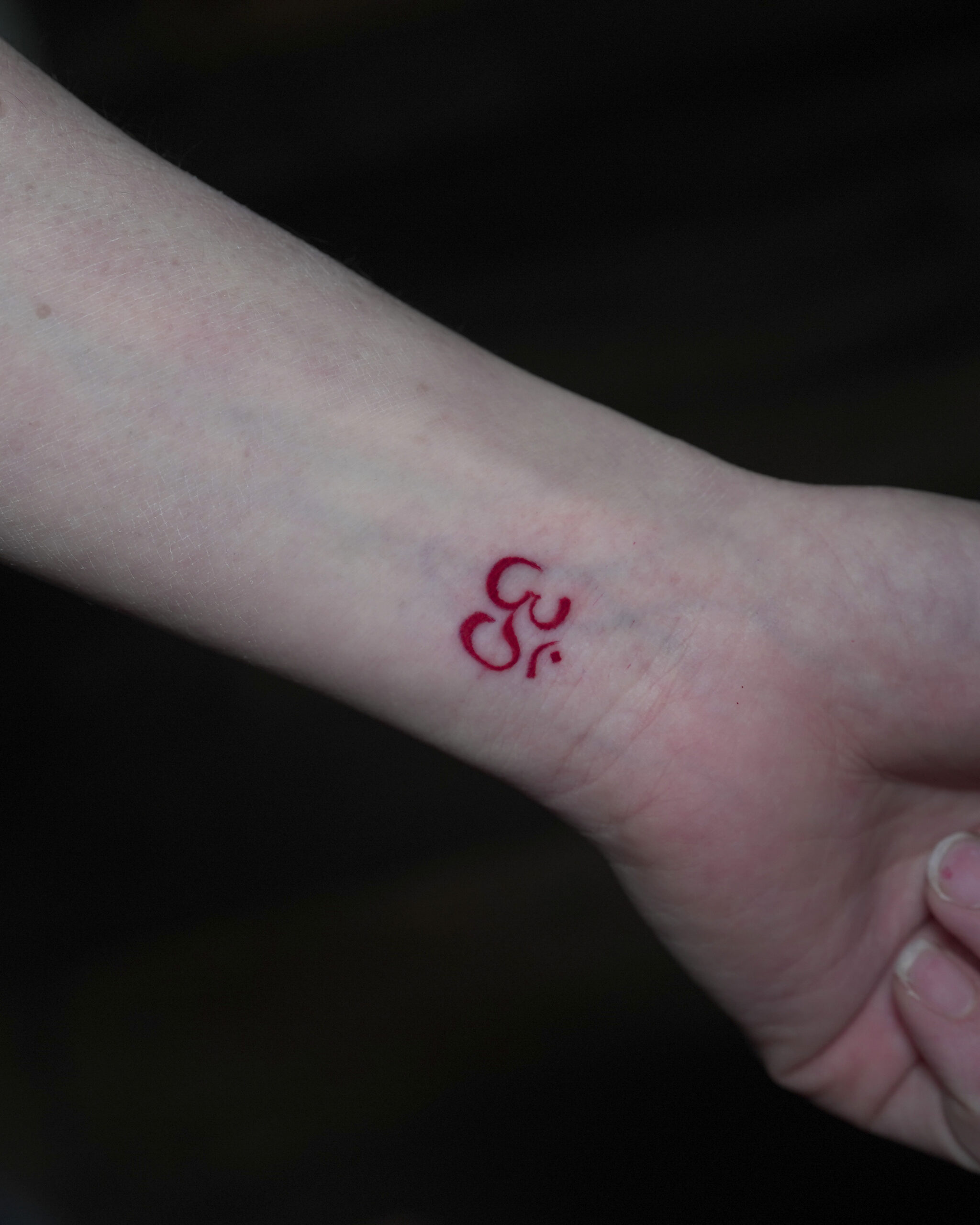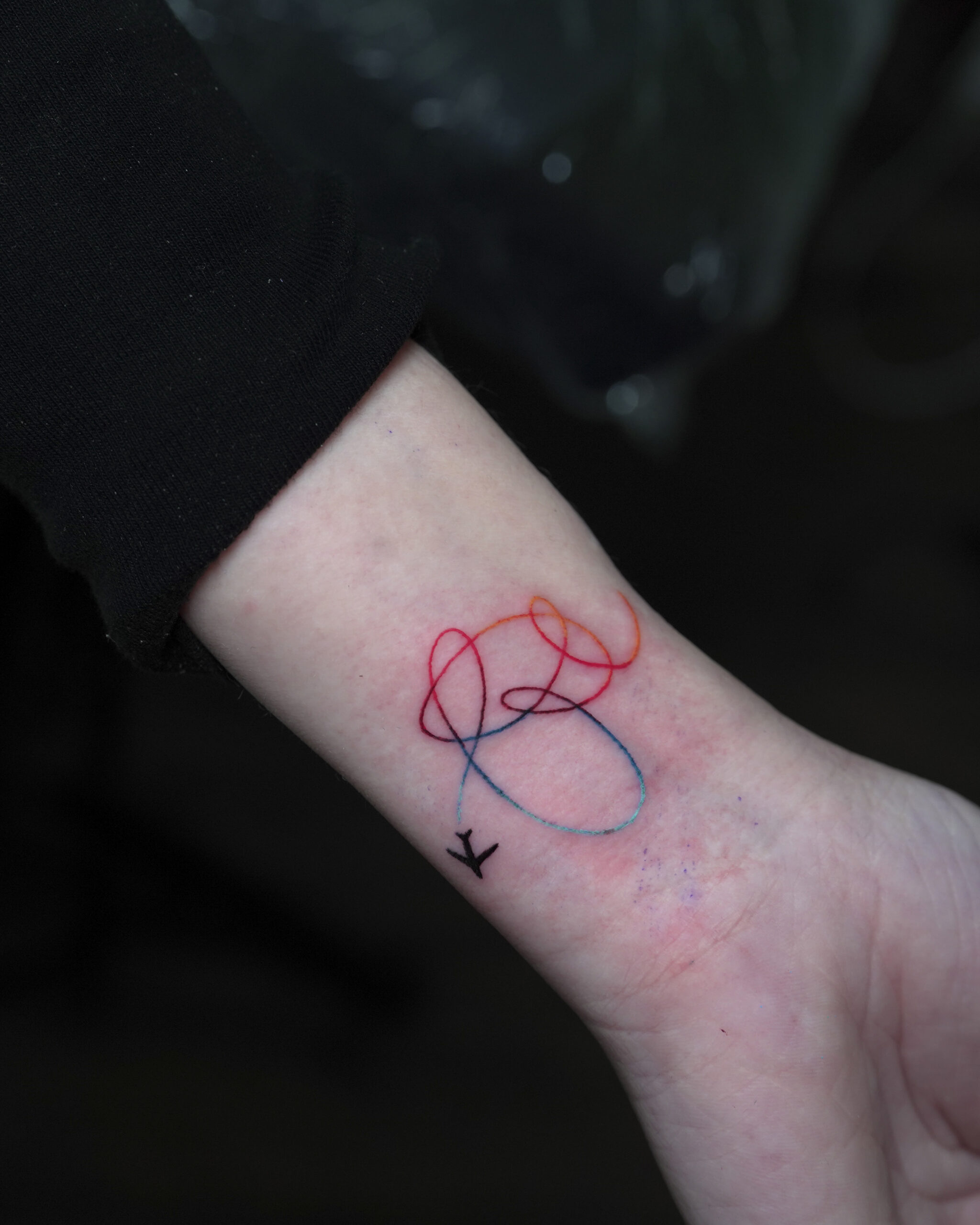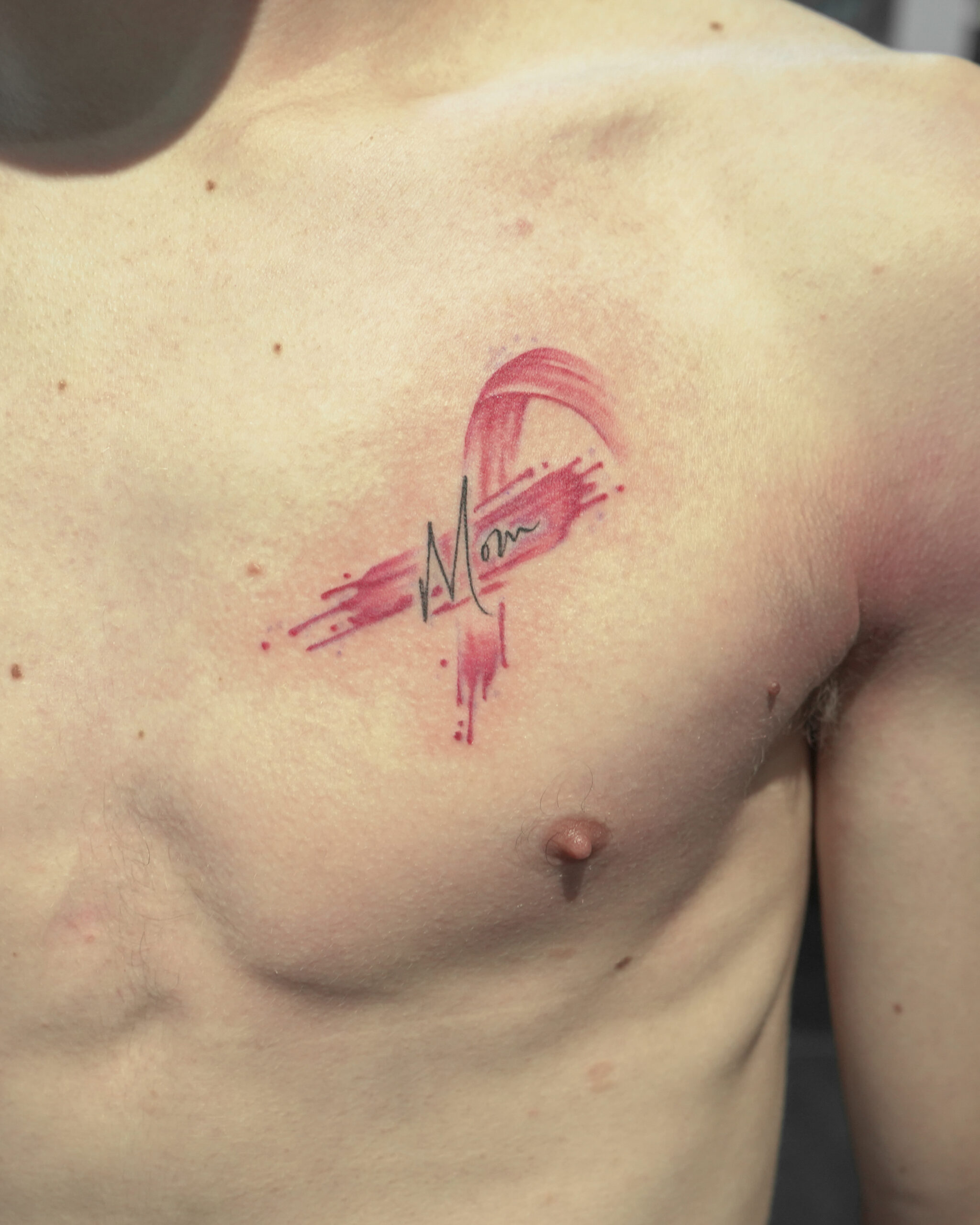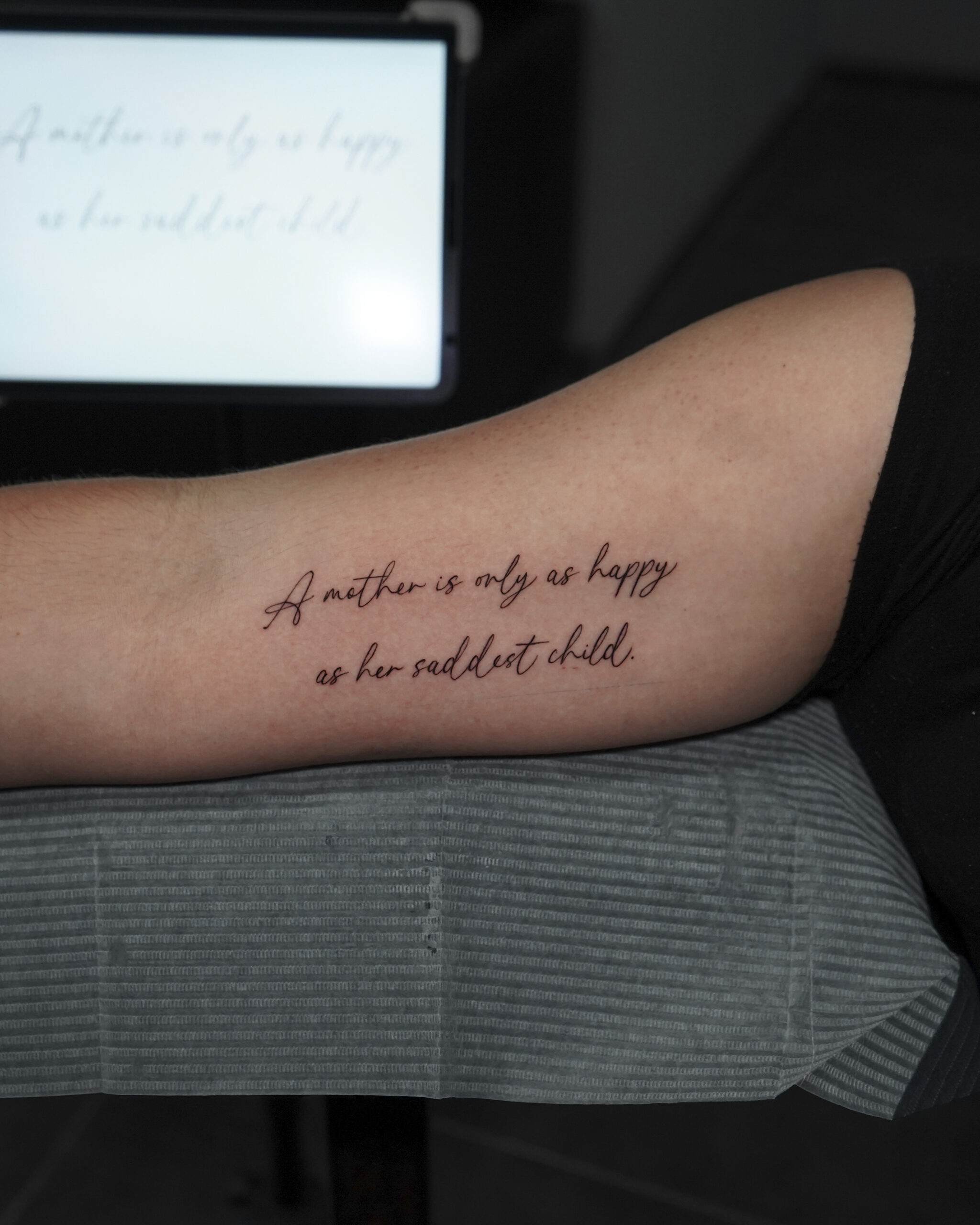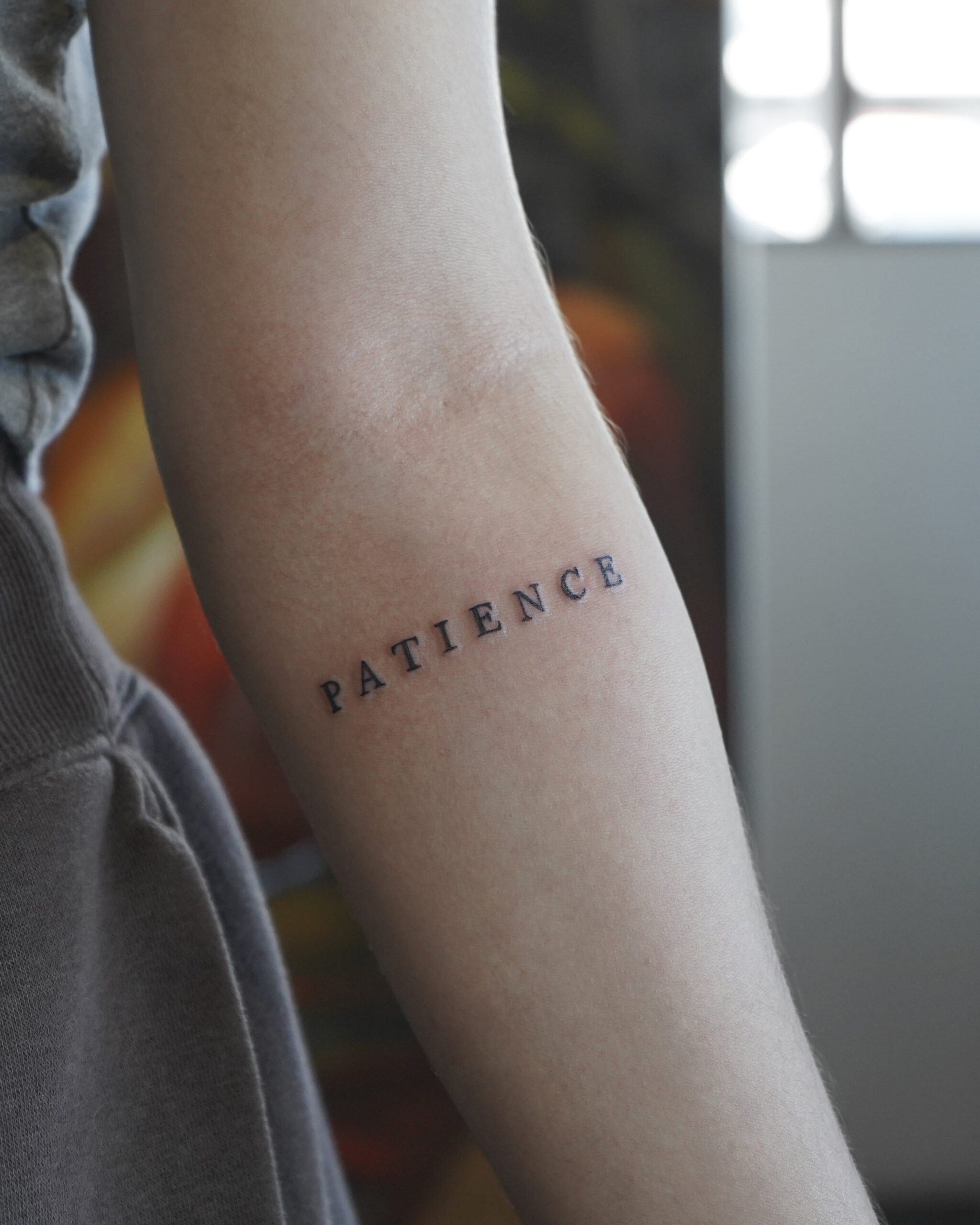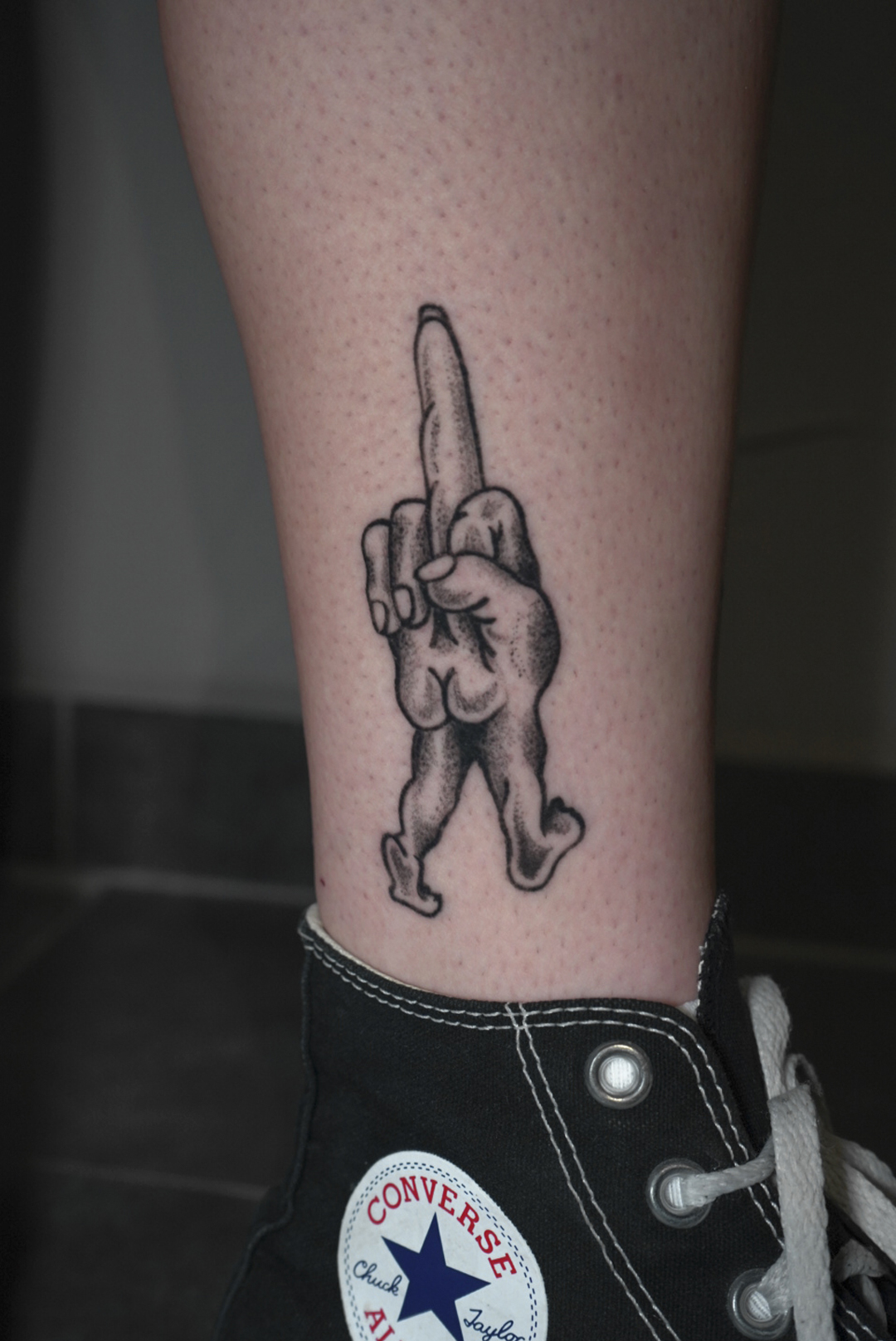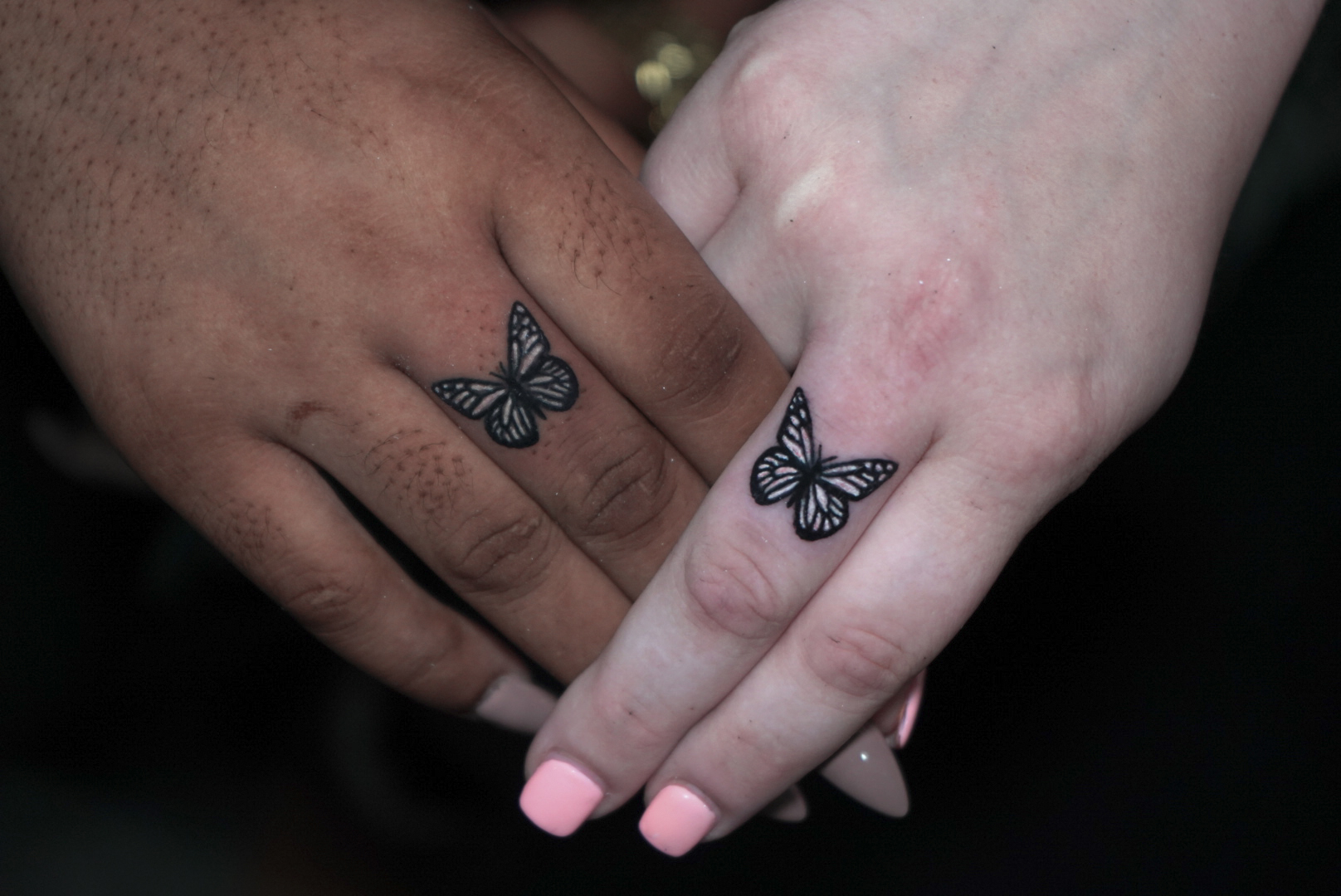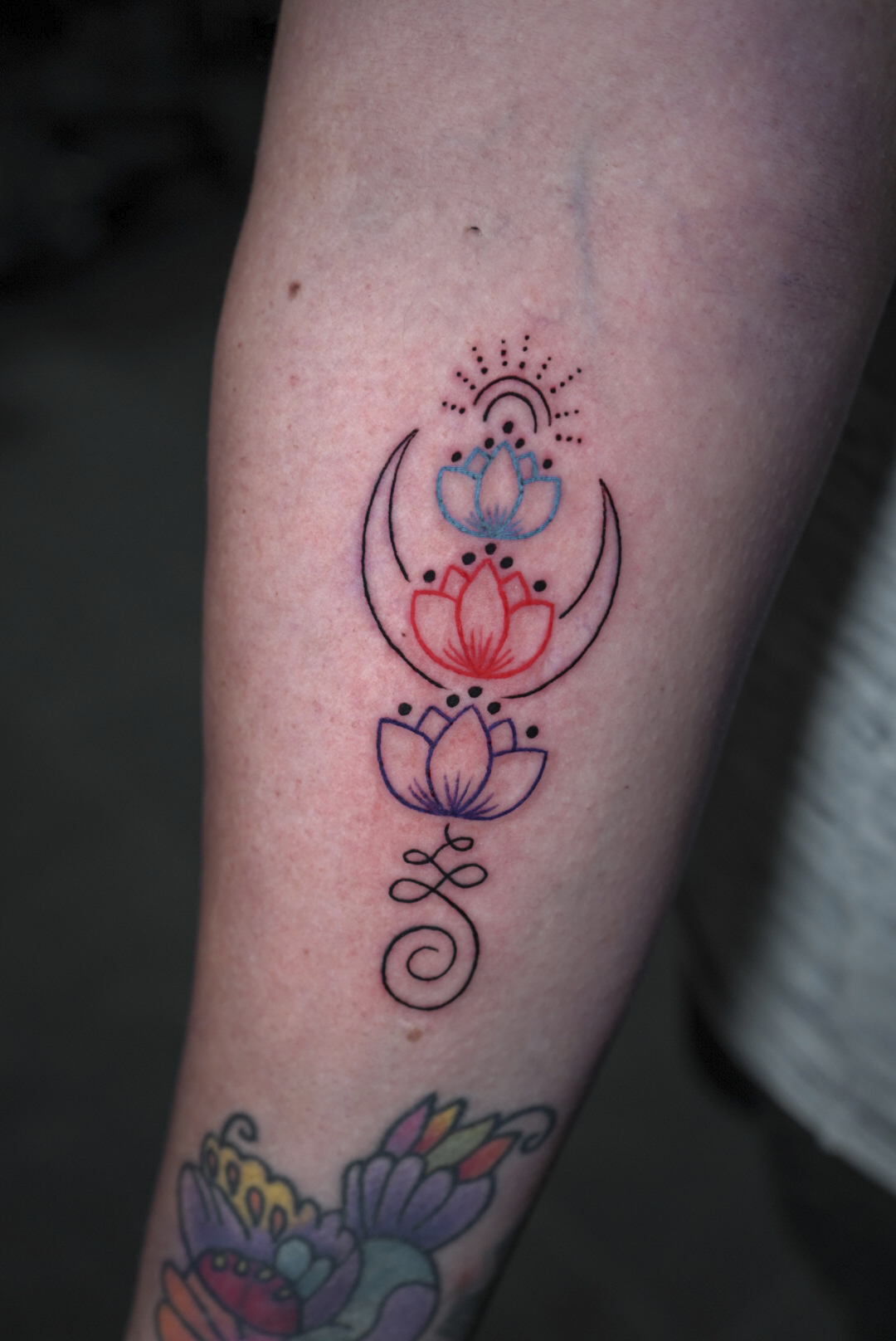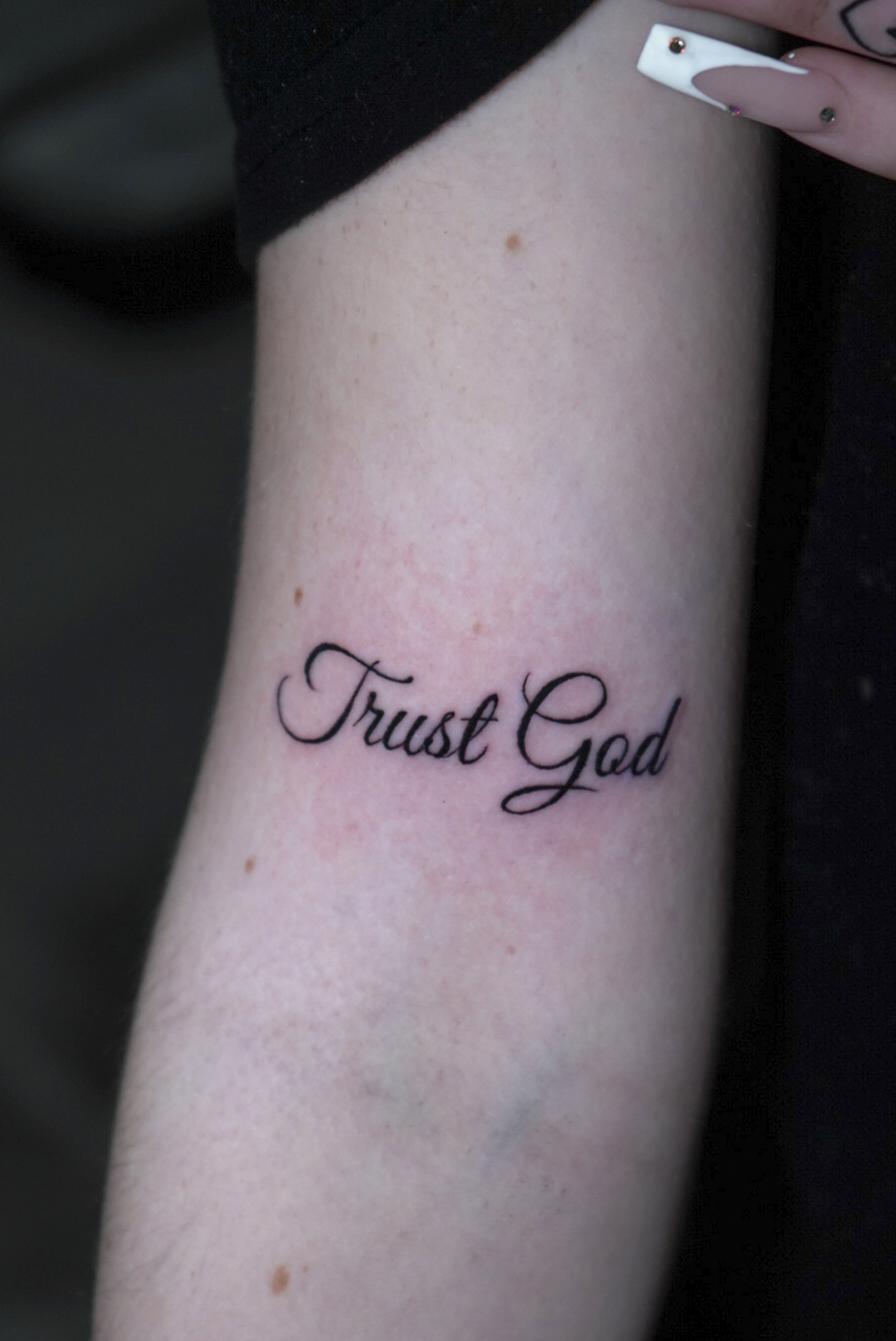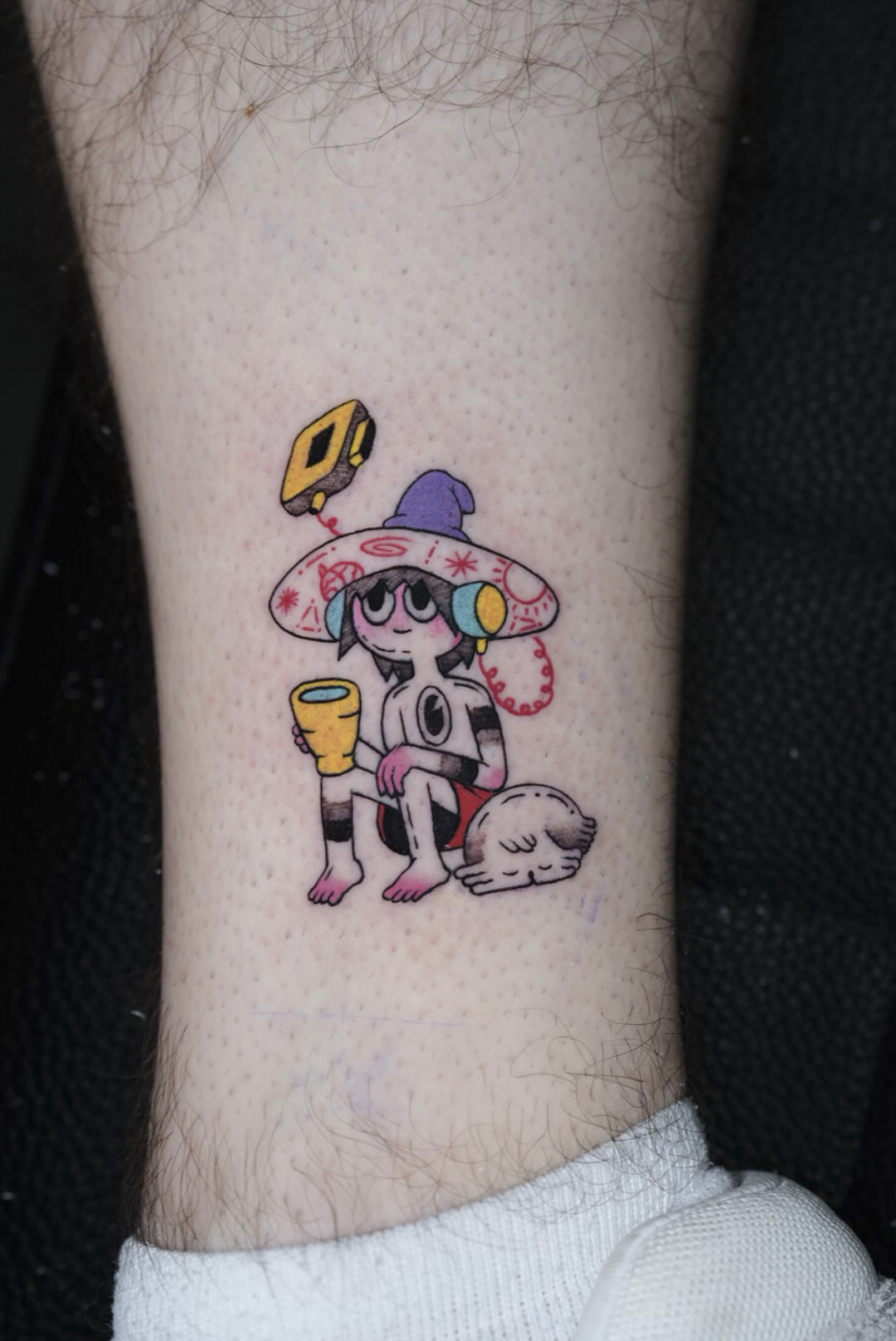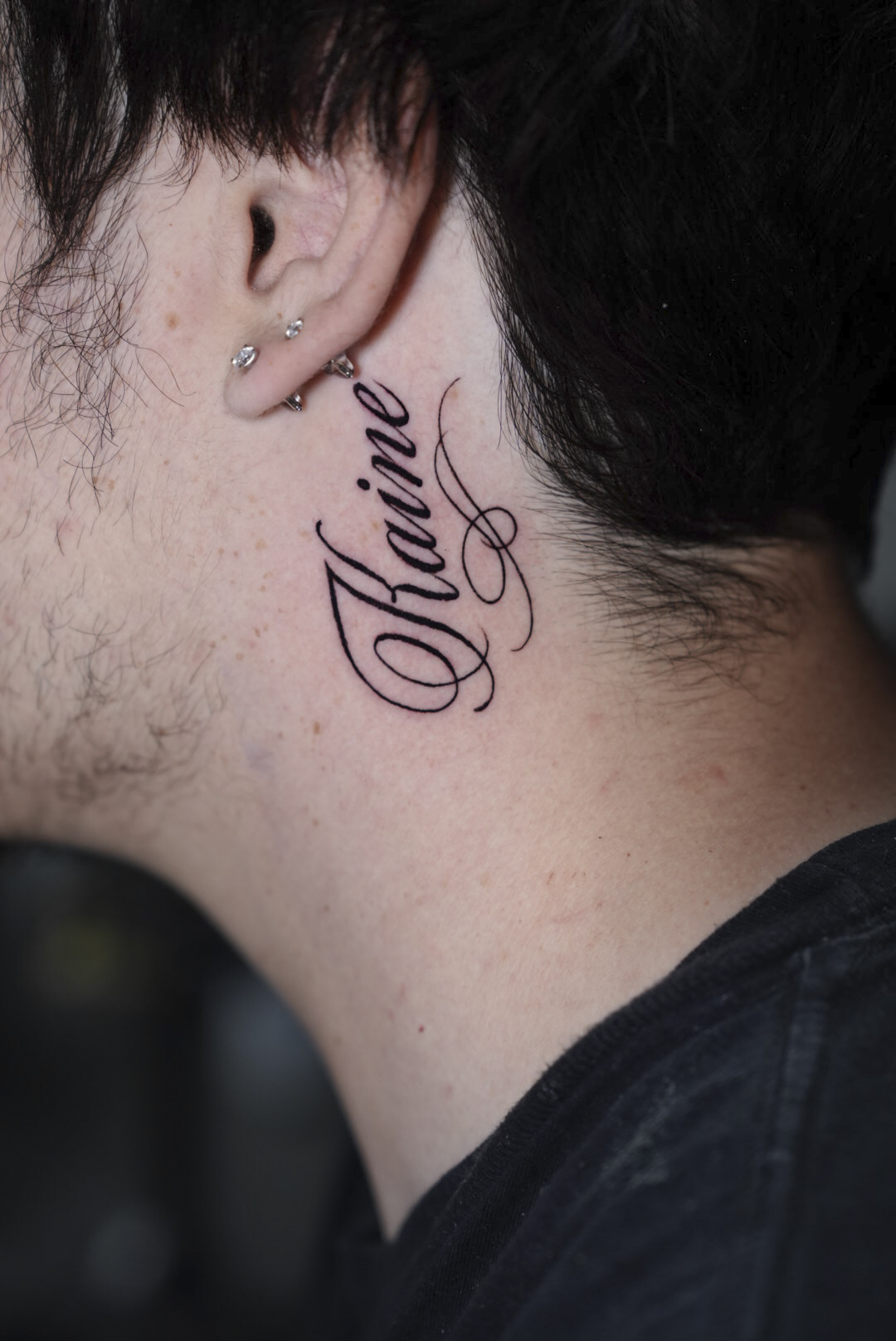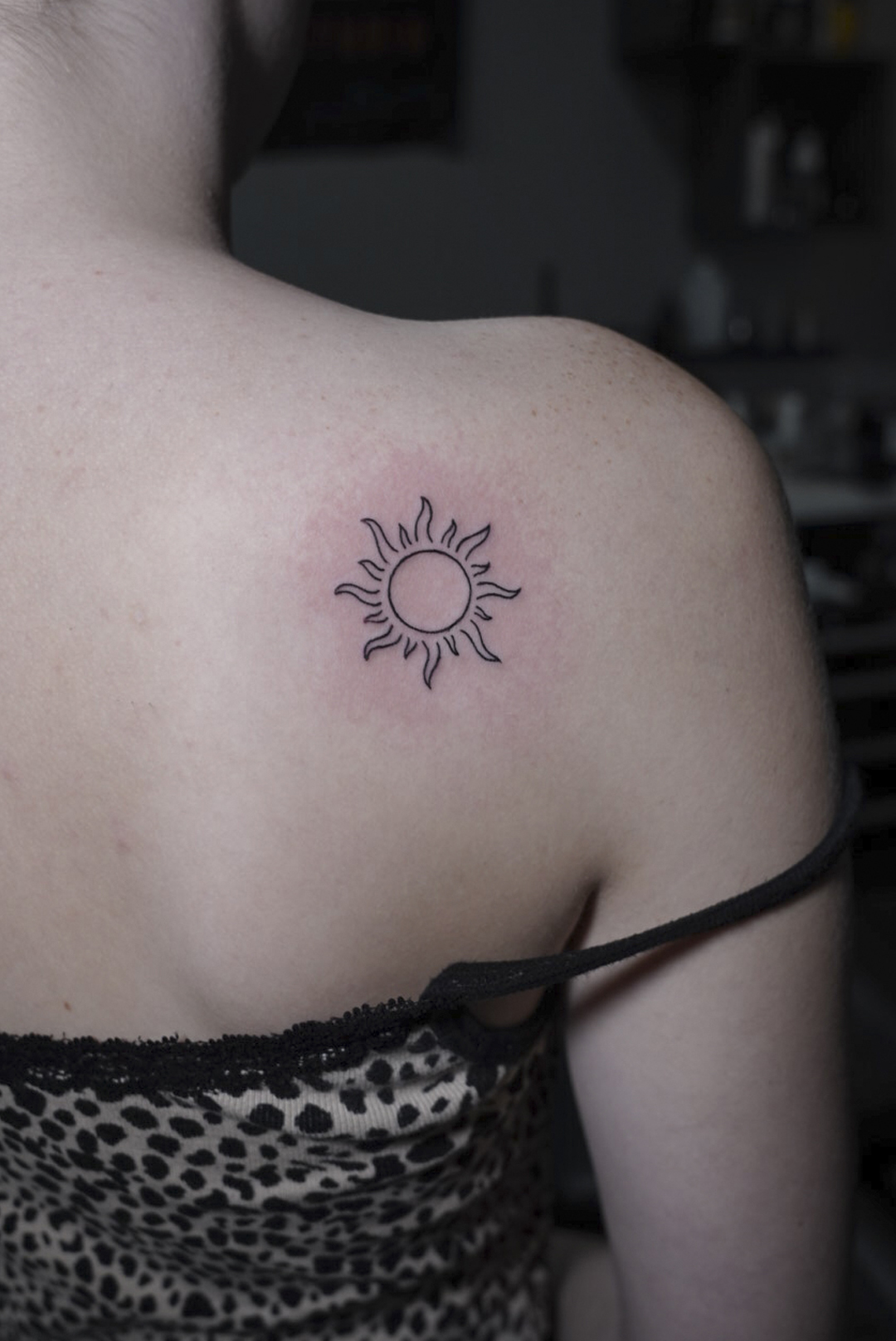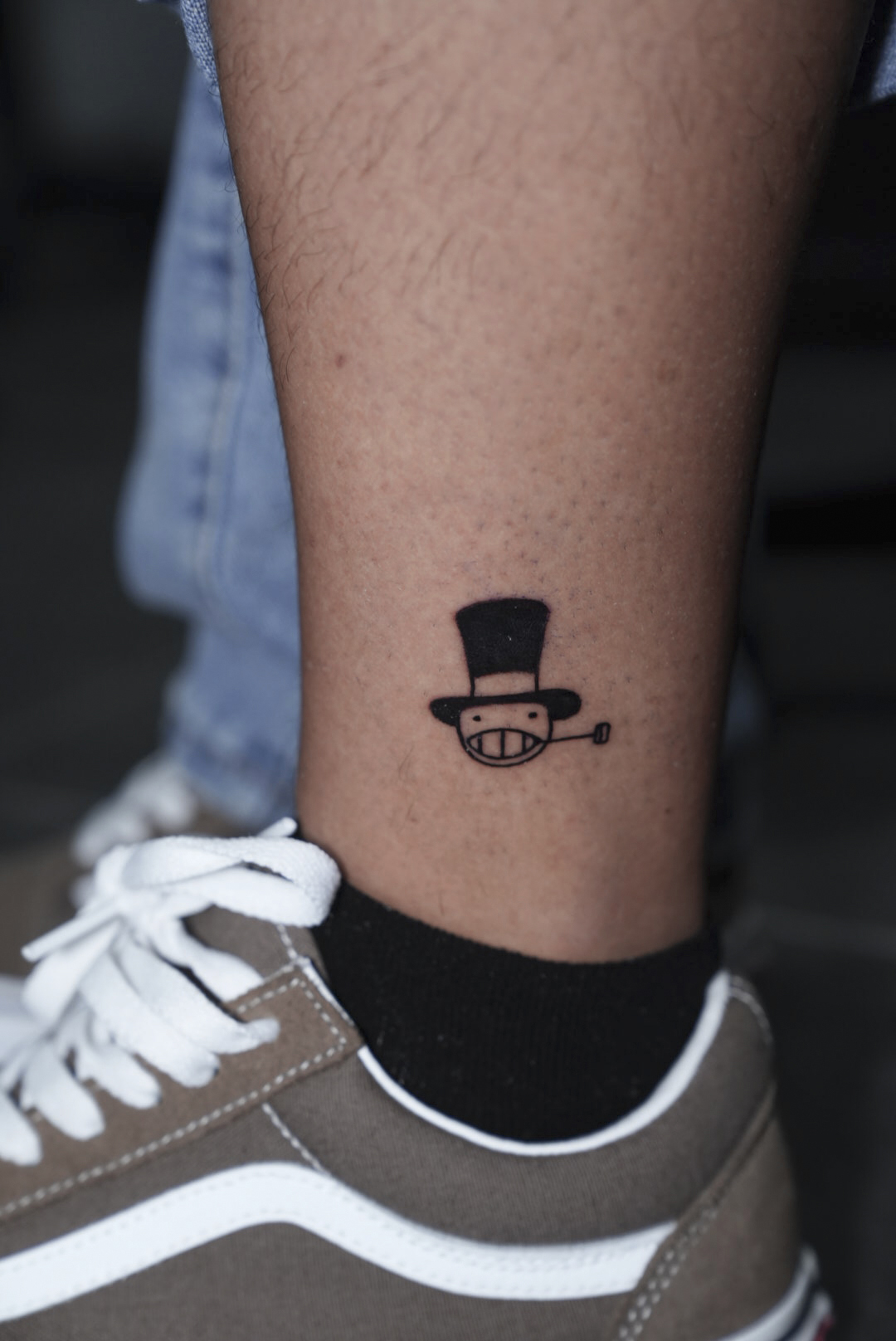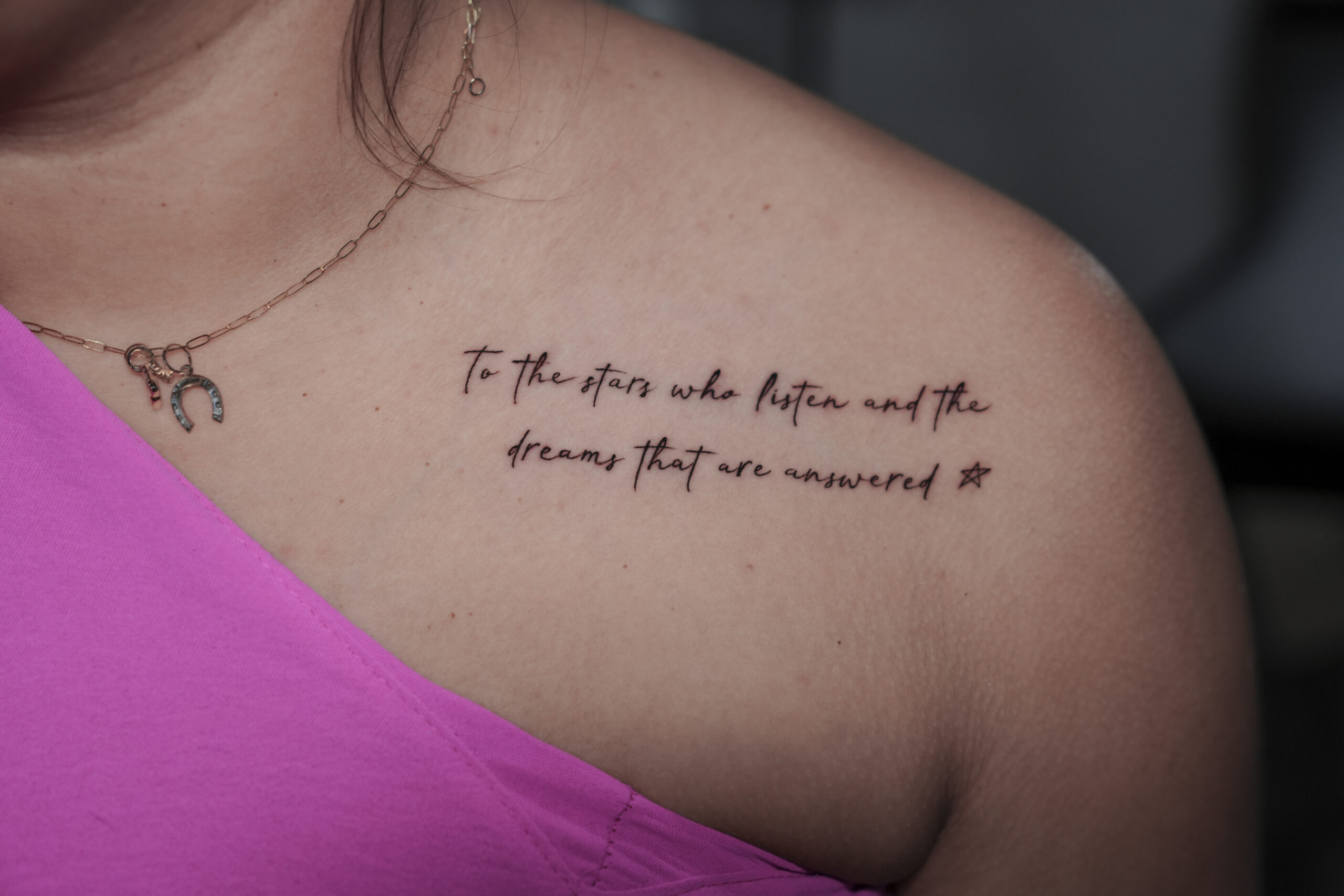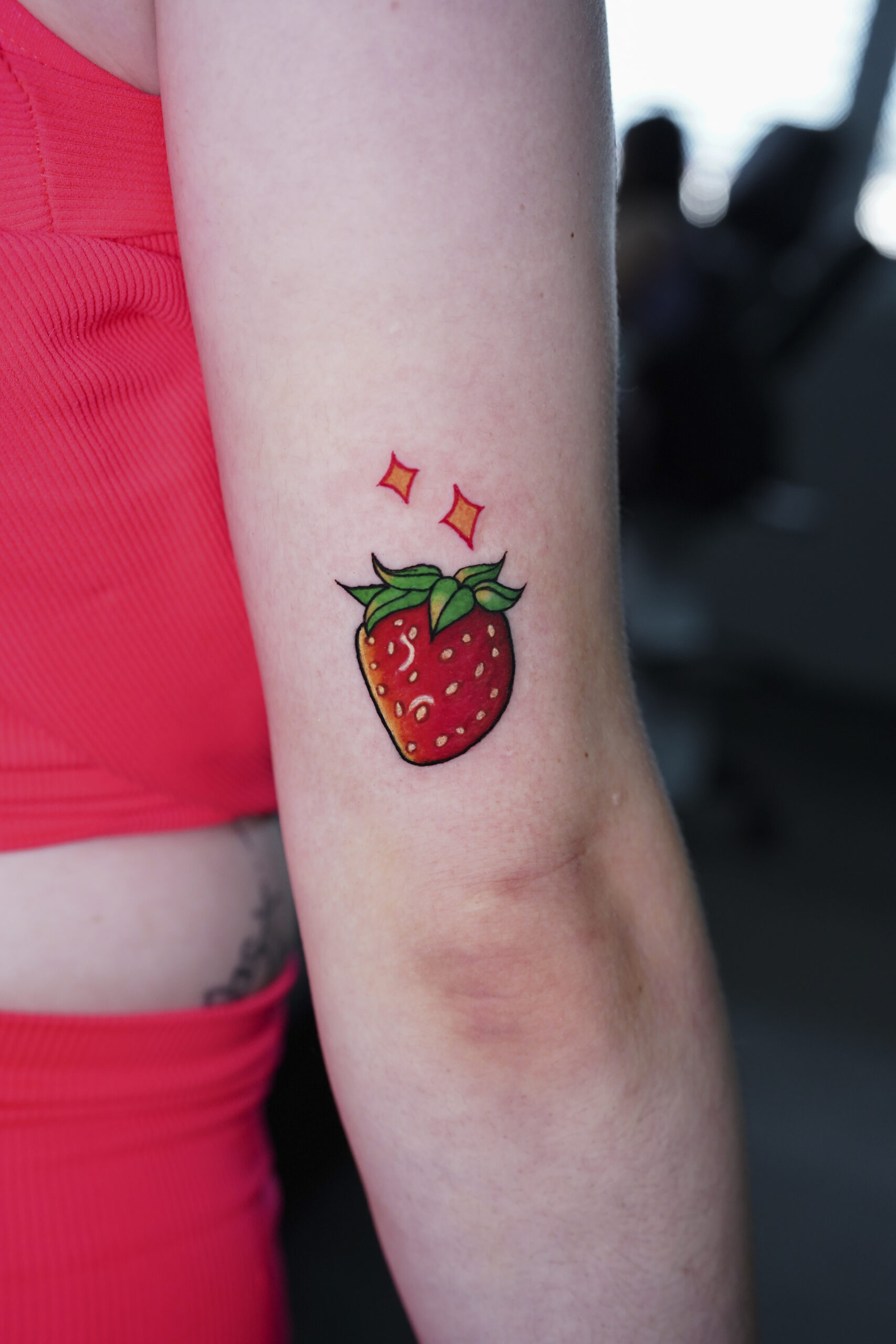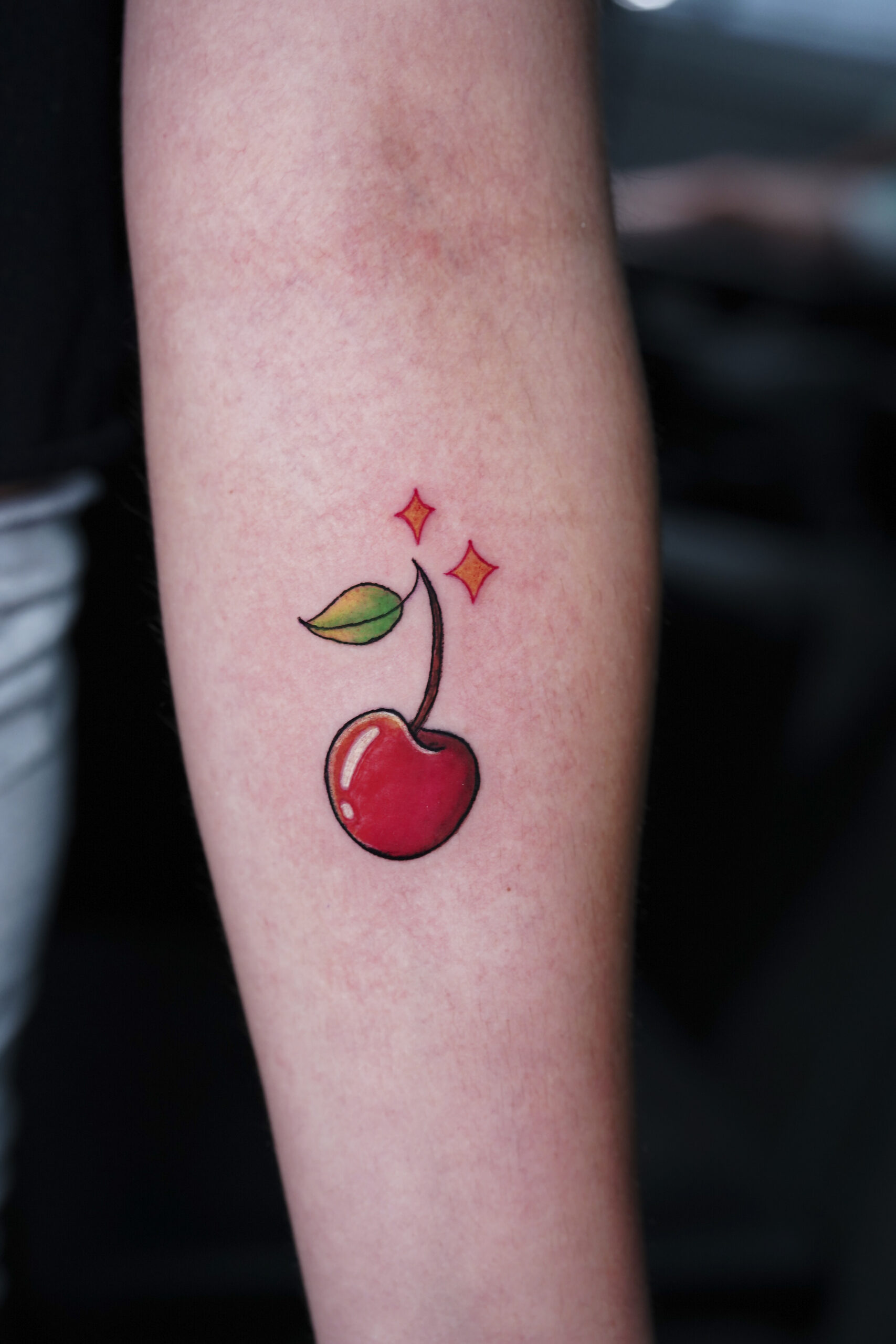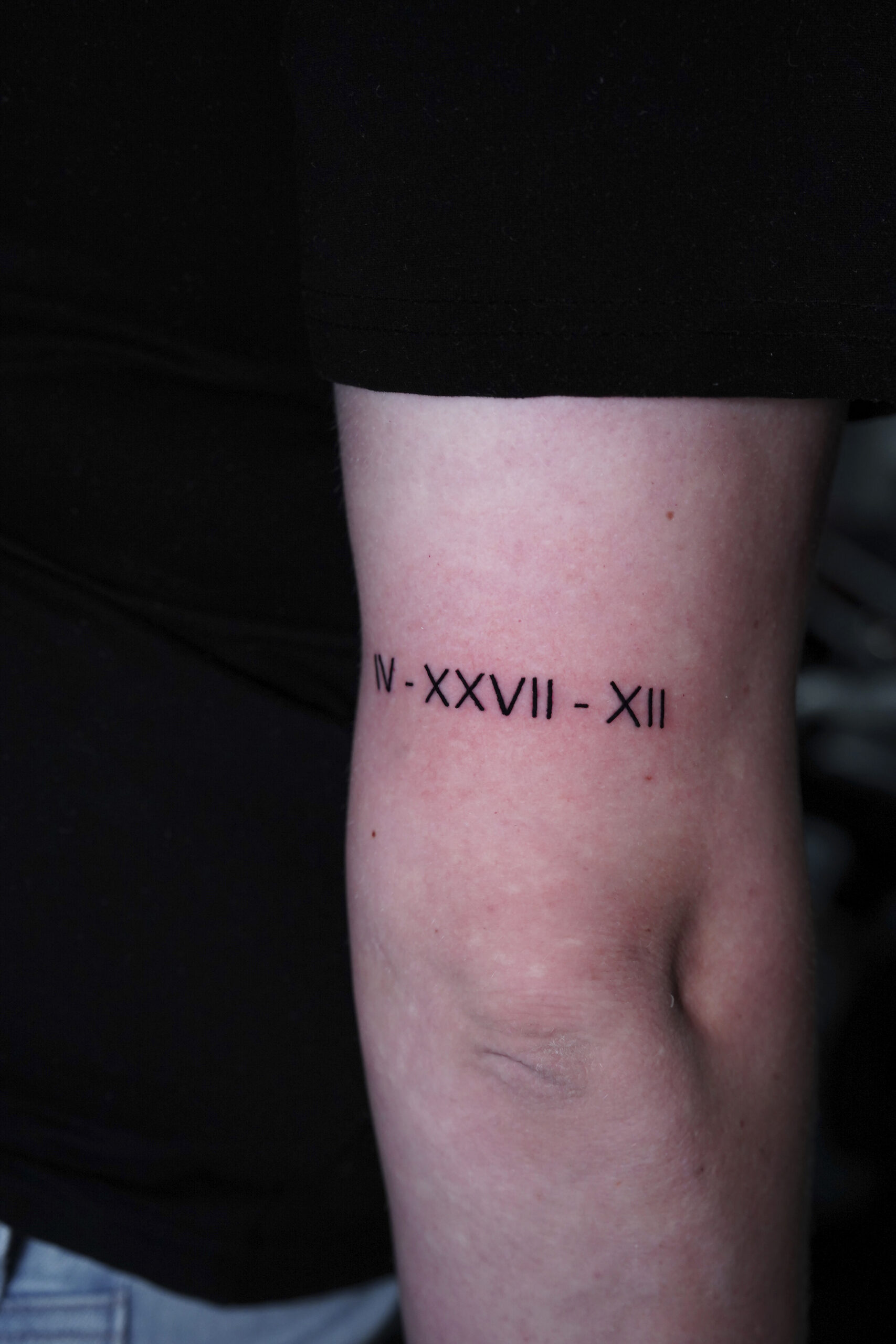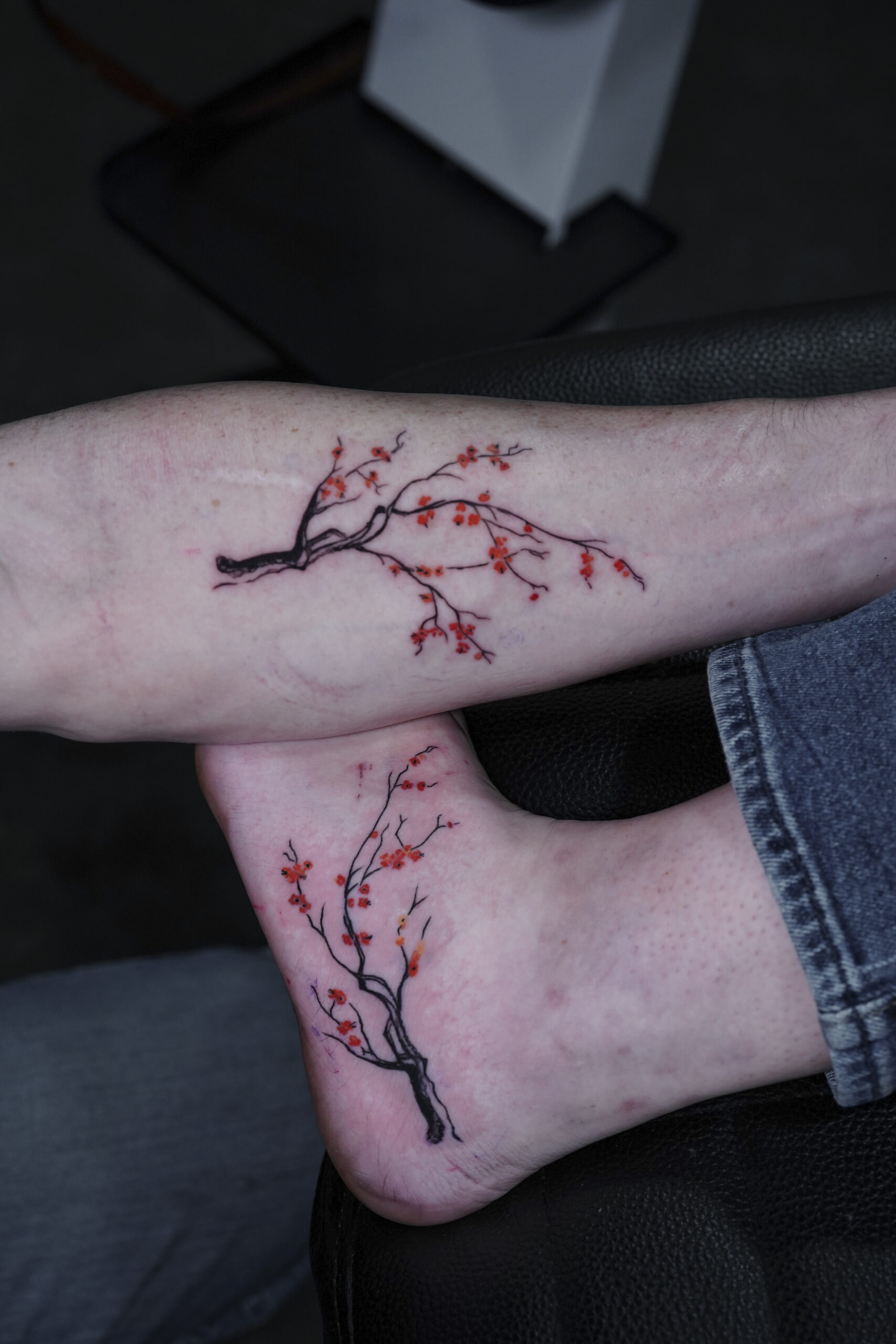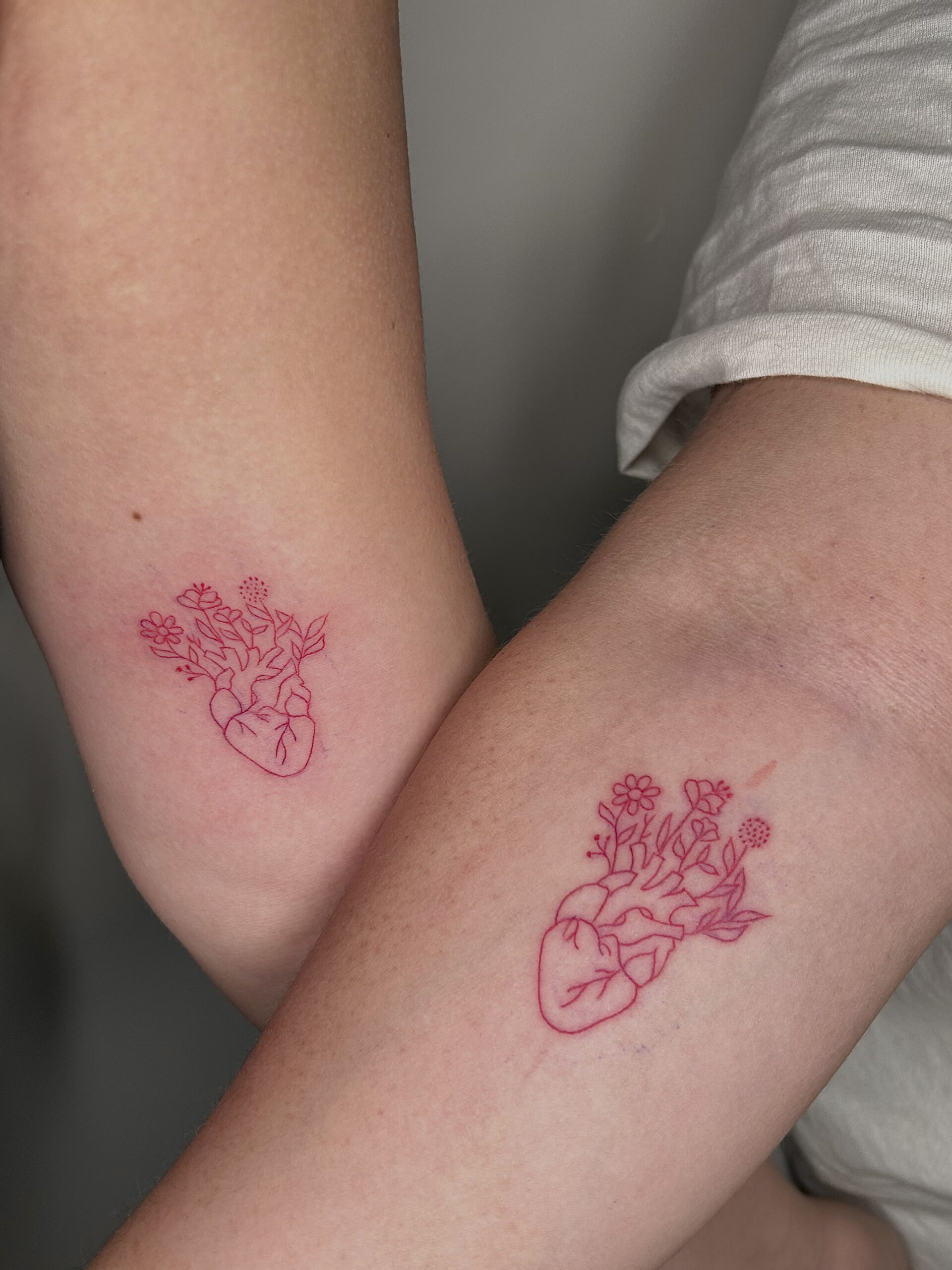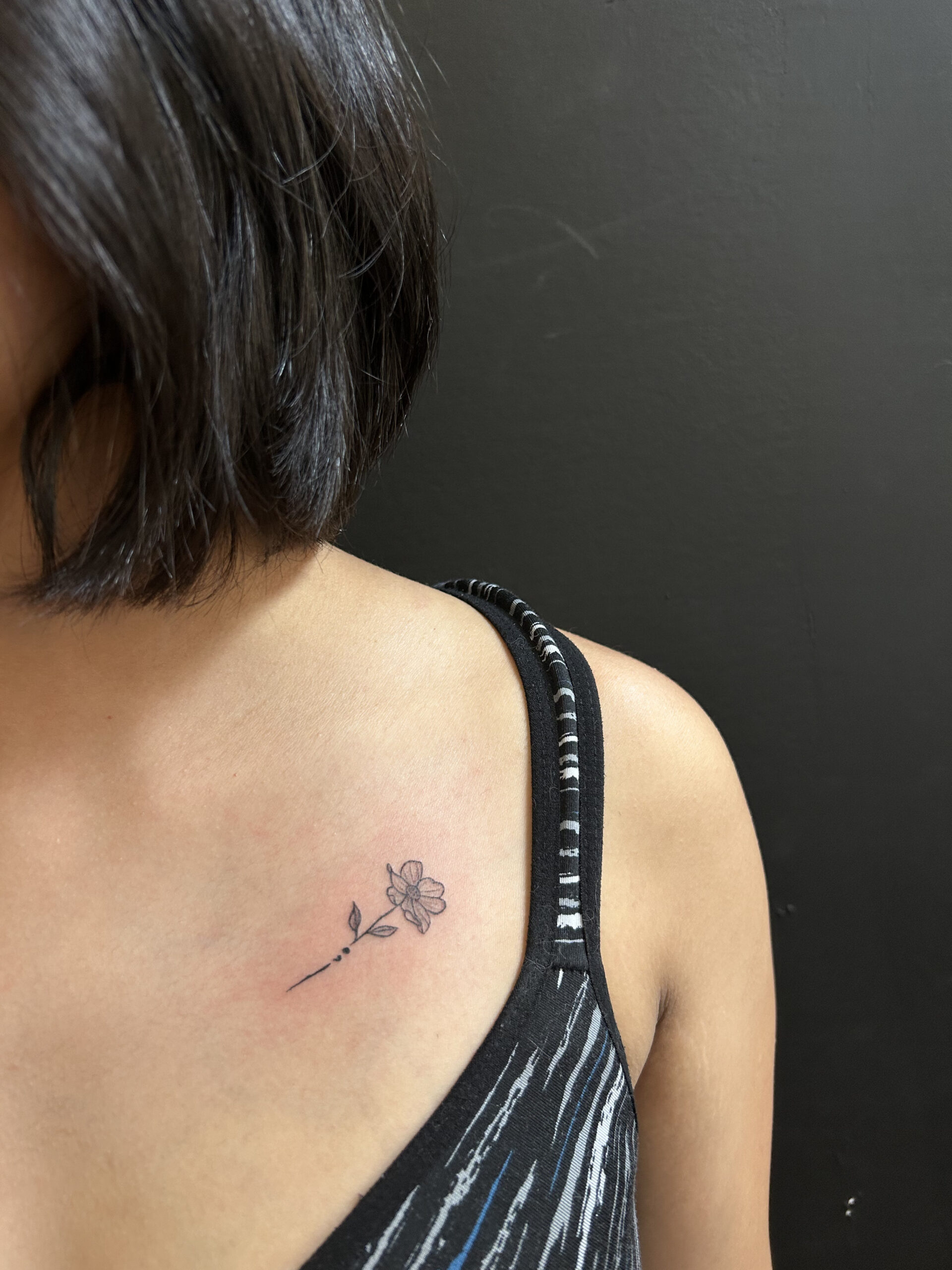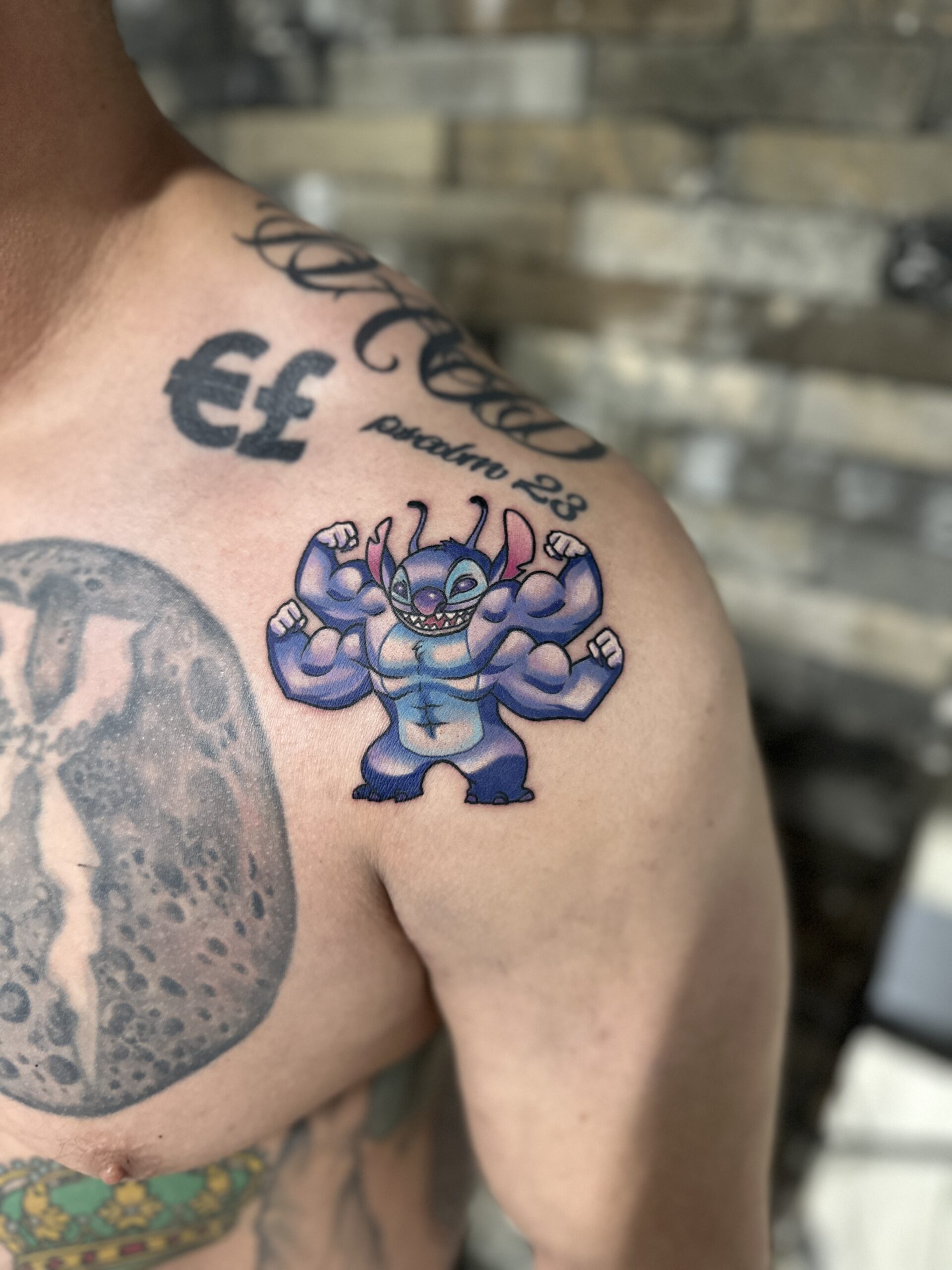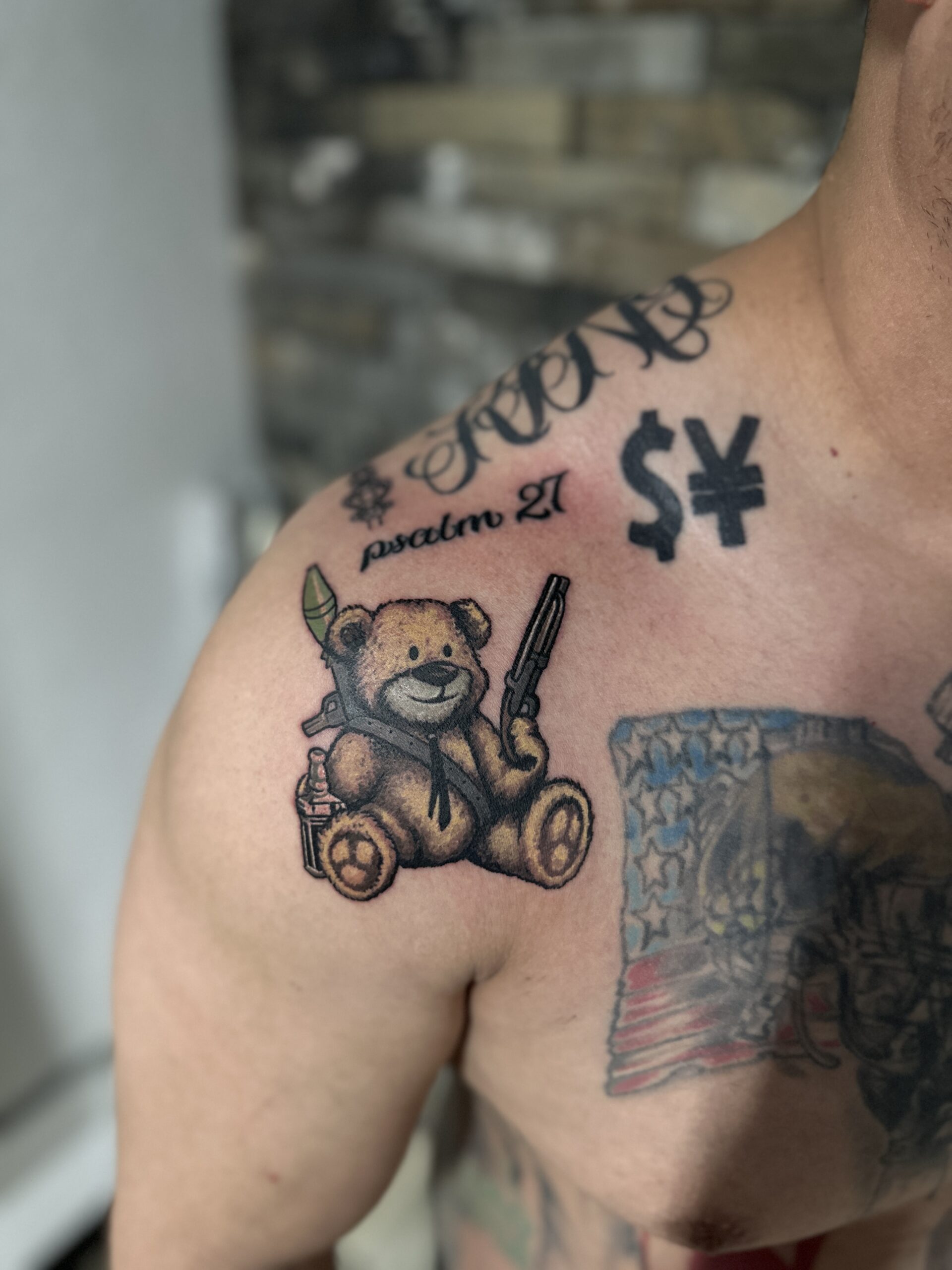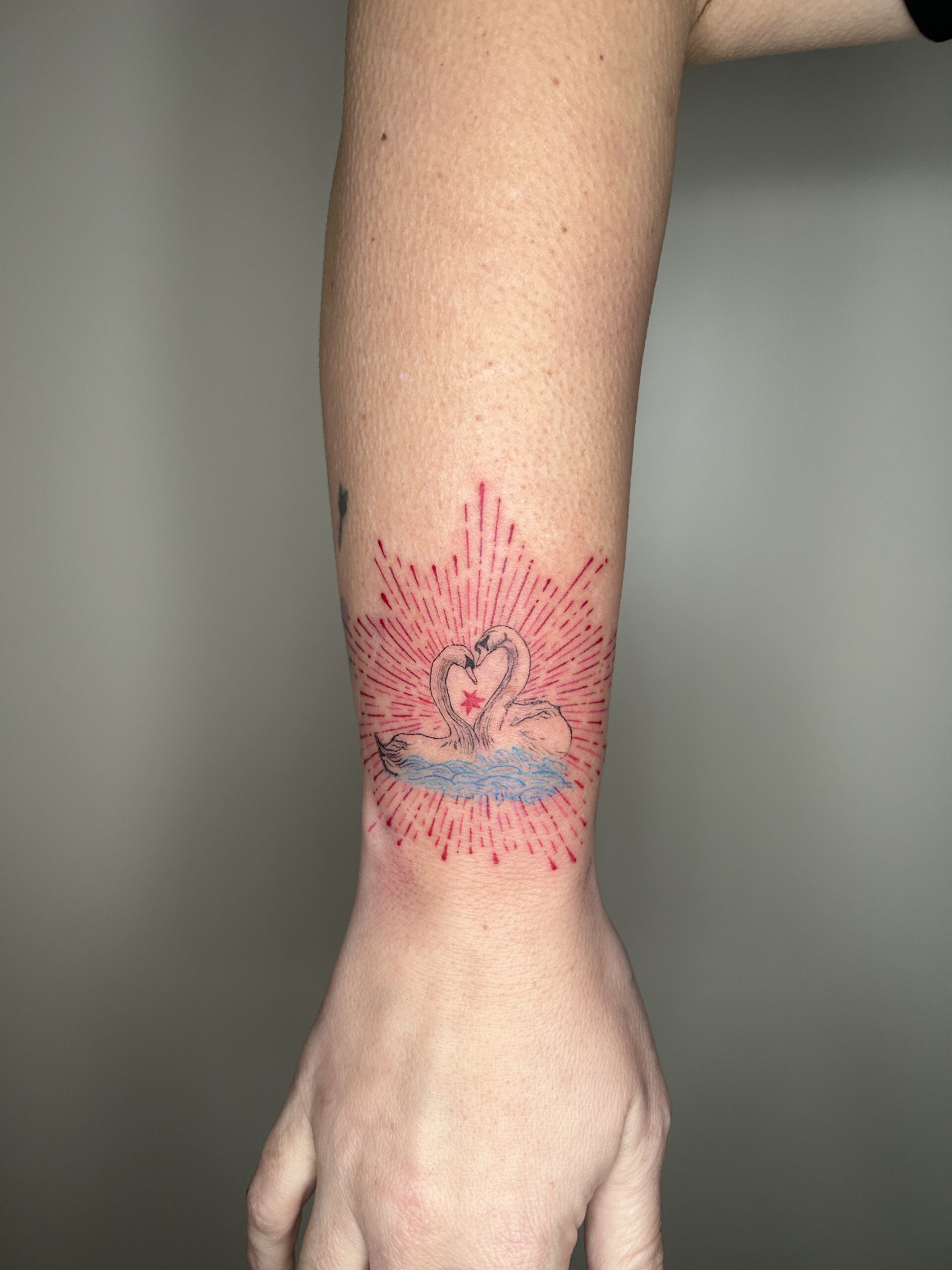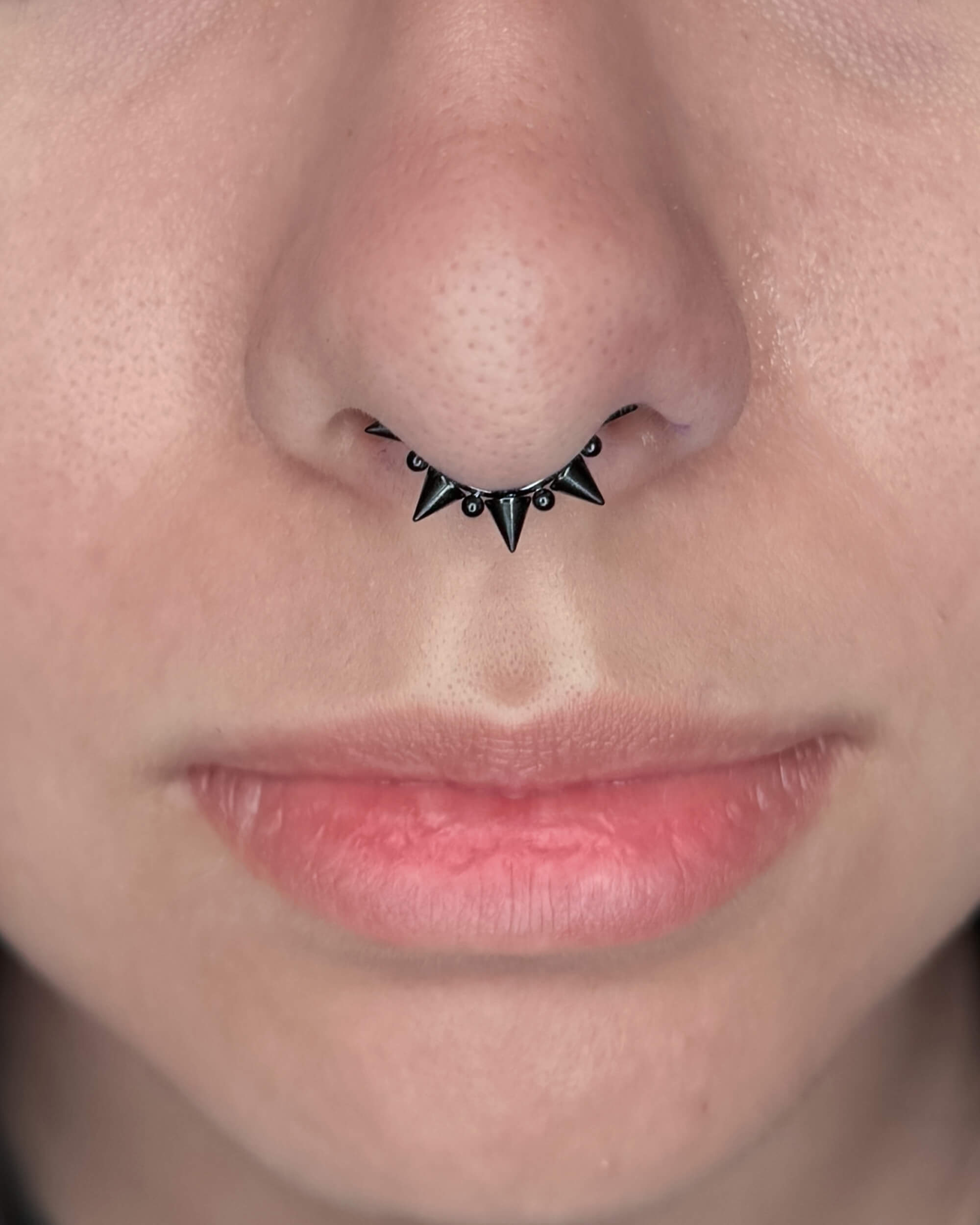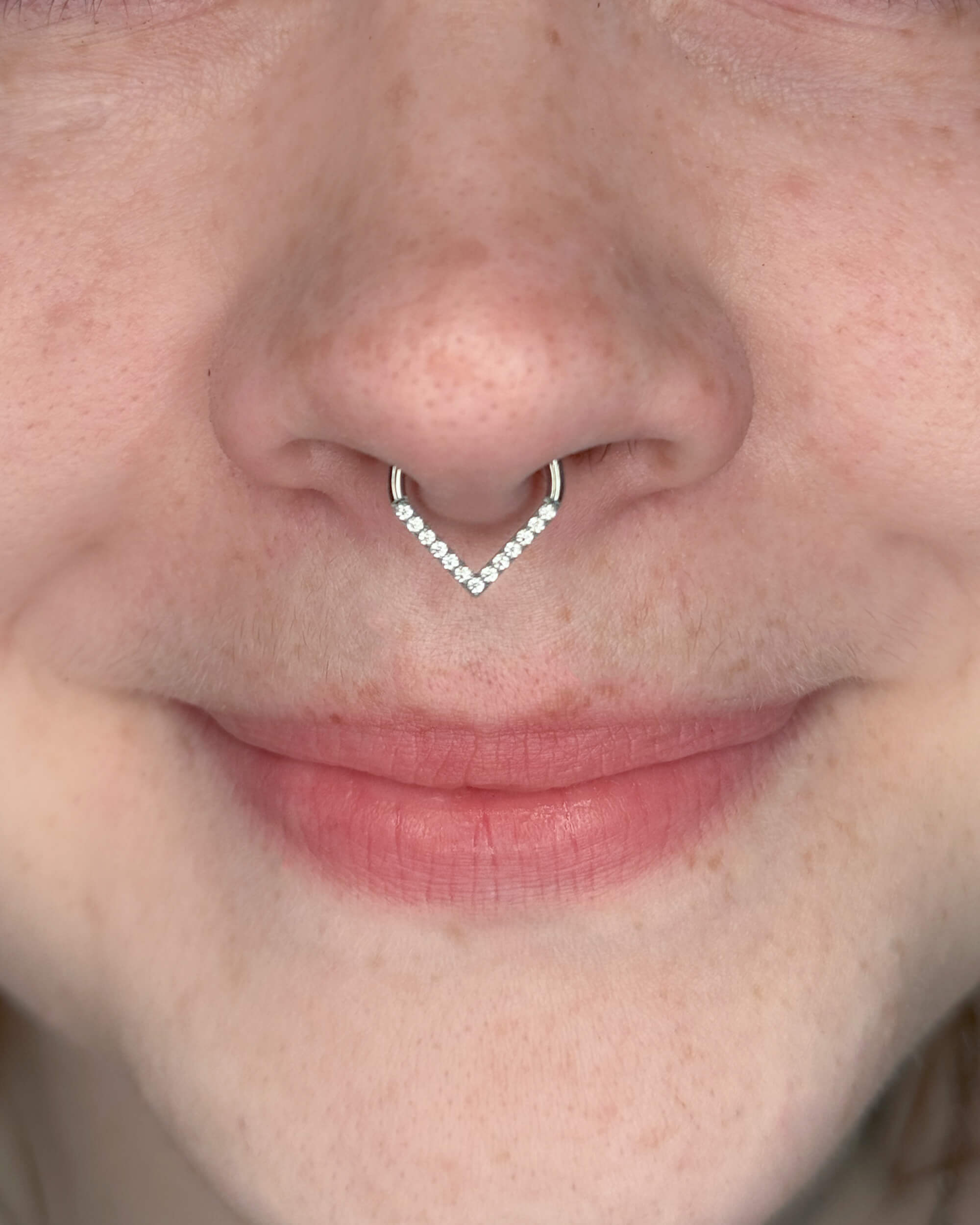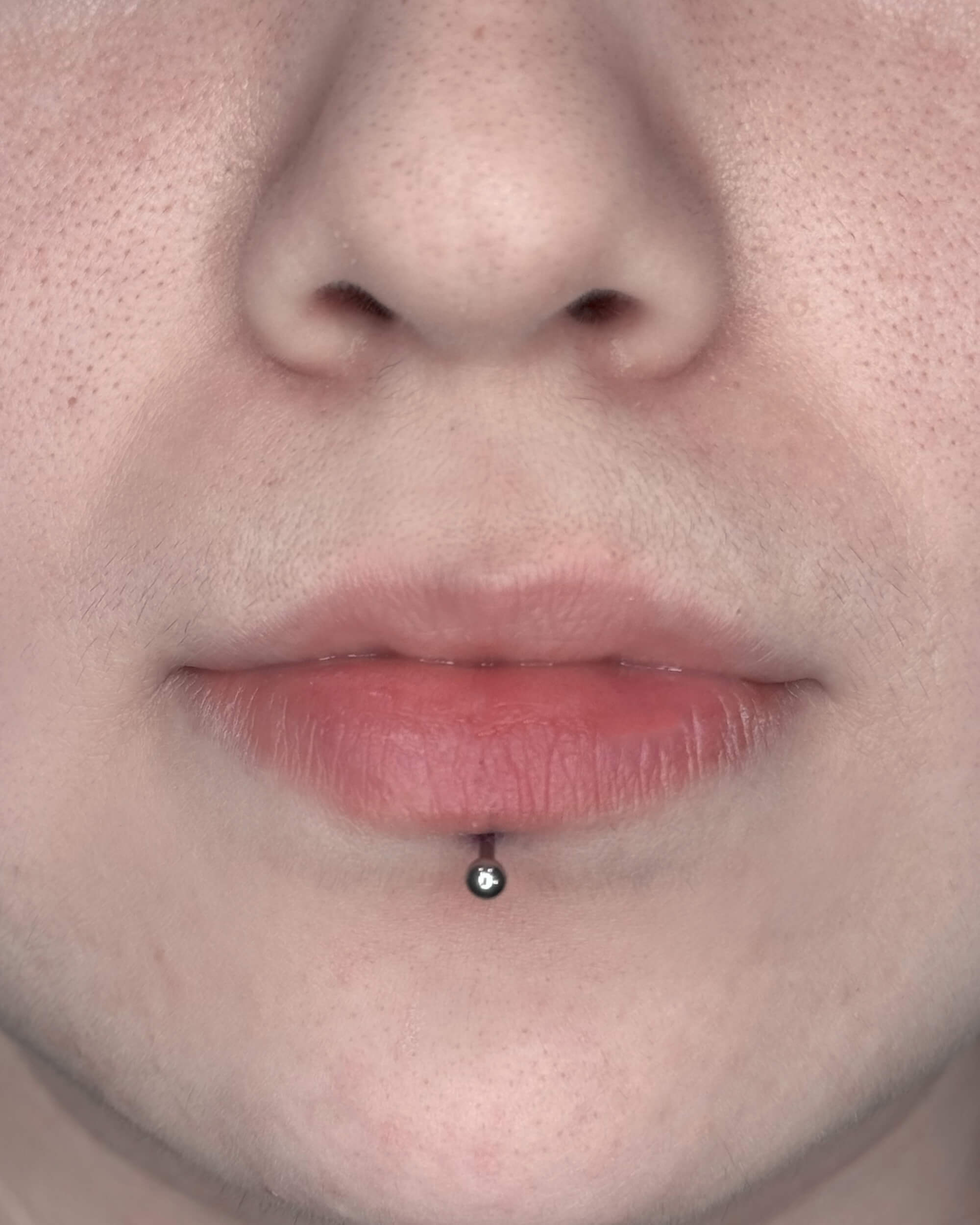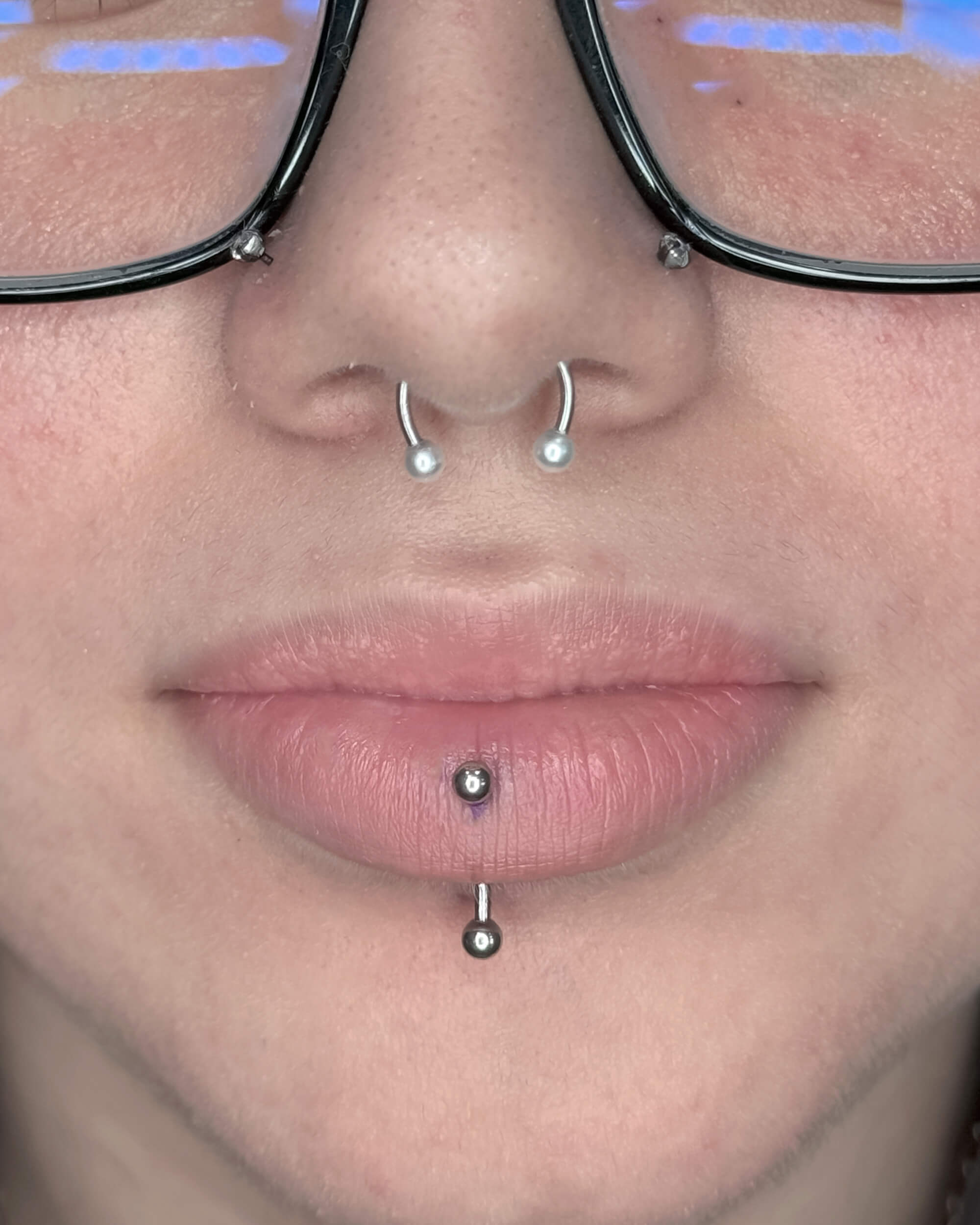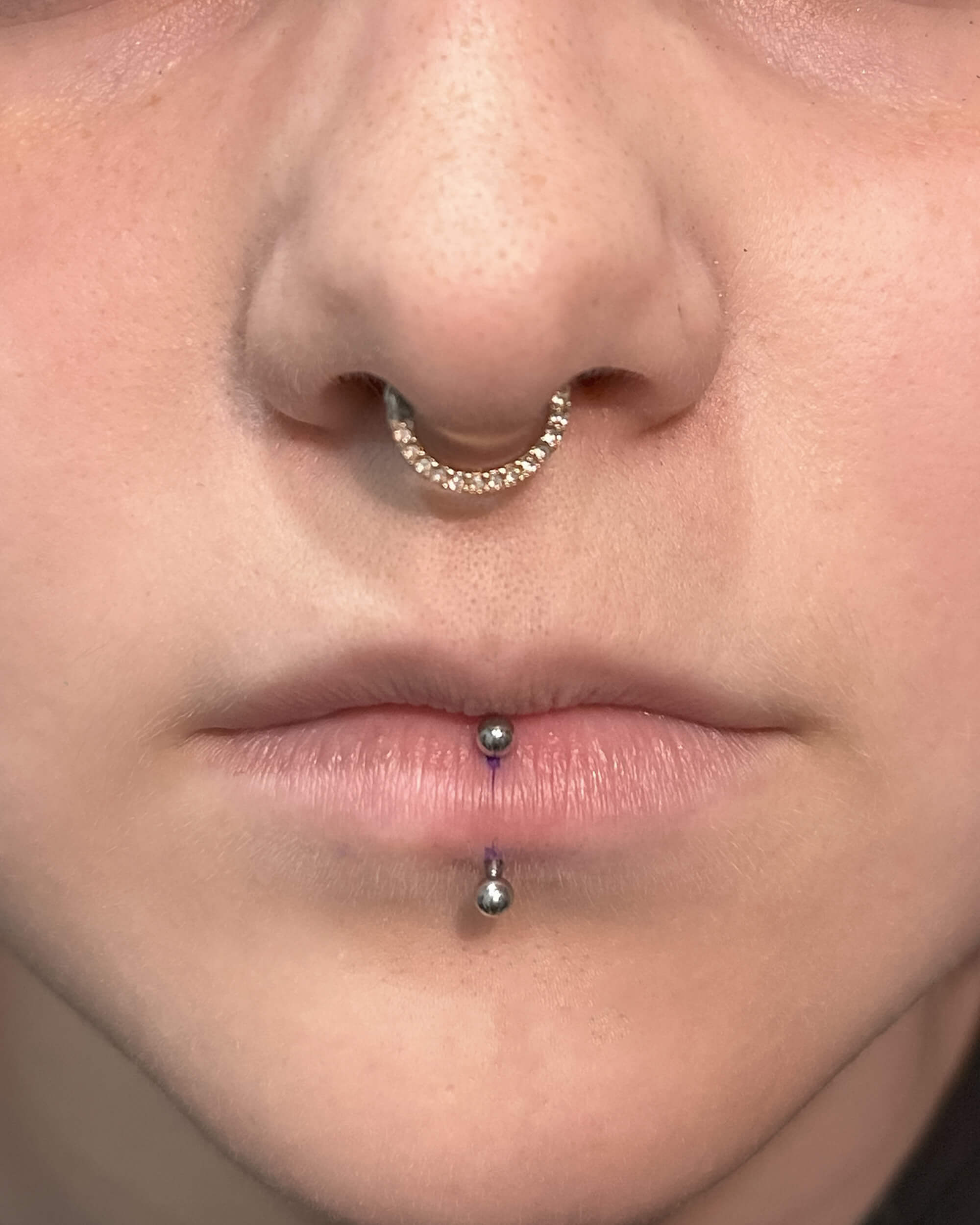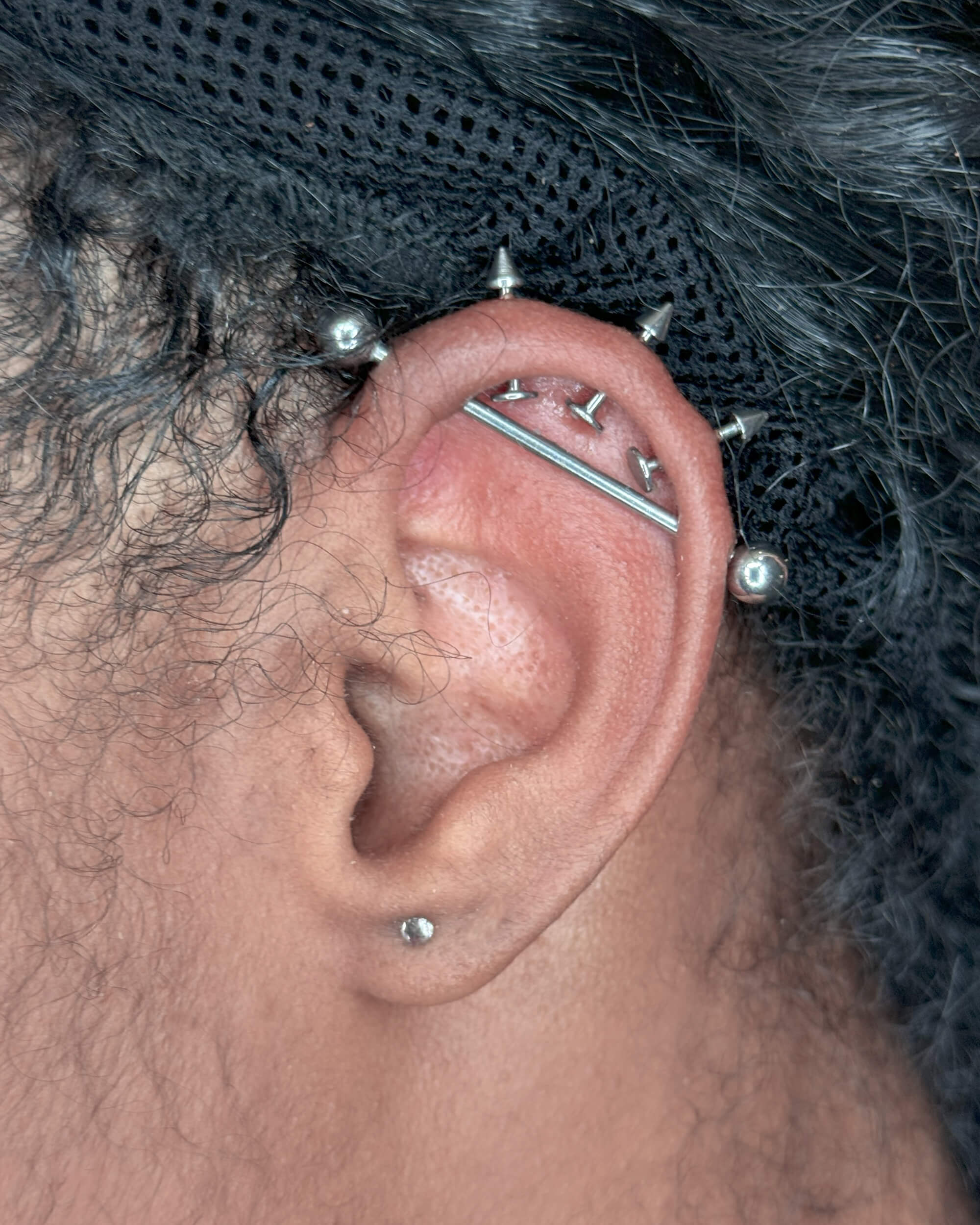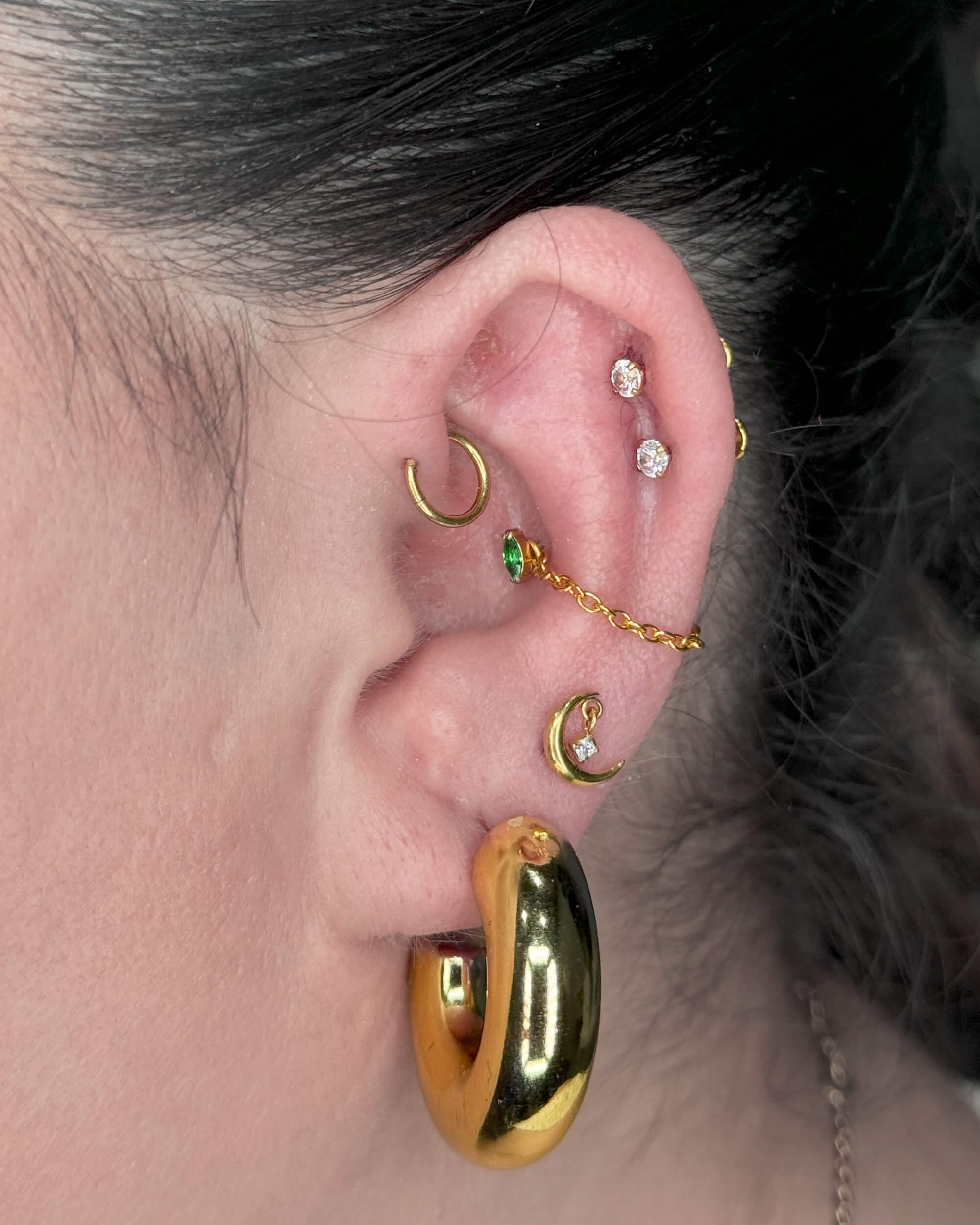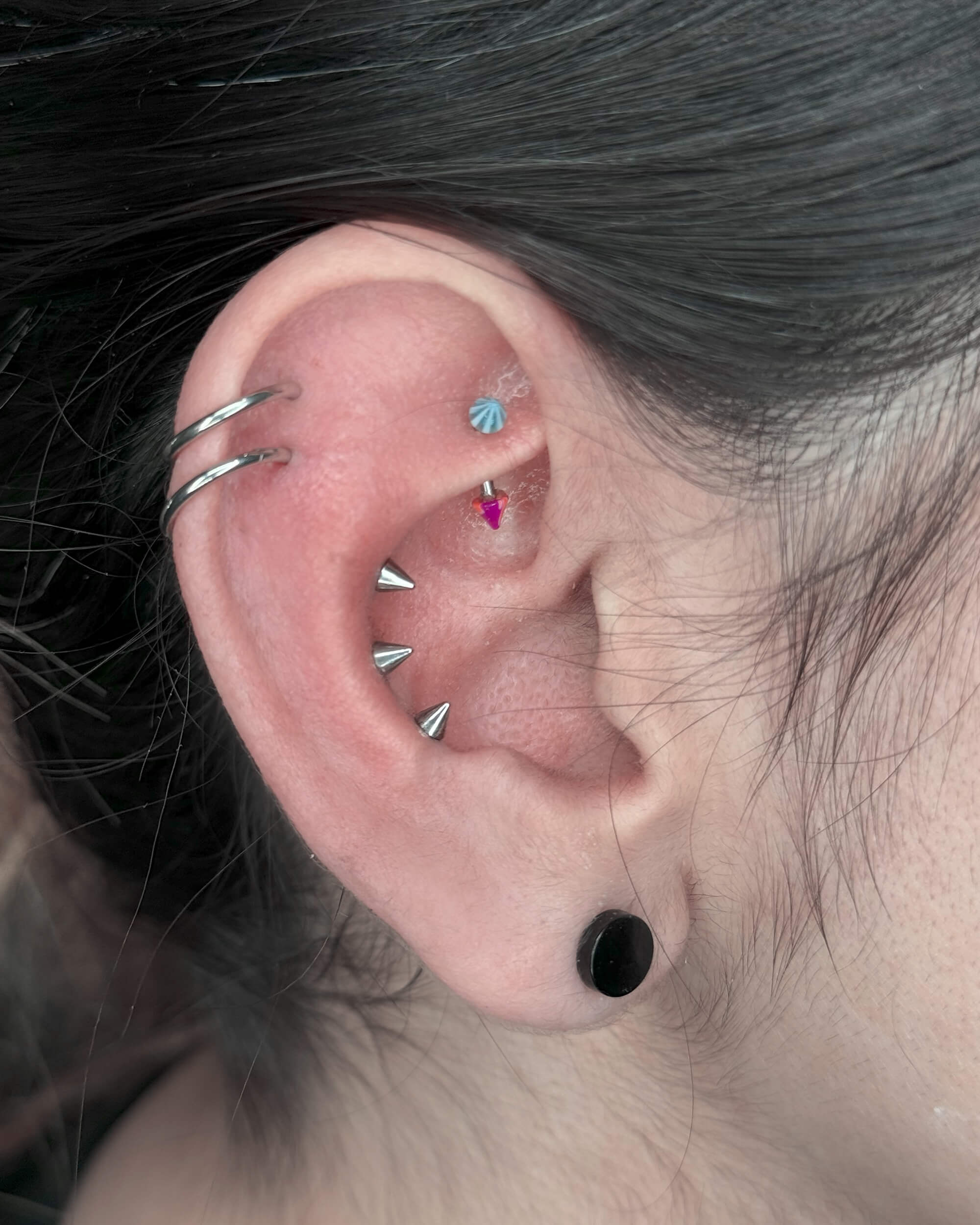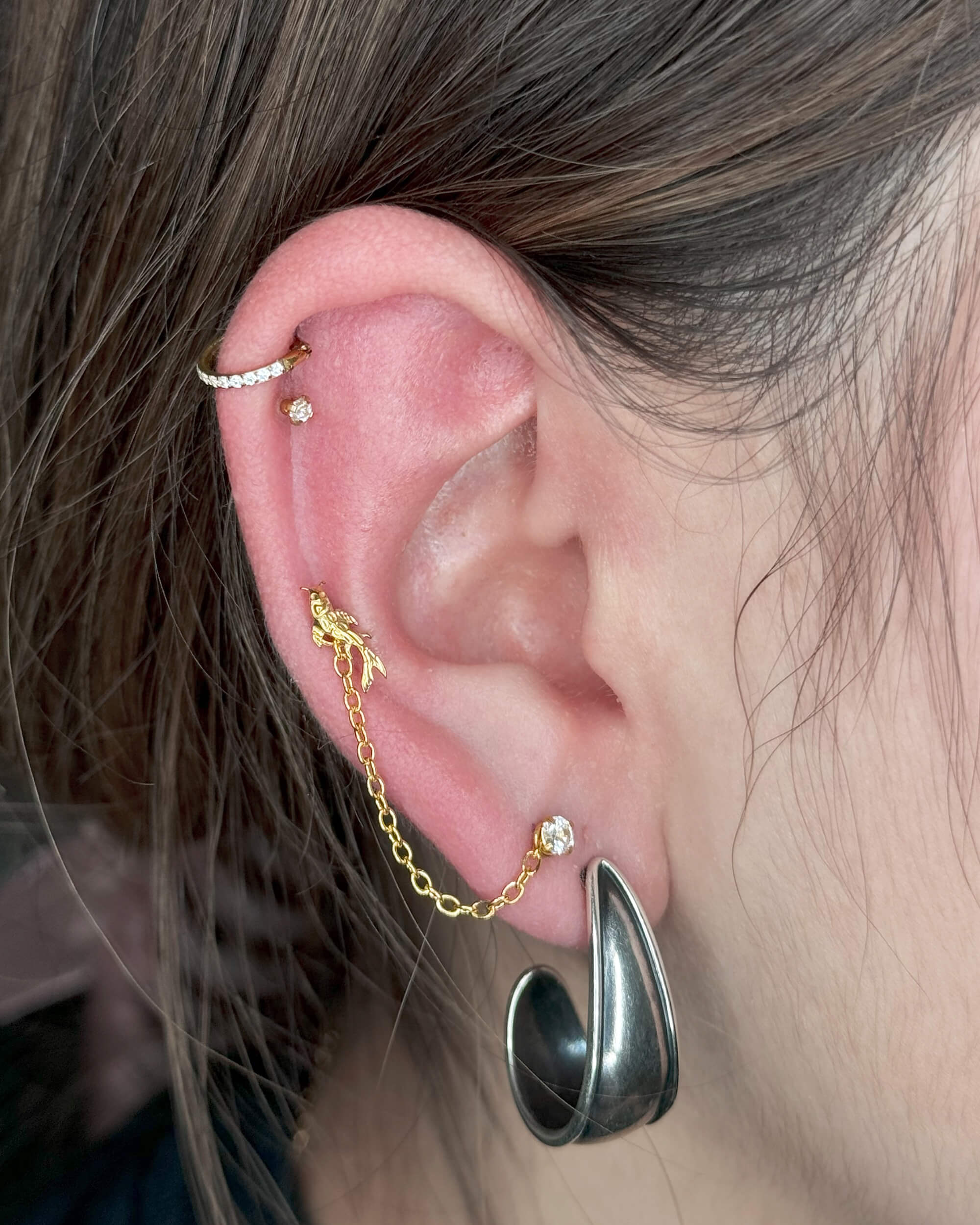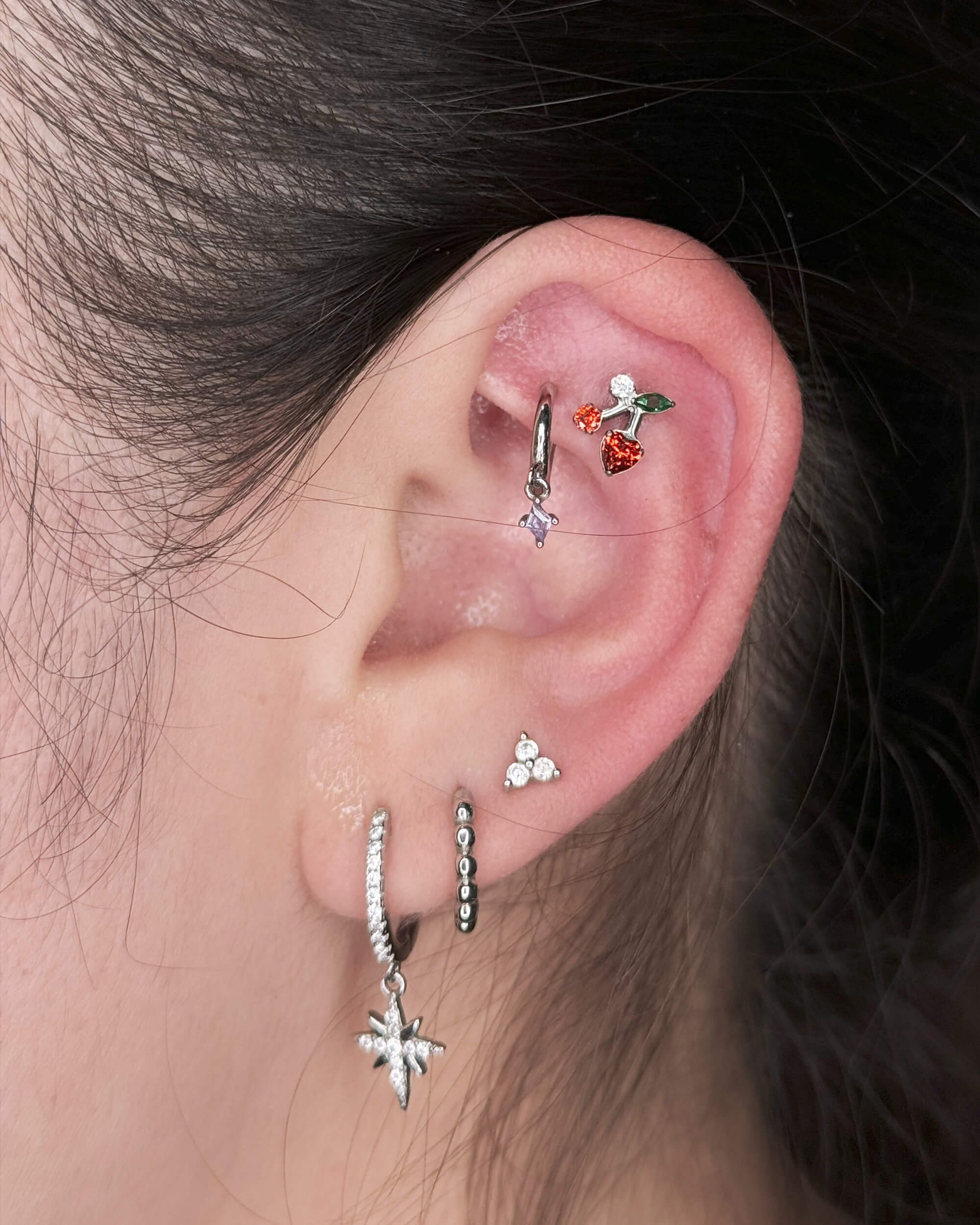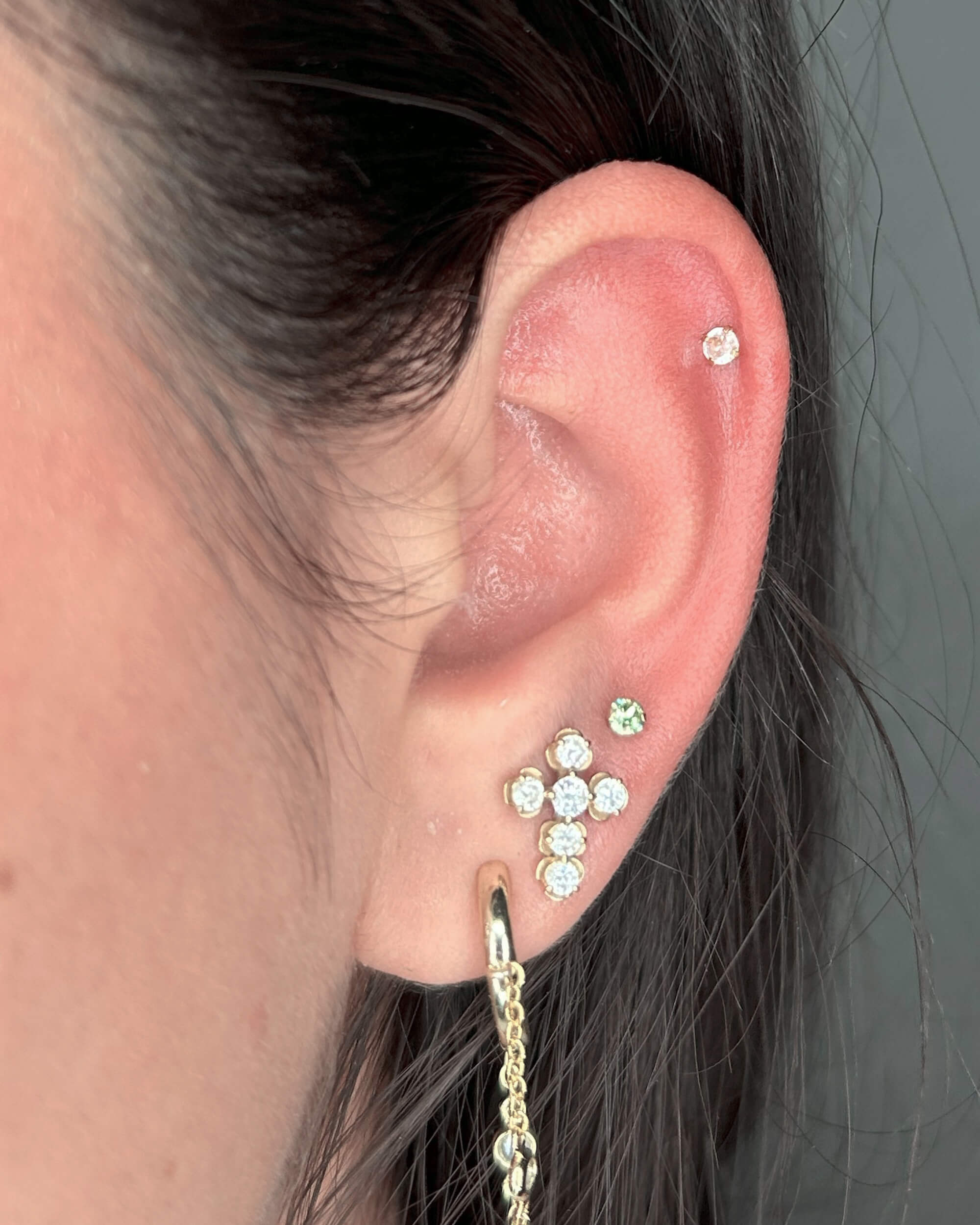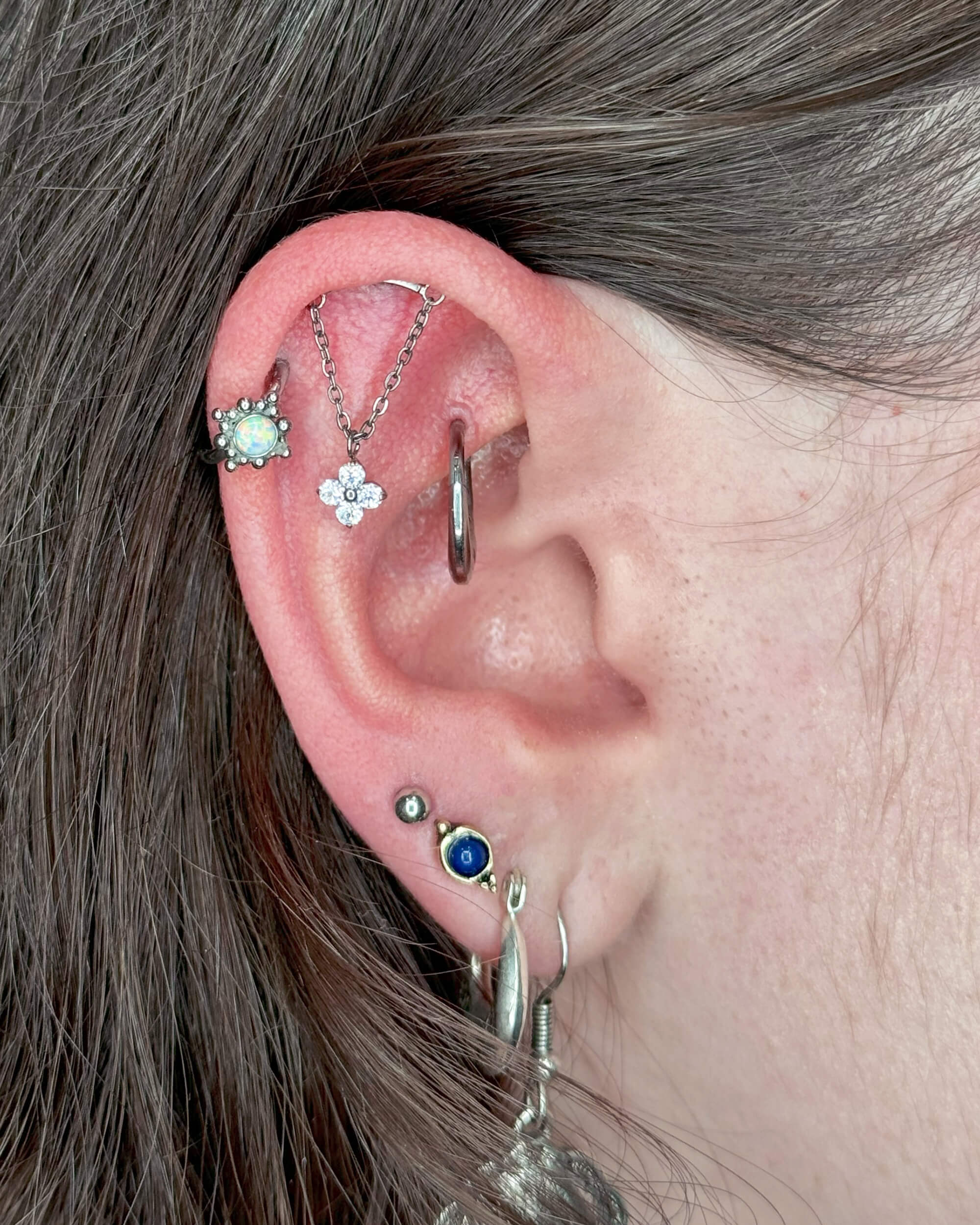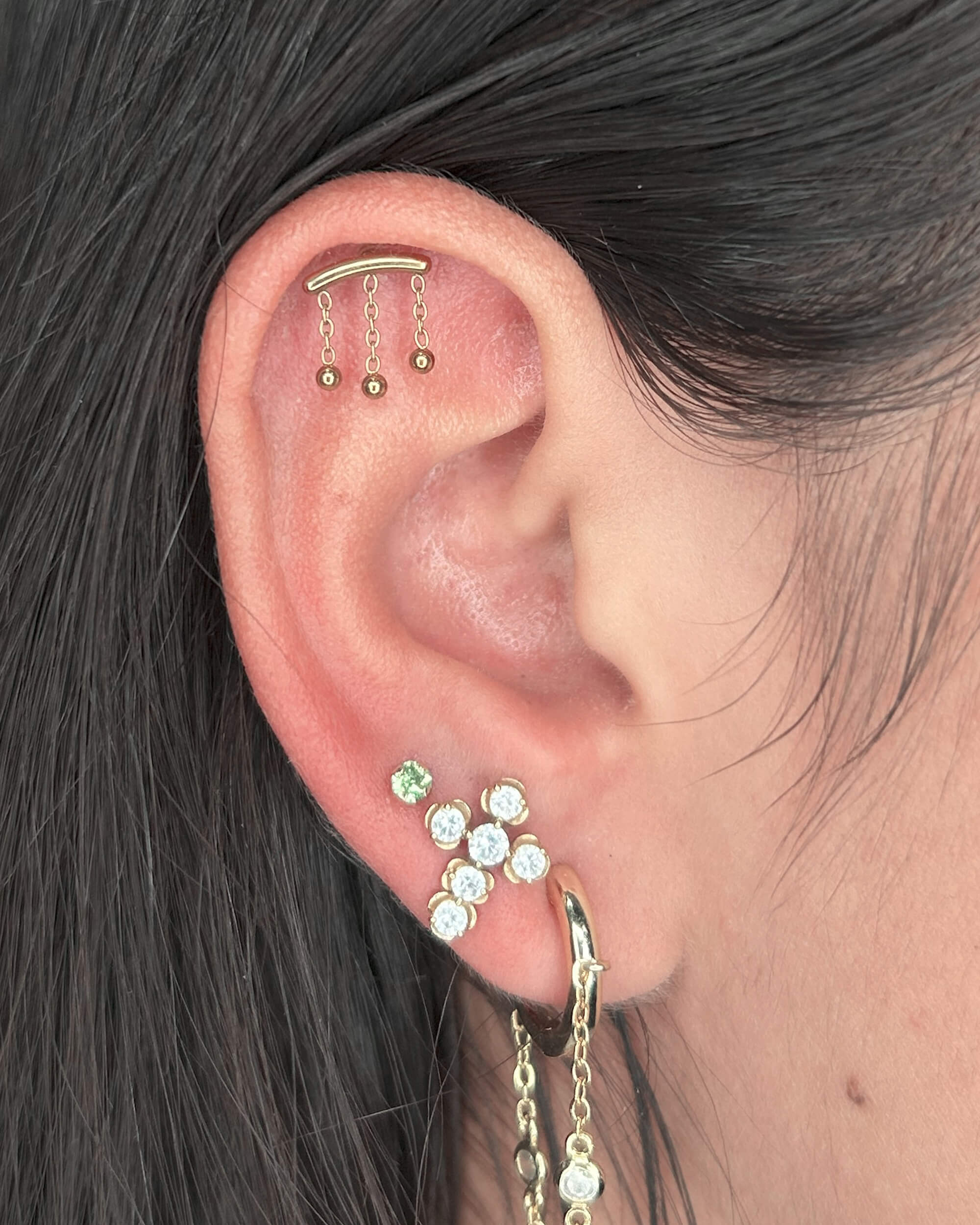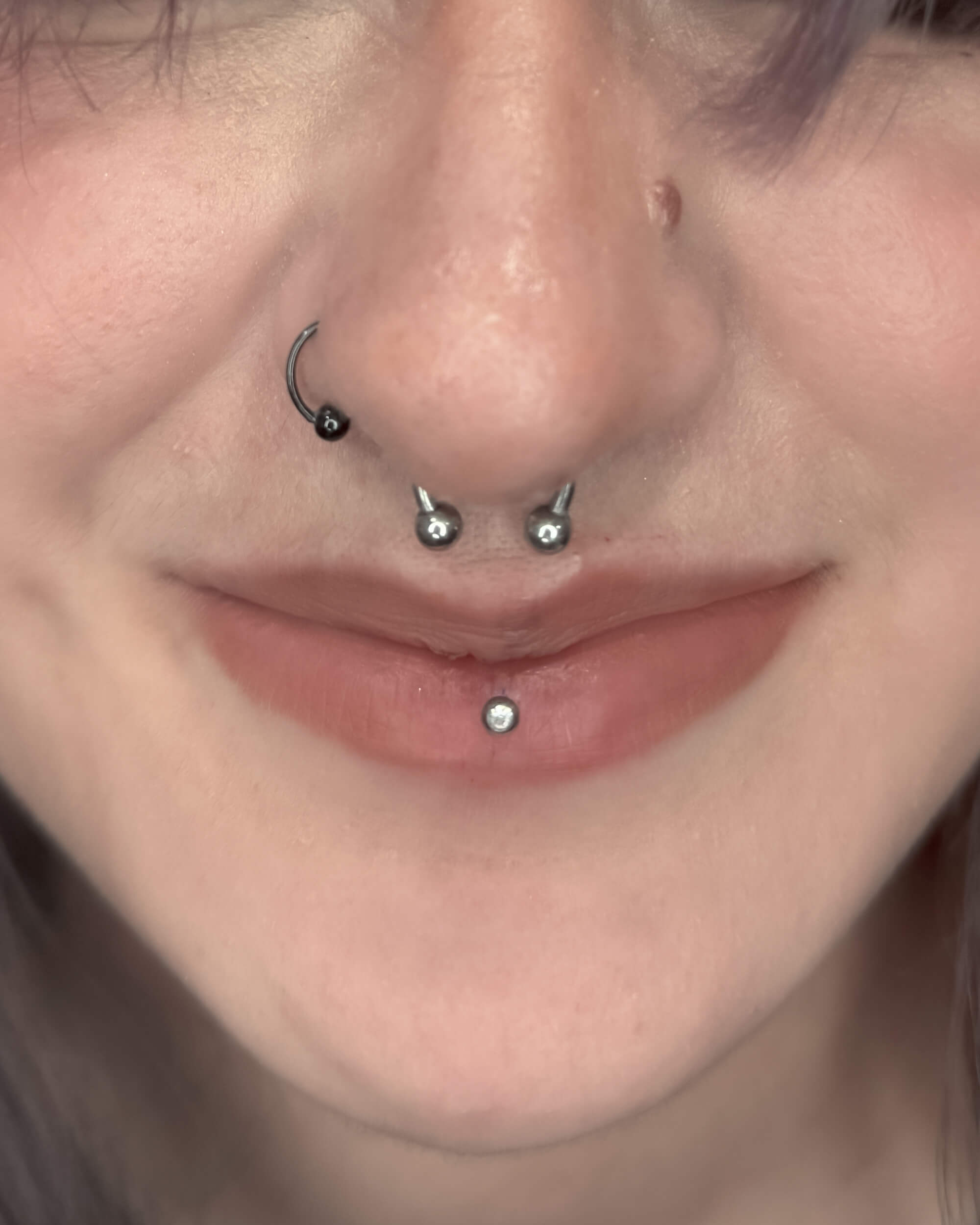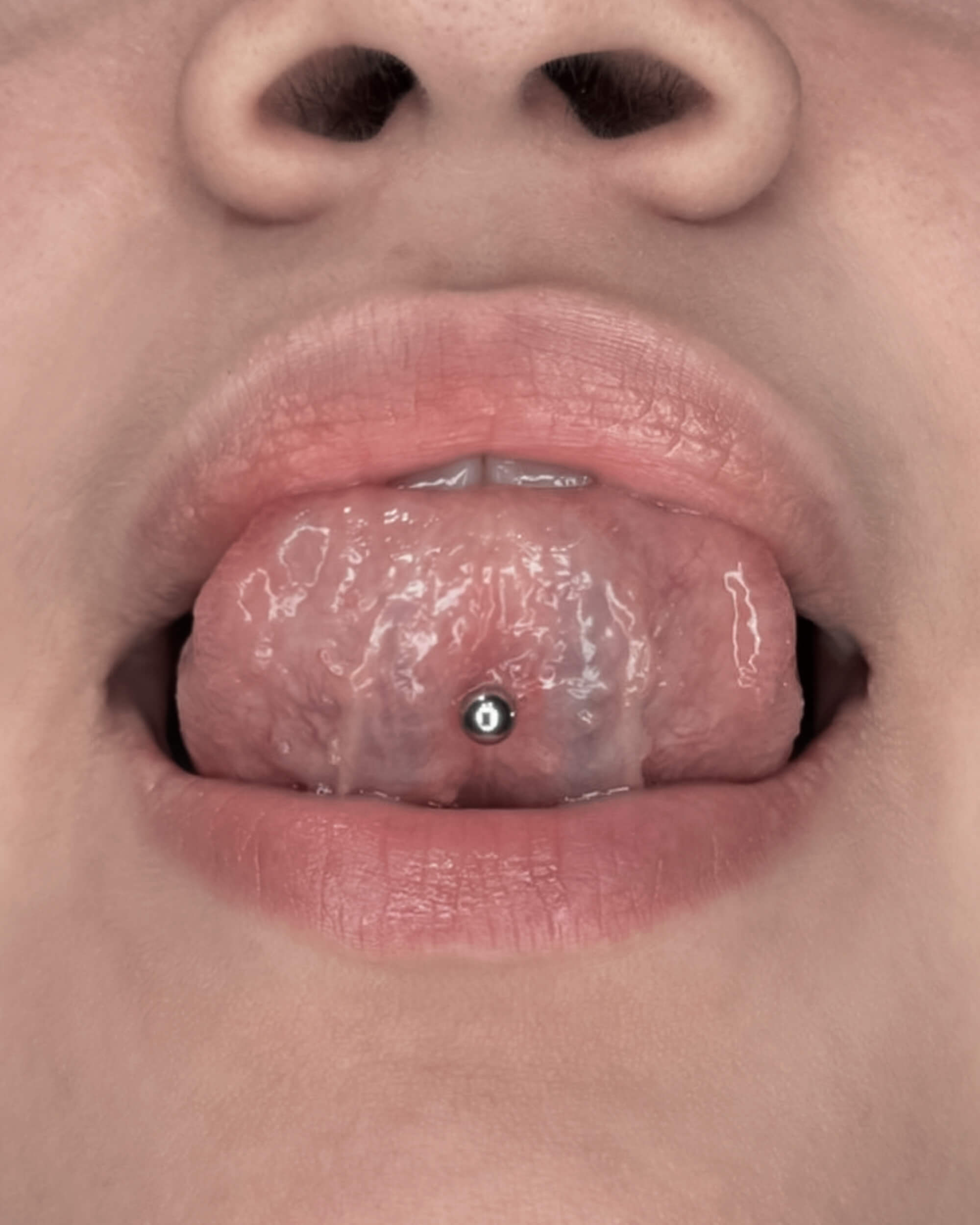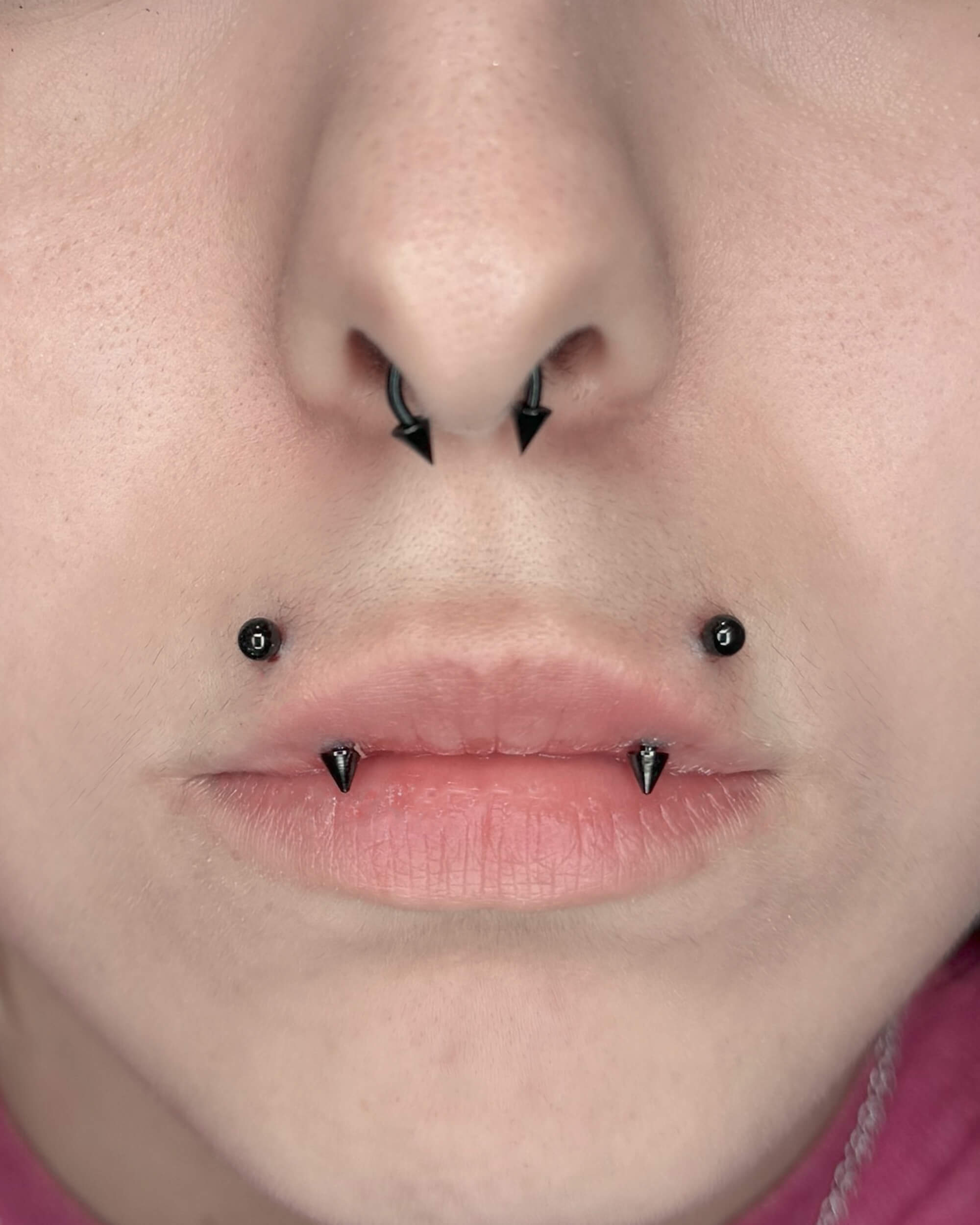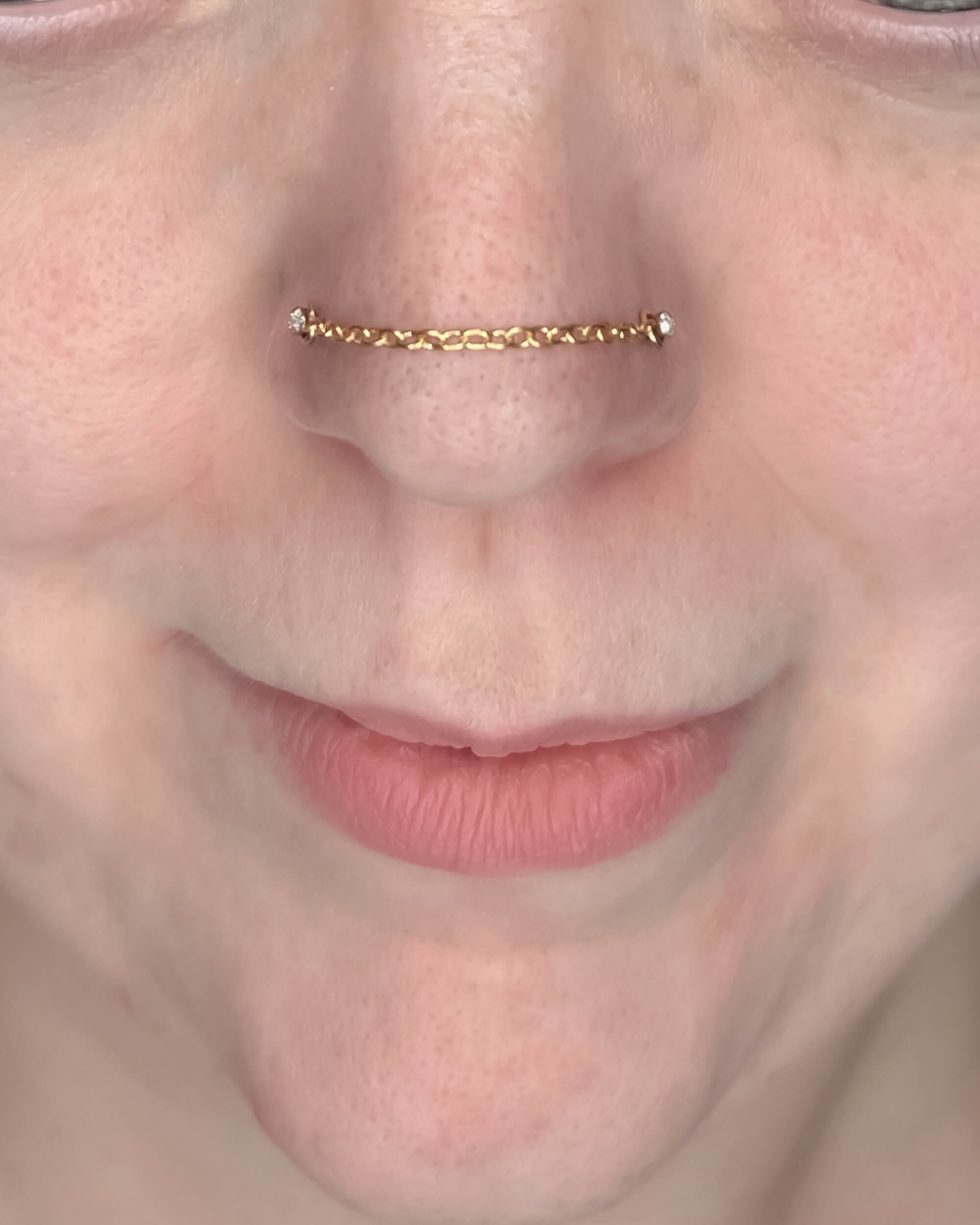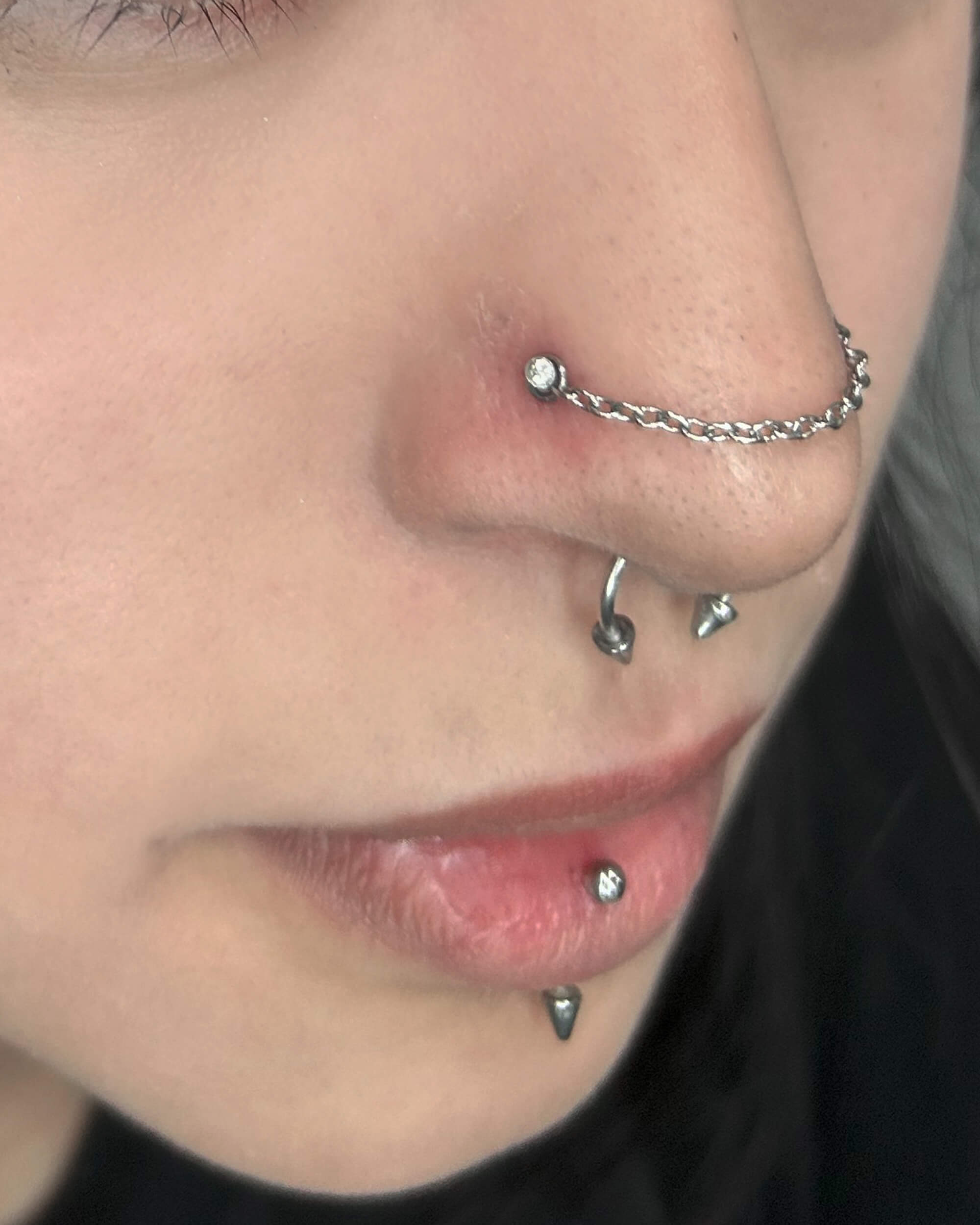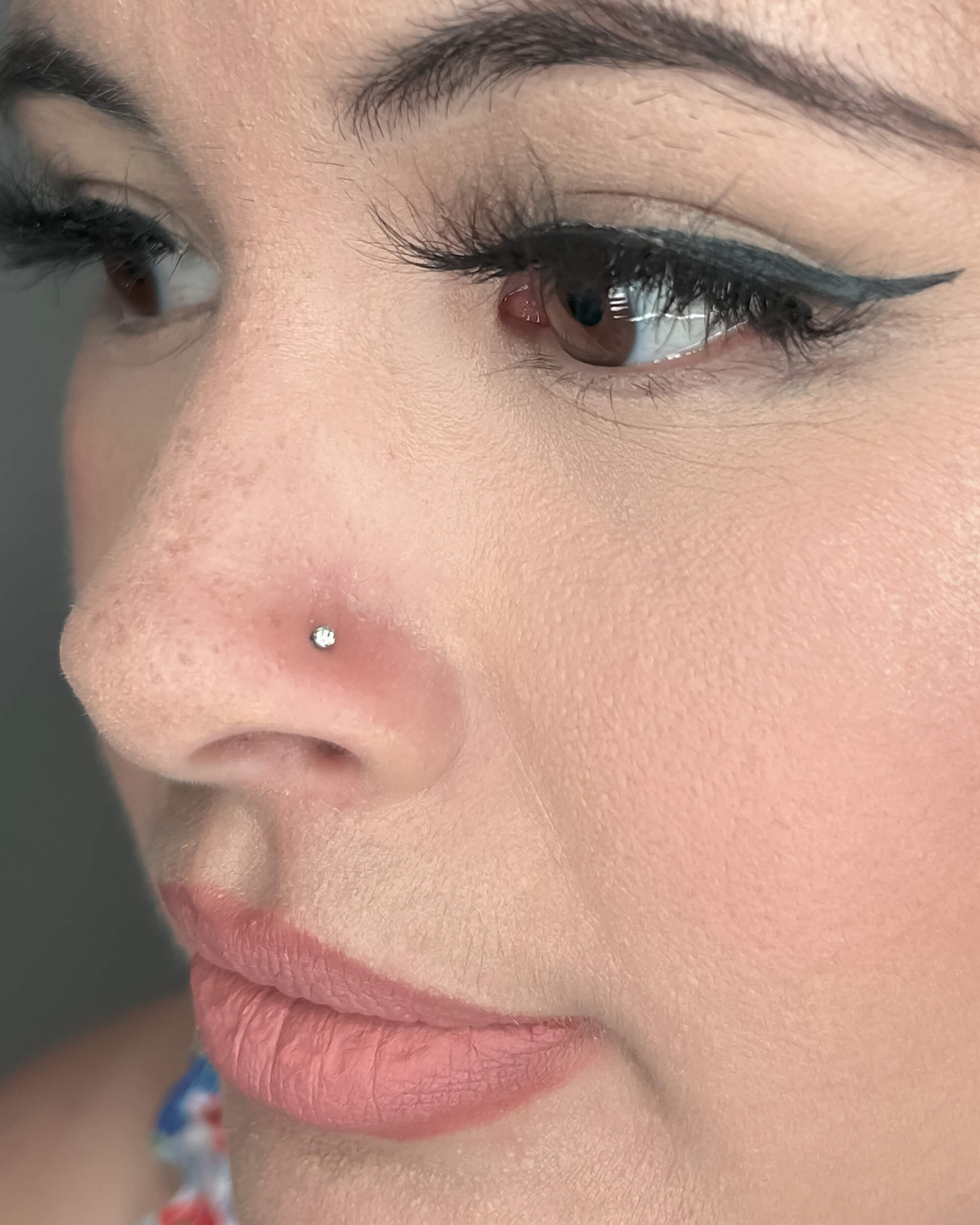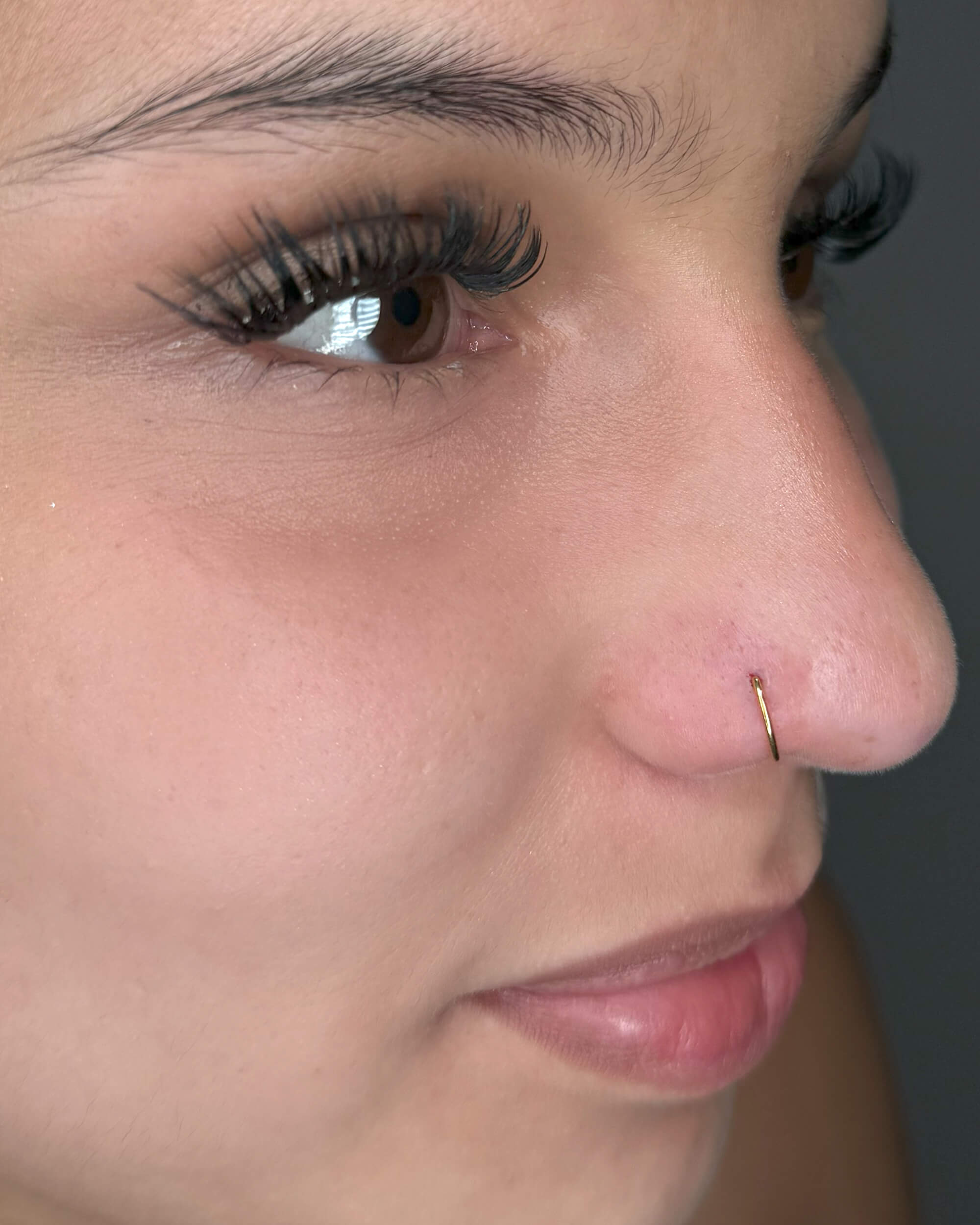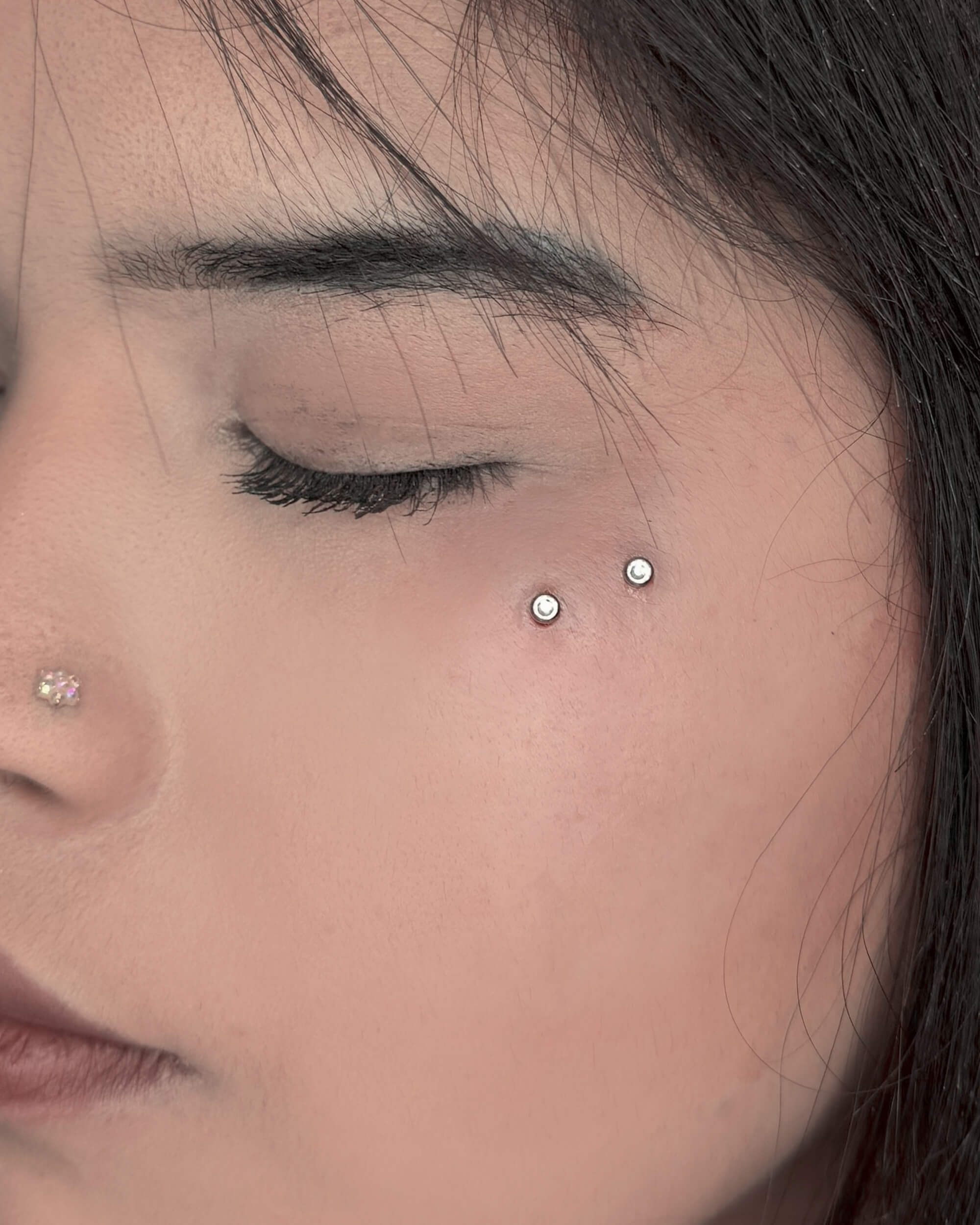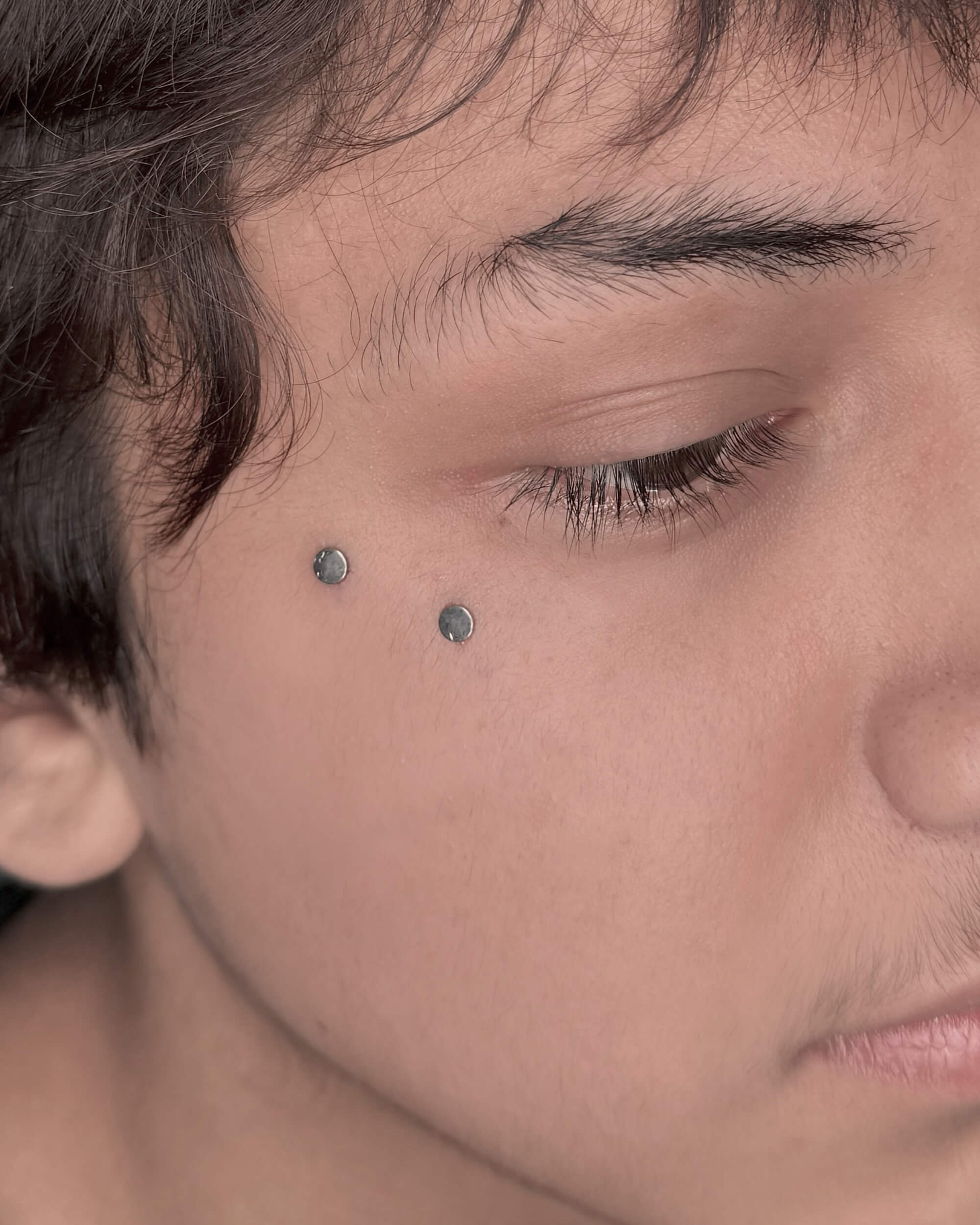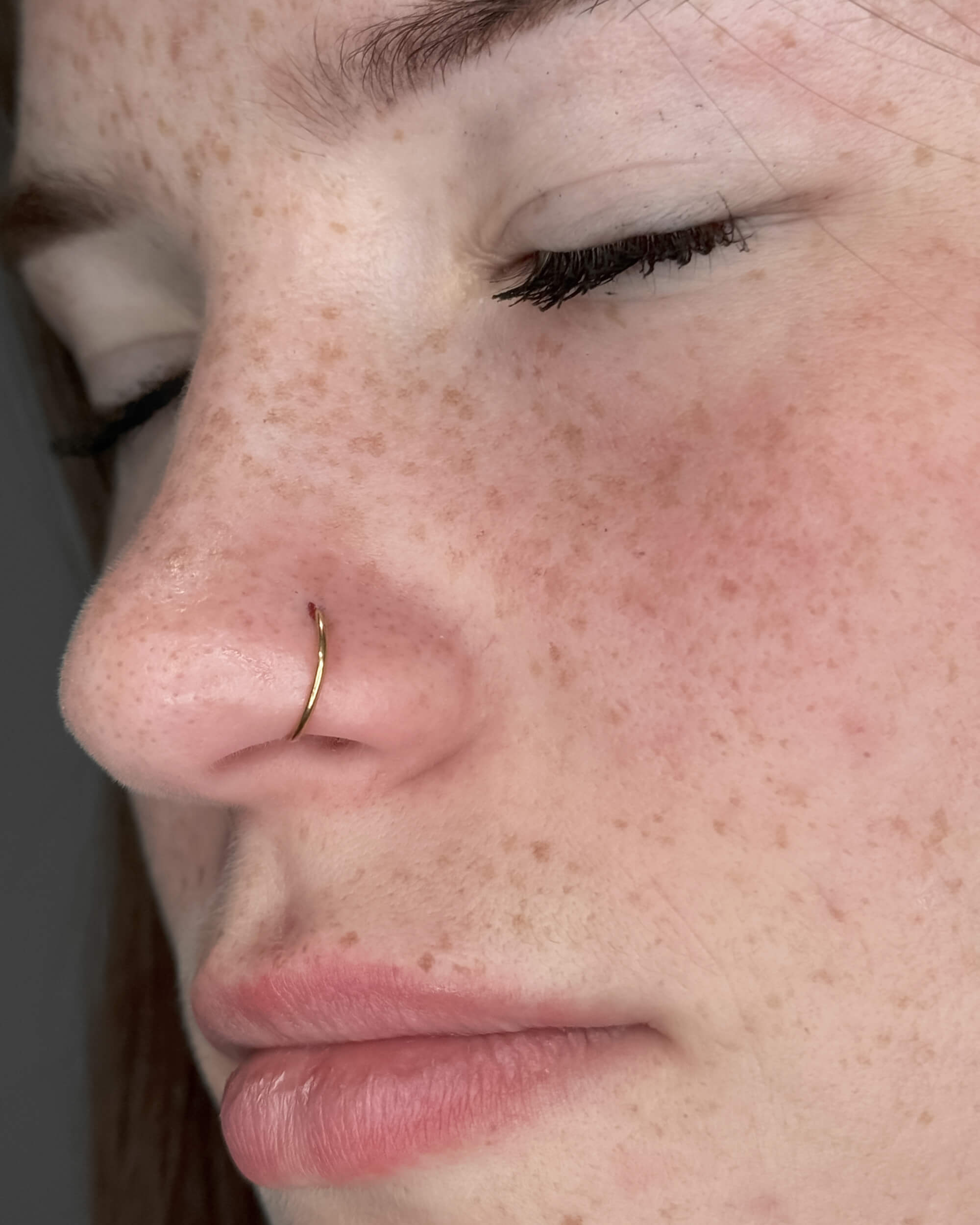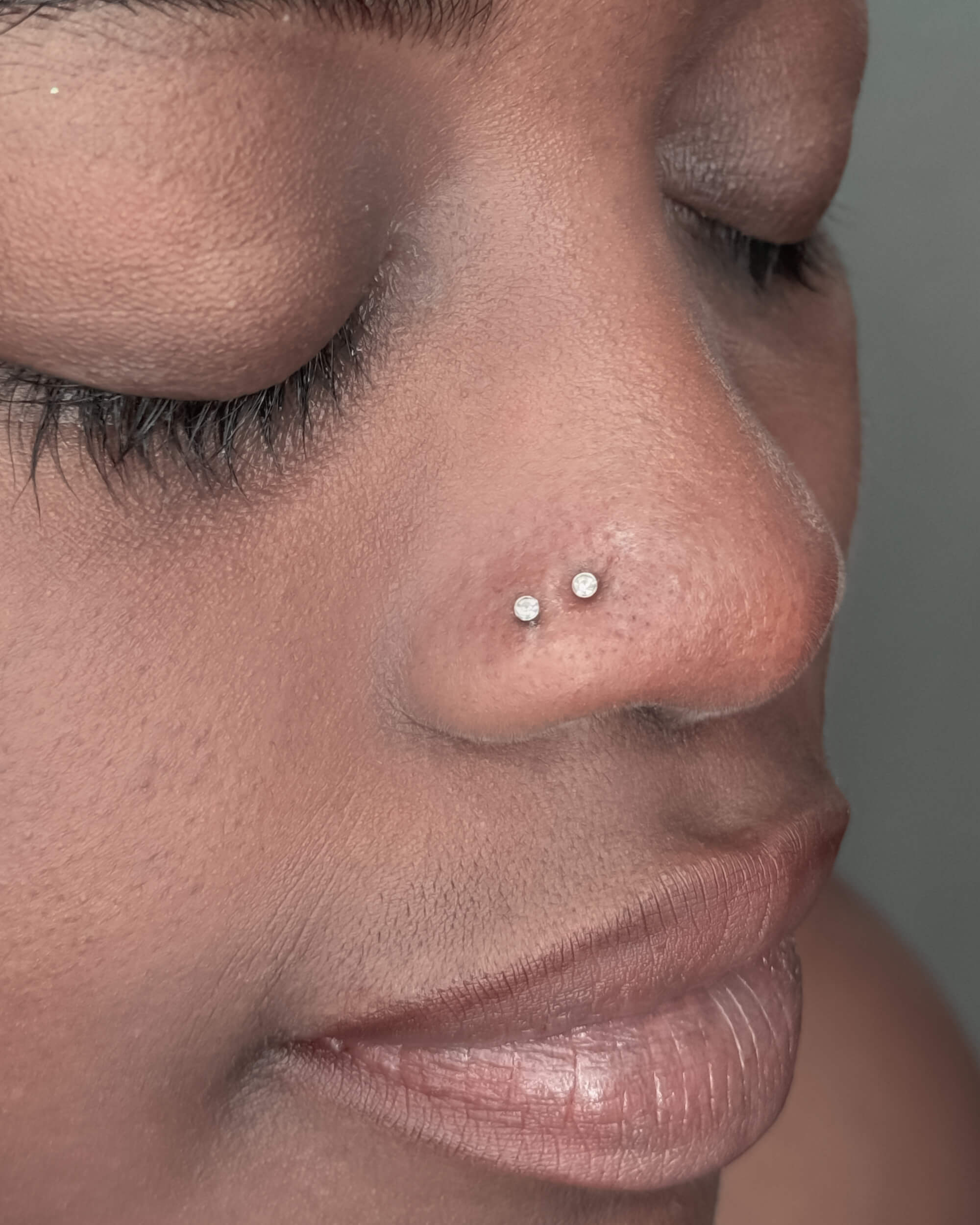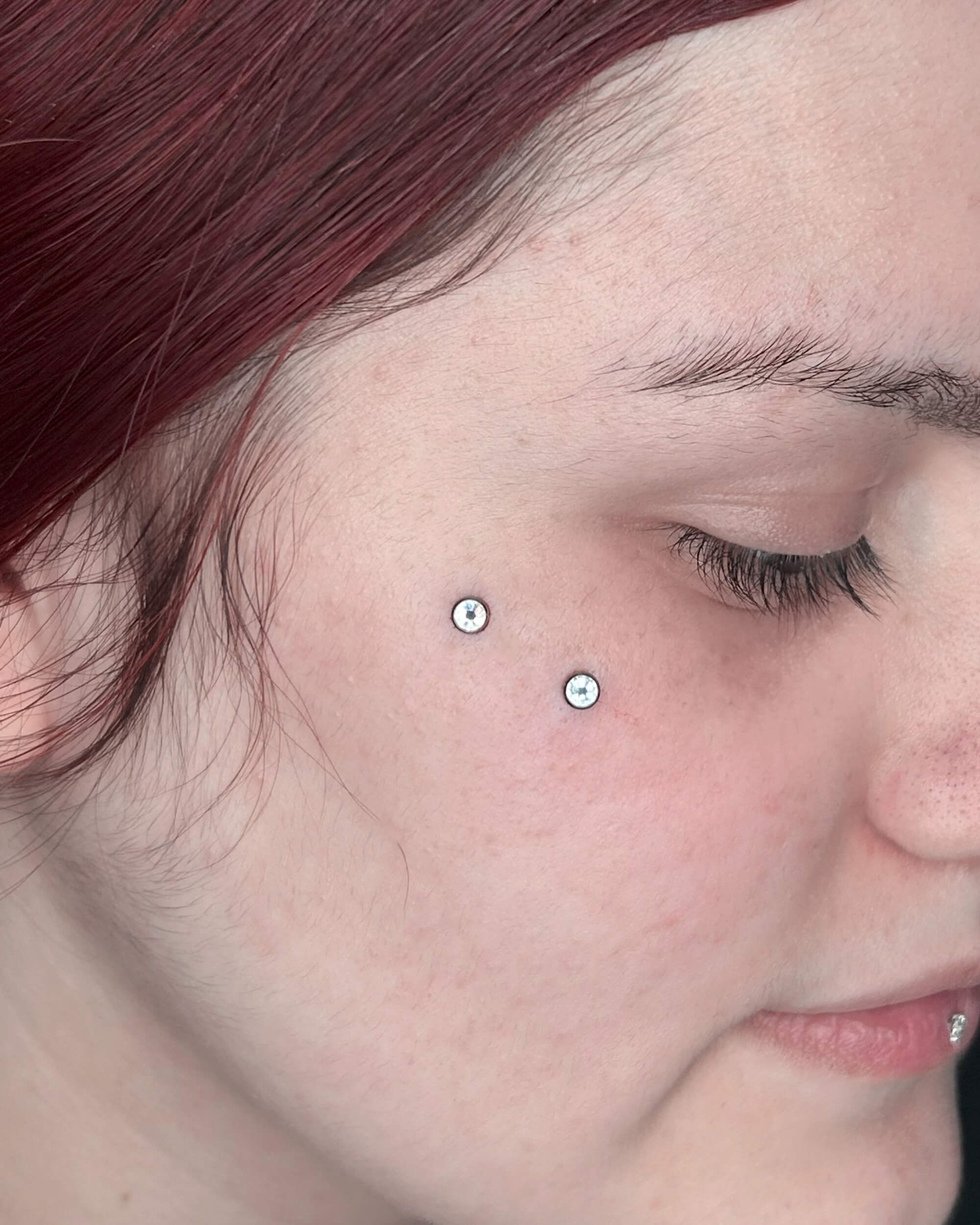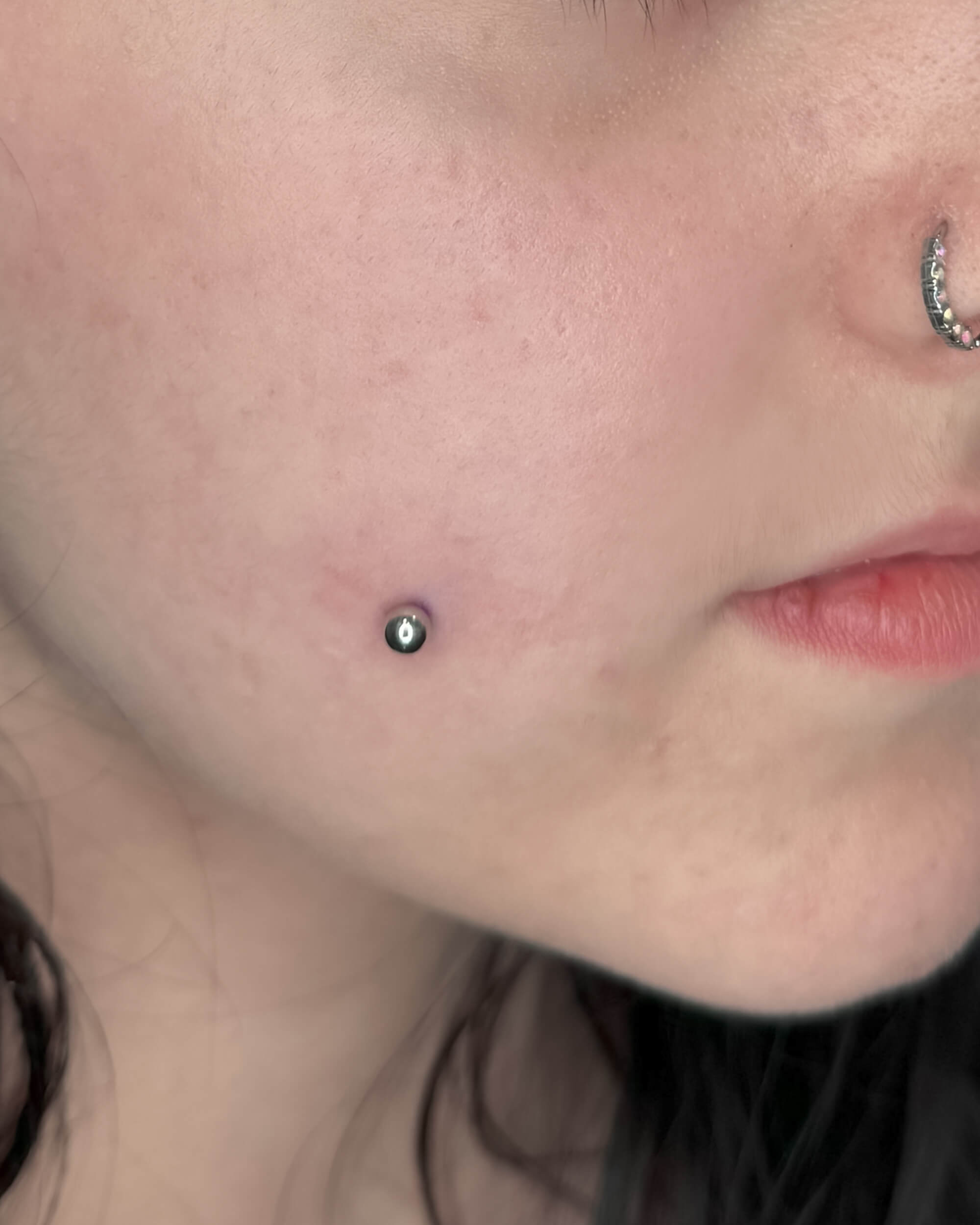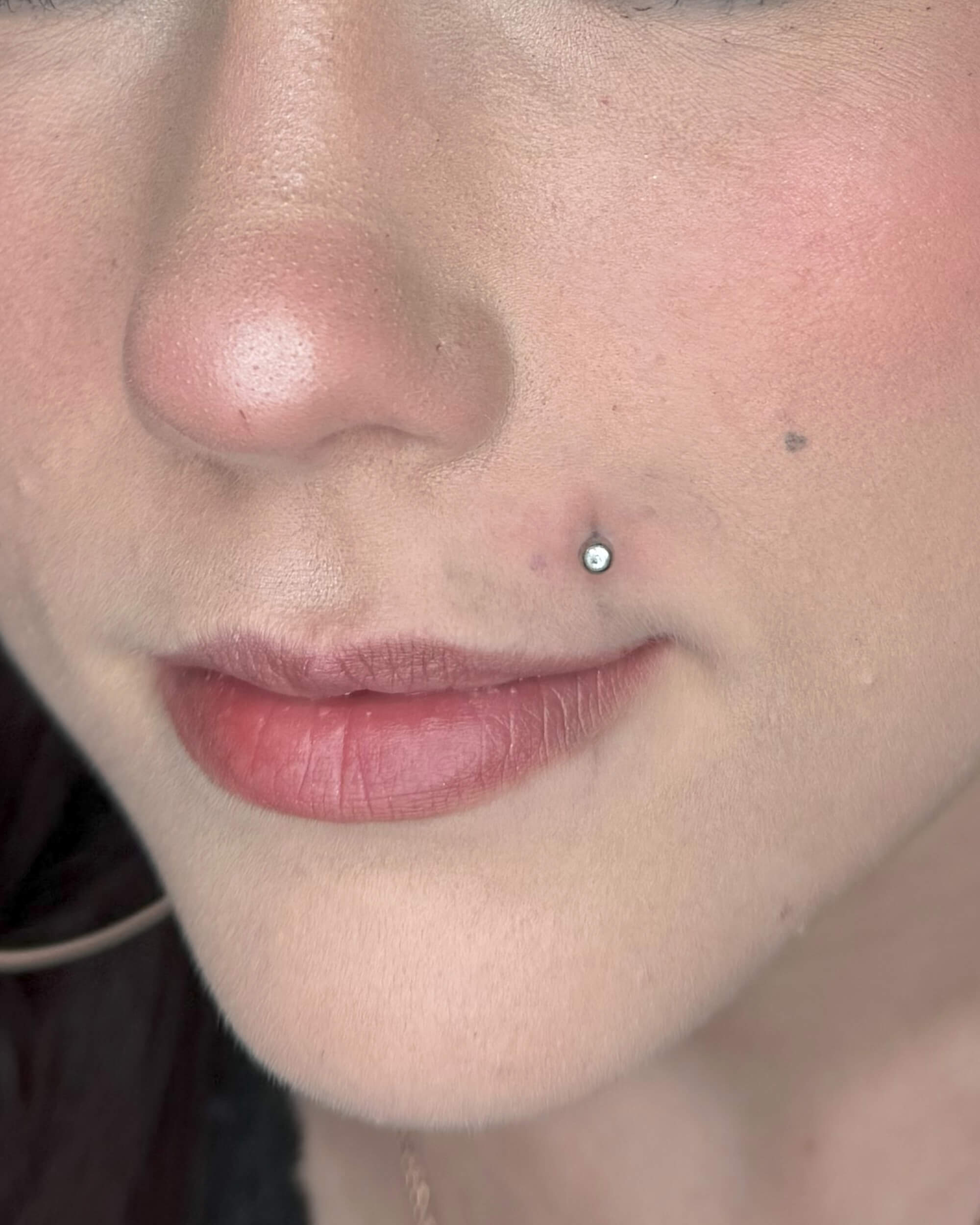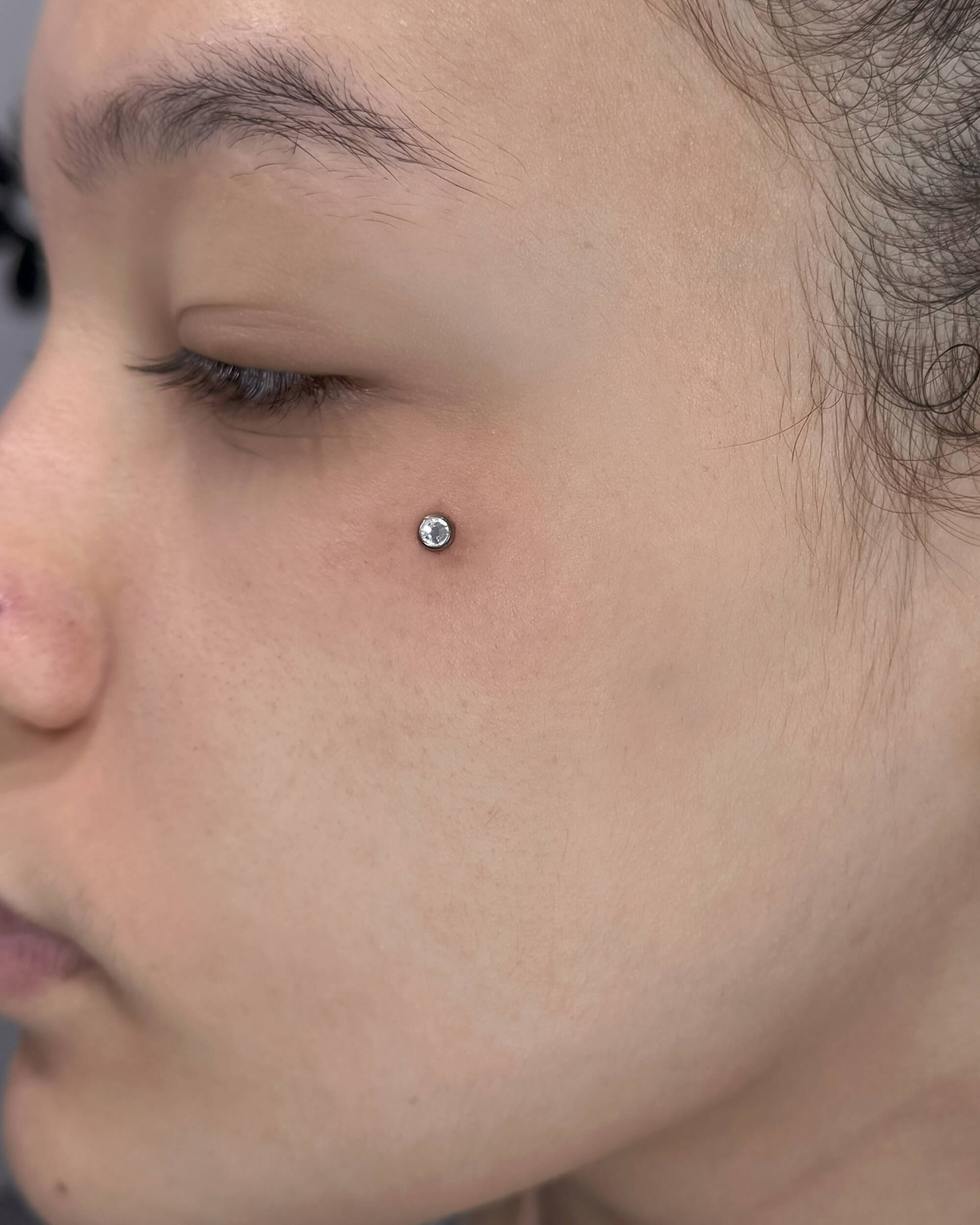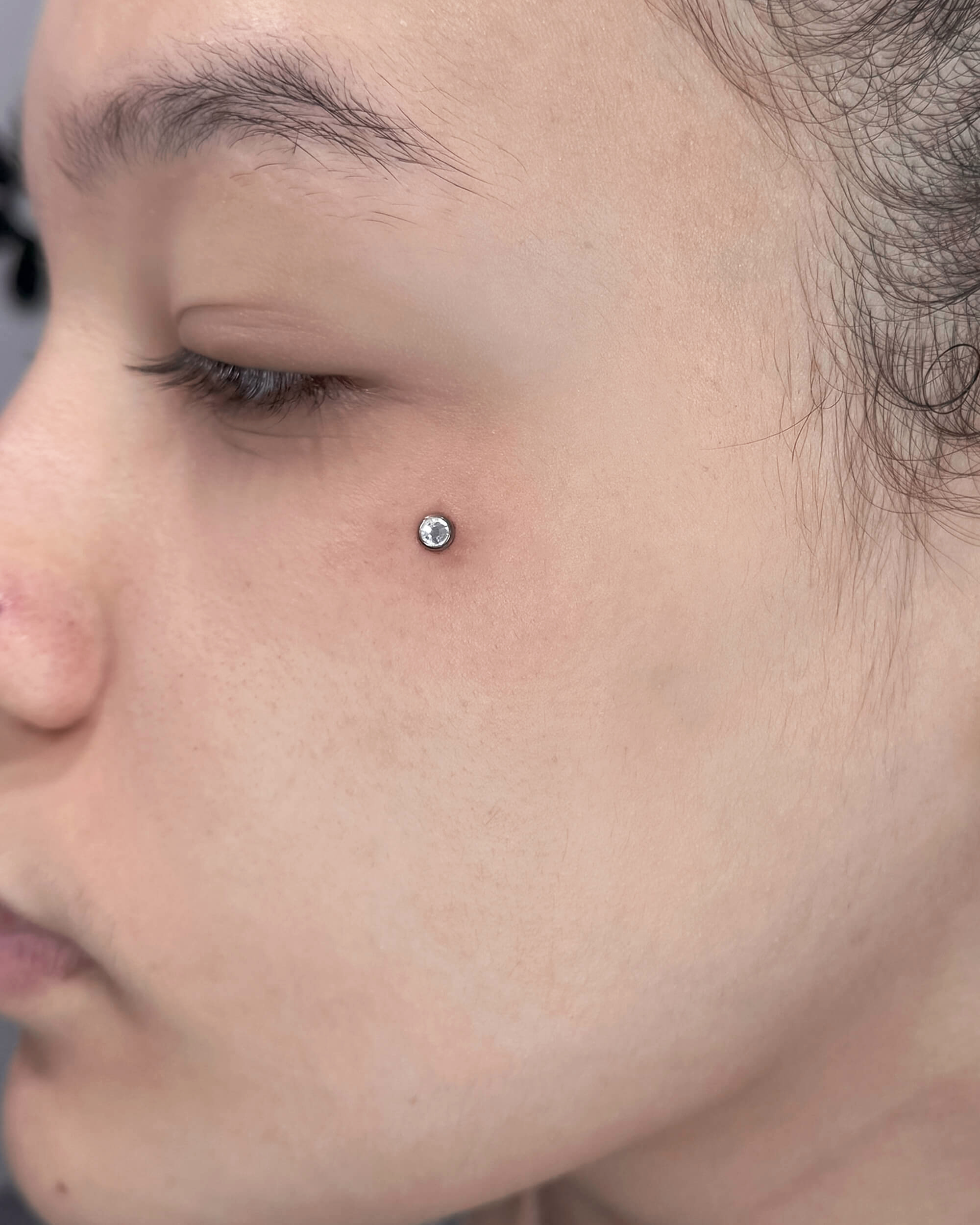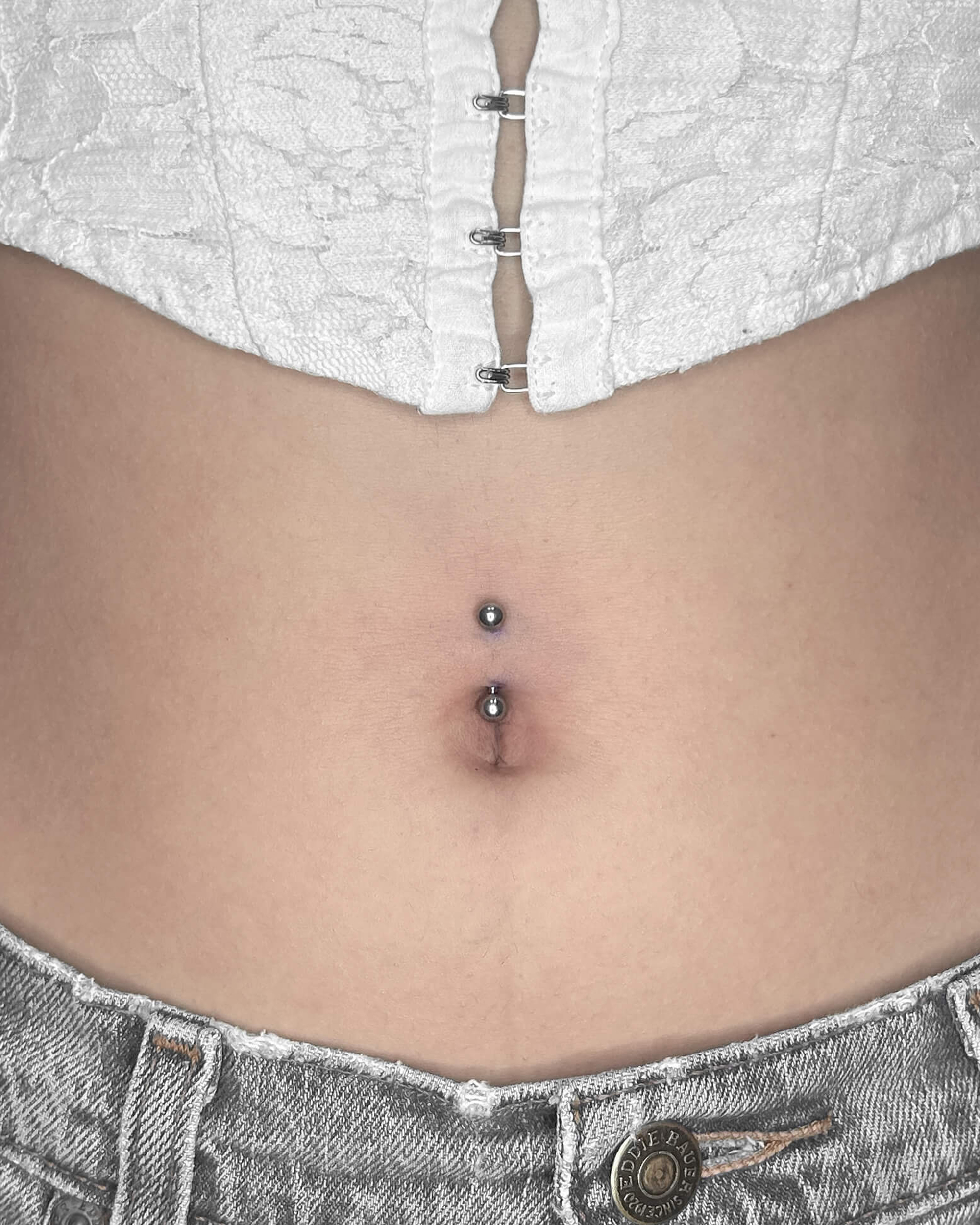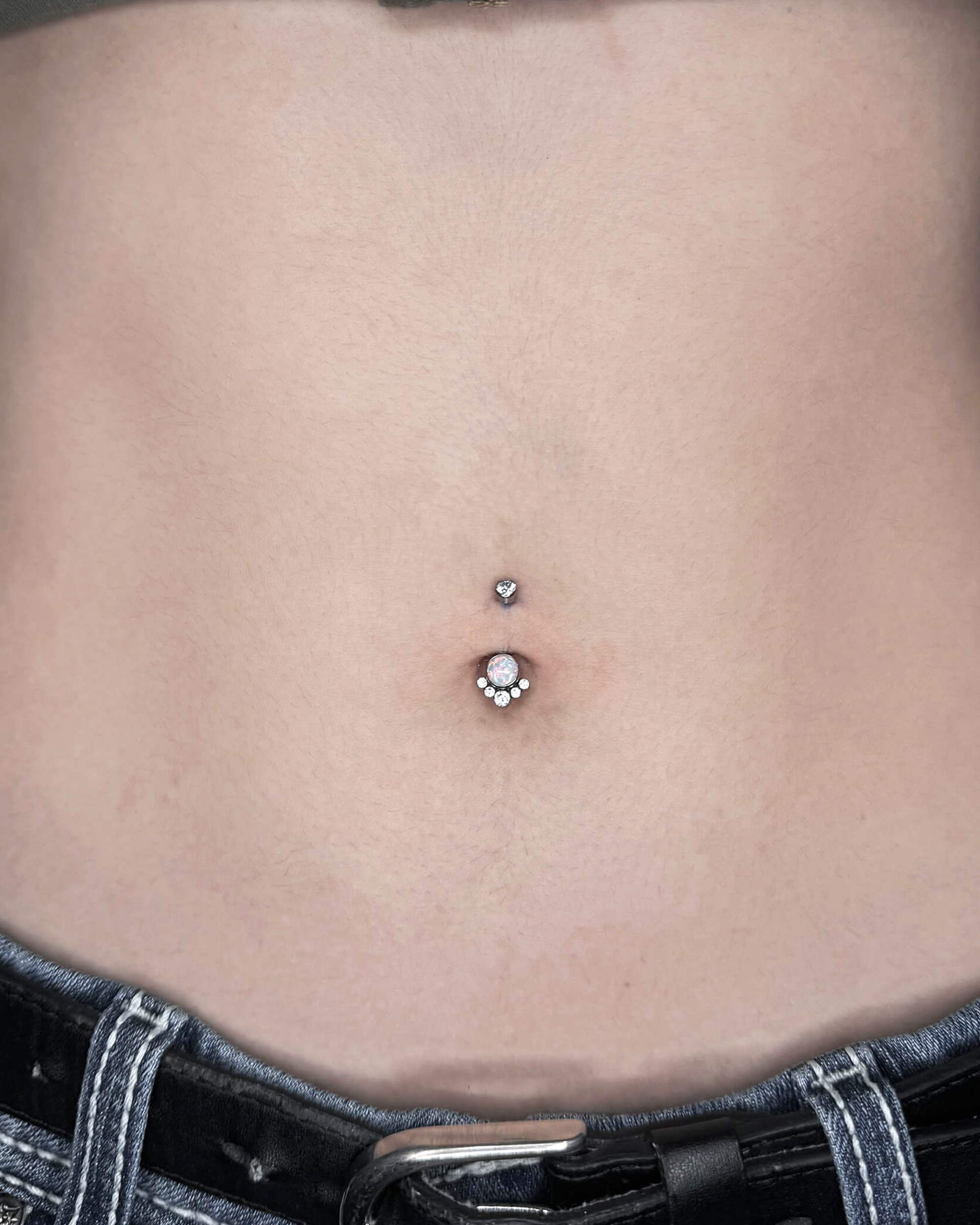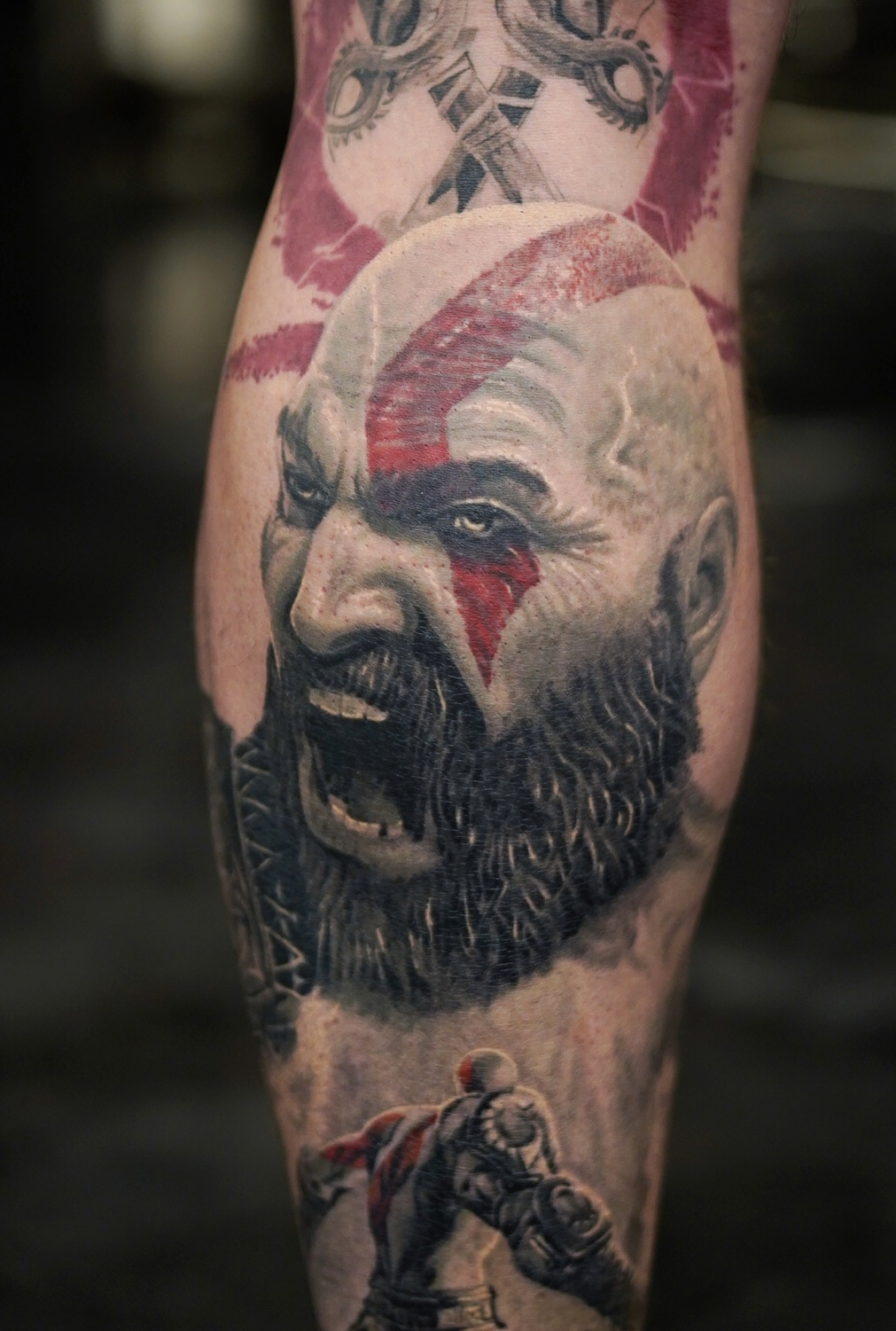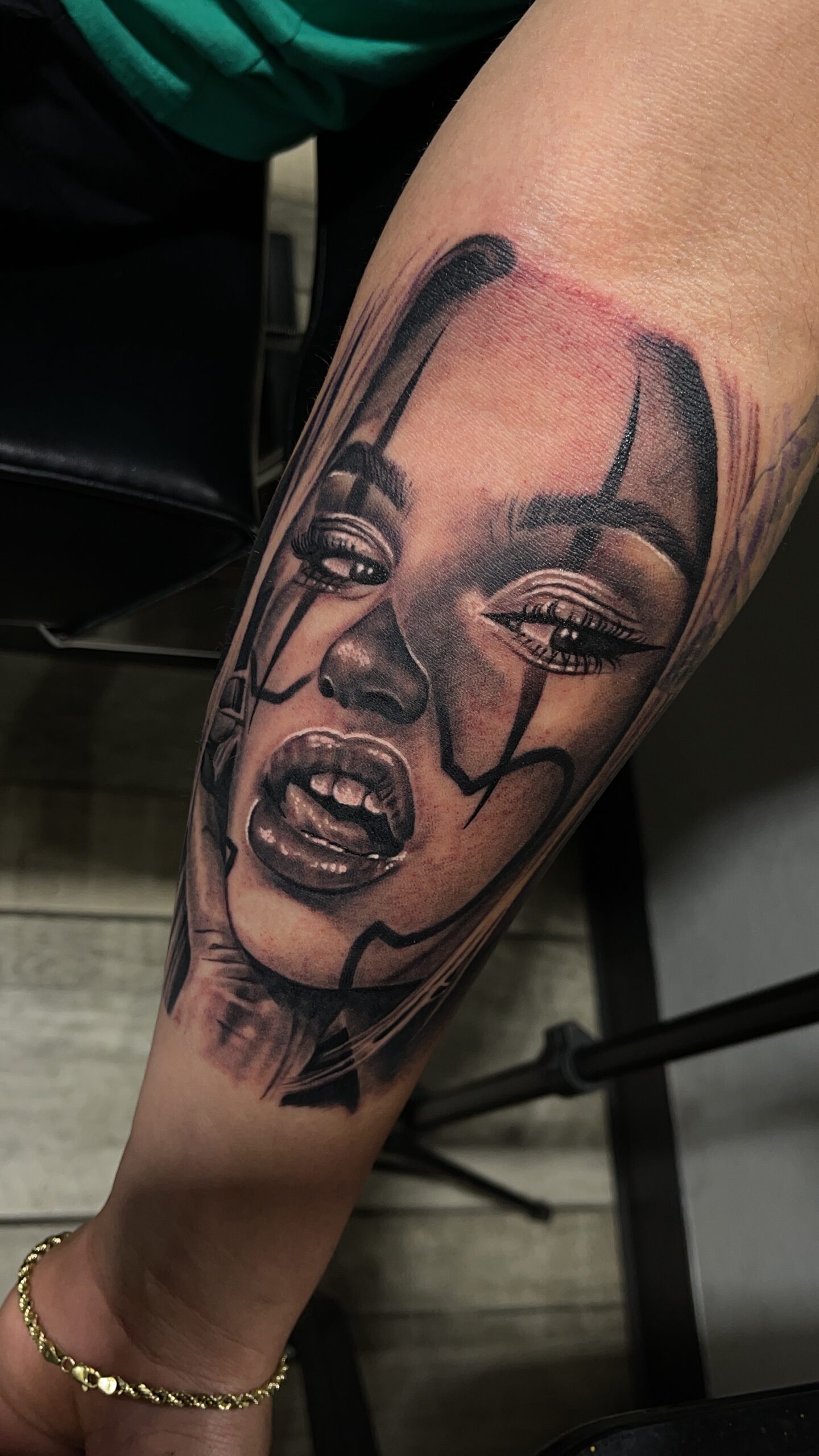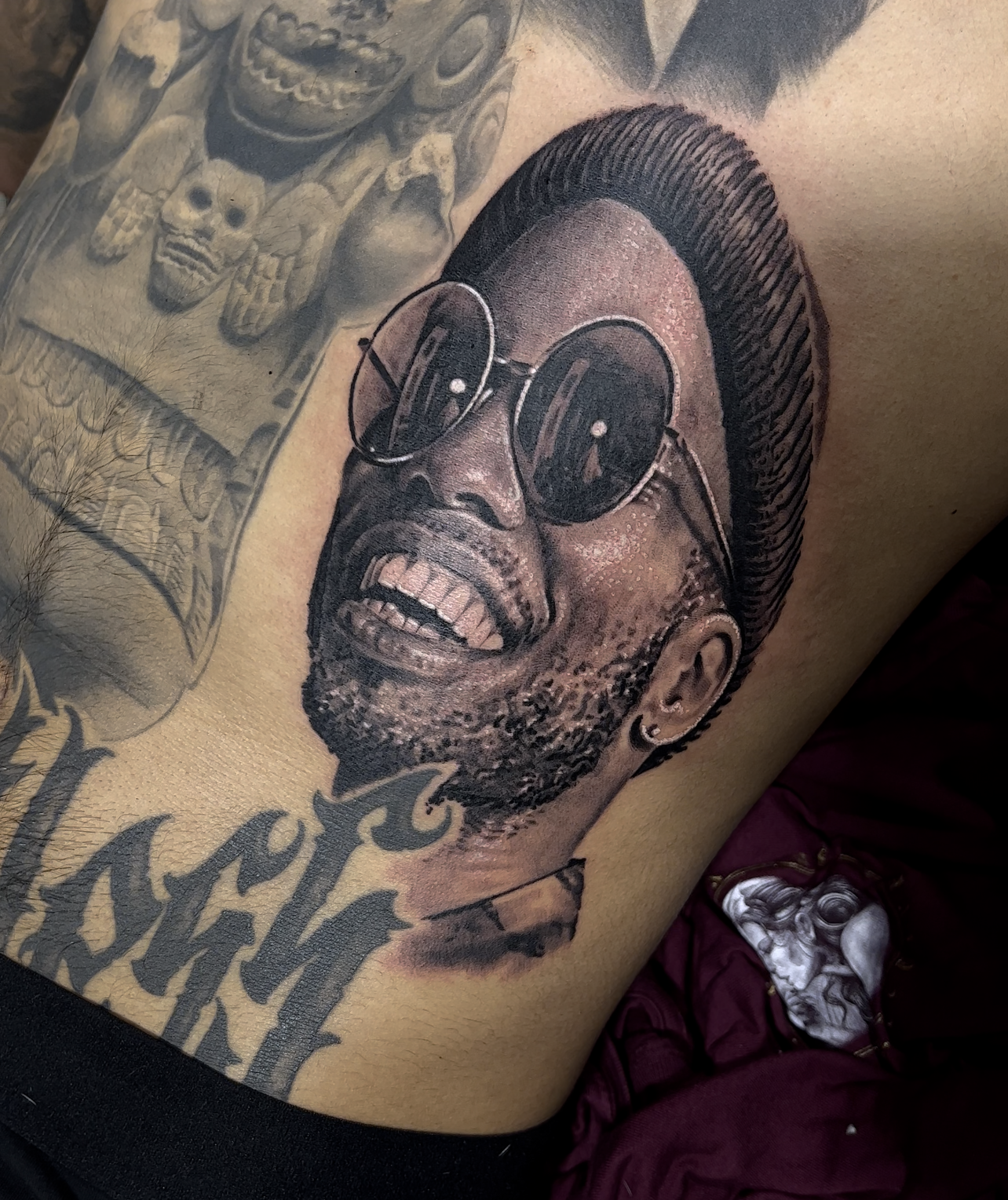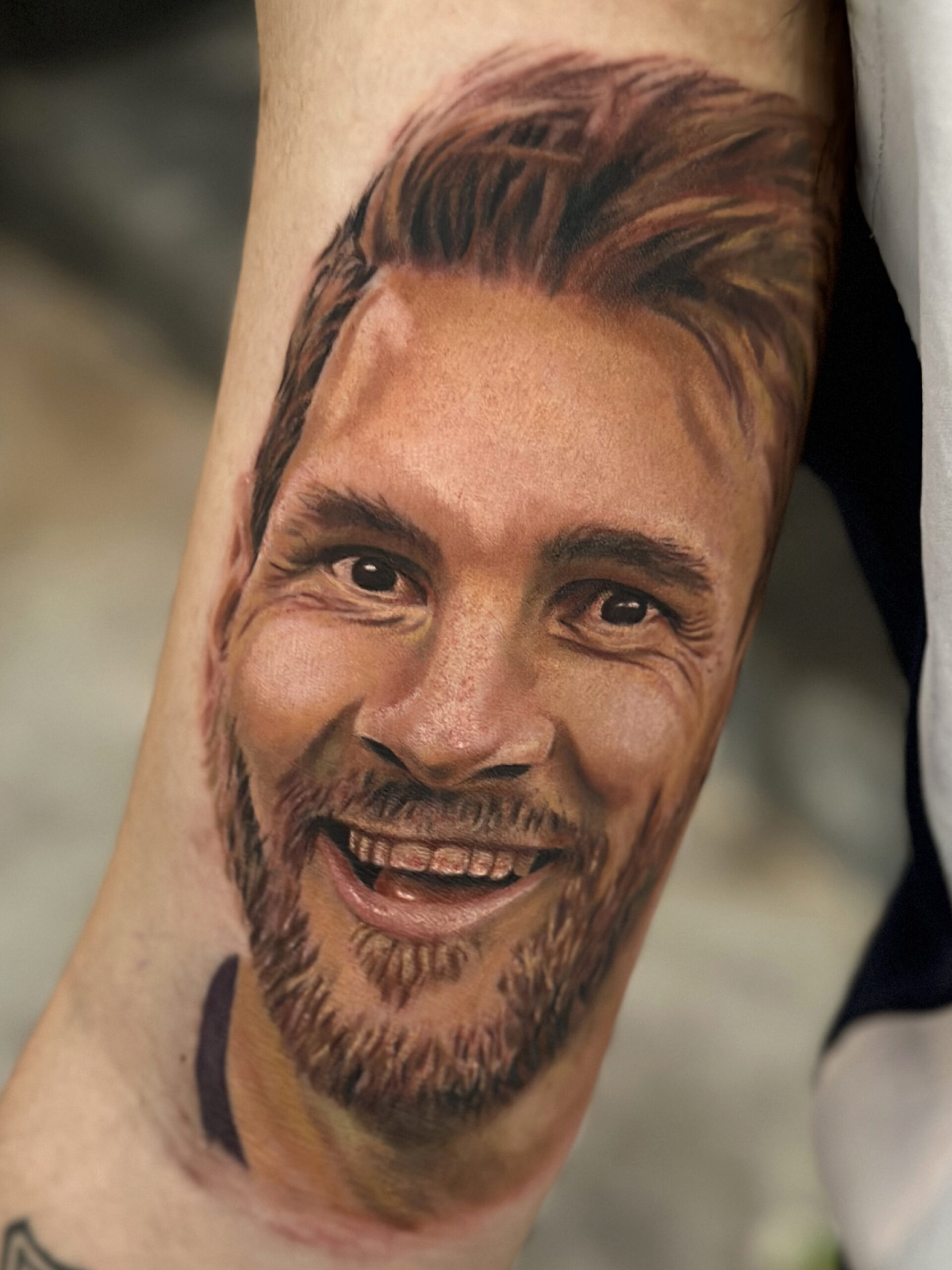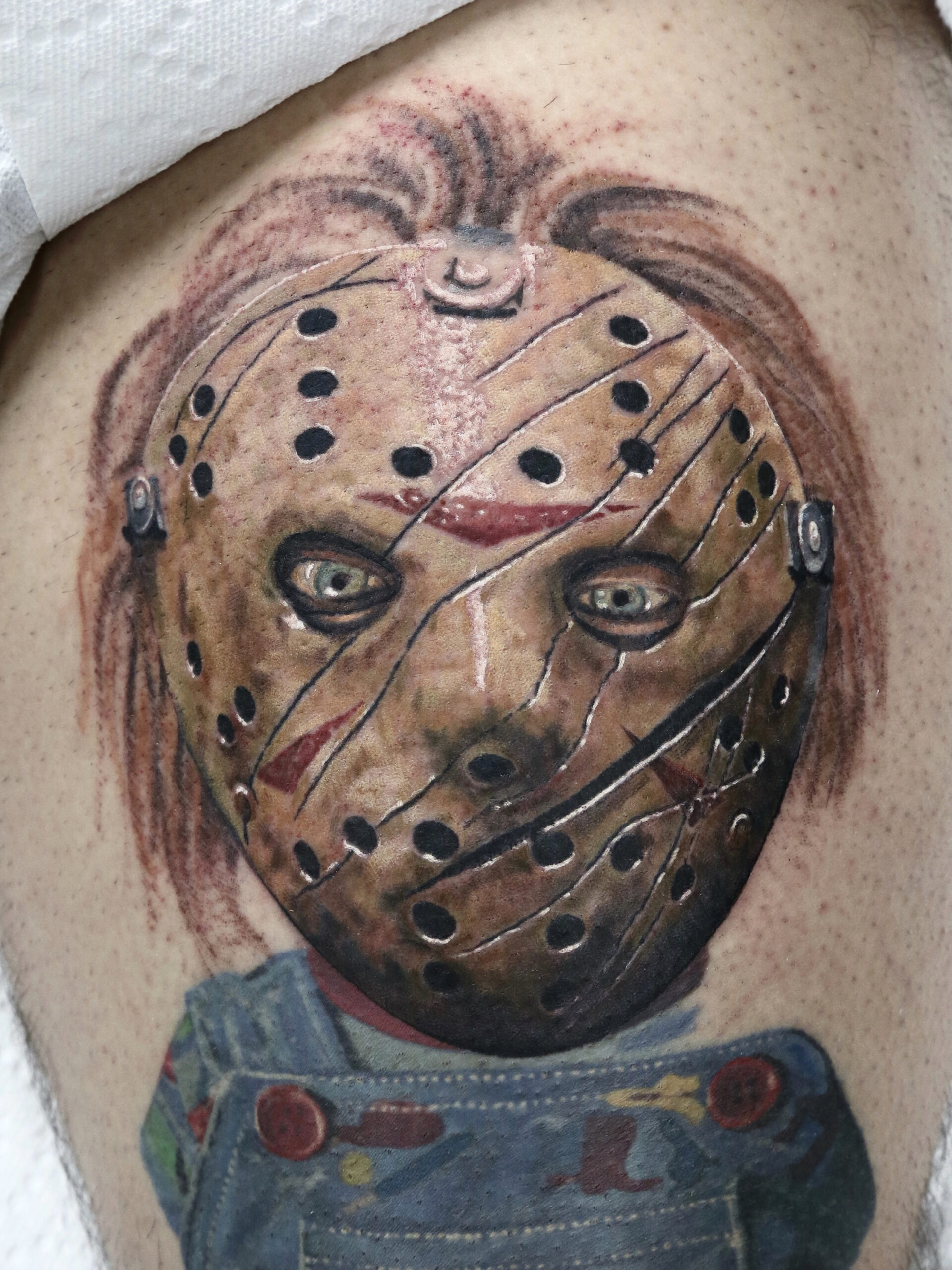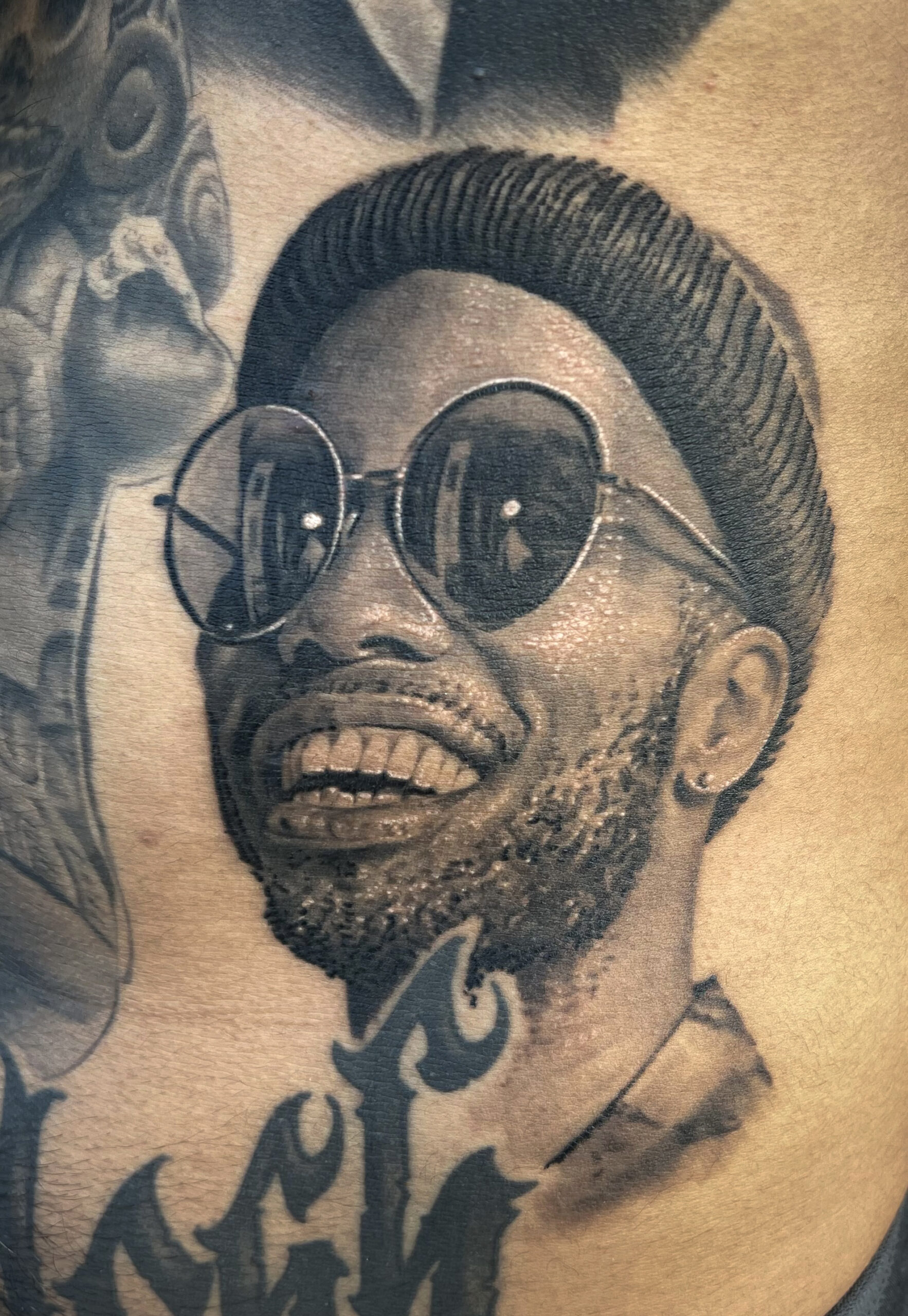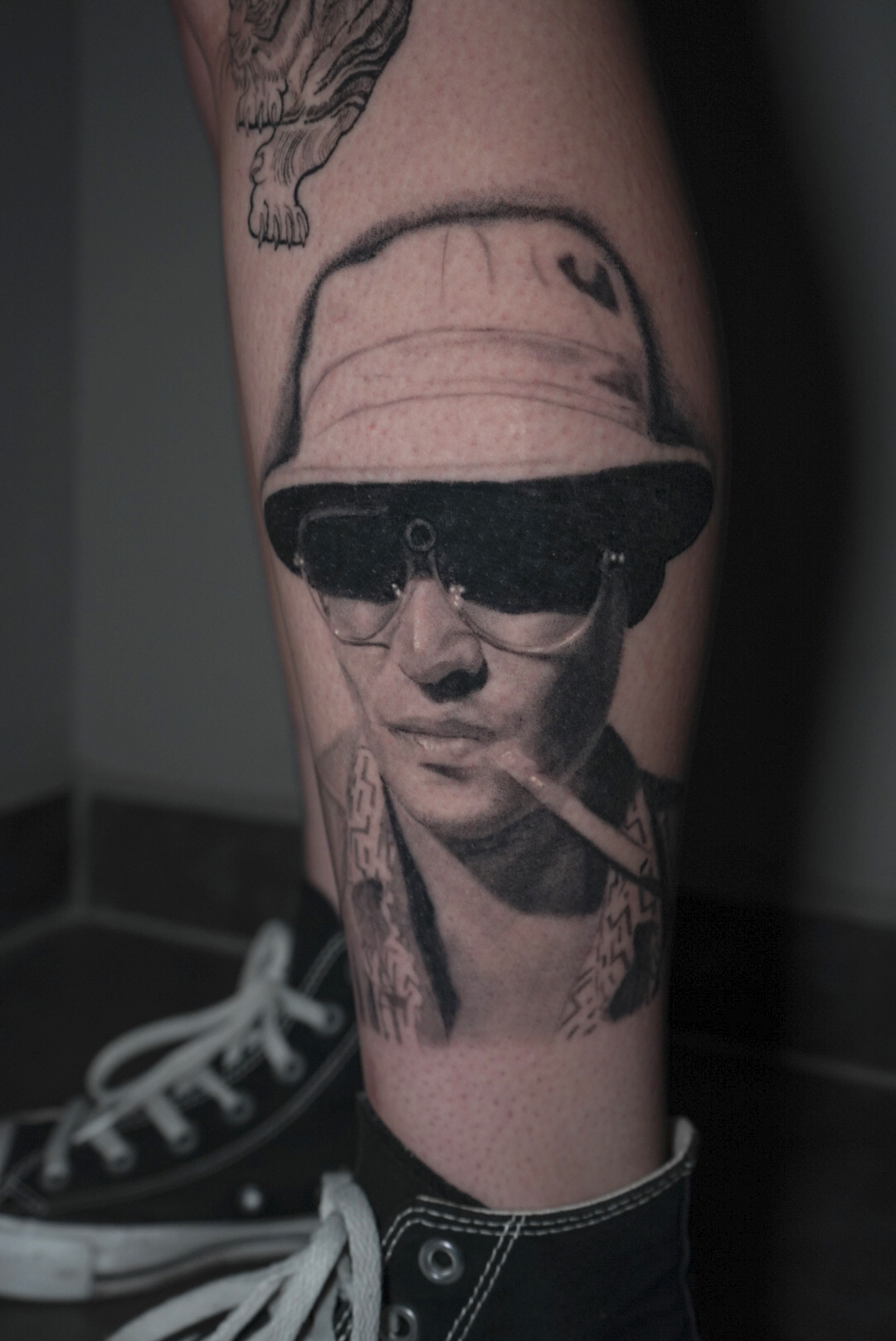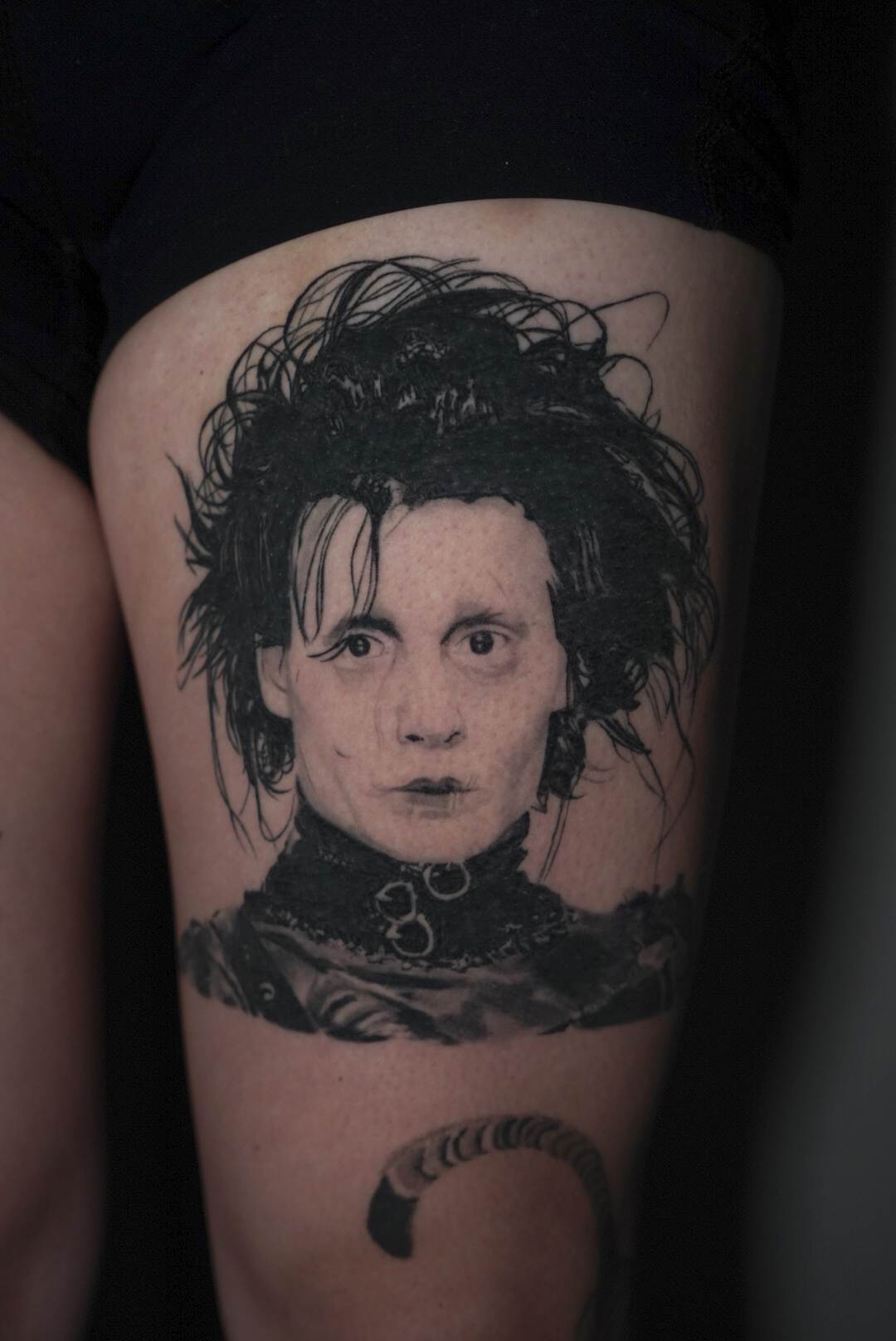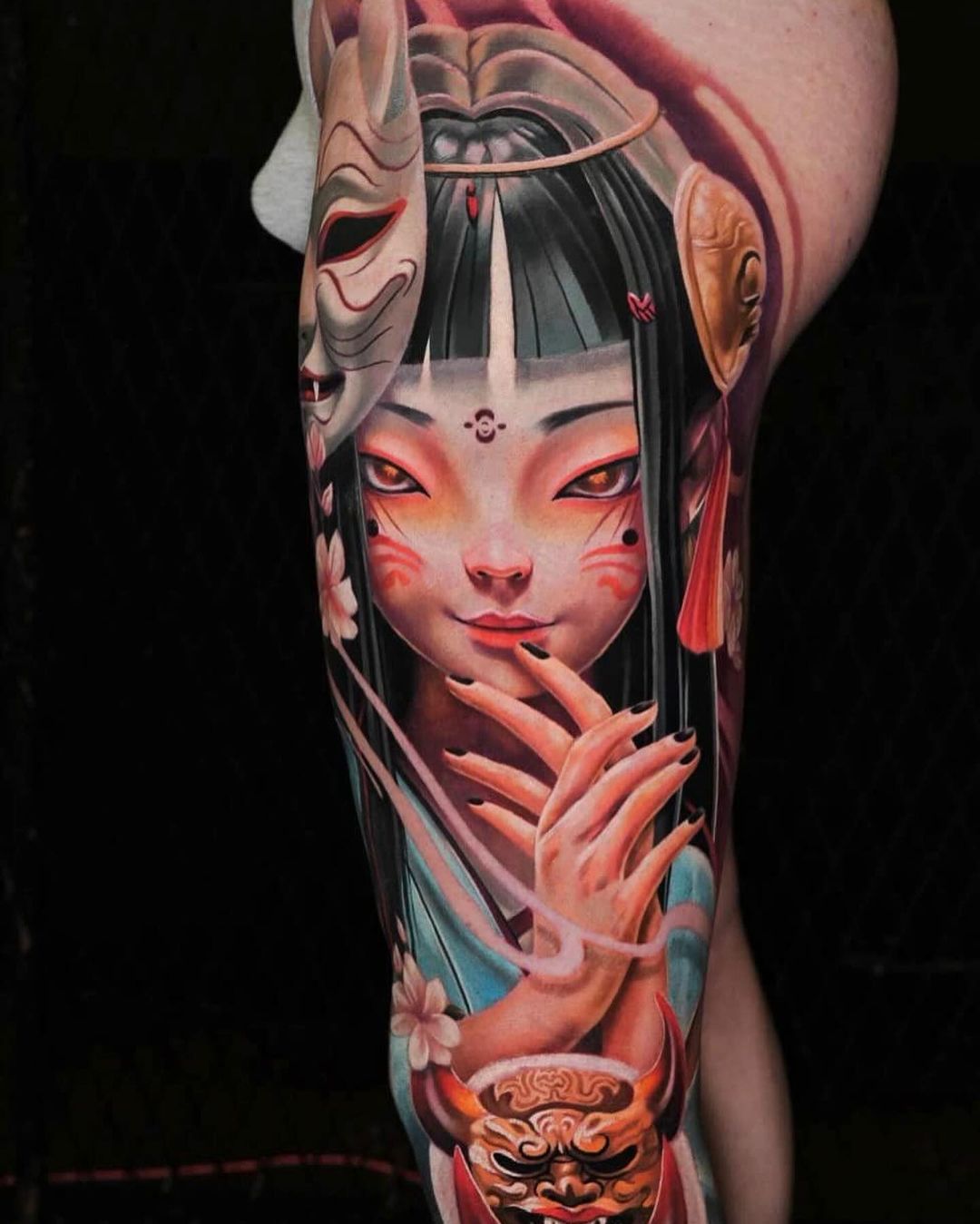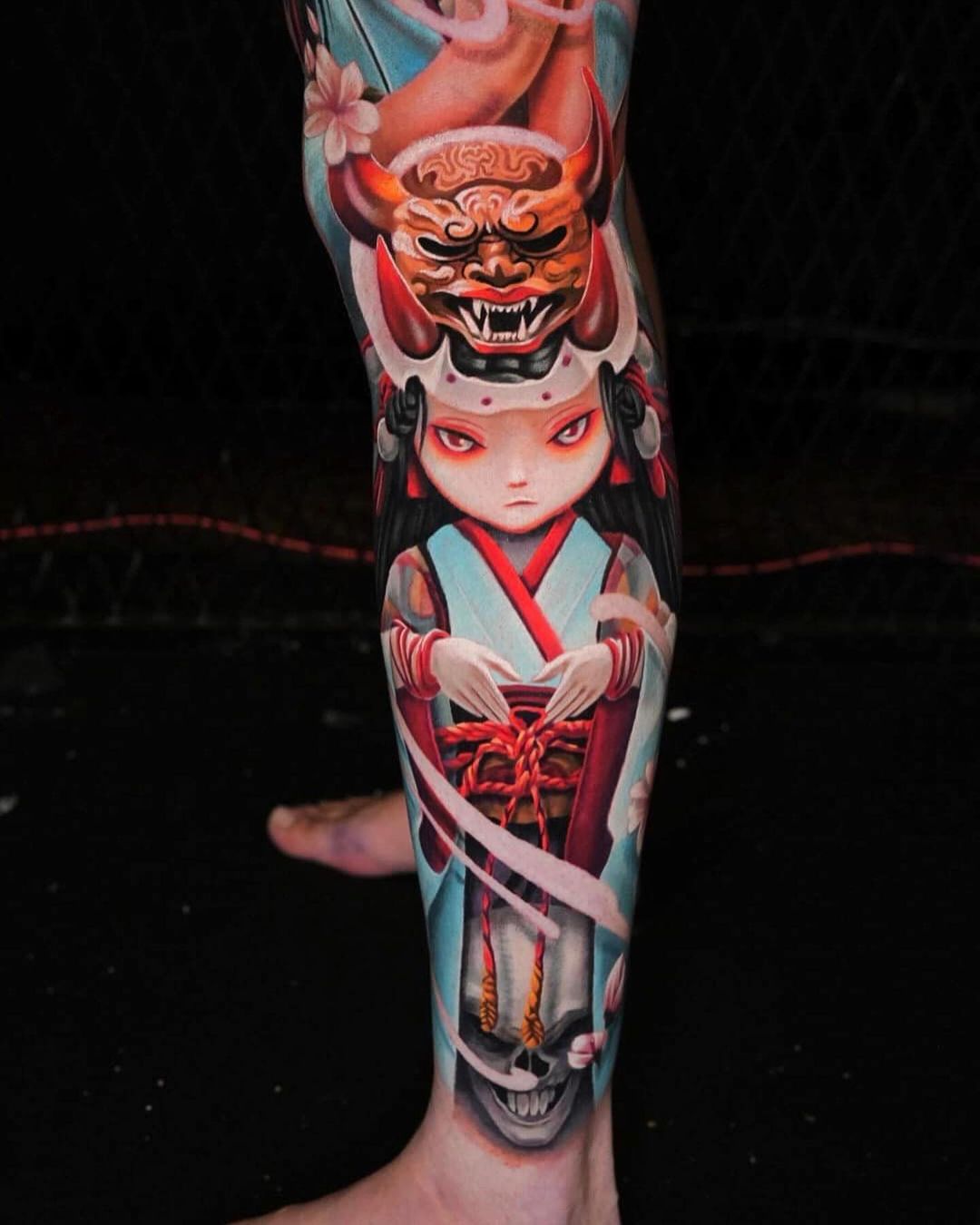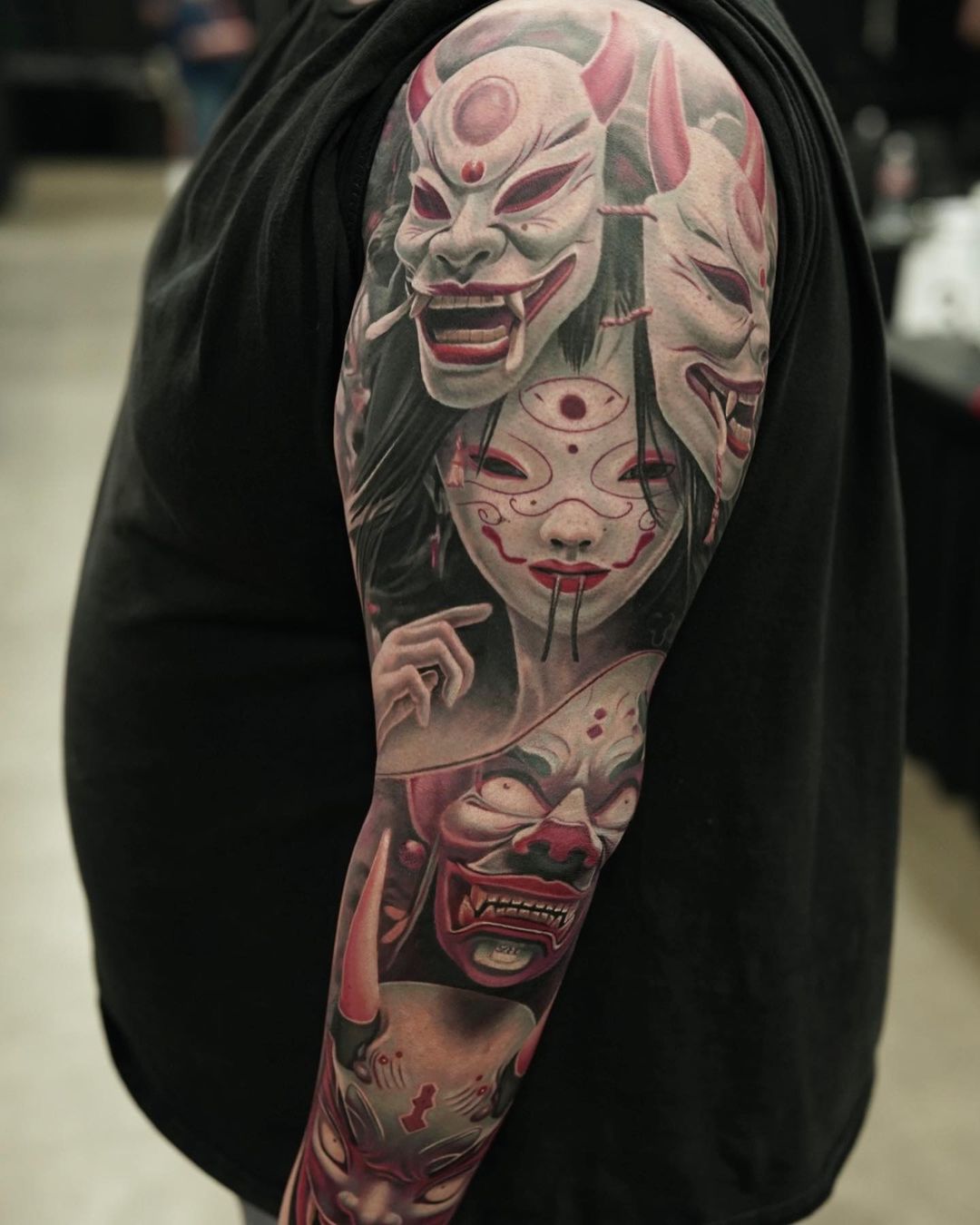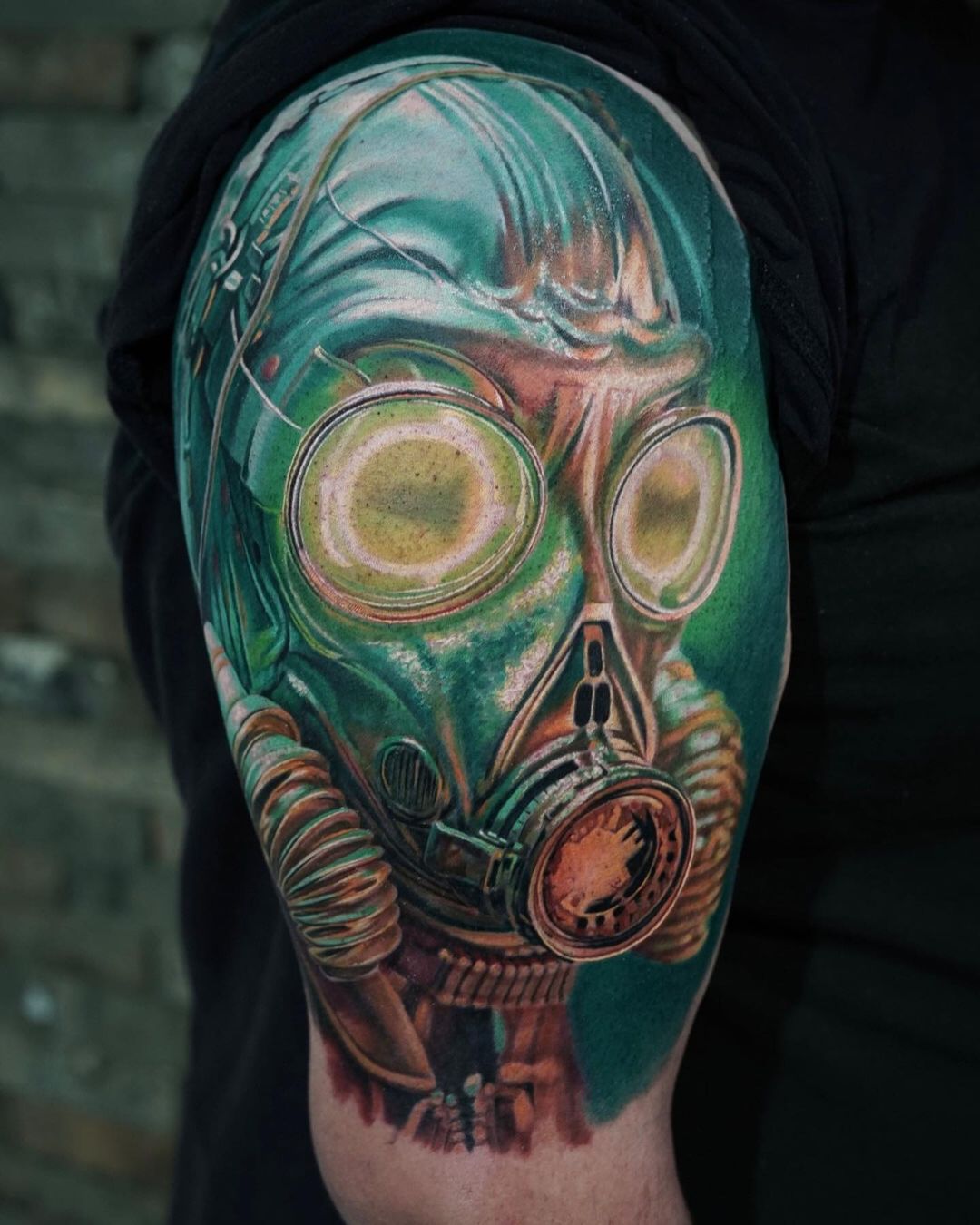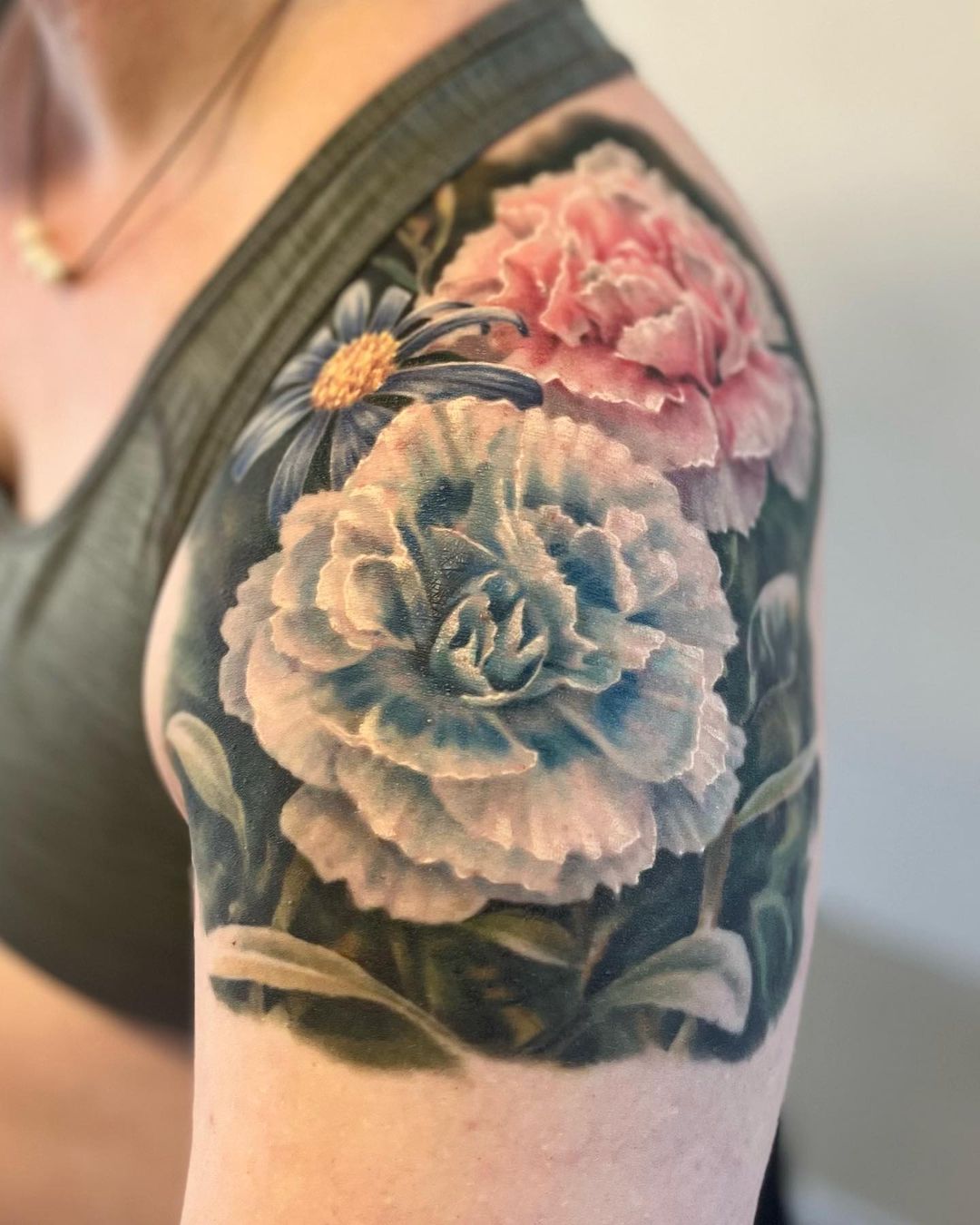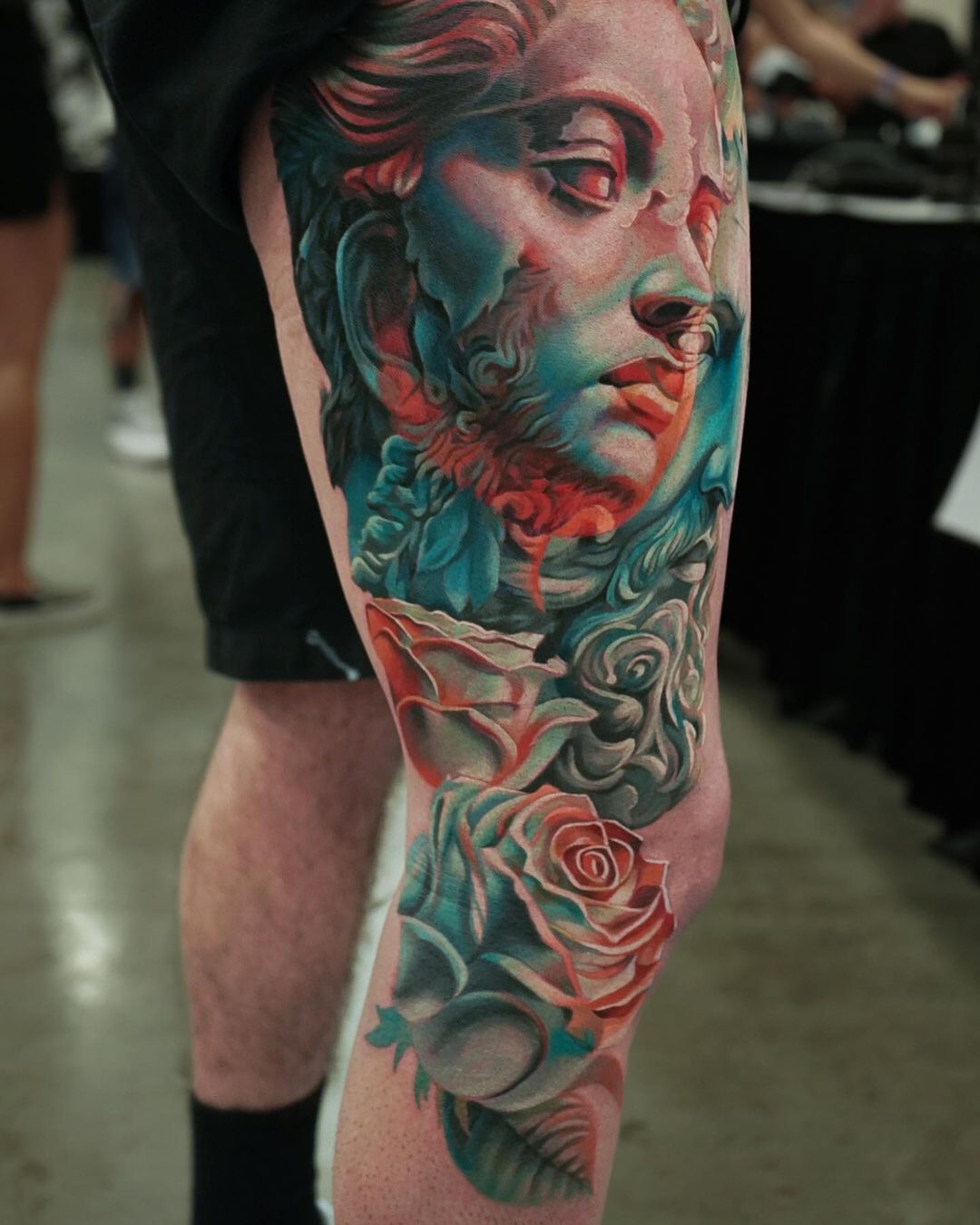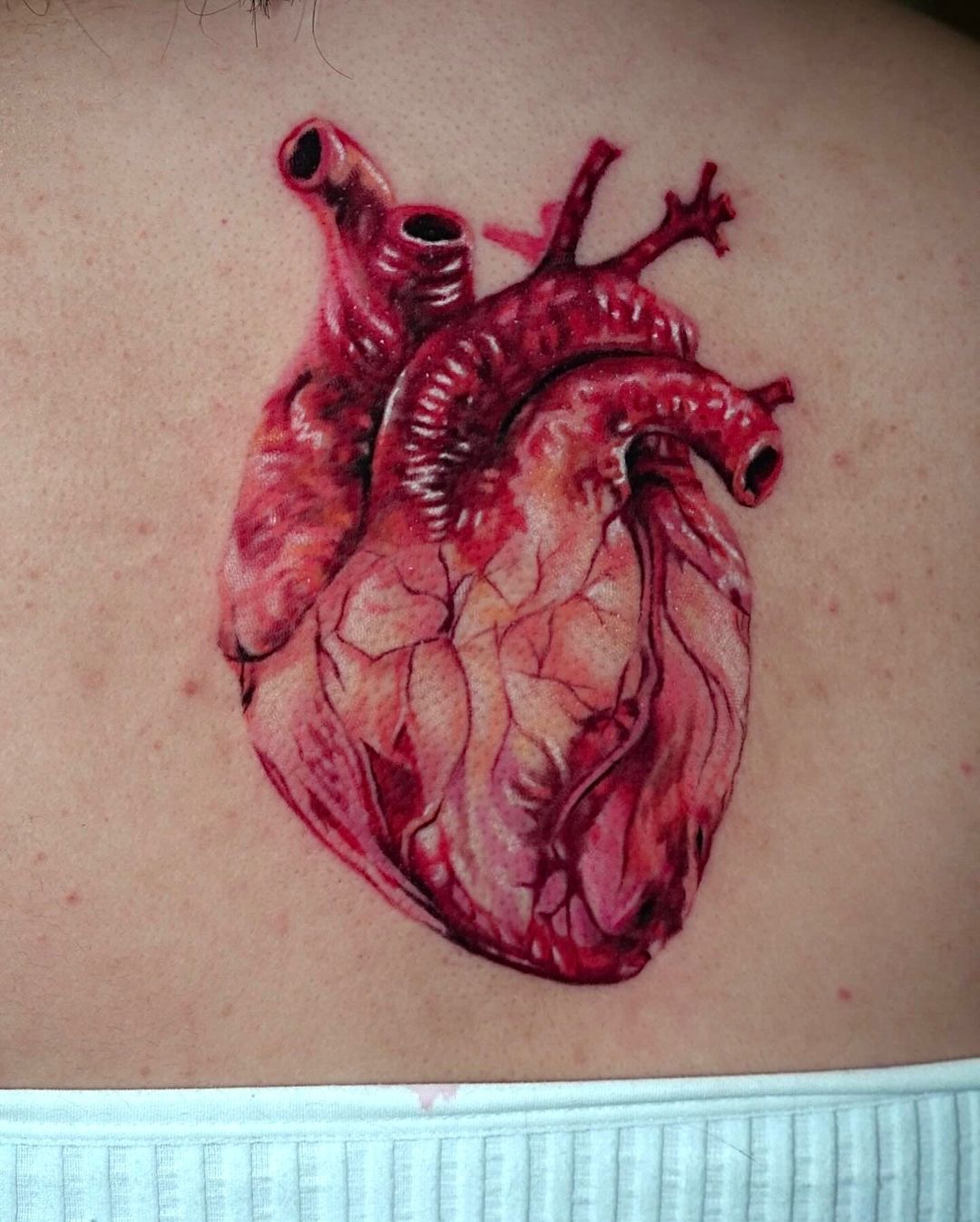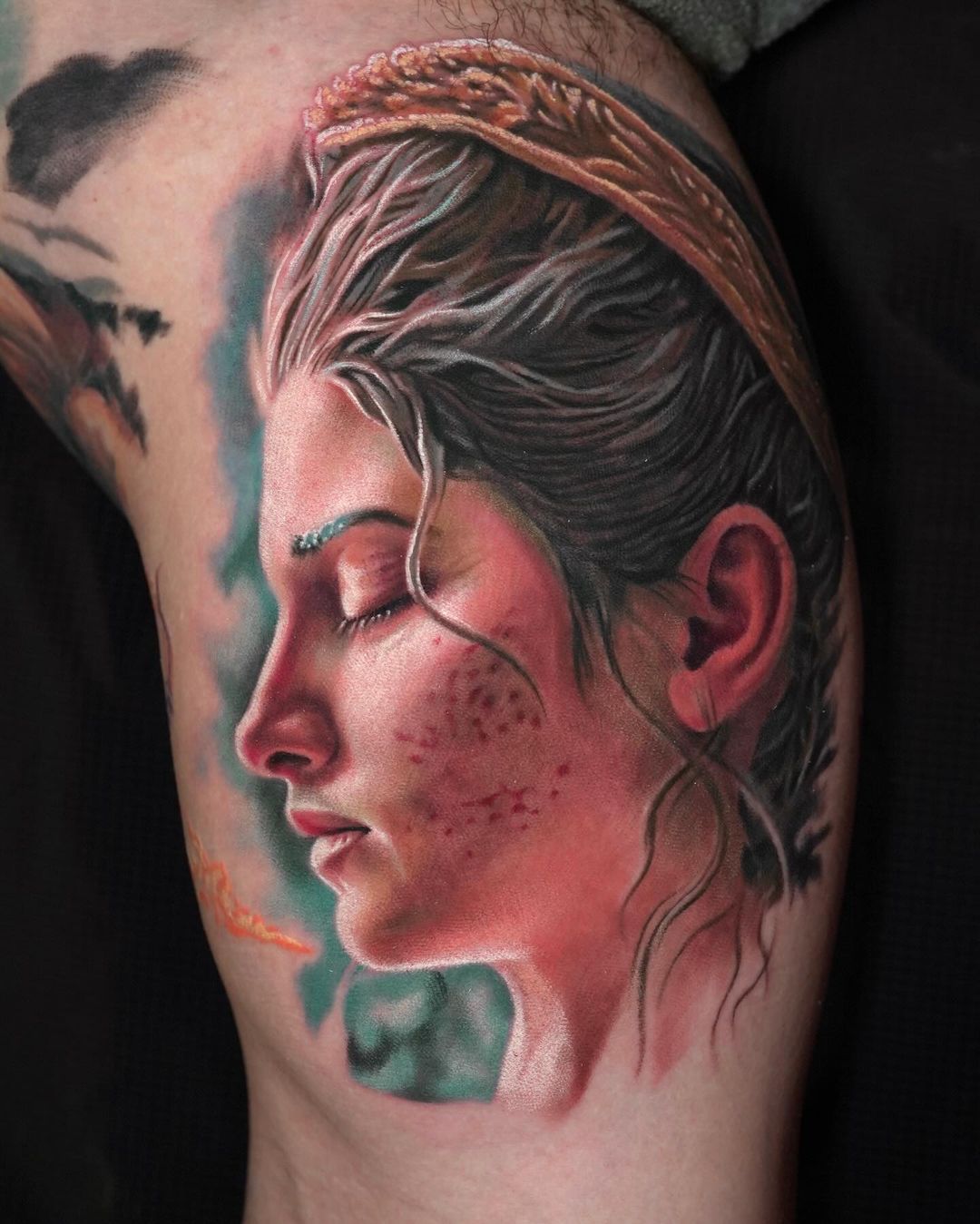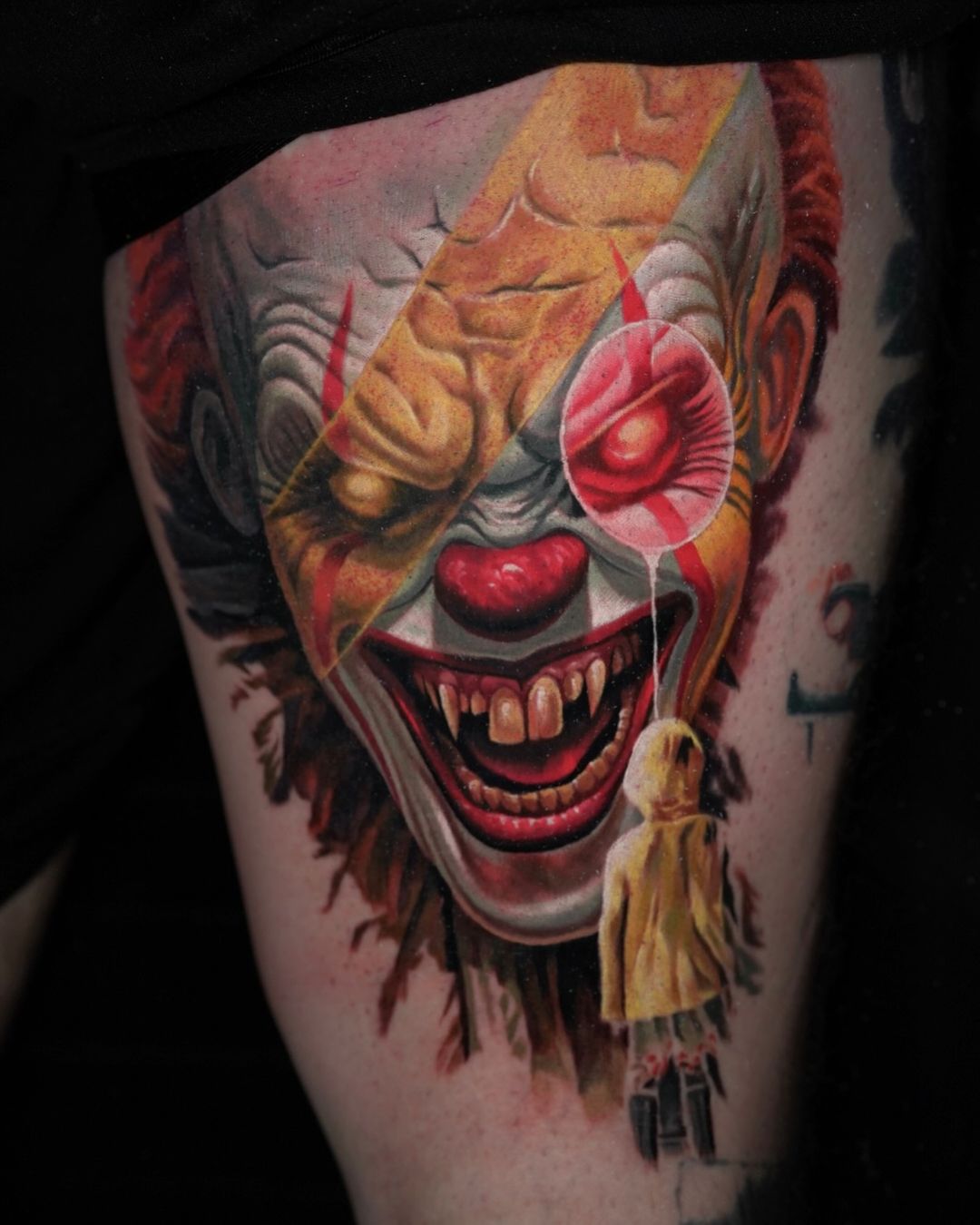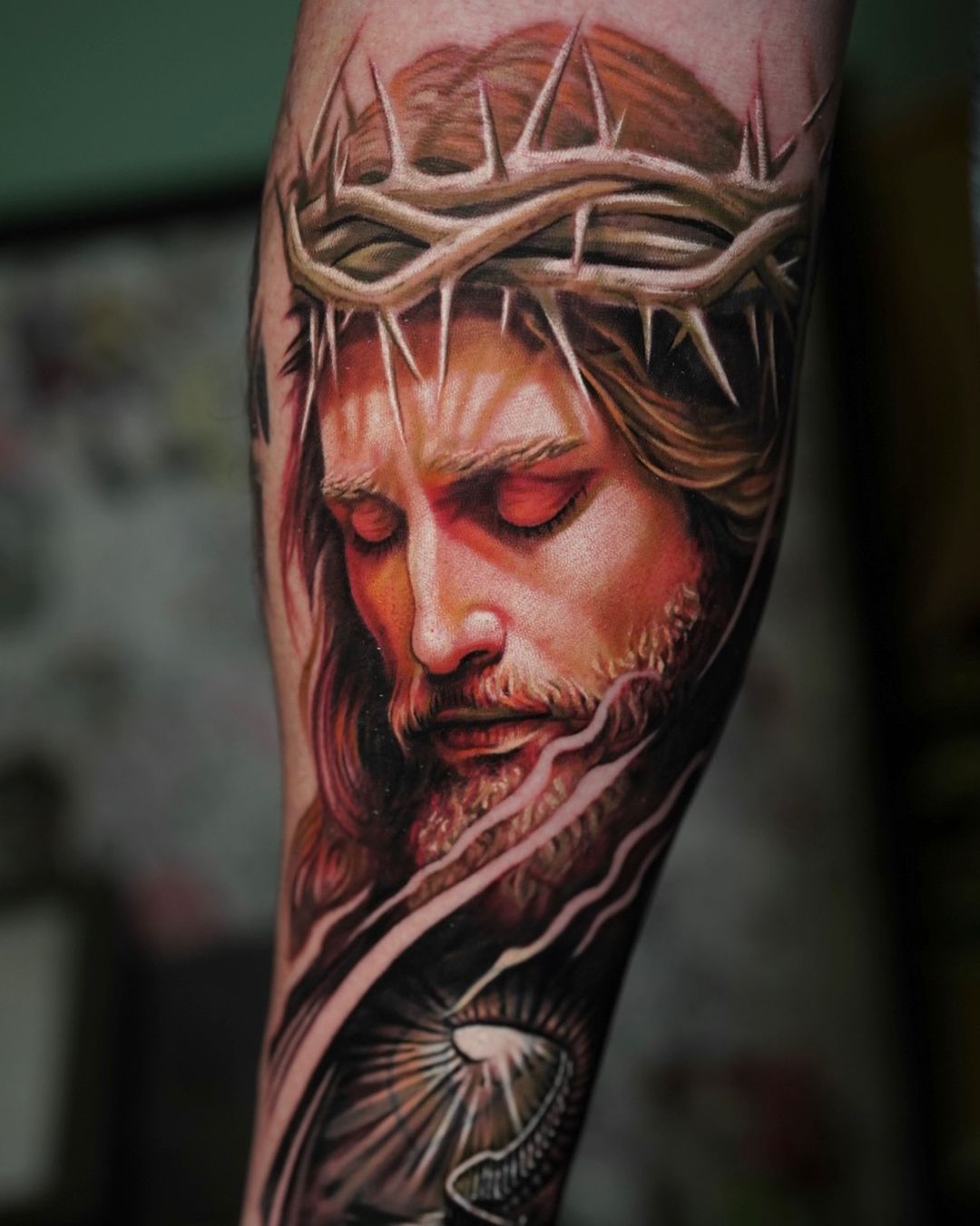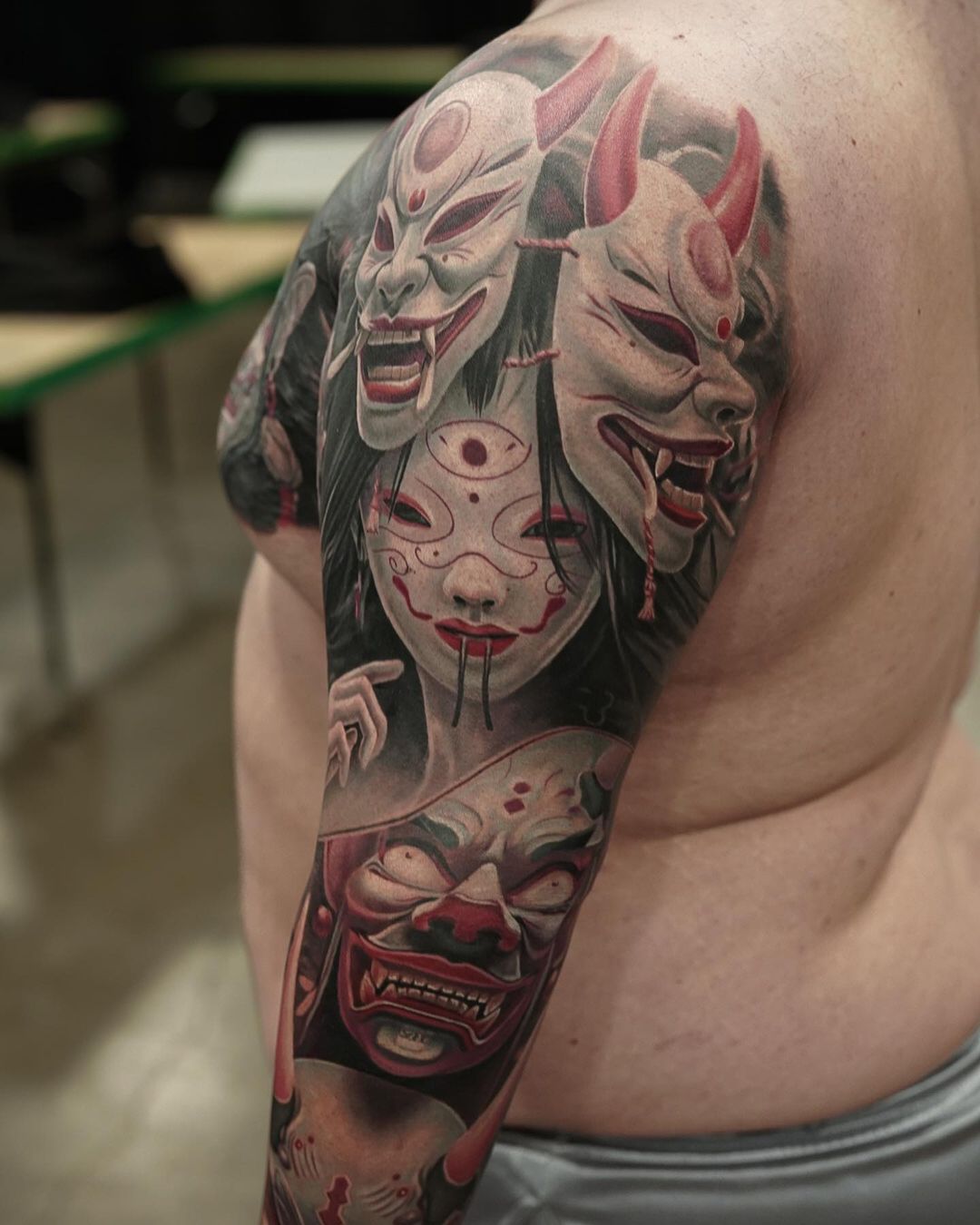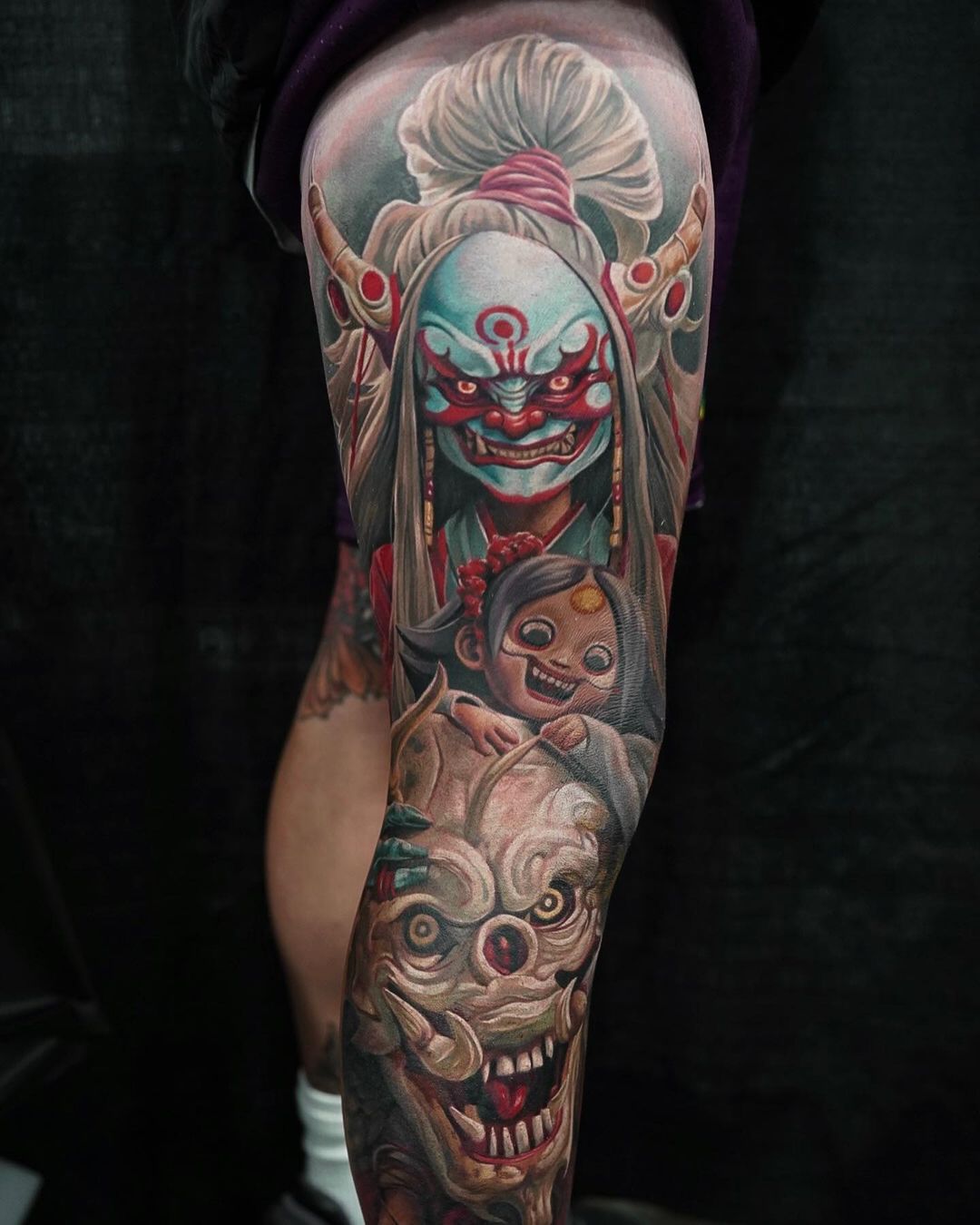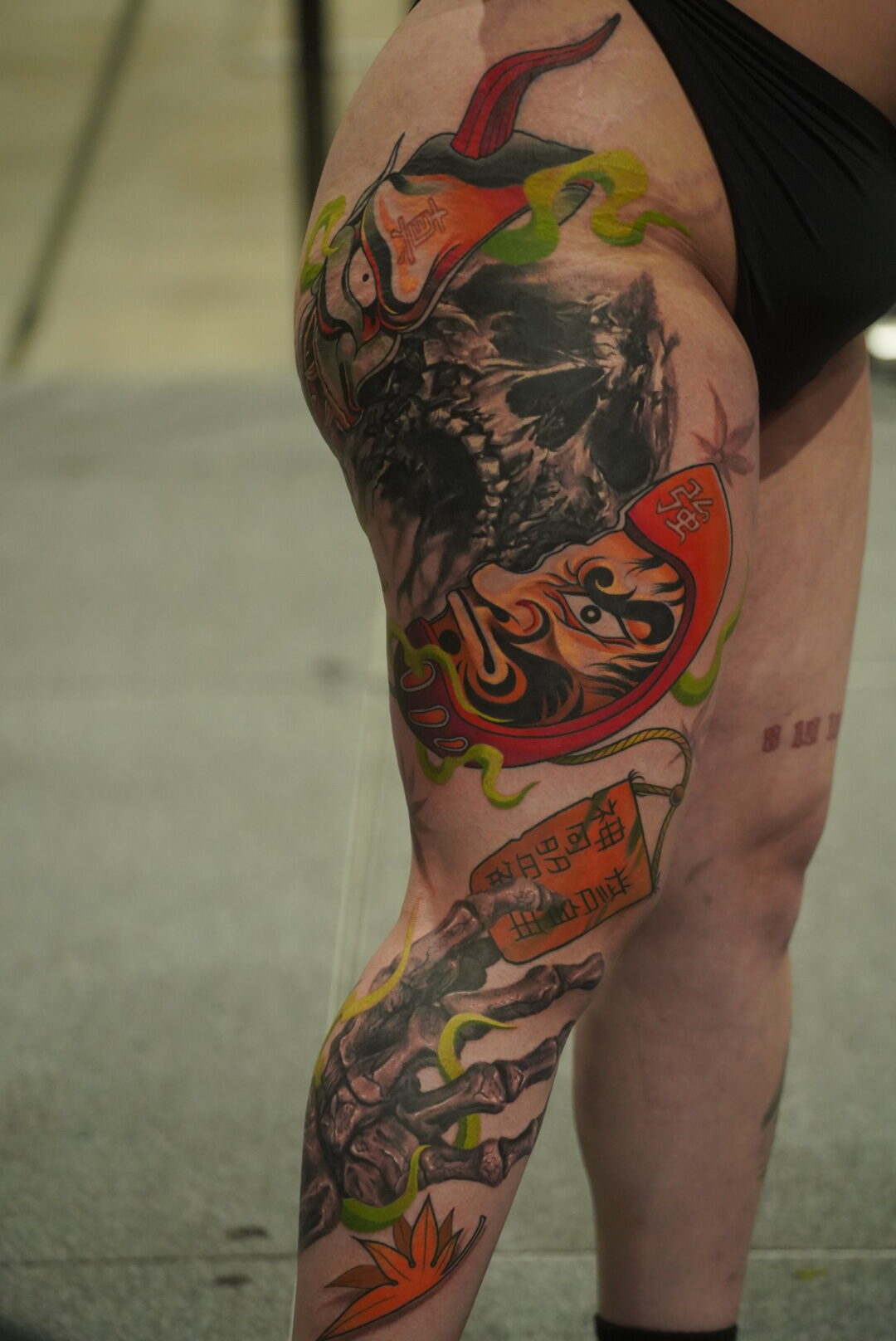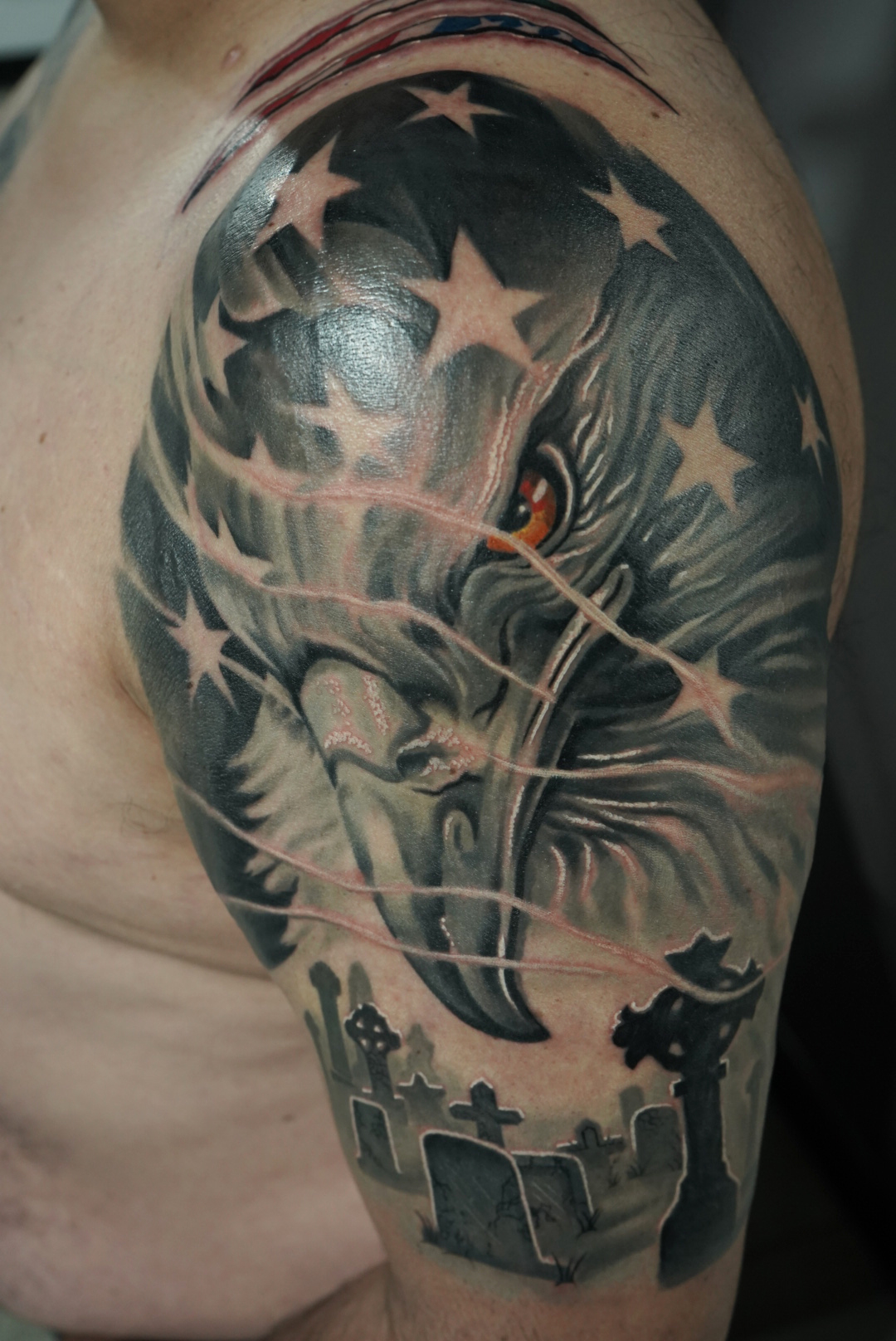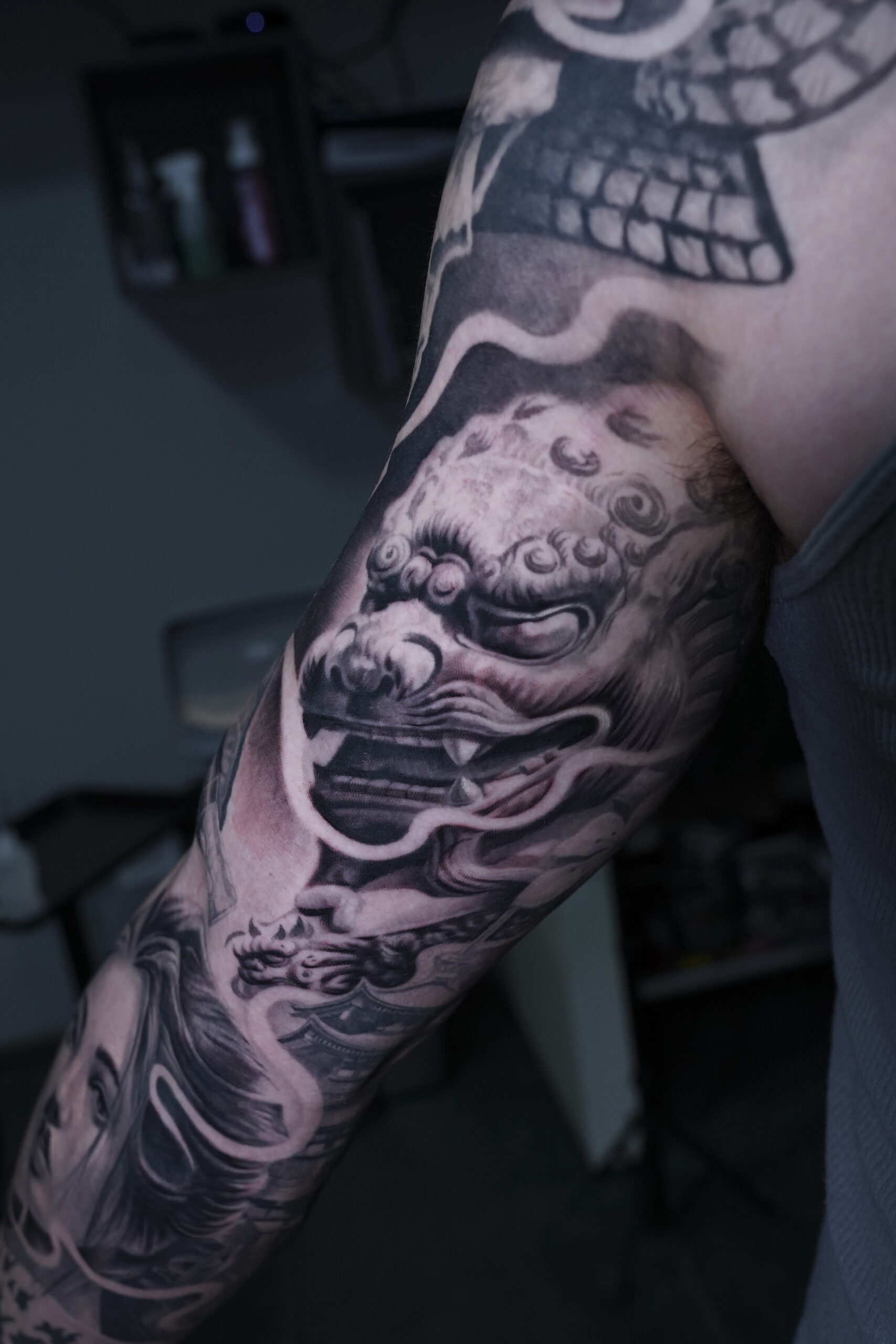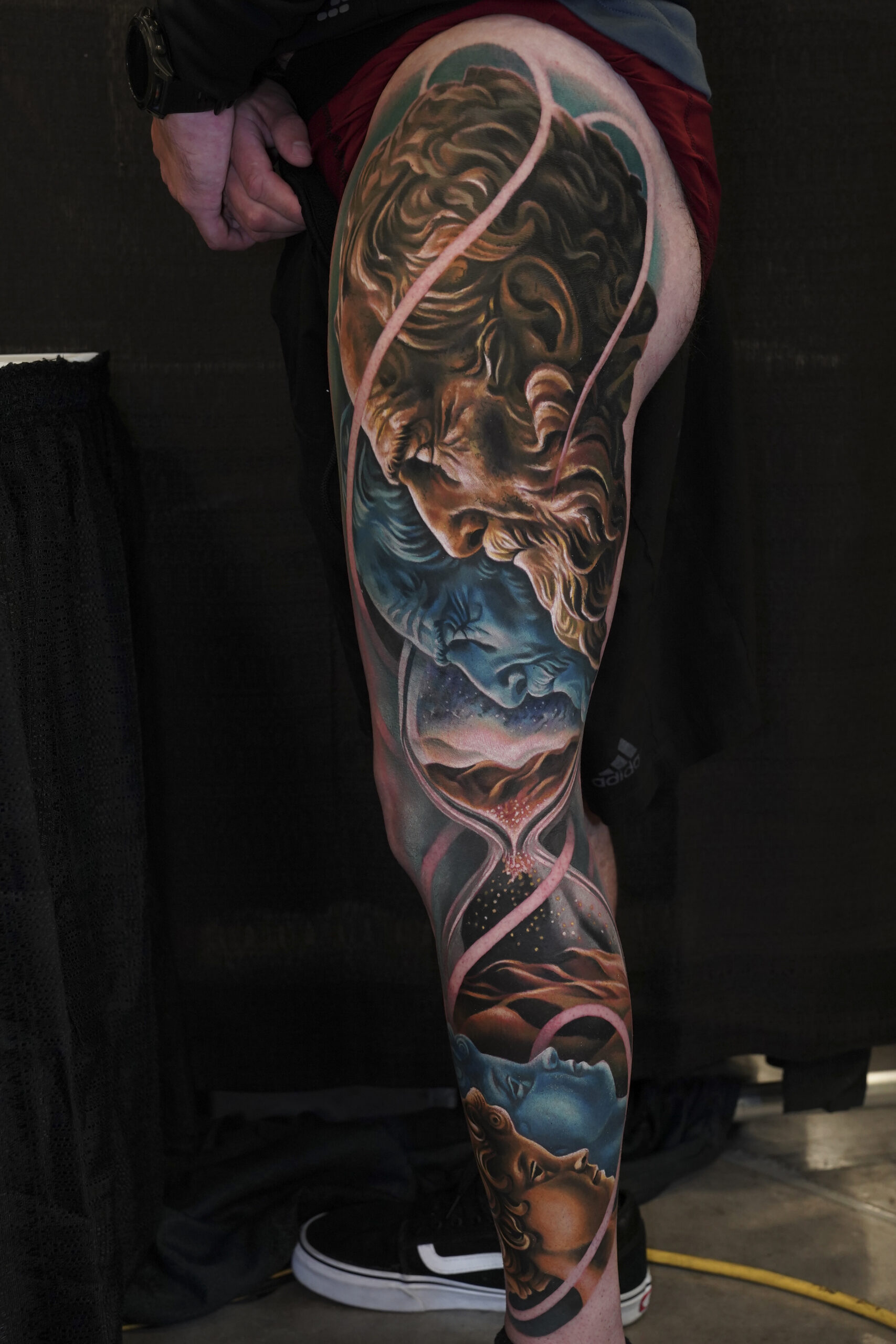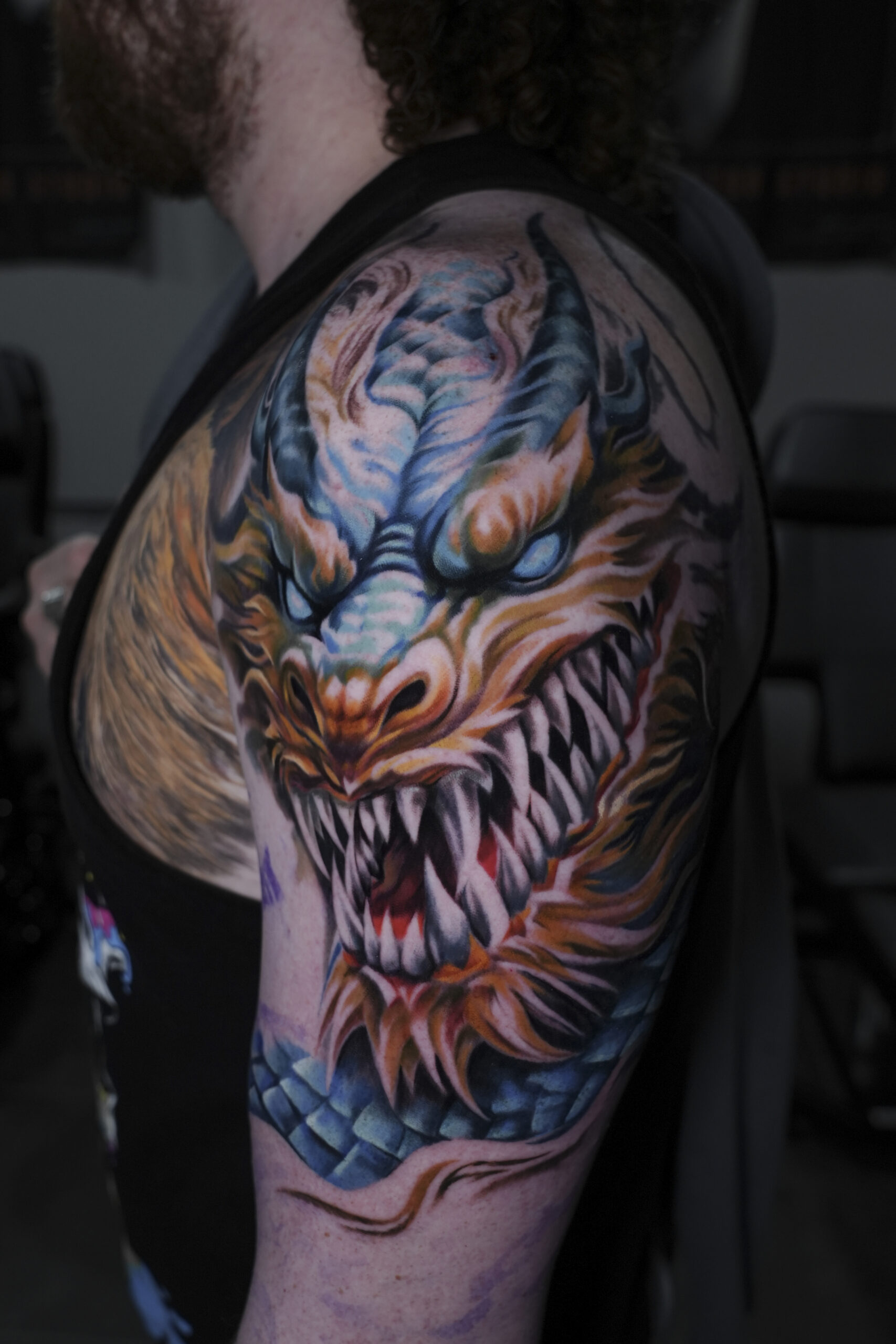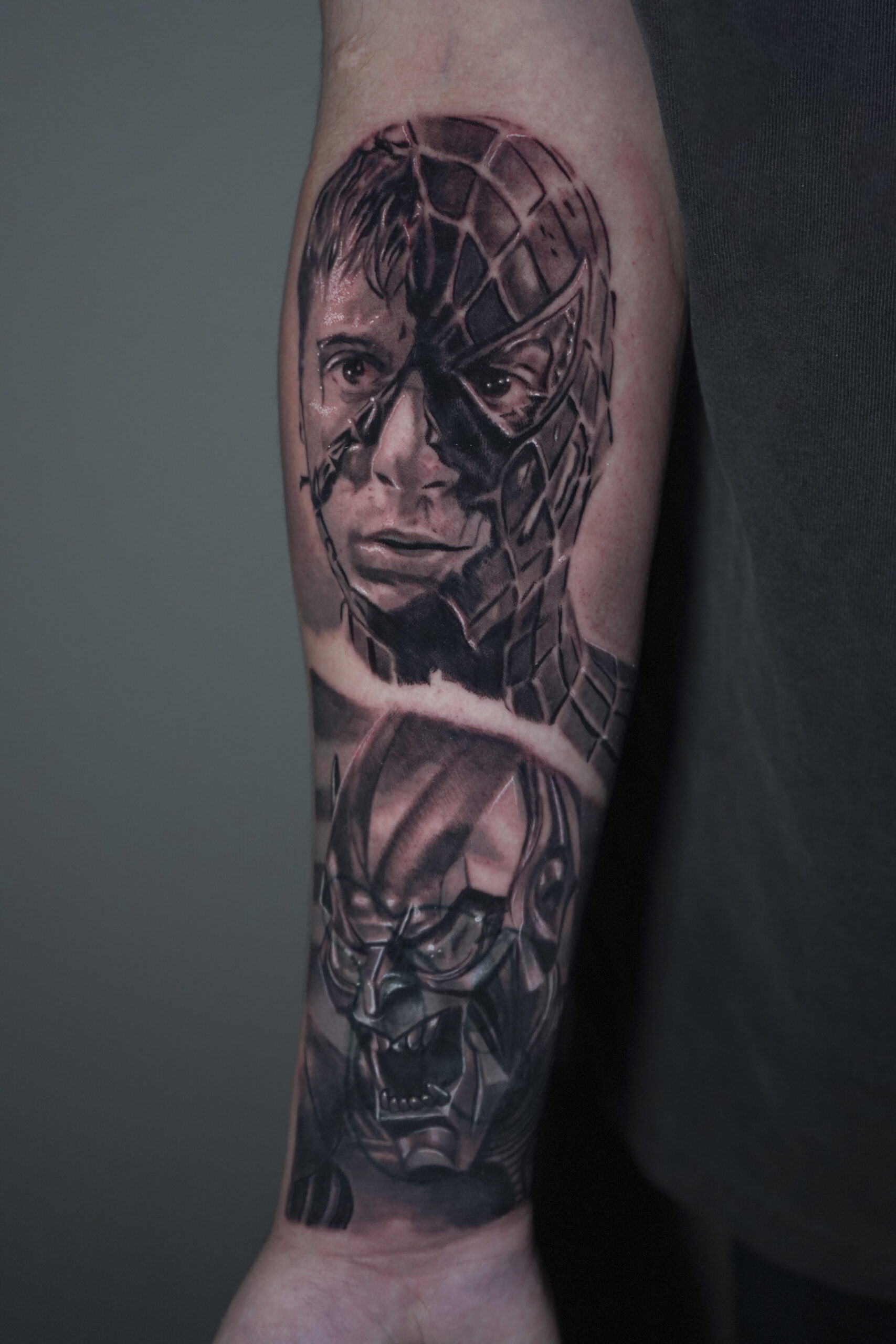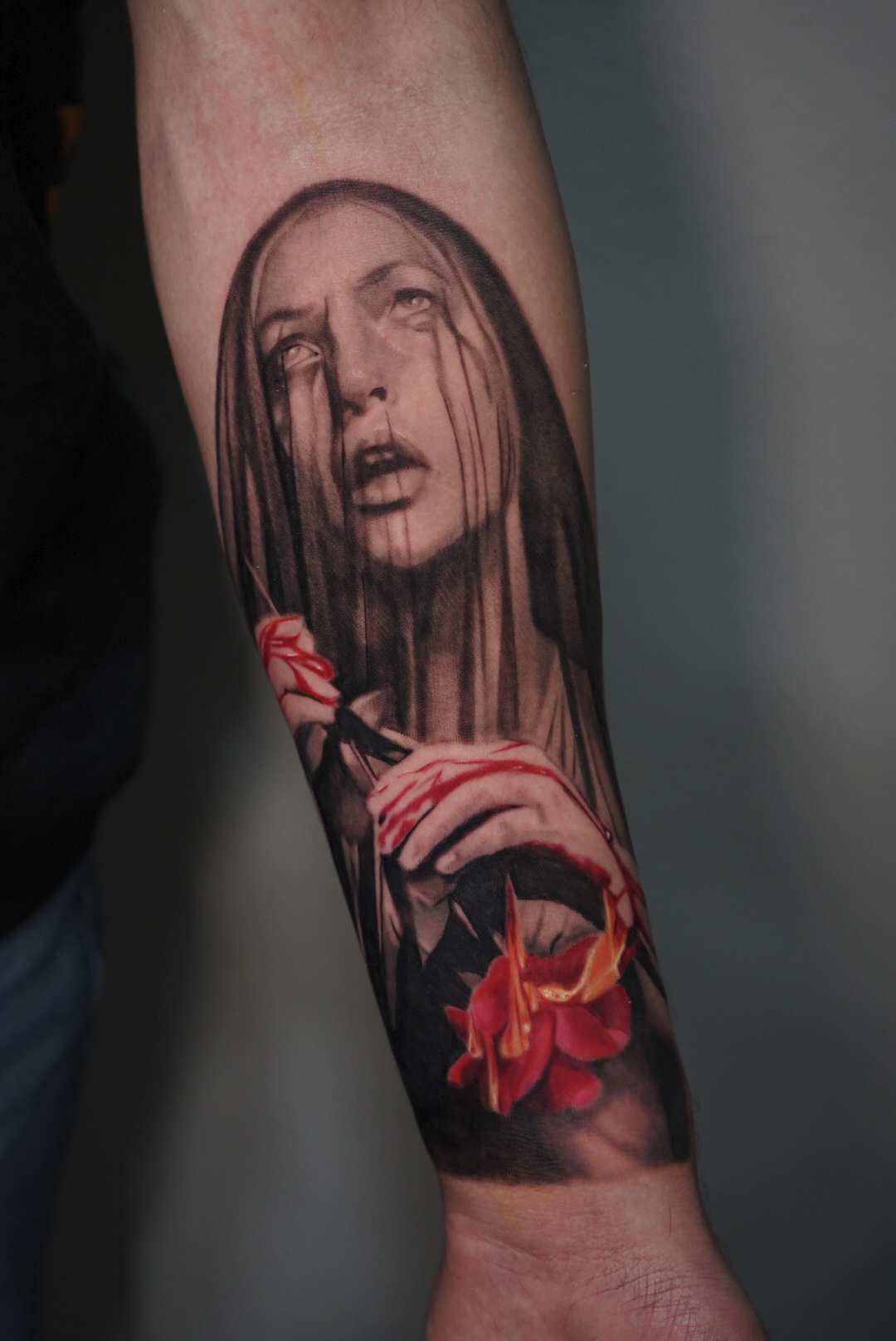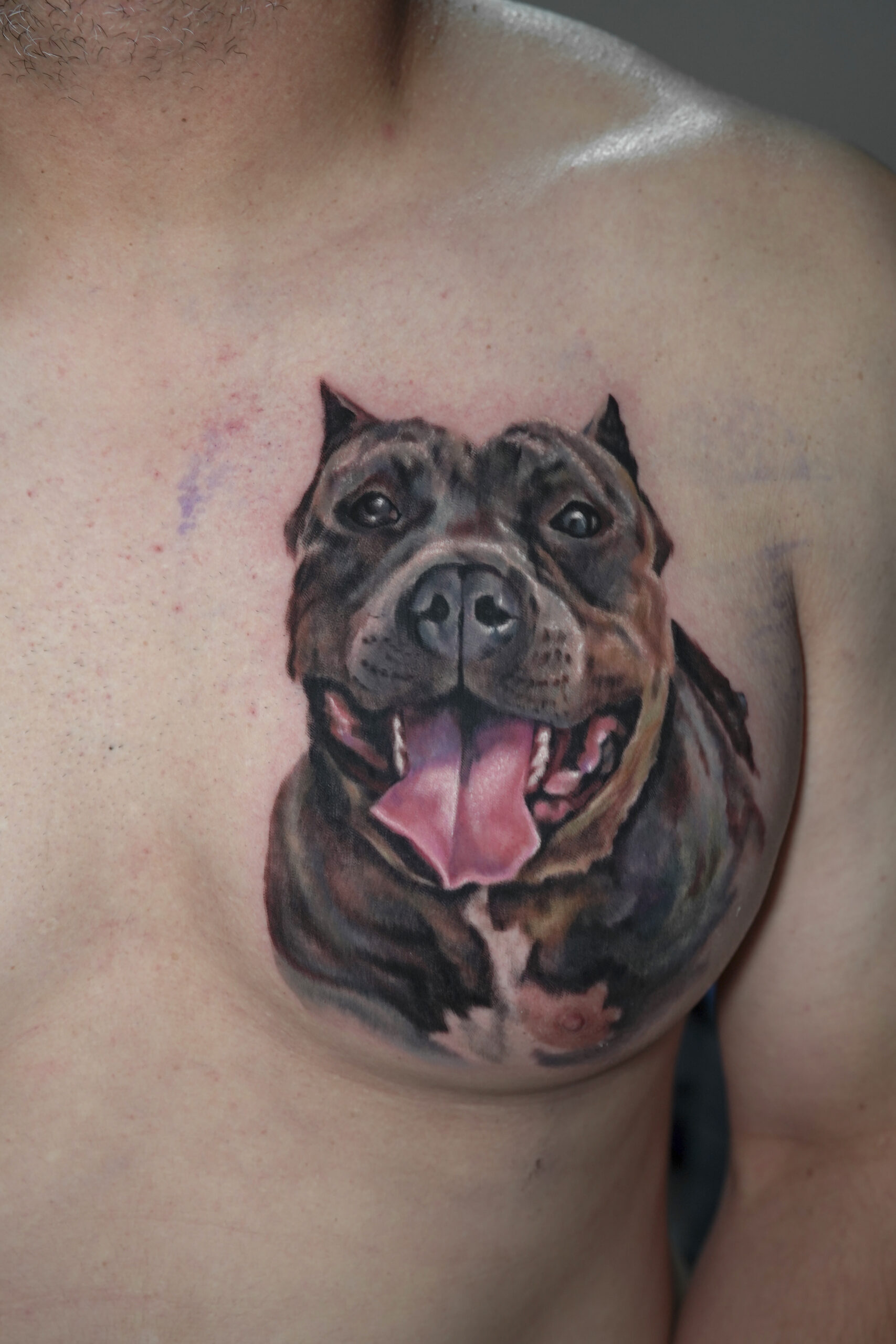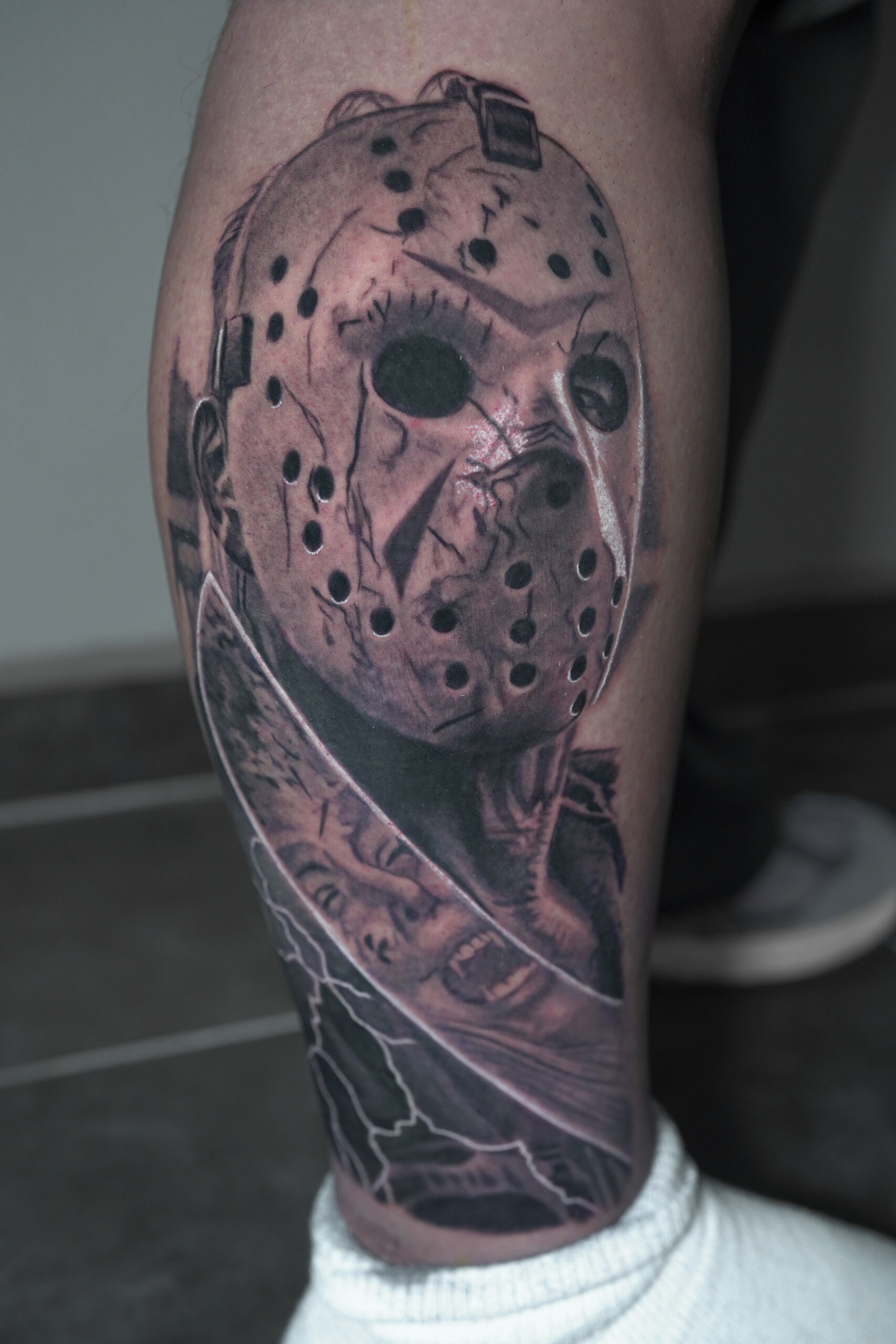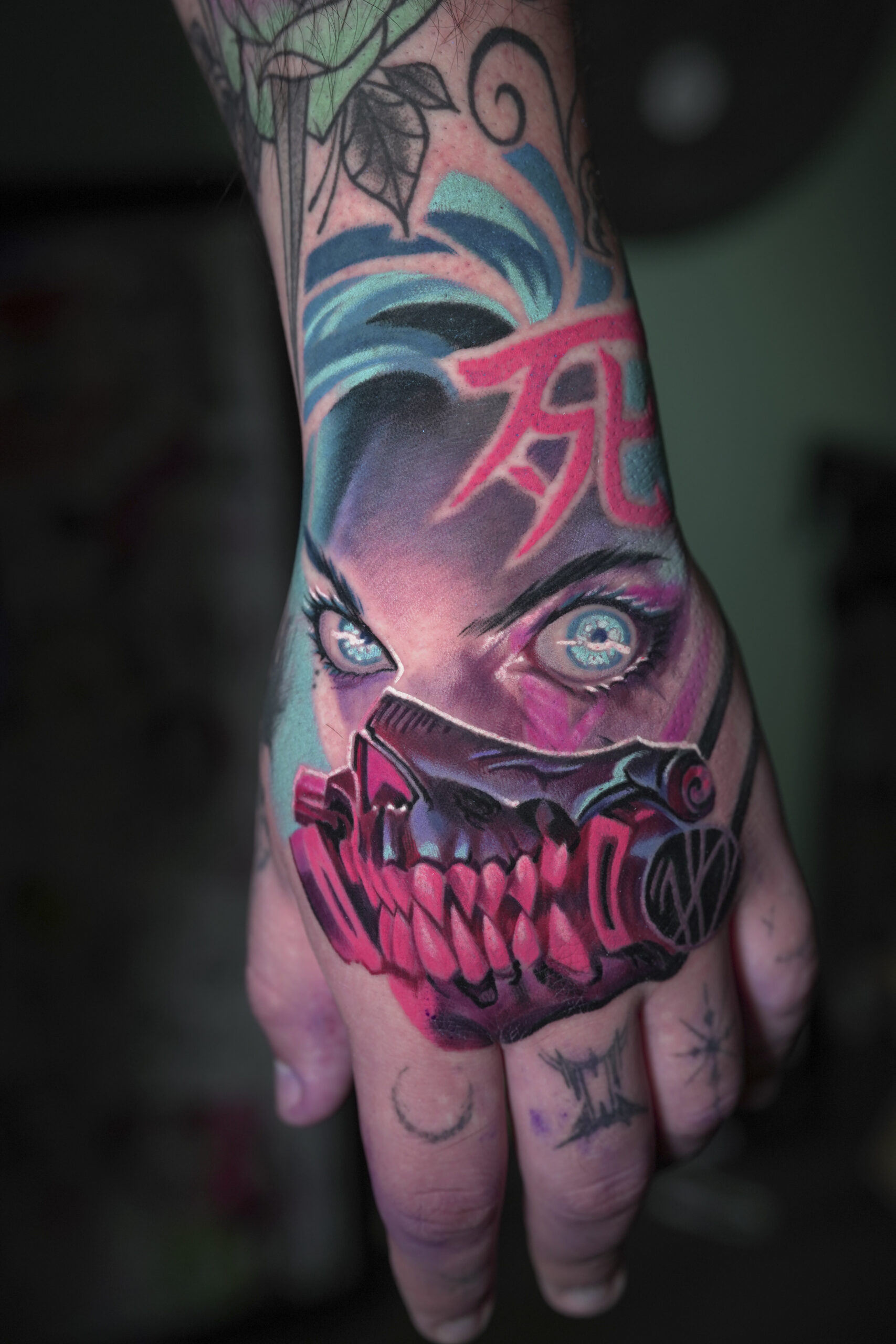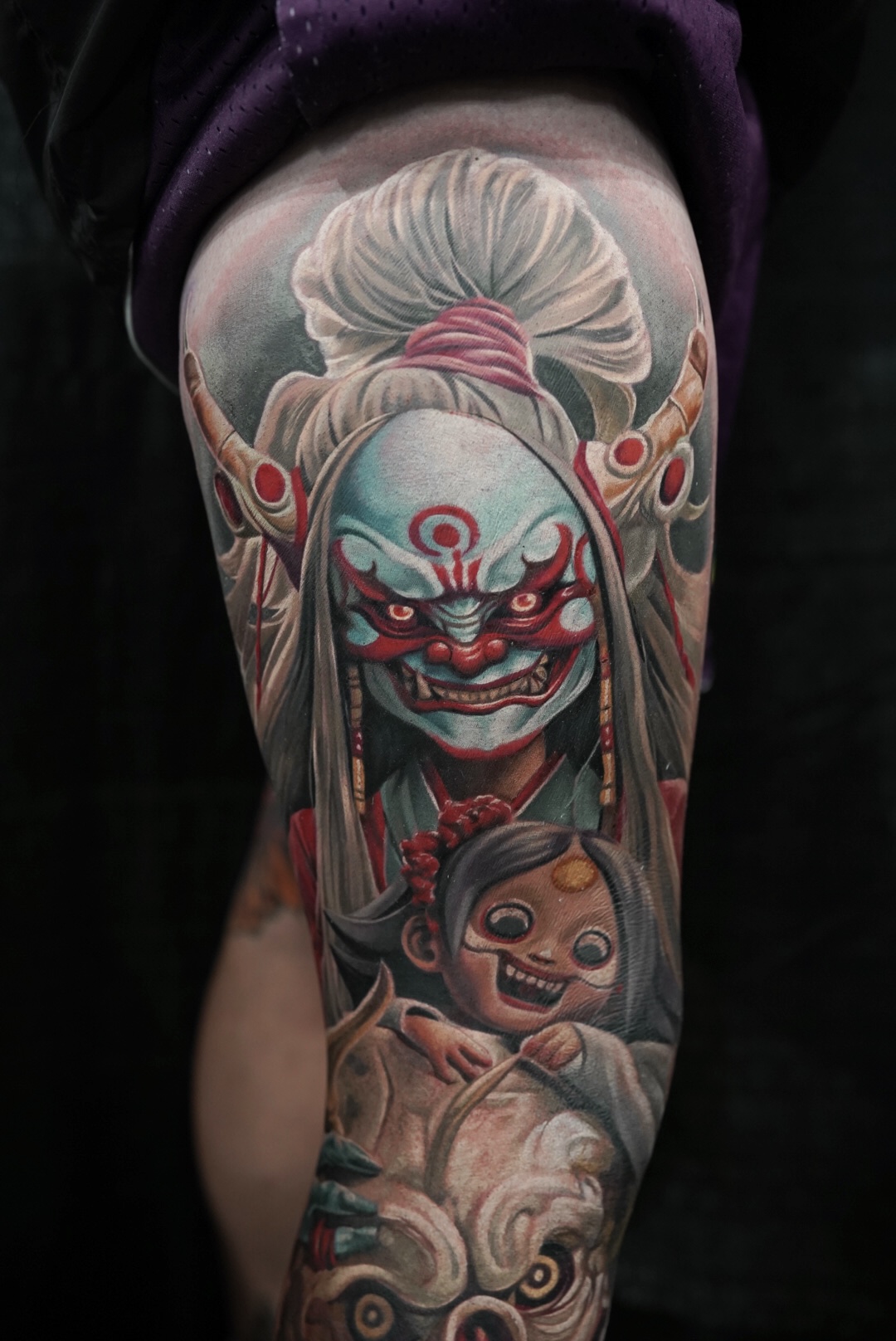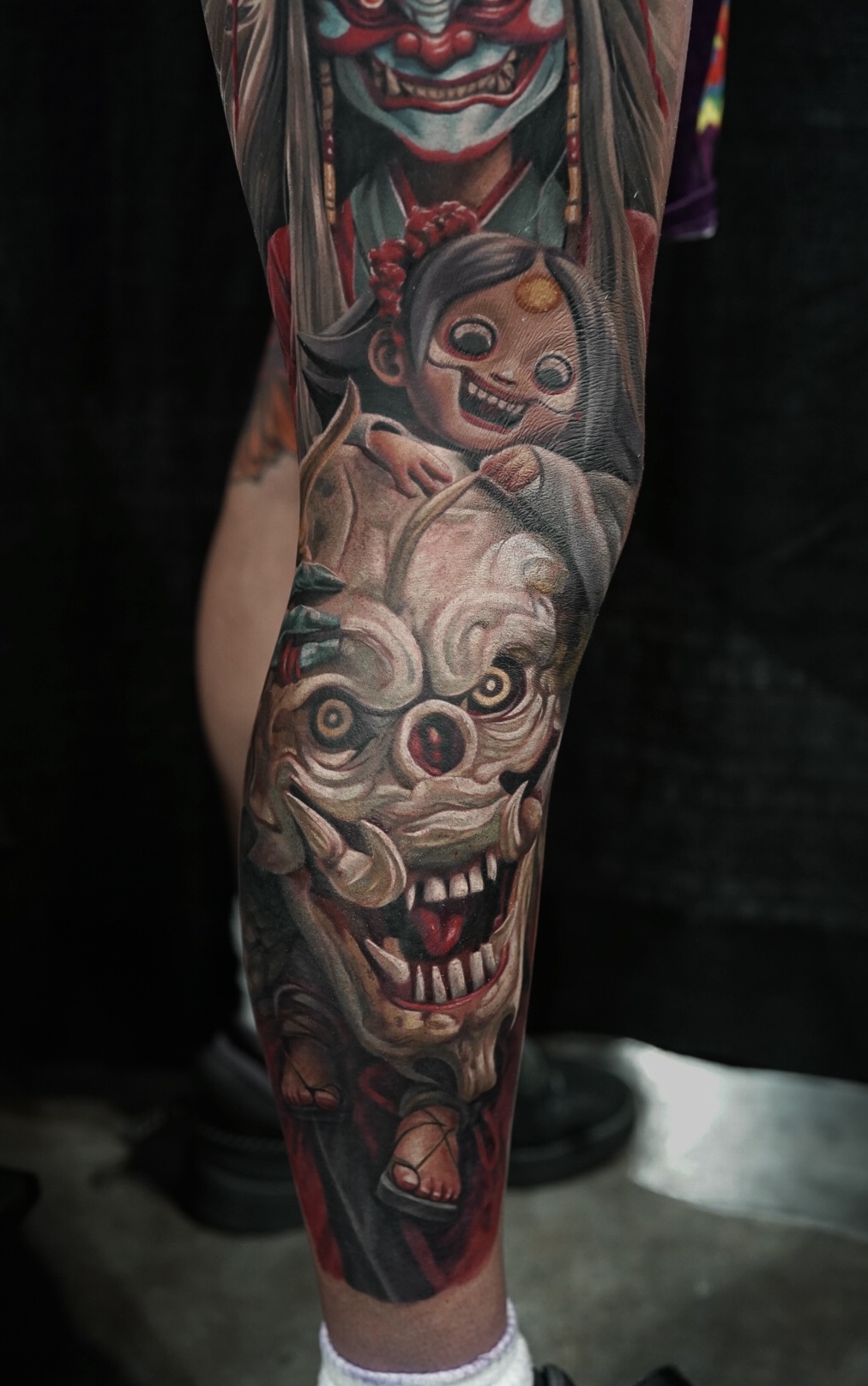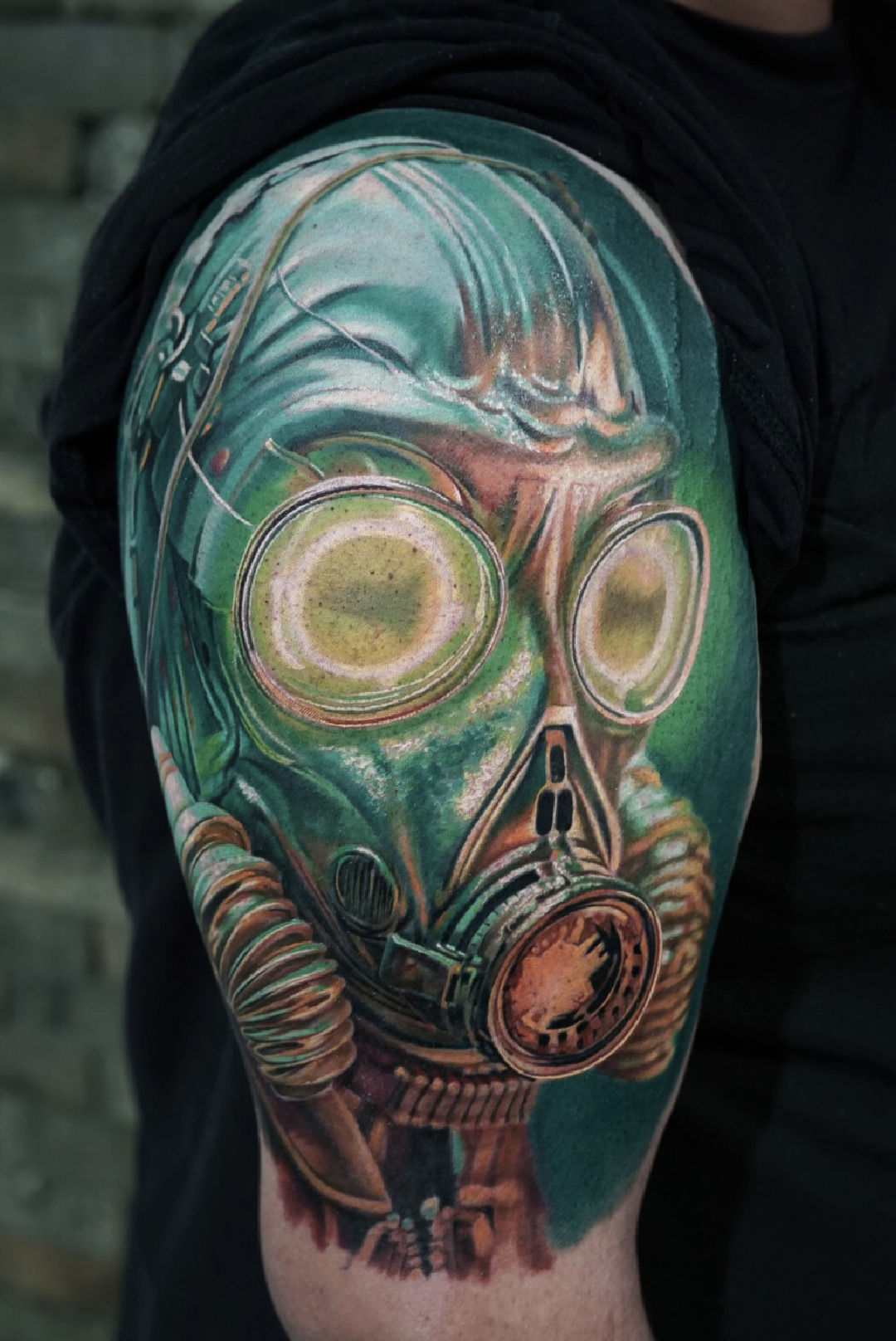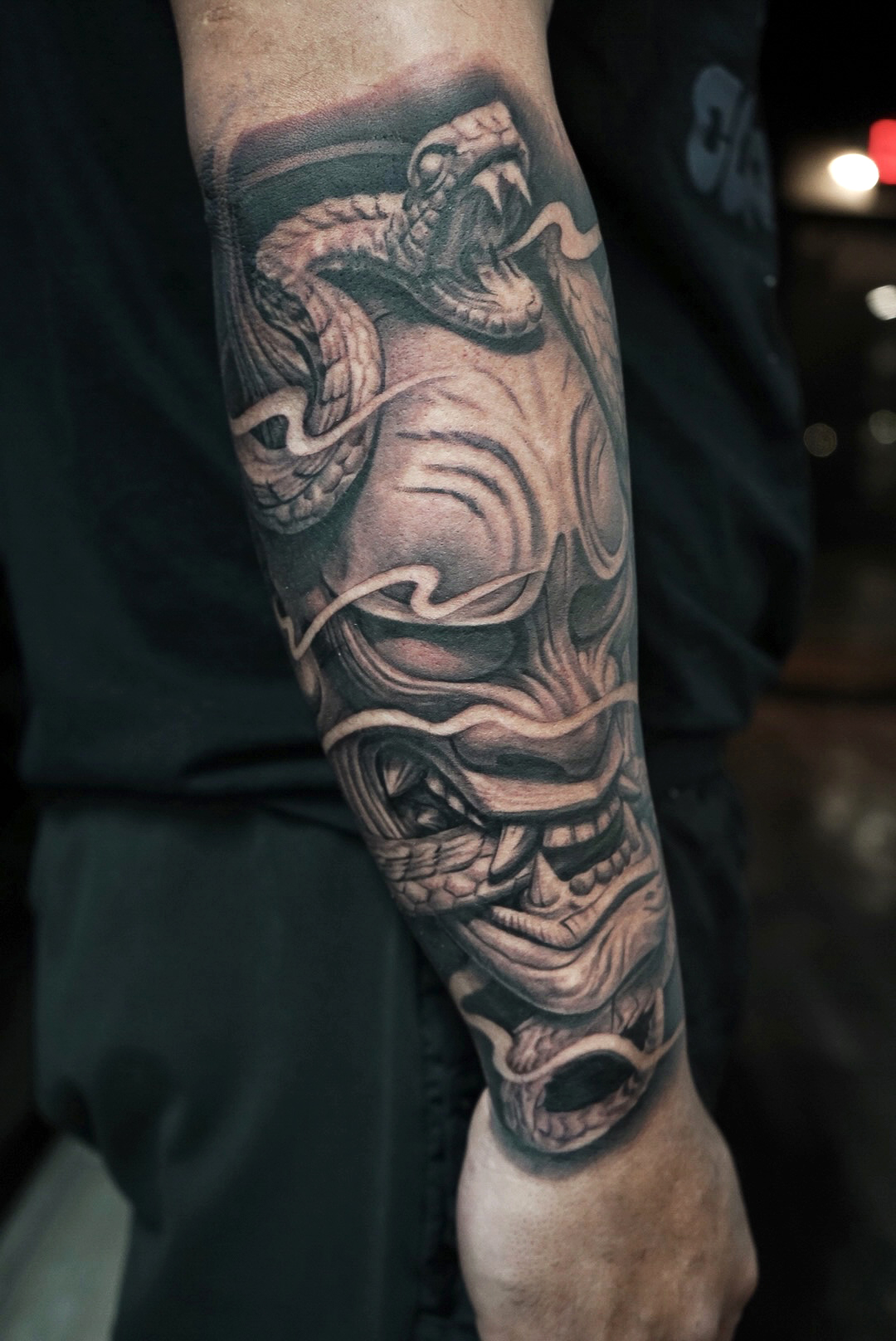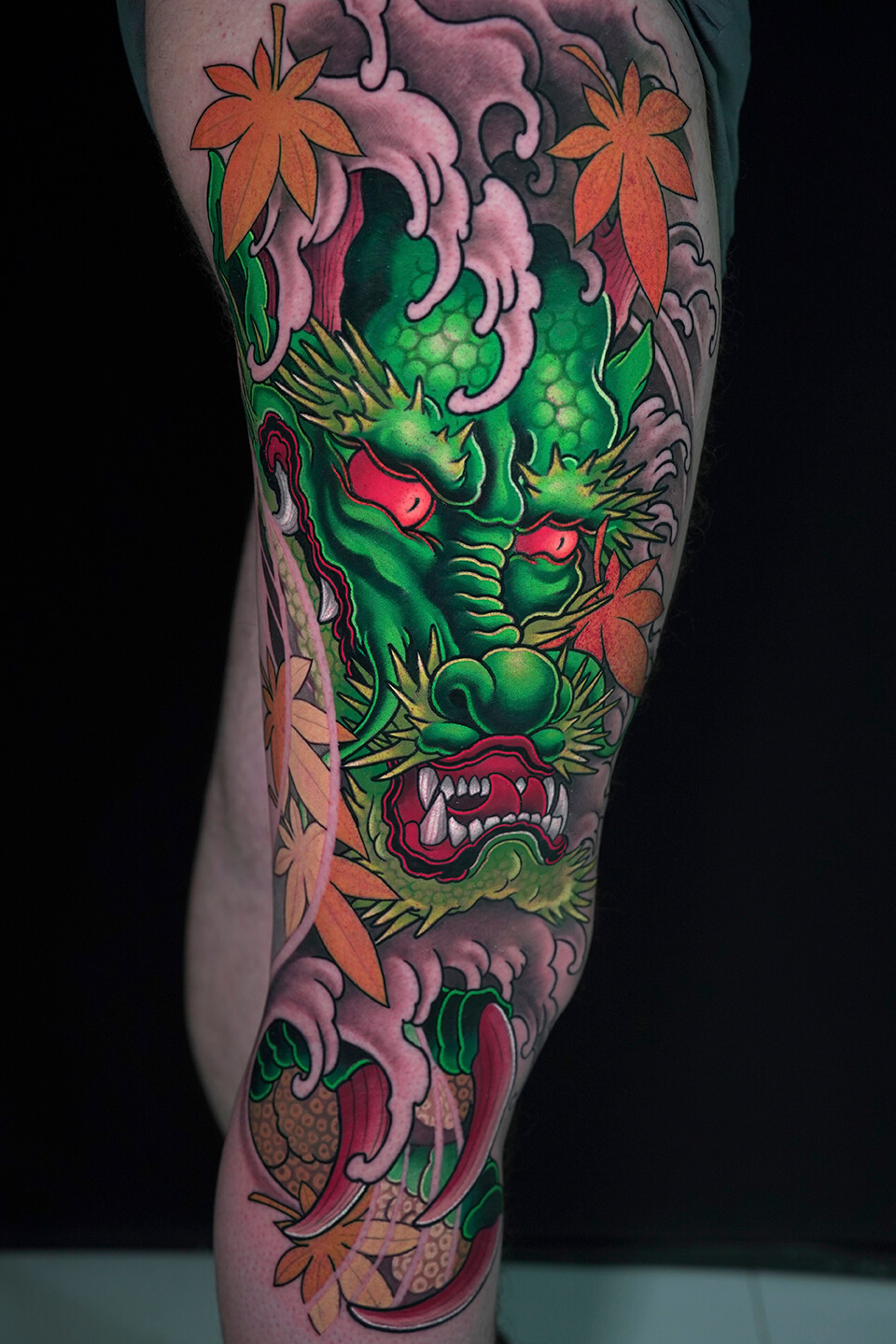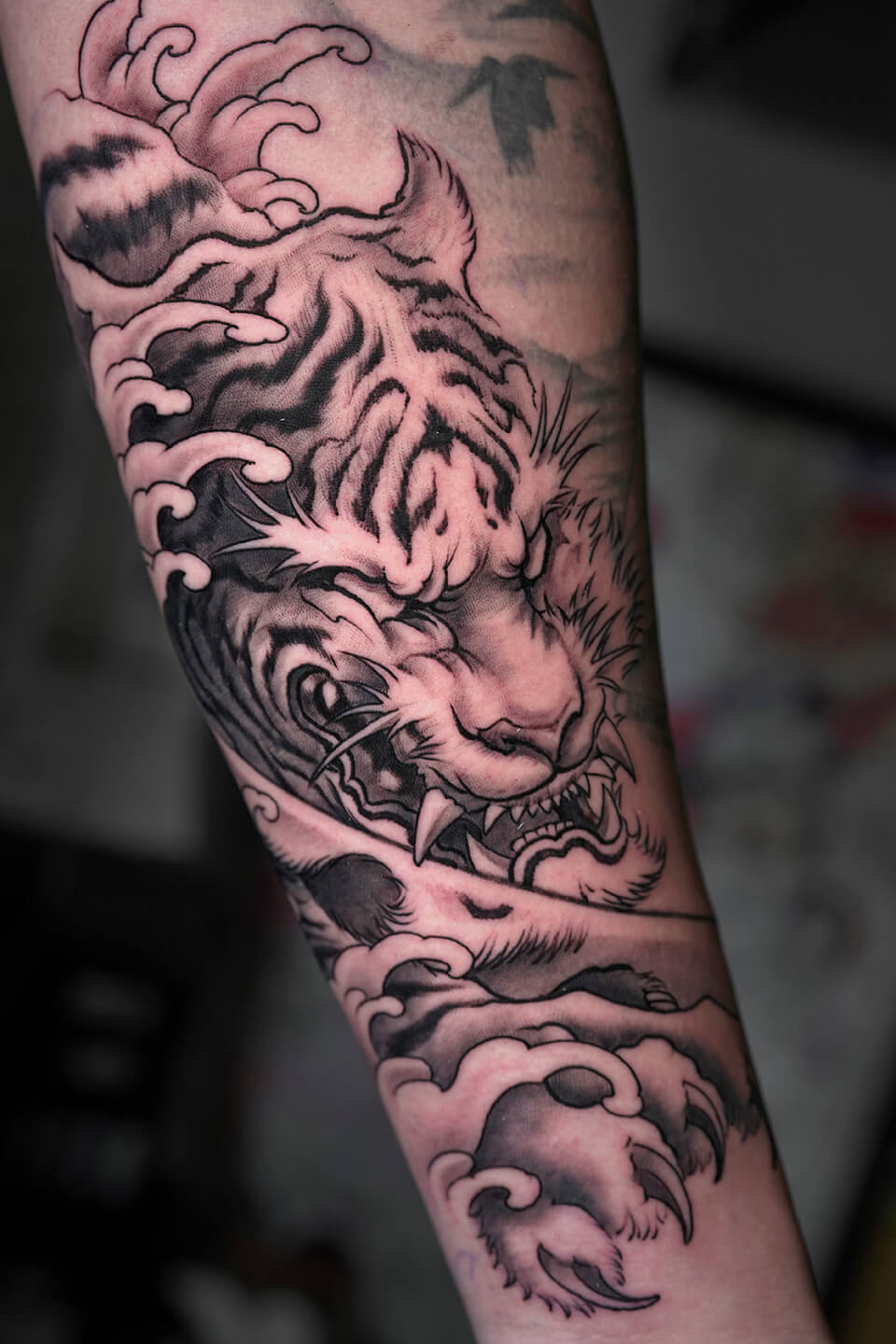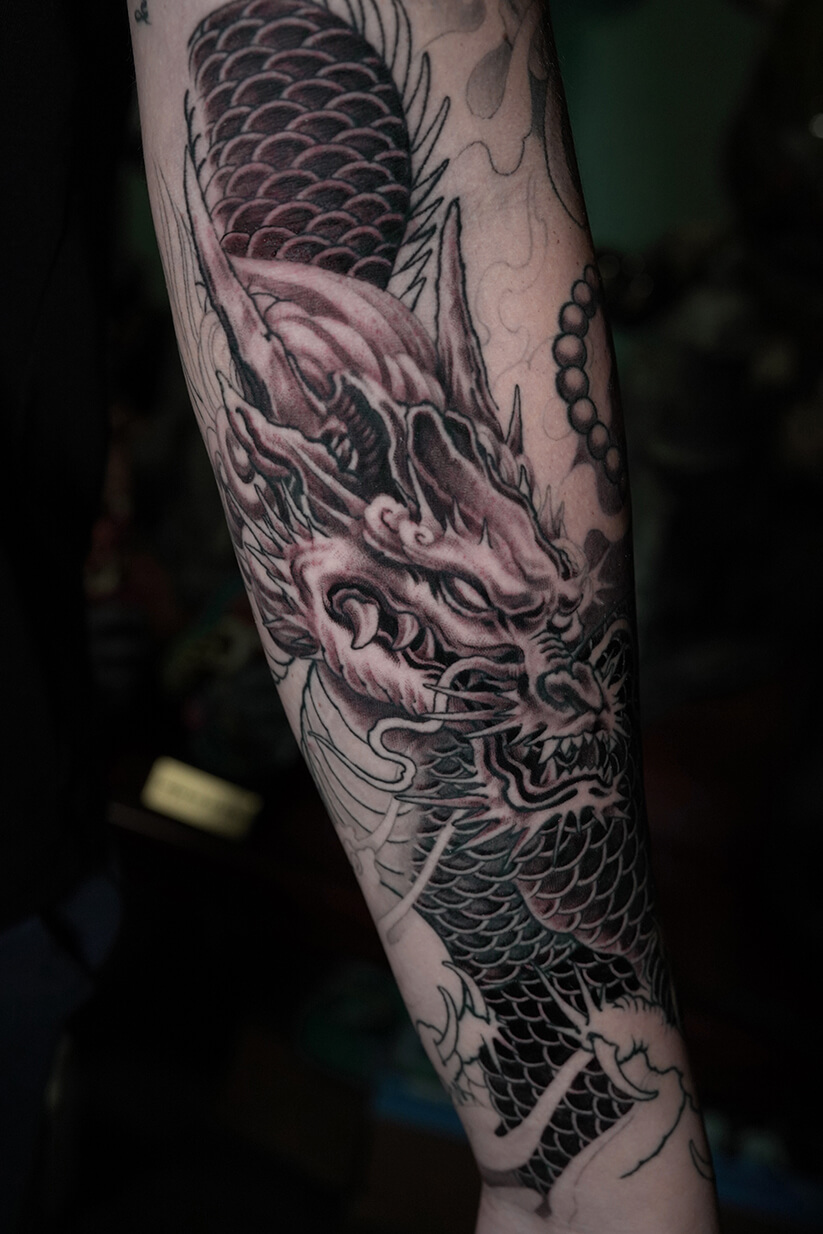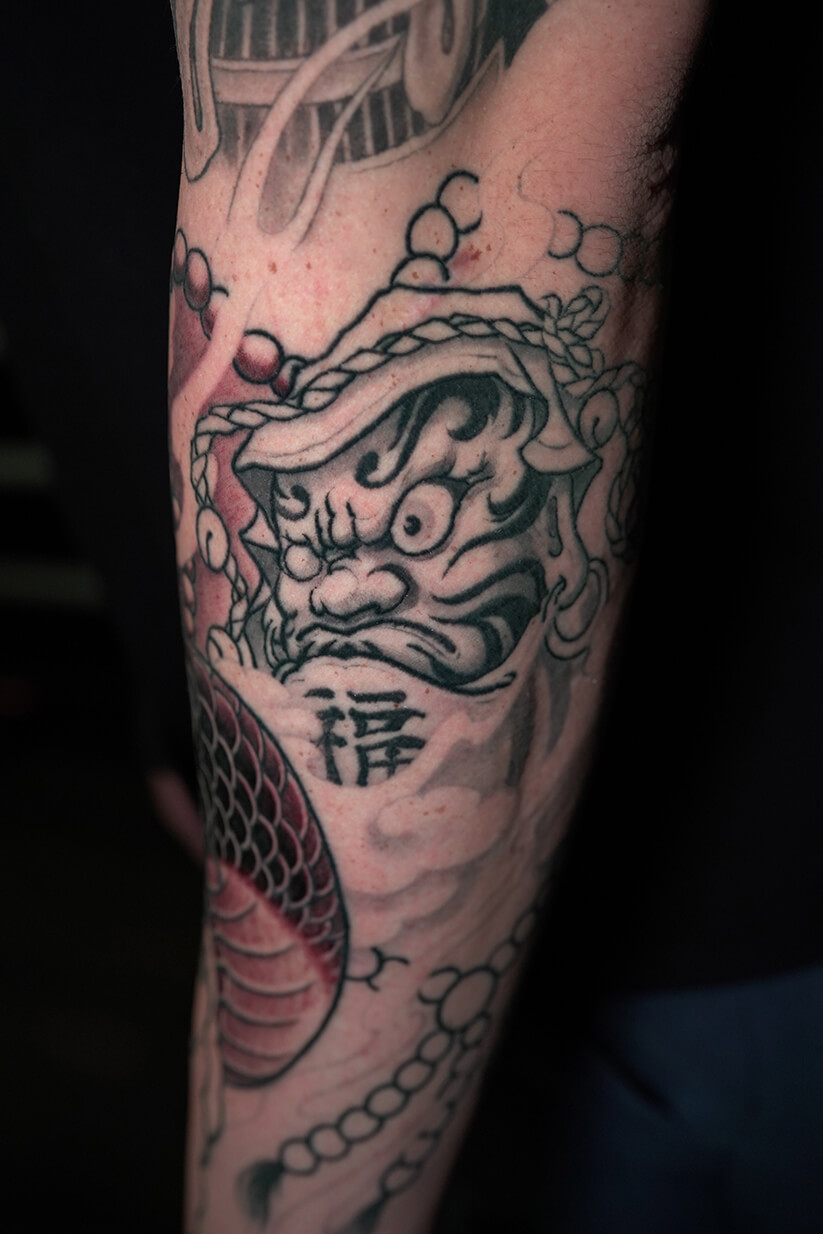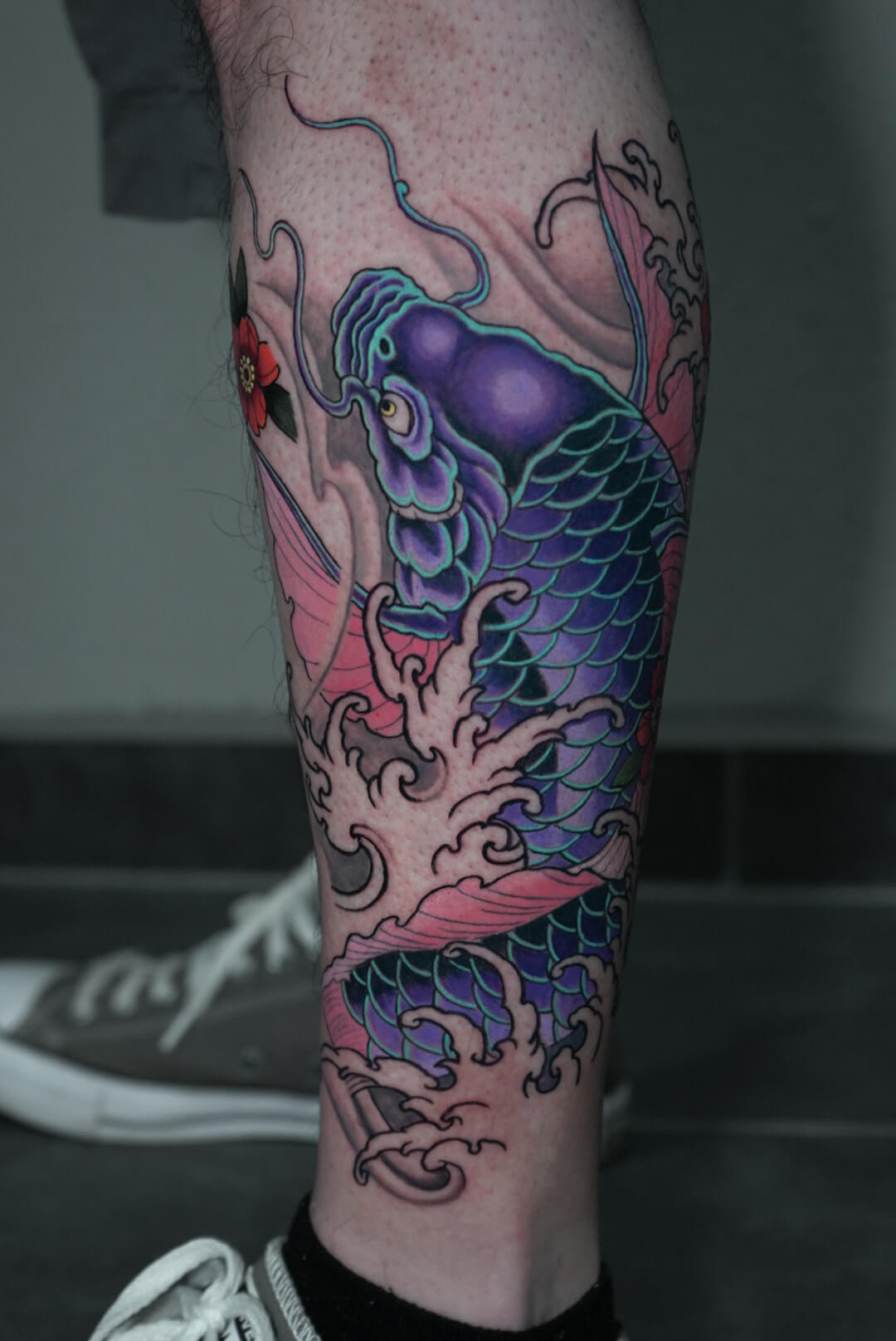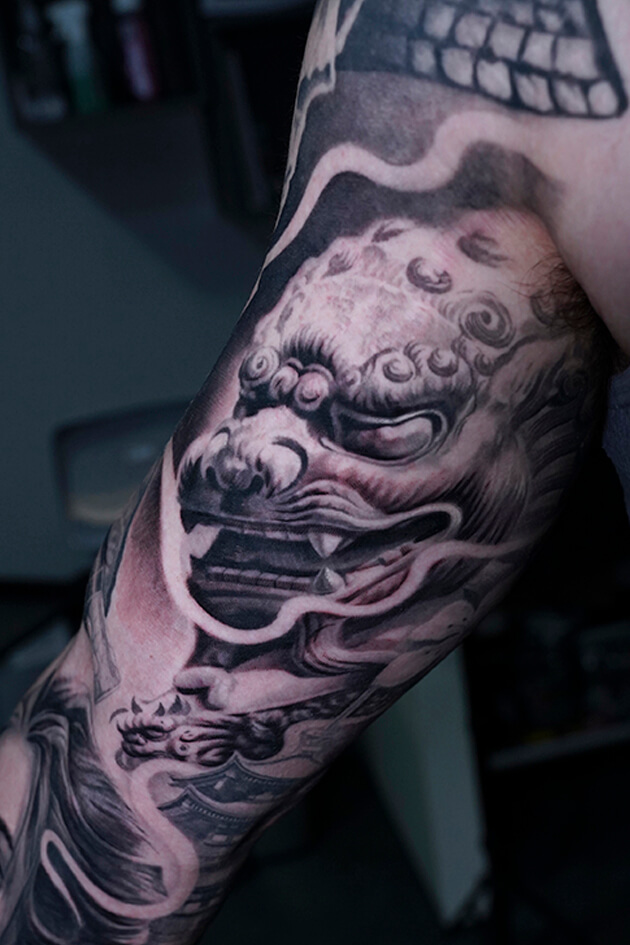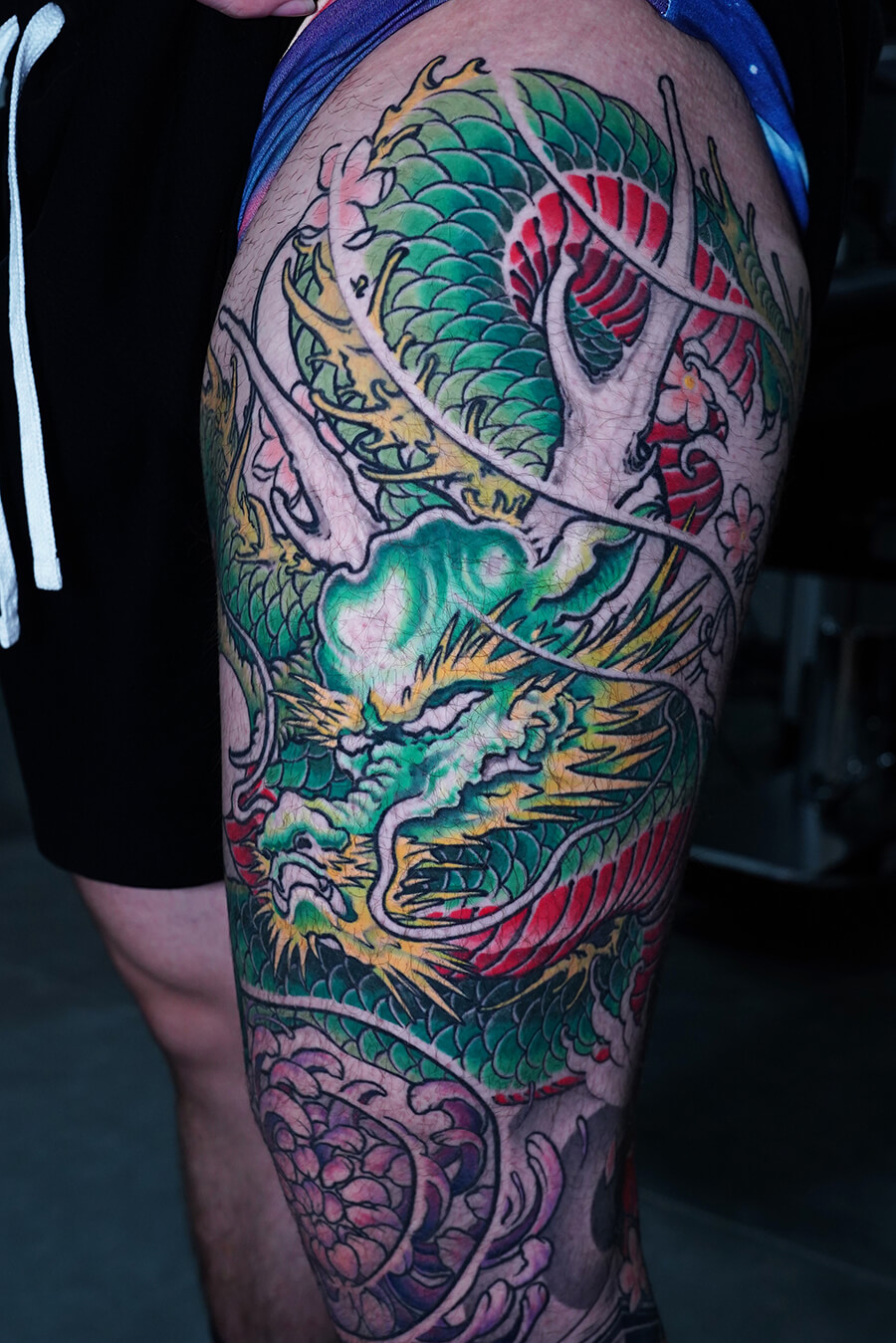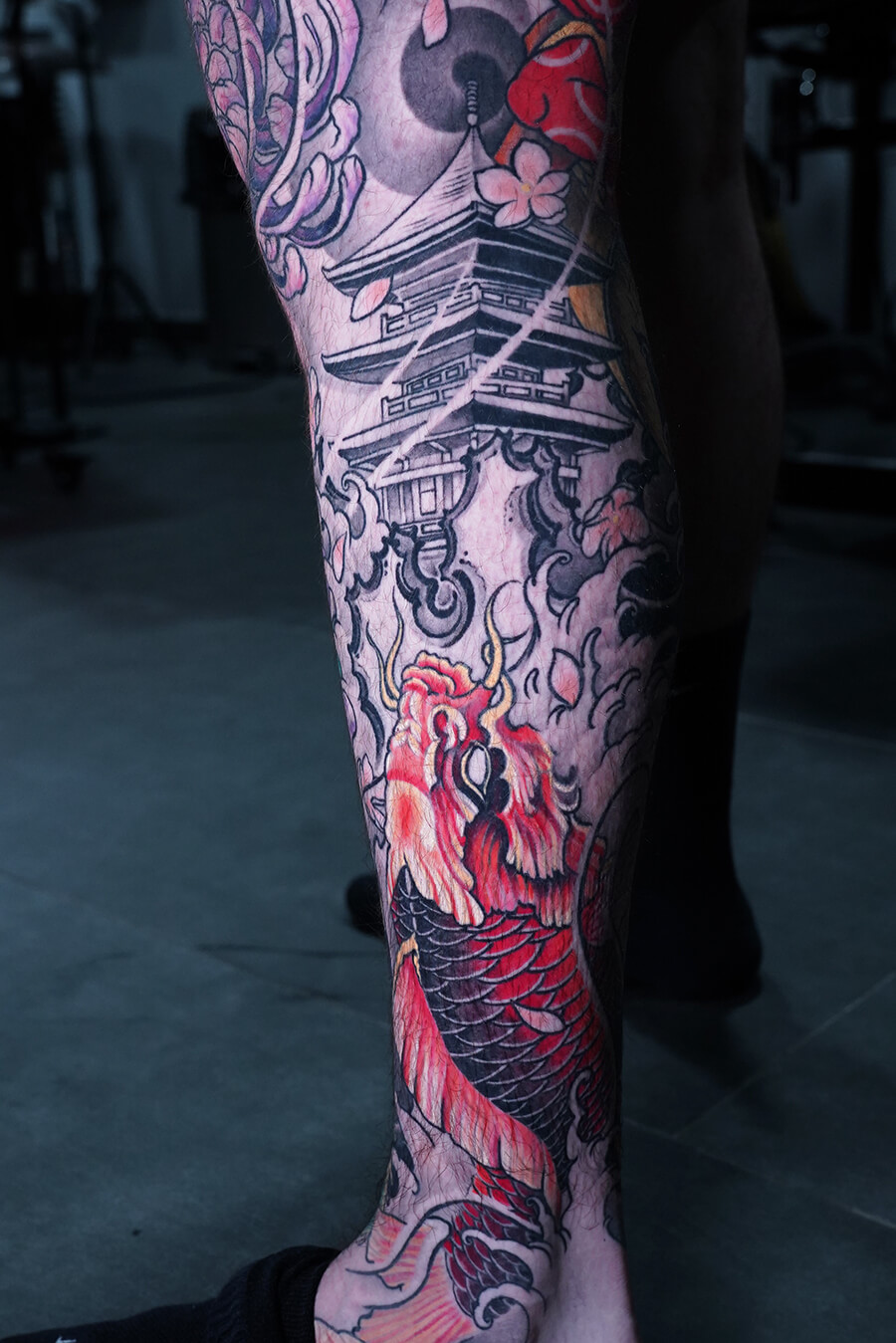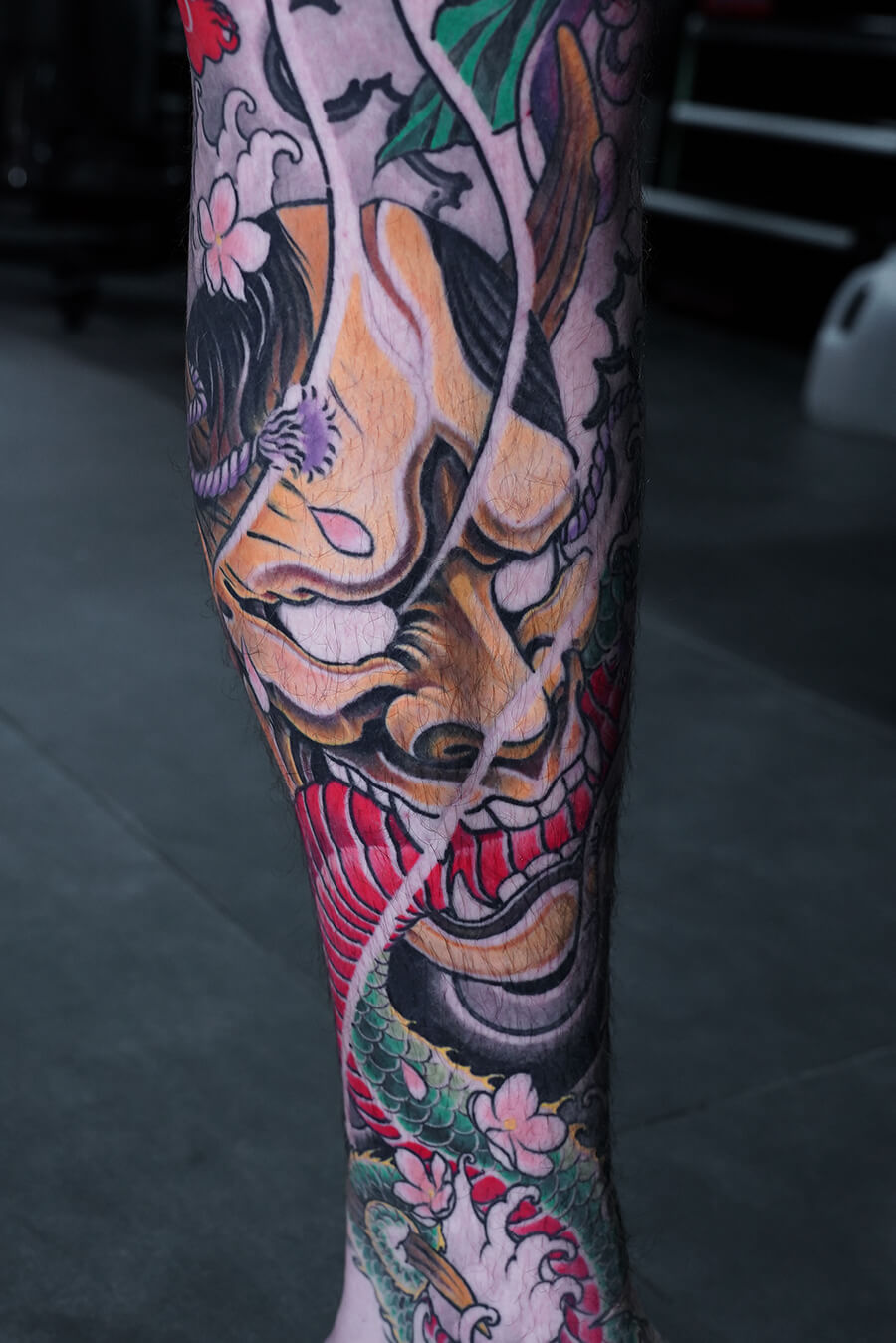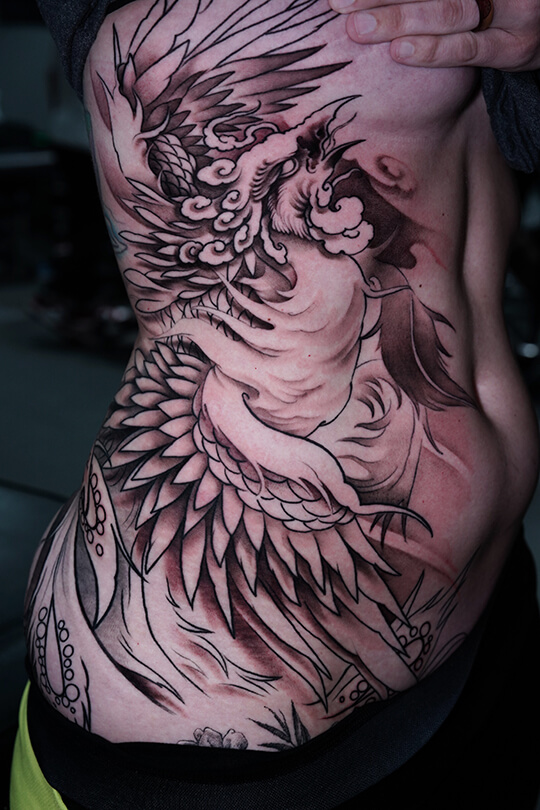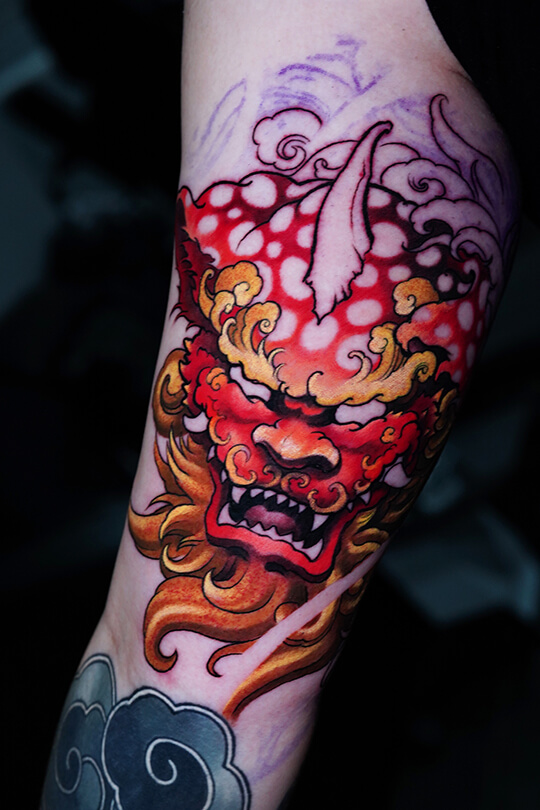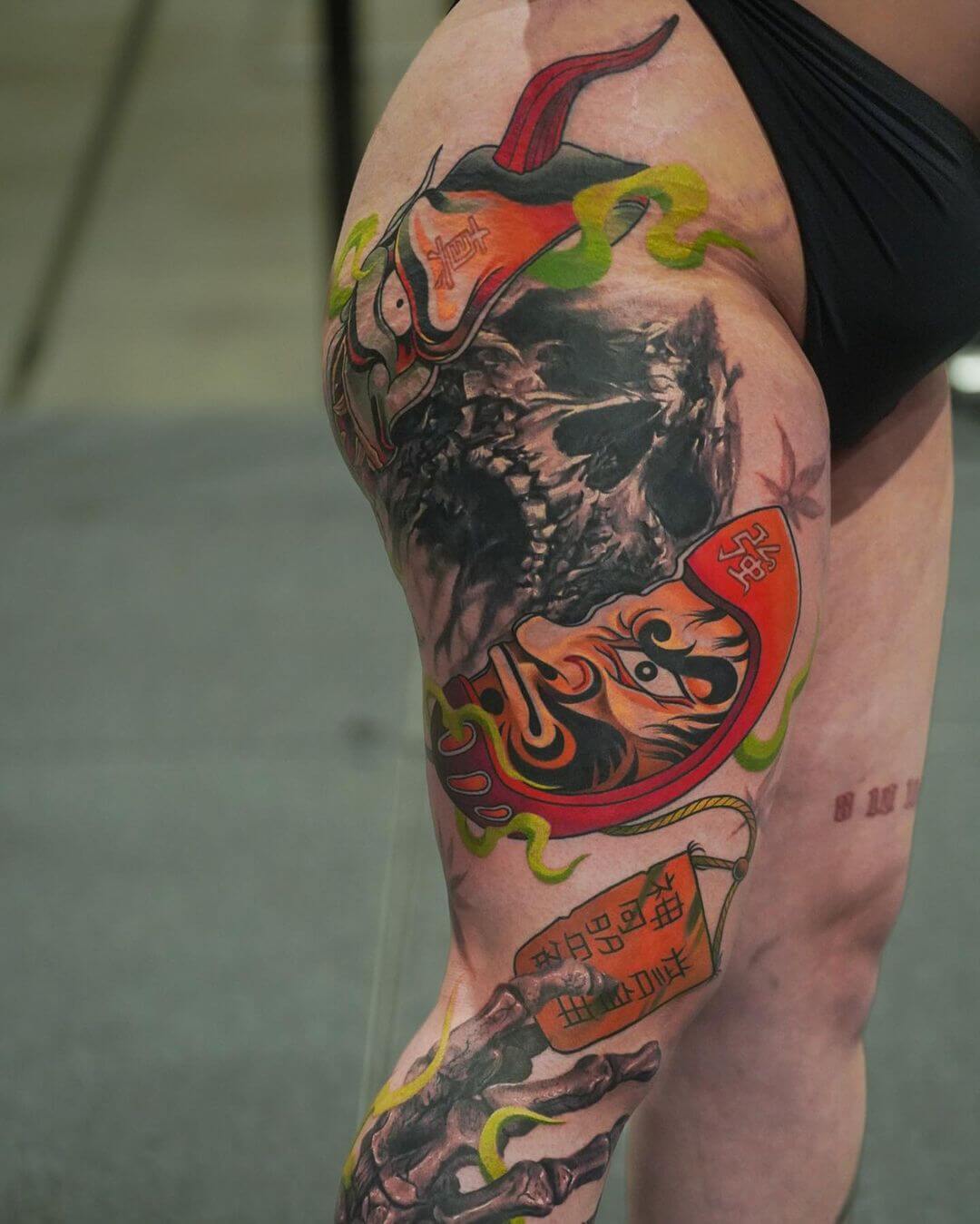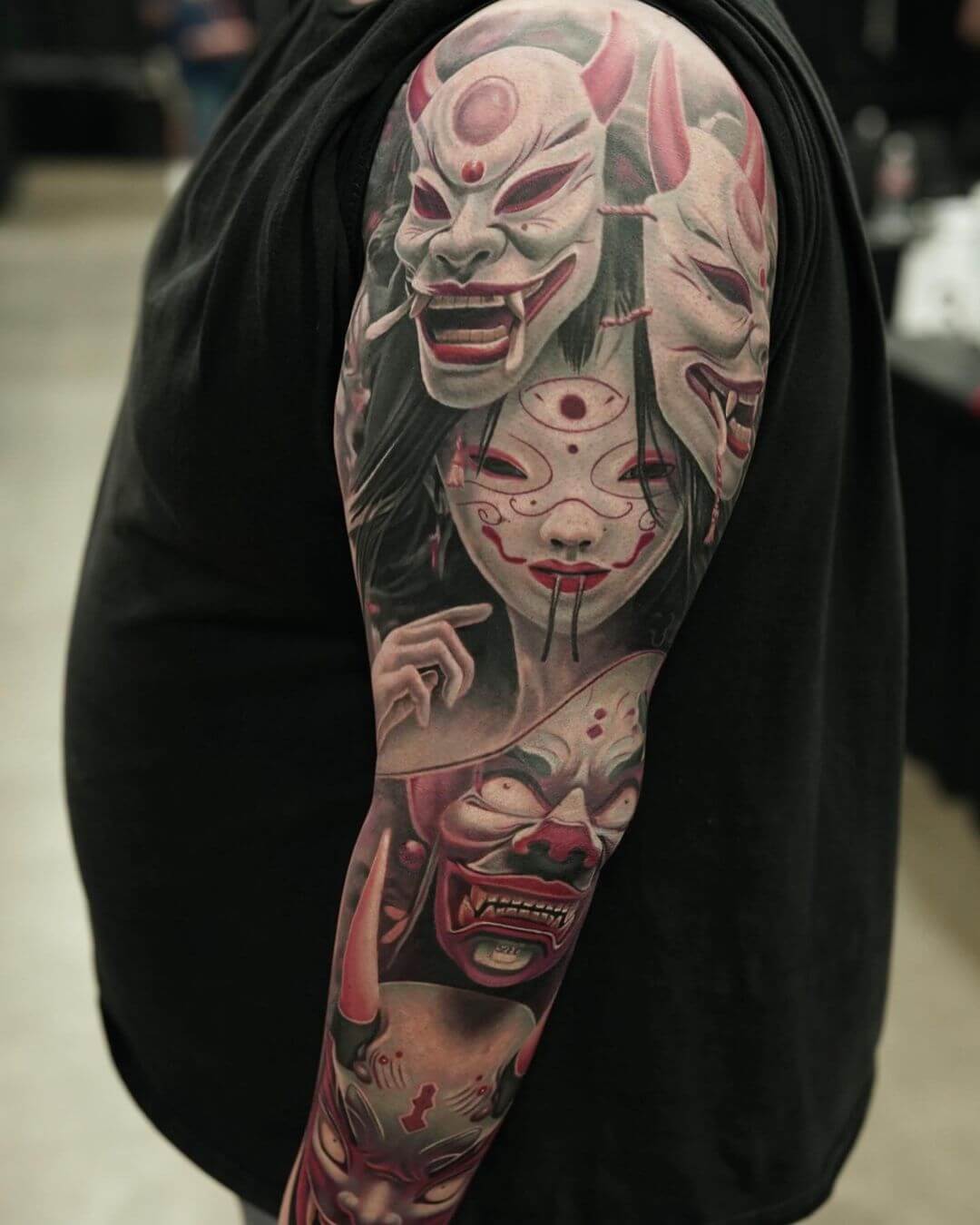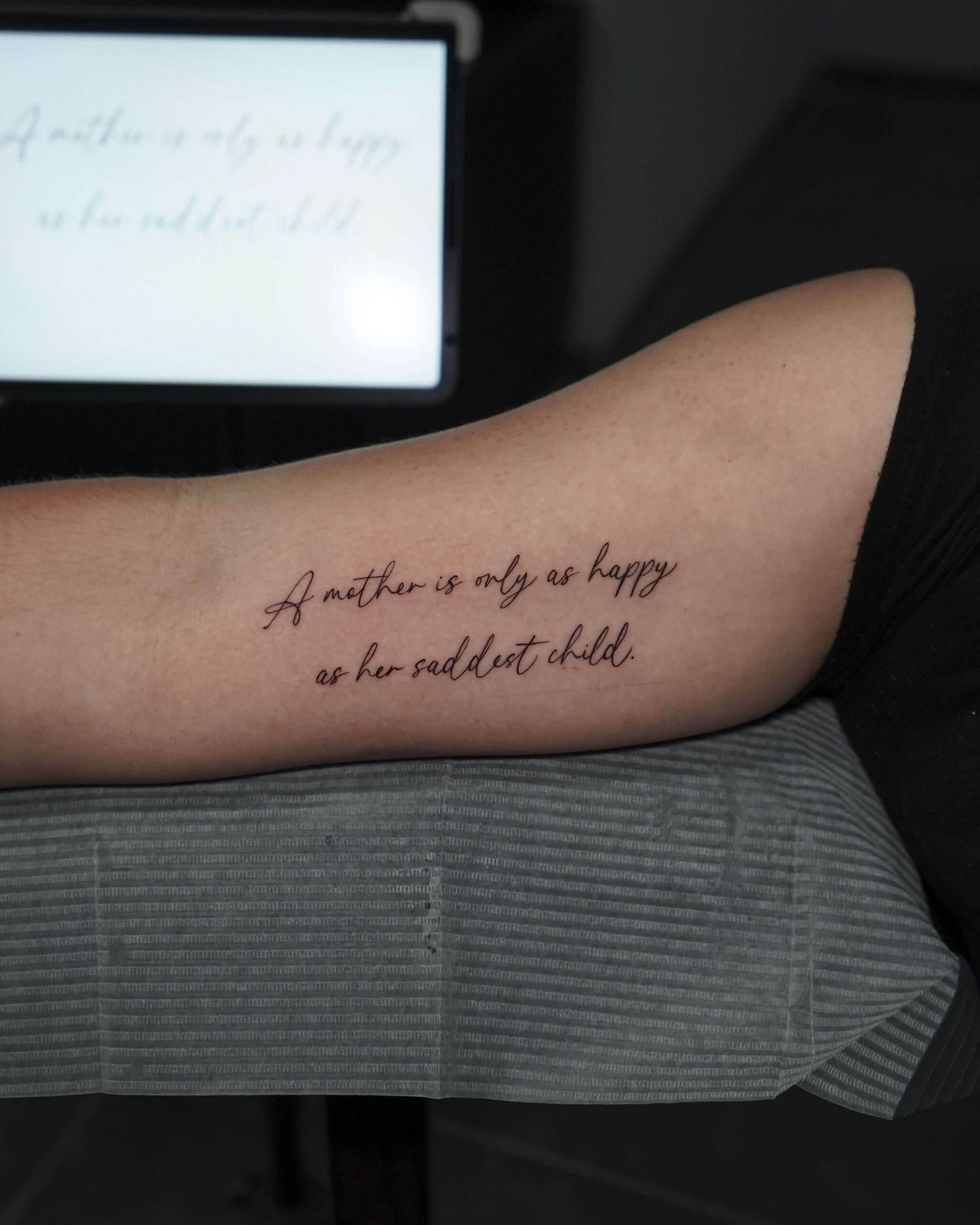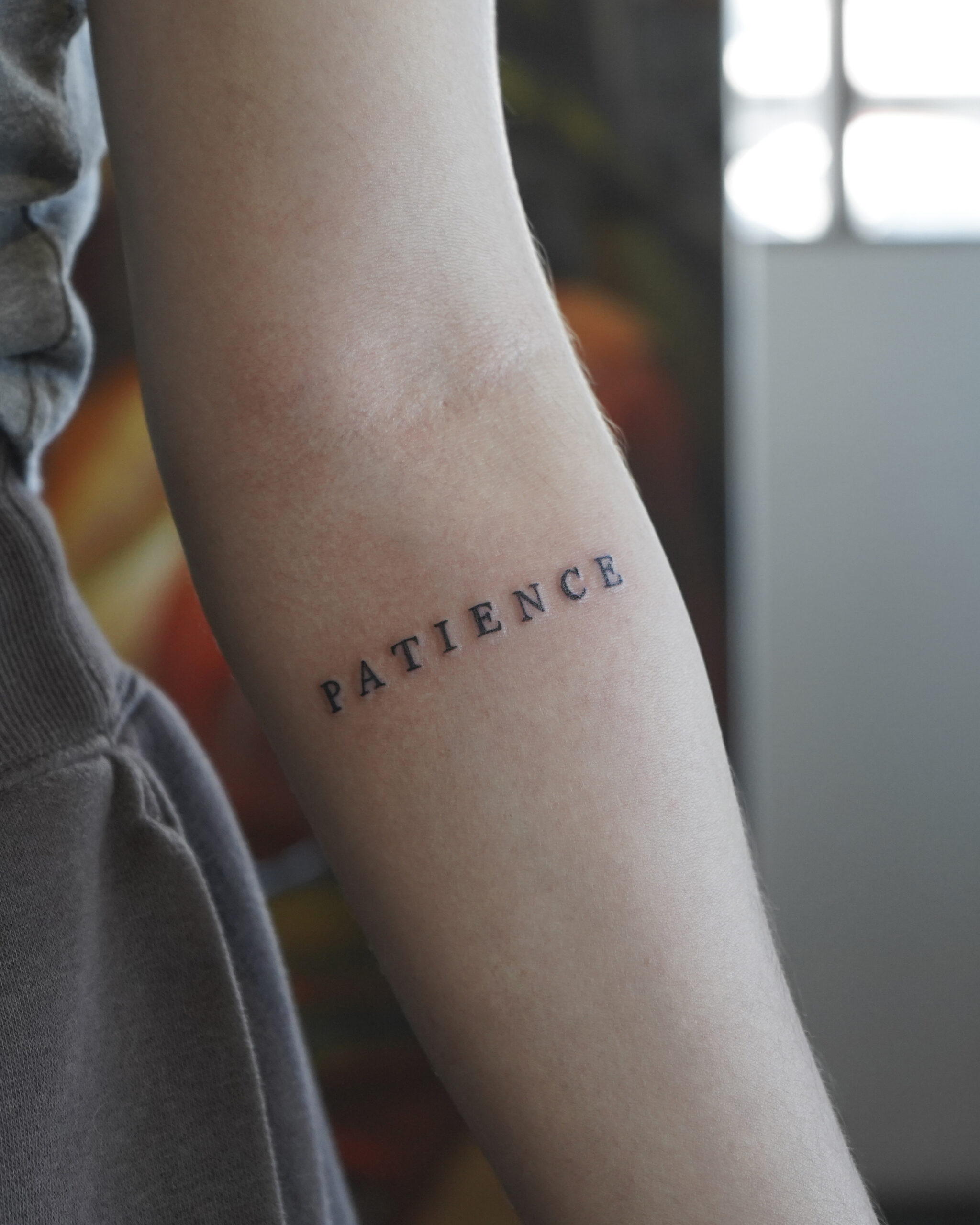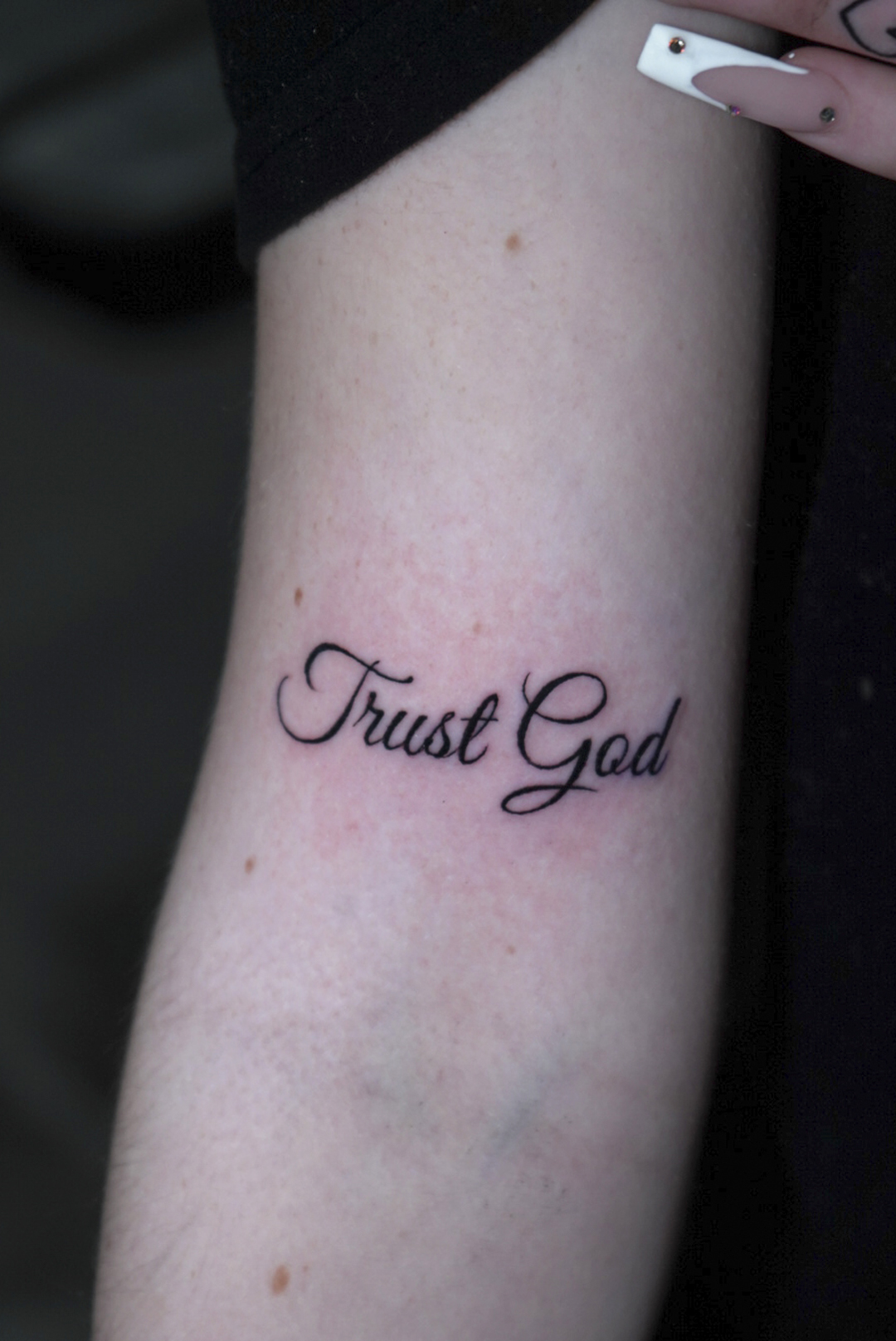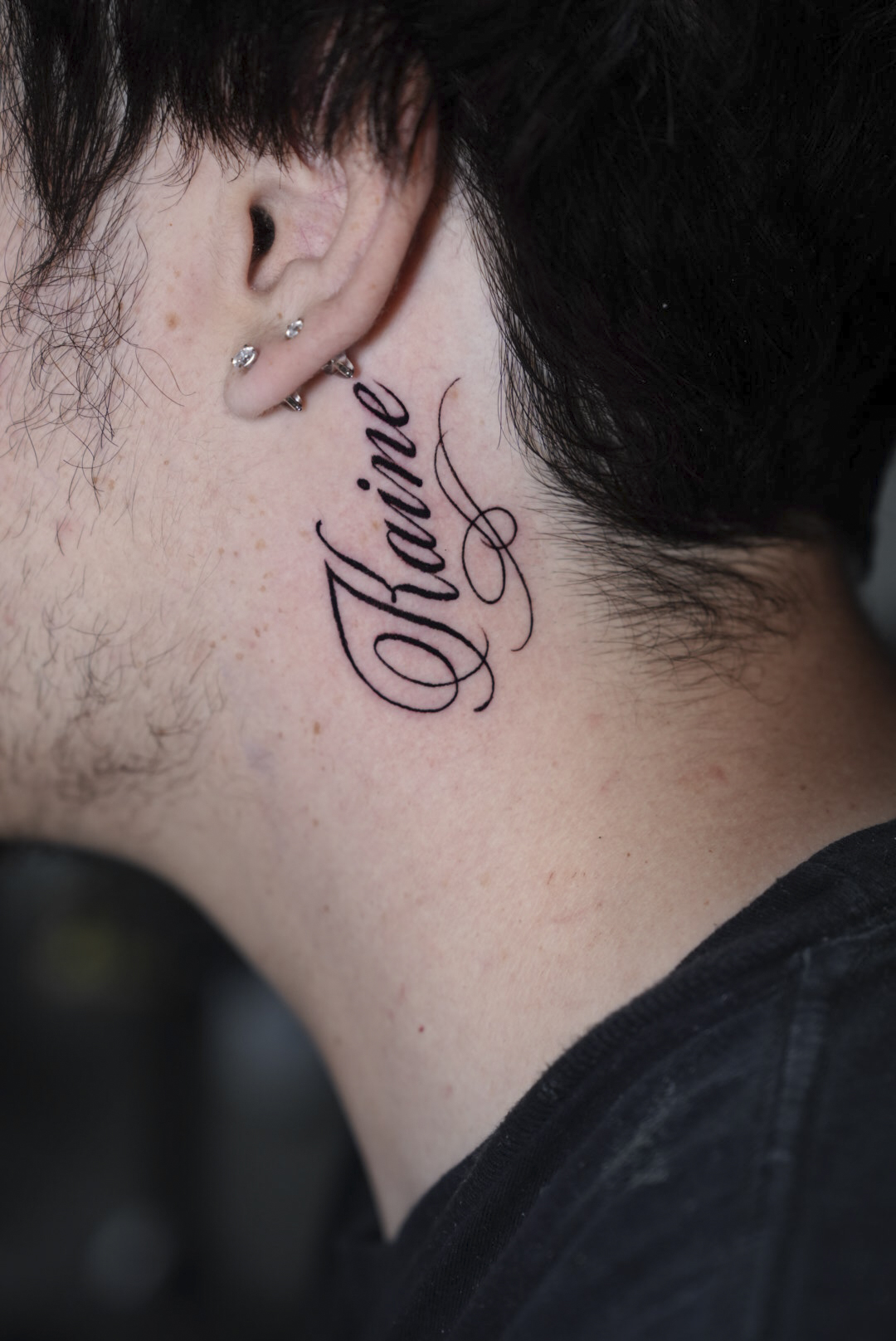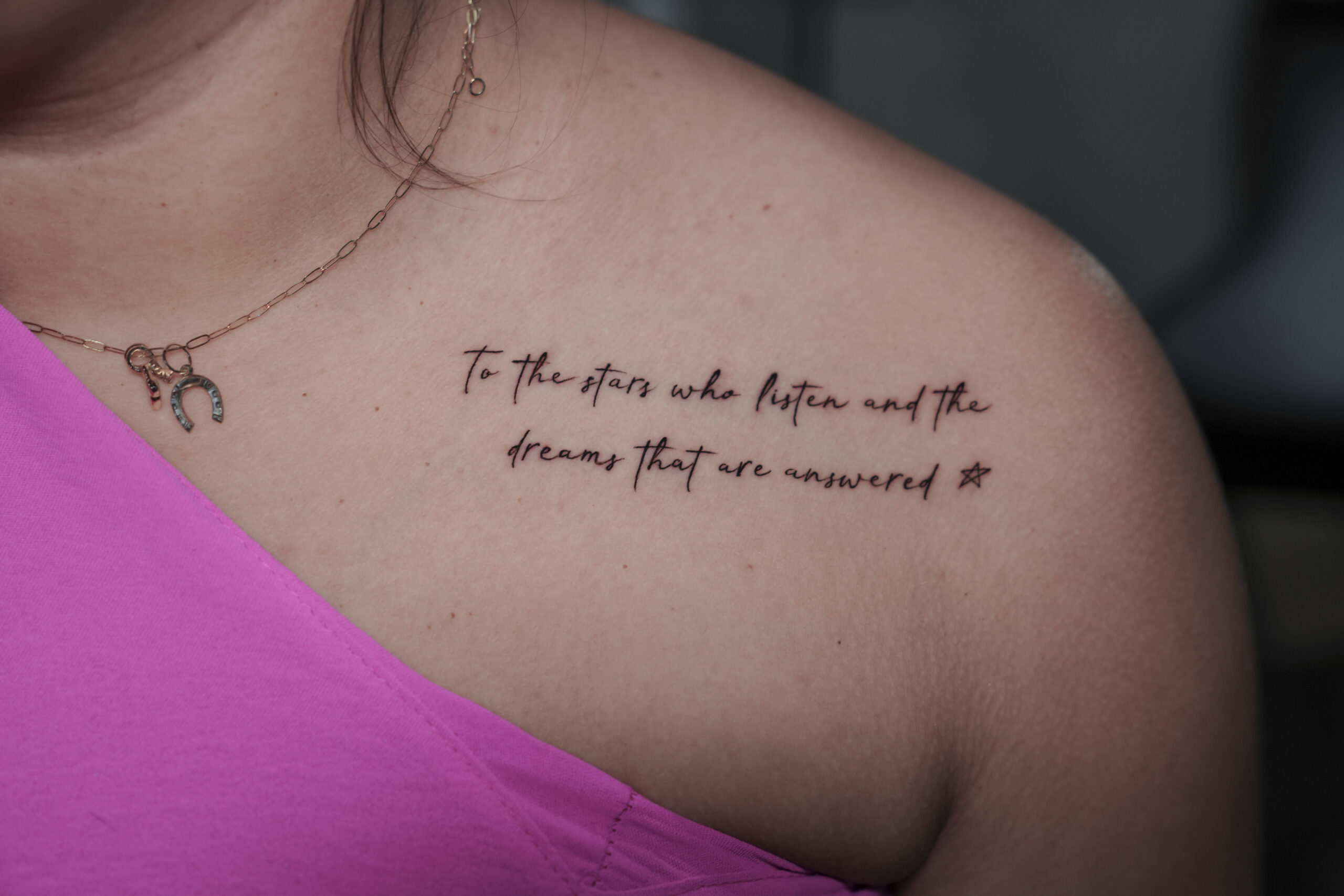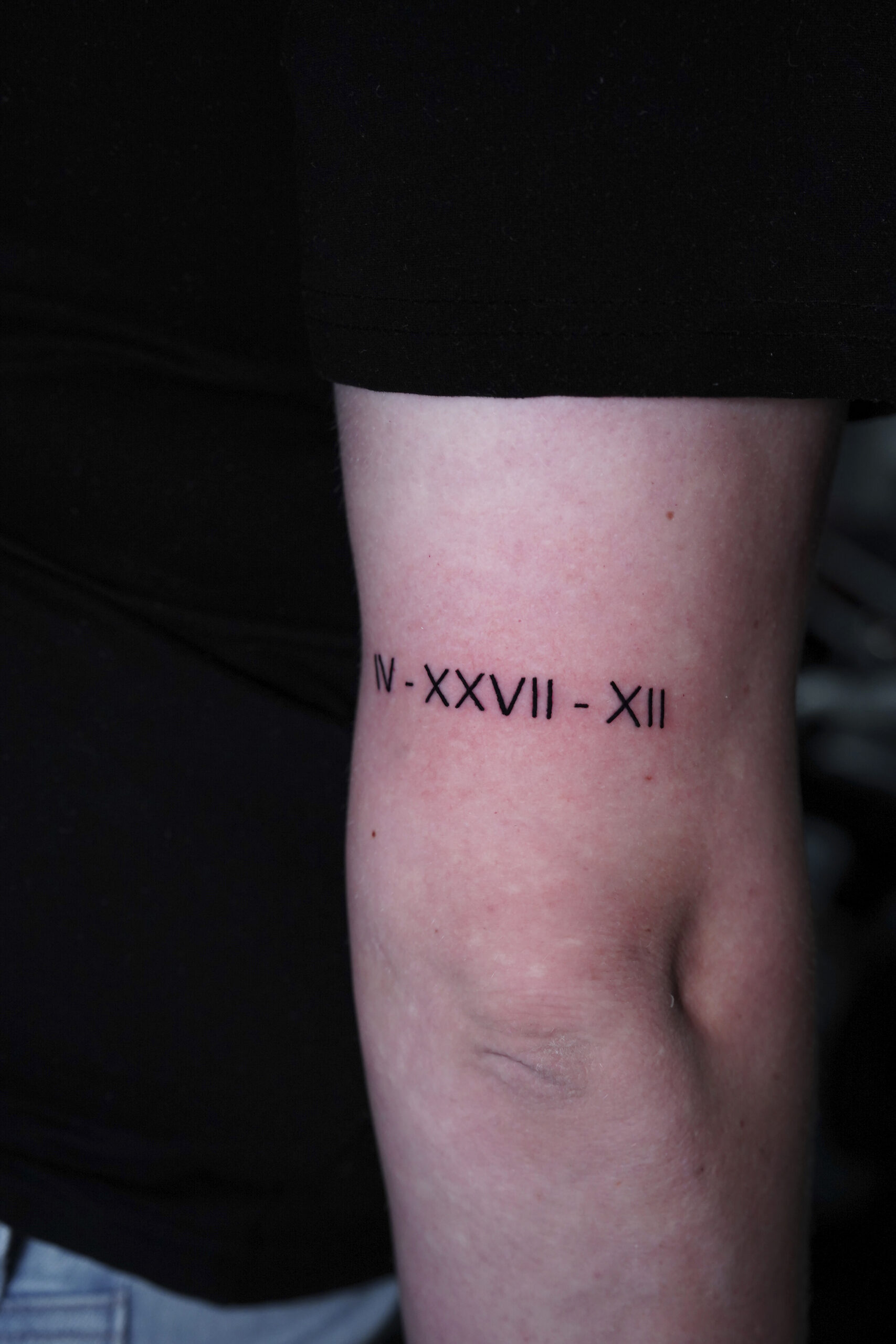A sleeve tattoo is defined as a large-scale tattoo, or a collection of smaller, unified designs, that covers most or all of the arm from the shoulder to the wrist. This style is suitable for individuals who wish to make a significant artistic statement and are fully prepared for the commitment of time, cost, and endurance required.
This guide is built to provide you with clear, practical value, helping you navigate every decision with confidence. We will break down the different types of sleeve placements, from full to quarter sleeves, and explain the key artistic principles for designing a piece with excellent “flow.” Additionally, we will cover the most important factors to consider before starting and offer expert tips for a perfect outcome. Continue reading to get the complete roadmap for your future masterpiece.
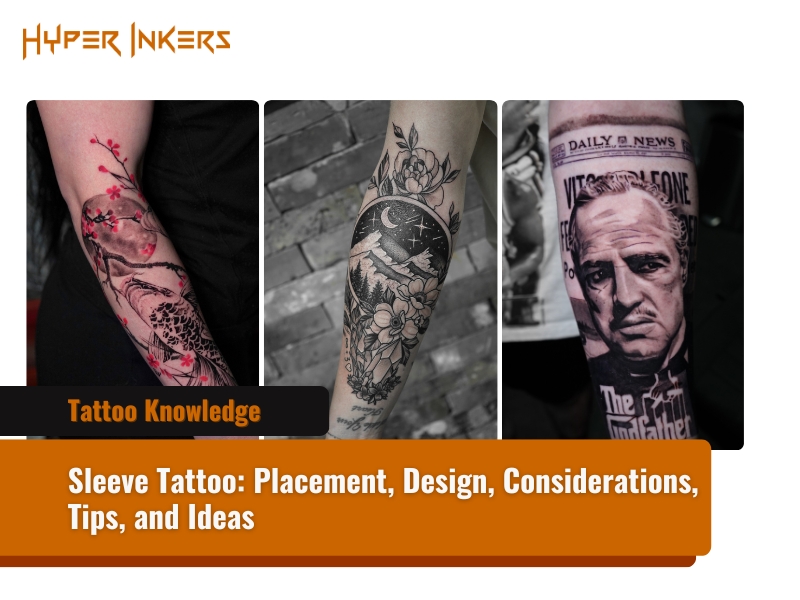
What Are the Different Types of Sleeve Tattoo Placements?
Full Sleeve
A full sleeve is the ultimate expression in arm tattoos, extending from the top of the shoulder completely down to the wrist. This option offers the largest possible canvas, making it ideal for intricate, story-driven designs that require significant space to develop. Committing to a full sleeve means preparing for a substantial investment of time, often 40+ hours, spread over many months. This placement is best suited for a single, unified theme—like a mythological battle, a detailed biomechanical composition, or a sprawling nature scene—to avoid a chaotic or disjointed appearance.
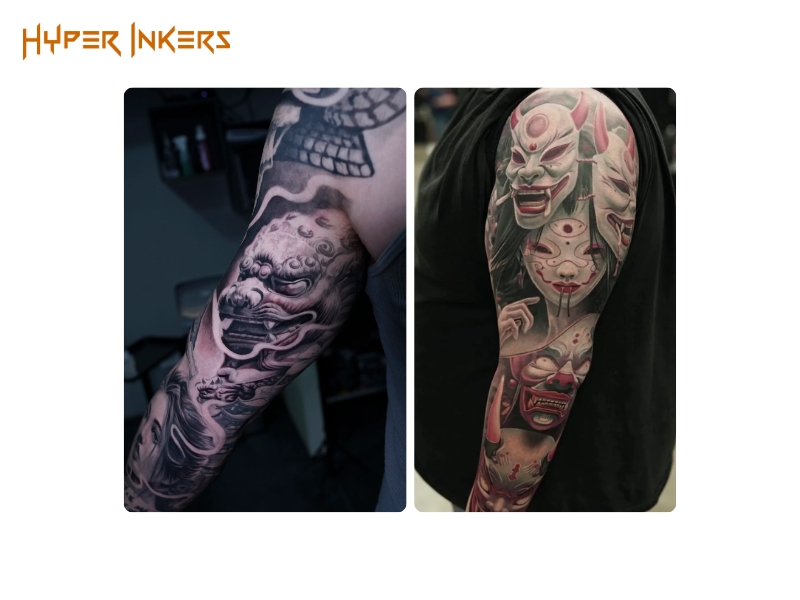
Half Sleeve
A half sleeve covers roughly half of the arm, offering two distinct and popular placements include Upper Half Sleeve and Lower Half Sleeve:
Upper Half Sleeve
The upper half sleeve runs from the shoulder to just above the elbow. Its main advantage is its discretion; it is completely concealed by a short-sleeve shirt, making it a strategic choice for individuals in professional environments. This area is also one of the less painful parts of the arm to tattoo. The rounded shape of the deltoid and bicep is perfect for designs like portraits, animal heads, or armor-style pauldrons that benefit from a muscular contour.
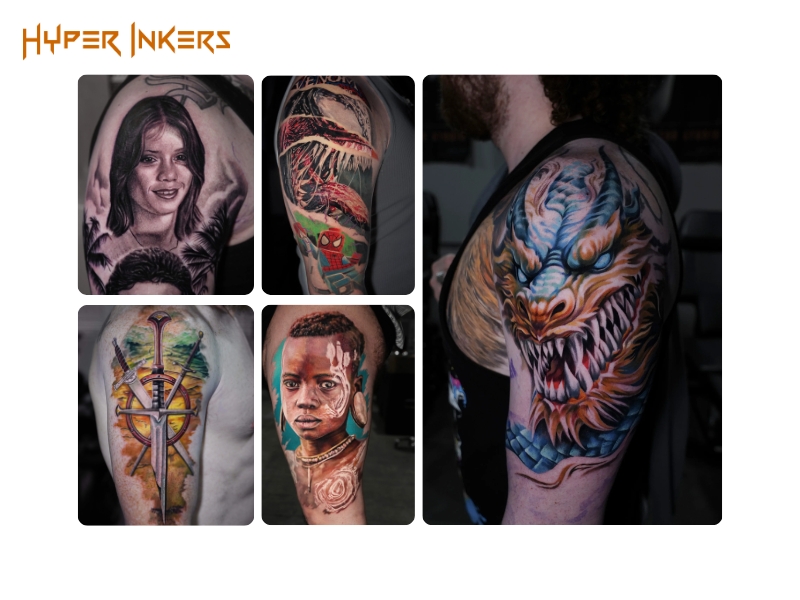
Lower Half Sleeve
The lower half sleeve, or forearm sleeve, extends from below the elbow down to the wrist. This is a high-visibility area, perfect for showcasing artwork you want seen. The relatively flat planes of the forearm make it an excellent canvas for detailed script, complex geometric patterns, or any design where precision is key. However, because it’s almost always exposed, this area is highly susceptible to sun damage. Diligent, lifelong use of sunscreen is mandatory to prevent your investment from fading.
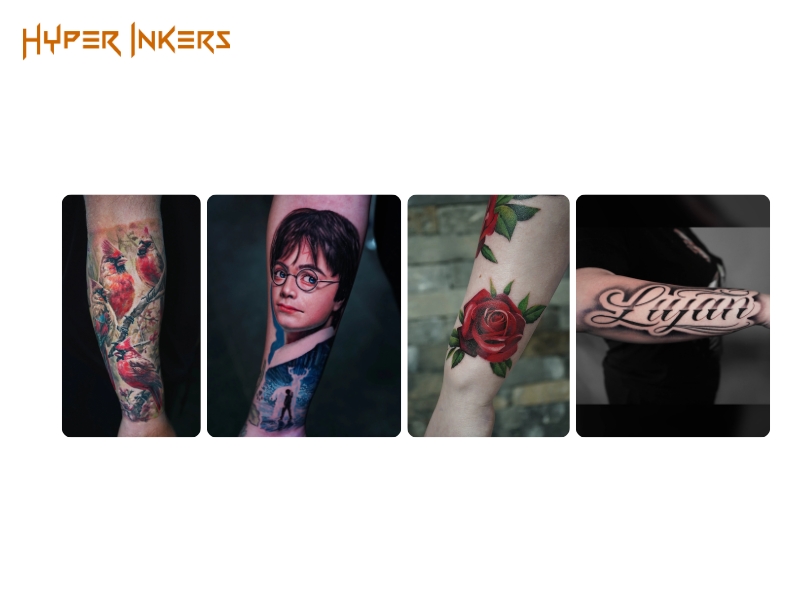
Quarter Sleeve
A quarter sleeve tattoo covers the top portion of the arm, typically from the shoulder to about halfway down the bicep. This is the ideal entry point for a larger project or for someone wanting an impactful but contained piece of art. It allows you to test your pain tolerance, get a feel for the healing process, and build a relationship with an artist before committing to a full half or full sleeve. It’s an excellent spot for a single, bold focal point, such as a large floral piece or a heraldic crest.
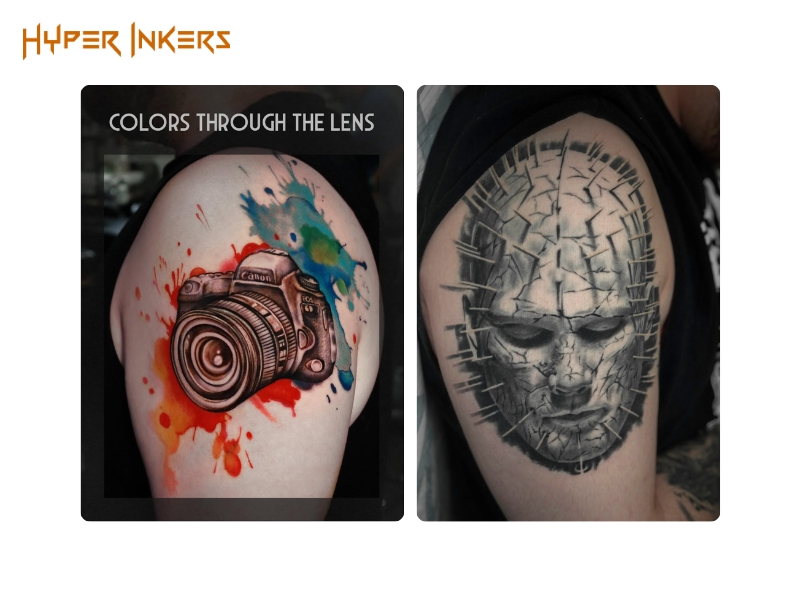
Hikae (Japanese Style)
The Hikae is a specific and traditional Japanese tattoo placement that covers the pectoral muscle of the chest and extends onto the arm, forming a quarter or half sleeve. Its defining feature is the un-tattooed space left open at the very center of the chest and sternum. This was historically designed so a kimono could be worn open without revealing the artwork. A Hikae is the foundation for traditional Japanese body suits (Irezumi) and is perfect for classic motifs like dragons, koi fish, and samurai.
How Do You Design a Sleeve Tattoo with Good “Flow”?
“Flow” is the artistic principle that makes a sleeve look like a unified piece that was designed for your specific arm. It’s about using design elements to guide the eye smoothly around the arm’s natural curves and contours. A sleeve with good flow feels intentional and powerful, and achieving it is a masterclass in proper tattoo placement
How Can You Create a Seamless Flow That Wraps Around the Arm?
Creating a seamless flow is essential to avoid a design that looks flat or disjointed. The most effective method is to plan the entire sleeve as a single composition from the very beginning. Your artist will use background elements to connect the primary subjects. The type of background chosen has a major impact: organic elements like smoke, wind bars, and water create fluid motion ideal for Japanese or realism styles, while geometric patterns or filigree can provide a solid structure to connect more graphic images.
Where Is the Best Place for the Main Image (Focal Point) of Your Sleeve?
The focal point is the most important element of your sleeve; it’s what draws the eye and communicates the core theme. This piece deserves the “prime real estate” on your arm. The best placement is almost always on the larger, flatter surfaces that are most visible when your arm is at rest—specifically, the outer bicep and the top of the forearm. Placing the main image here maximizes its impact and minimizes the distortion that can occur over joints or highly curved areas.
How Can You Connect Smaller, Individual Tattoos Into a Cohesive Sleeve?
Transforming a collection of existing tattoos into a cohesive sleeve requires more than just filling the gaps. The goal is to create unity. A skilled artist can achieve this by incorporating a consistent background texture, like dotwork or negative space patterns, to tie the pieces together. Another powerful technique is to establish a unified color palette, sometimes by adding strategic color accents to older black and grey tattoos to harmonize them with new, full-color pieces.
Should You Tattoo Directly on Your Elbow?
For a true full sleeve, tattooing the elbow is almost unavoidable, as leaving it blank creates a visual “hole” that disrupts the design’s flow. Be prepared: the elbow is a notoriously painful spot with unique challenges. The skin is creased and highly mobile, meaning ink can “fall out” during the healing process and may require a touch-up. The best designs for this area are those with radial symmetry that work with the joint’s circular shape, such as mandalas, flowers, or spiderwebs.
What to Consider Before Getting a Sleeve Tattoo?
Before getting a sleeve, you must consider the significant commitments of time and money, as well as the pain and aftercare involved, here are the details:
- Significant Time Commitment: A quality sleeve is not a fast process, and the answer to how long does getting a tattoo take can be anywhere from 20 to 50+ hours in the tattoo chair, with sessions scheduled weeks apart to allow for proper healing. The entire project can easily take several months to a year.
- Budget Realistically: A sleeve is a luxury art investment, and while tattoo prices in san antonio can vary, the cost will run into the thousands of dollars, reflecting the hours of labor and artistic skill required. Price shopping for a project of this magnitude is the surest path to disappointment.
- Pain Is Part of the Process: You will experience varying levels of pain. While the outer bicep is generally manageable, the inner bicep, elbow ditch, and wrist are highly sensitive. Referring to a tattoo pain chart can give you a better idea of what to expect for each area. Your endurance for sitting through long sessions is a real factor.
- Diligent Aftercare is Mandatory: Every session is followed by a 2-4 week healing period. Your role in this is critical. You must strictly follow aftercare instructions to prevent infection, scabbing, and color loss that can compromise the final look
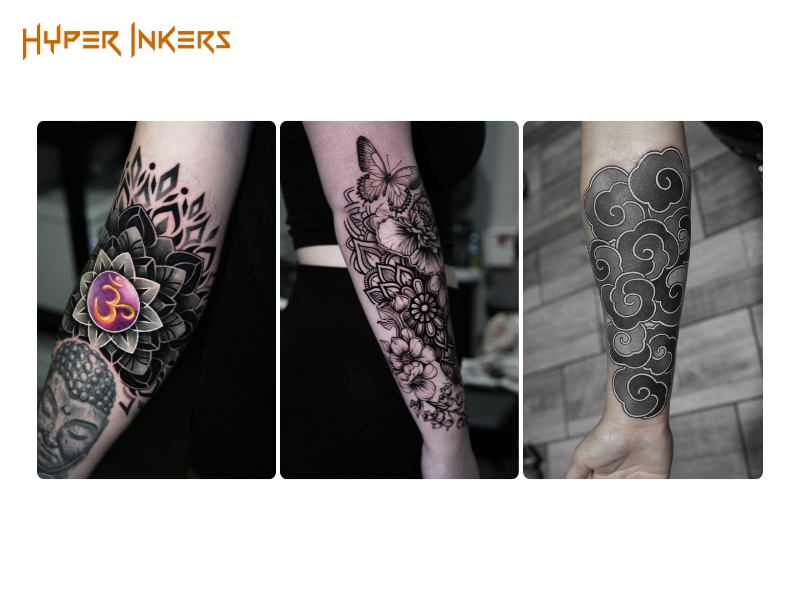
Tips for Your Perfect Sleeve Tattoo
To ensure your sleeve tattoo experience is positive and the result exceeds your expectations, follow these insider tips:
- Trust Your Artist’s Expertise: You chose your artist for their skill. Trust their guidance on composition, placement, and flow. An experienced artist knows how a design will look on a 3D, moving arm better than anyone.
- Prepare Your Body for Each Session: Treat a tattoo session like an athletic event. Get a full night’s sleep, eat a substantial meal about an hour before your appointment, and hydrate well. A prepared body handles pain and long sessions much better.
- Sunscreen Is Non-Negotiable: The sun is the number one destroyer of tattoos. UV rays break down ink pigments, causing vibrant colors to fade and black lines to blur. Make applying a high-SPF sunscreen to your sleeve a daily habit for life.
- Communicate Clearly and Honestly: During the design process, asking your tattoo artist about a sleeve with clear ideas is essential. During the tattoo session, be honest if you need a break. A good artist wants you to be comfortable and happy with the experience.
Learn more:
Sleeve Tattoo Ideas
The possibilities for a sleeve are nearly limitless, but popular and effective themes include sprawling nature scenes, Japanese mythology, biomechanical illusions, photorealistic portraits, and intricate geometric or mandala patterns that wrap the arm in a seamless design.
Below are some works by the artist at Hyper Inkers Studio:
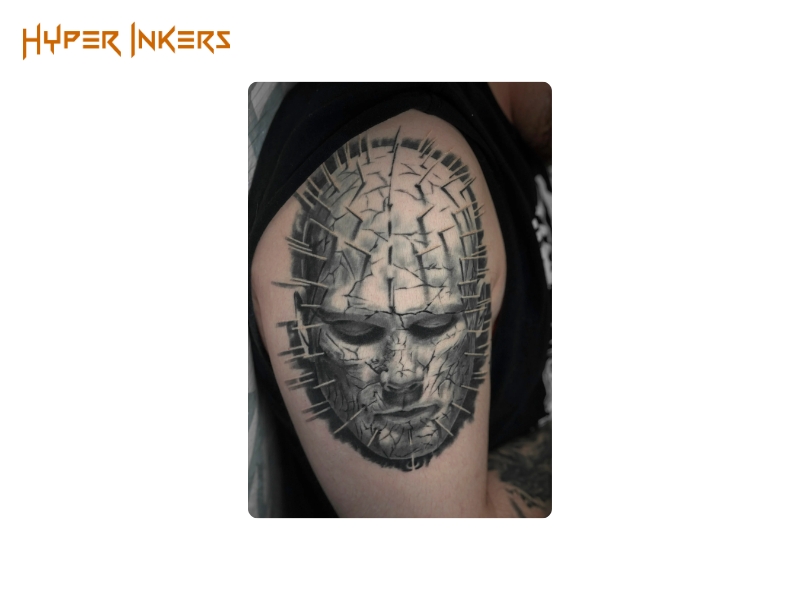
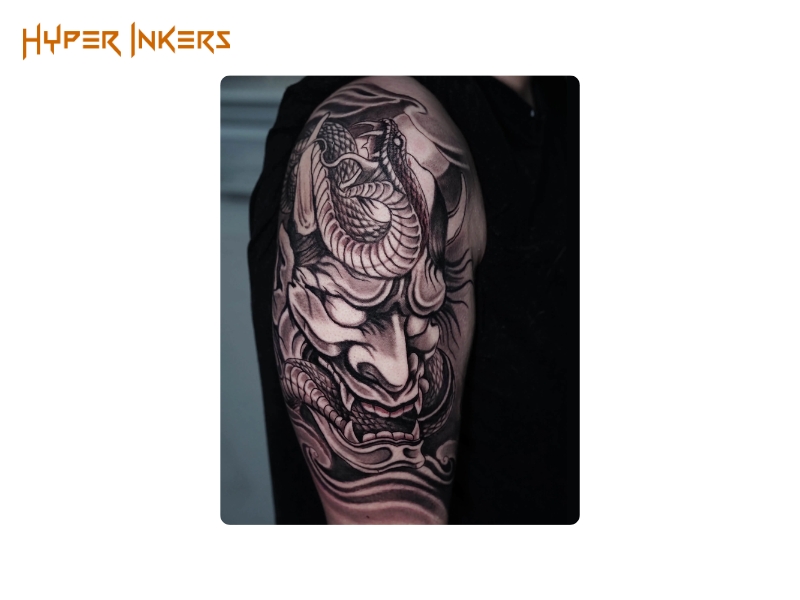

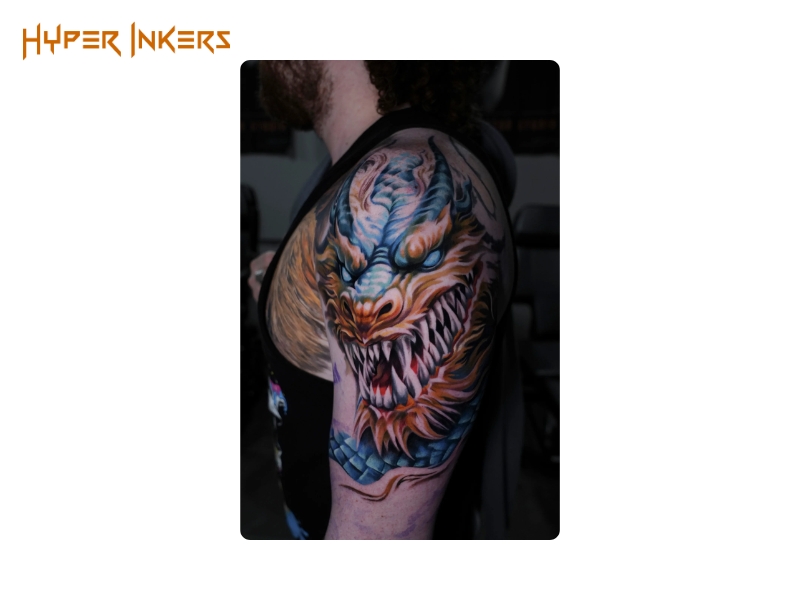
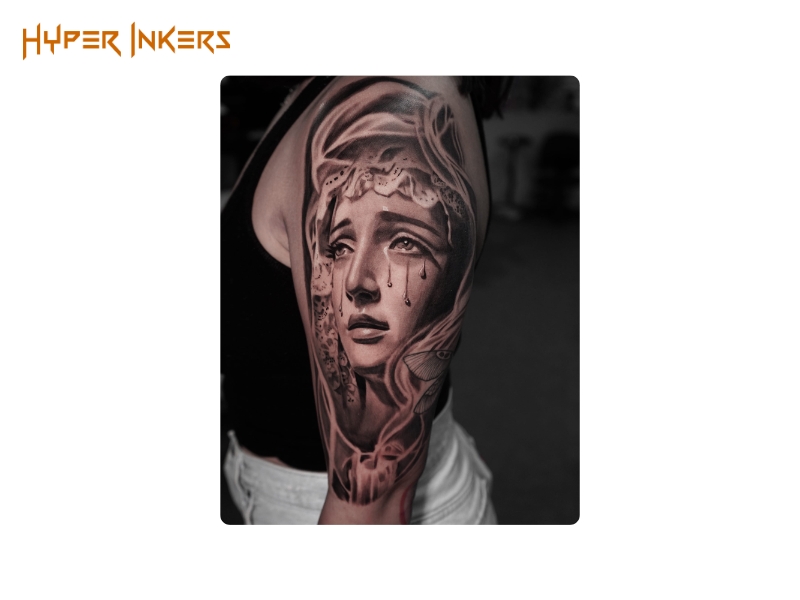
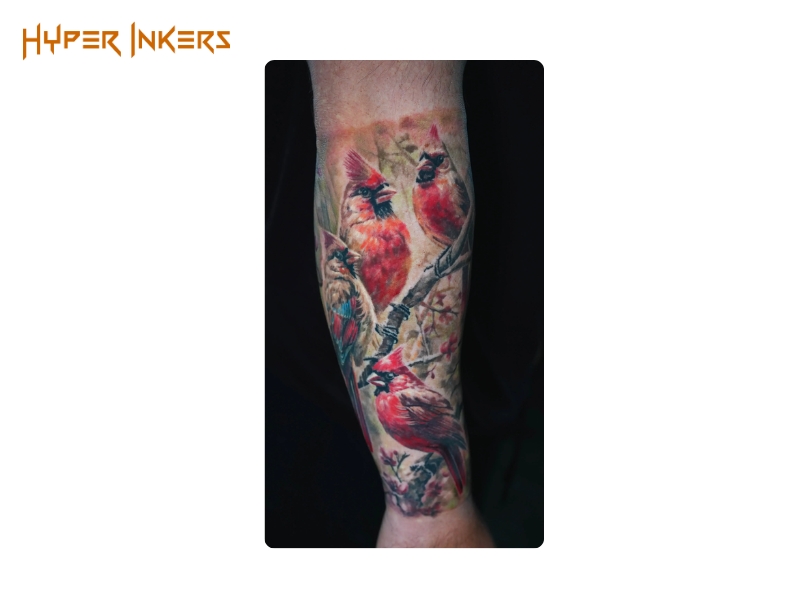
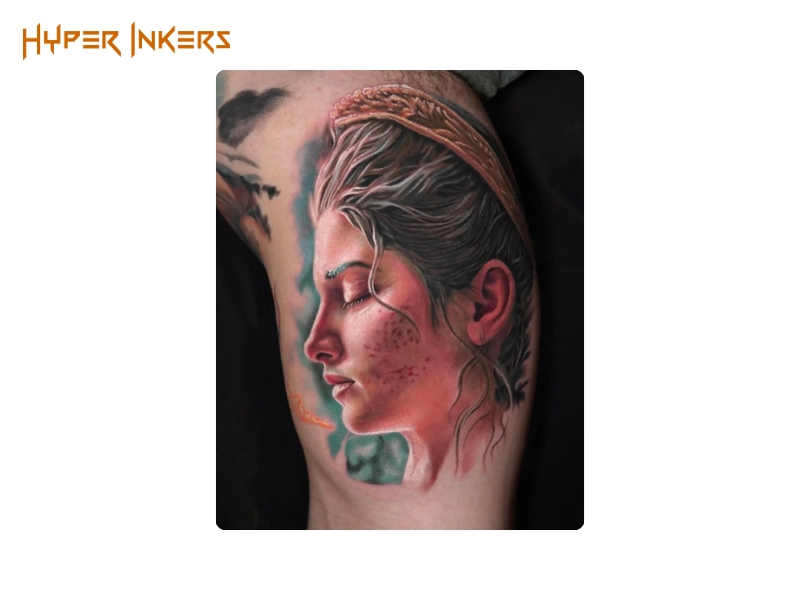
Why Should You Choose Hyper Inkers for Your Sleeve Tattoo?
Choosing Hyper Inkers in San Antonio means you are selecting one of the top San Antonio tattoo parlors; our entire process is built around delivering world-class artistry and a professional, safe experience. Here’s what sets Hyper Inkers apart for a project of this importance:
- Proven, Award-Winning Artists: Our artists bring over 15 years of combined experience to every project. Our expertise is backed by over 20 world convention awards and 40+ trophies, giving you confidence that your sleeve is in the hands of recognized professionals.
- Unmatched Artistic Versatility: We excel in a vast range of styles, from hyper-realistic portraits and traditional Japanese designs to bold neo-traditional pieces. This versatility ensures we can design a truly unique sleeve that is tailored to your vision.
- An Uncompromising Stance on Safety: Your health is paramount. Hyper Inkers operates with the highest standards of cleanliness, using premium sterilization techniques to ensure a completely safe and comfortable environment for every client.
- A Collaborative Design Process: We see a sleeve as a partnership. We work with you to answer all your questions and craft a design that not only looks incredible but also flows perfectly with your body.
FAQ
Can you start a sleeve with just one tattoo?
Yes, absolutely. Most sleeves begin with one large, primary piece that acts as the focal point. The initial tattoo size will determine how you and your artist strategically add other elements and background over time to build a complete and cohesive sleeve.
How long do you have to wait between sleeve tattoo sessions?
The standard wait time is a minimum of 2-3 weeks. This non-negotiable healing period allows your skin to fully recover, ensuring that the next layer of ink is applied to healthy, non-traumatized skin for the best possible color saturation and line quality.
Does It Matter Which Arm You Get a Sleeve On?
Functionally, no. This decision is entirely a matter of personal preference. Some clients choose their non-dominant arm to make the healing process slightly more convenient, while others choose the arm they want to feature most prominently.
Can You Mix Different Styles and Themes in One Sleeve?
Yes, but this requires an artist with exceptional compositional skill to avoid a chaotic result. A successful multi-style sleeve must have a unifying element. This could be a consistent background texture, a strict color palette applied to all pieces, or a framing device that creates visual harmony between the different styles.
Conclusion
Choosing to get a sleeve tattoo is a significant commitment that goes far beyond simply picking a design. Throughout this guide, we’ve explored the crucial elements for a successful outcome, from understanding the different placements and the artistic importance of a seamless flow to the practical realities of time, cost, and aftercare. The ultimate goal is to equip you with the knowledge needed to make a confident decision that you will cherish for a lifetime.
The most rewarding sleeve is one that is well-planned and personally meaningful. When you are ready to take the next step, the most important part of the process is a thorough consultation with a professional artist. If you’re in San Antonio and ready to transform your vision into reality, our award-winning artists at Hyper Inkers are here to guide you through every stage, ensuring your masterpiece is crafted with expertise and care.











